Substituted imidazopyridazines and benzimidazoles as inhibitors of FGFR3
Yao , et al. October 27, 2
U.S. patent number 10,813,930 [Application Number 16/238,277] was granted by the patent office on 2020-10-27 for substituted imidazopyridazines and benzimidazoles as inhibitors of fgfr3. This patent grant is currently assigned to Incyte Corporation, Incyte Holdings Corporation. The grantee listed for this patent is Incyte Corporation, Incyte Holdings Corporation. Invention is credited to Chunhong He, Meizhong Xu, Wenqing Yao, Colin Zhang, Jincong Zhuo.







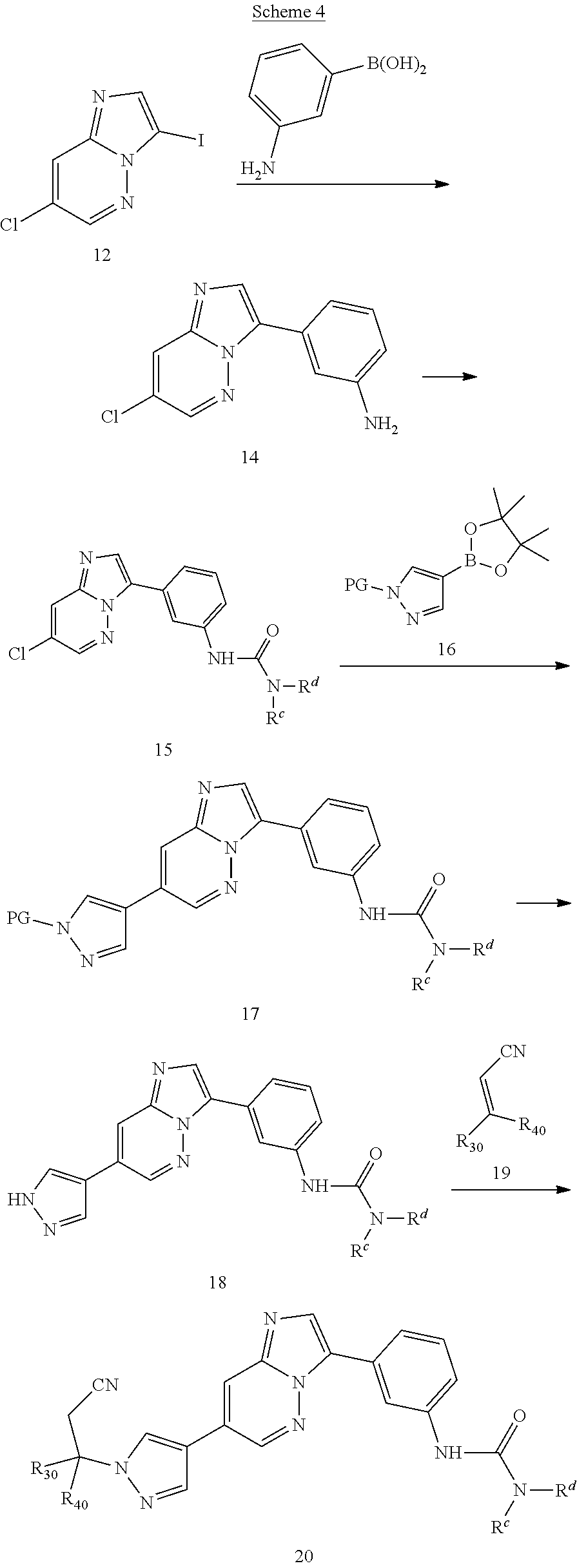




View All Diagrams
| United States Patent | 10,813,930 |
| Yao , et al. | October 27, 2020 |
Substituted imidazopyridazines and benzimidazoles as inhibitors of FGFR3
Abstract
The present invention relates to substituted imidazopyridazines and substituted benzimidazoles, as well as pharmaceutical compositions comprising the same, which are FGFR3 inhibitors useful in the treatment of cancer and other diseases.
| Inventors: | Yao; Wenqing (Chadds Ford, PA), Zhang; Colin (Berwyn, PA), Xu; Meizhong (Hockessin, DE), Zhuo; Jincong (Garnet Valley, PA), He; Chunhong (Boothwyn, PA) | ||||||||||
|---|---|---|---|---|---|---|---|---|---|---|---|
| Applicant: |
|
||||||||||
| Assignee: | Incyte Corporation (Wilmington,
DE) Incyte Holdings Corporation (Wilmington, DE) |
||||||||||
| Family ID: | 1000005139846 | ||||||||||
| Appl. No.: | 16/238,277 | ||||||||||
| Filed: | January 2, 2019 |
Prior Publication Data
| Document Identifier | Publication Date | |
|---|---|---|
| US 20190240220 A1 | Aug 8, 2019 | |
Related U.S. Patent Documents
| Application Number | Filing Date | Patent Number | Issue Date | ||
|---|---|---|---|---|---|
| 15359012 | Nov 22, 2016 | 10213427 | |||
| 14267139 | Jan 3, 2017 | 9533954 | |||
| 13333021 | Jun 14, 2014 | 8754114 | |||
| 61426273 | Dec 22, 2010 | ||||
| Current U.S. Class: | 1/1 |
| Current CPC Class: | C07D 401/12 (20130101); C07D 407/12 (20130101); A61K 31/5025 (20130101); C07D 403/04 (20130101); C07D 235/06 (20130101); C07D 487/04 (20130101); C07D 401/14 (20130101); C07D 403/12 (20130101); A61K 31/5377 (20130101); C07D 405/12 (20130101); C07D 405/14 (20130101) |
| Current International Class: | C07D 401/12 (20060101); C07D 403/12 (20060101); C07D 405/12 (20060101); C07D 401/14 (20060101); A61K 31/5025 (20060101); A61K 31/5377 (20060101); C07D 403/04 (20060101); C07D 235/06 (20060101); C07D 487/04 (20060101); C07D 407/12 (20060101); C07D 405/14 (20060101) |
References Cited [Referenced By]
U.S. Patent Documents
| 850370 | April 1907 | Hynes |
| 3894021 | July 1975 | Denzel et al. |
| 4271074 | June 1981 | Lohmann et al. |
| 4339267 | July 1982 | Levitt |
| 4347348 | August 1982 | Chernikhov et al. |
| 4402878 | September 1983 | D'Alelio et al. |
| 4405519 | September 1983 | D'Alelio et al. |
| 4405520 | September 1983 | D'Alelio et al. |
| 4405786 | September 1983 | D'Alelio et al. |
| 4460773 | July 1984 | Suzuki et al. |
| 4874803 | October 1989 | Baron et al. |
| 4940705 | July 1990 | Boshagen et al. |
| 5159054 | October 1992 | Keller |
| 5240941 | August 1993 | Bruneau |
| 5480887 | January 1996 | Hornback et al. |
| 5536725 | July 1996 | Cullen et al. |
| 5541324 | July 1996 | TenBrink et al. |
| 5783577 | July 1998 | Houghten et al. |
| 5845025 | December 1998 | Garito et al. |
| 5994364 | November 1999 | Njoroge et al. |
| 6465484 | October 2002 | Bilodeau et al. |
| 6998408 | February 2006 | Pinto |
| 7074801 | July 2006 | Yoshida et al. |
| 7125880 | October 2006 | Chen |
| 7618975 | November 2009 | Cai et al. |
| 7642255 | January 2010 | Sim |
| 8754114 | June 2014 | Yao et al. |
| 8889711 | November 2014 | Bedjeguelal |
| 9266892 | February 2016 | Zhuo et al. |
| 9388185 | July 2016 | Lu et al. |
| 9533954 | January 2017 | Yao et al. |
| 9533984 | January 2017 | Sun et al. |
| 9580423 | February 2017 | Lu et al. |
| 9611267 | April 2017 | Wu et al. |
| 9708318 | July 2017 | Lu et al. |
| 9745311 | August 2017 | Lu et al. |
| 9801889 | October 2017 | Lu et al. |
| 9890156 | February 2018 | Lu et al. |
| 10016348 | July 2018 | Lu et al. |
| 10040790 | August 2018 | Sun et al. |
| 10131667 | November 2018 | Wu et al. |
| 10213427 | February 2019 | Yao et al. |
| 10214528 | February 2019 | Lu et al. |
| 10251892 | April 2019 | Sokolsky et al. |
| 10450313 | October 2019 | Lu et al. |
| 2003/0078255 | April 2003 | Pinto |
| 2003/0078277 | April 2003 | Hibi et al. |
| 2003/0181622 | September 2003 | Chin et al. |
| 2004/0044012 | March 2004 | Dobrusin et al. |
| 2004/0067948 | April 2004 | Hallett |
| 2004/0097493 | May 2004 | Chen et al. |
| 2004/0122029 | June 2004 | Liu et al. |
| 2004/0204427 | October 2004 | Chen et al. |
| 2005/0070542 | March 2005 | Hodgetts et al. |
| 2005/0148603 | July 2005 | Jimenez et al. |
| 2005/0197340 | September 2005 | Arora et al. |
| 2006/0222637 | October 2006 | Bamdad |
| 2006/0270849 | November 2006 | Nishino et al. |
| 2007/0116984 | May 2007 | Park et al. |
| 2007/0197510 | August 2007 | Ohmoto et al. |
| 2007/0280943 | December 2007 | Friedman et al. |
| 2008/0249301 | October 2008 | Hornberger et al. |
| 2009/0098086 | April 2009 | Zask et al. |
| 2009/0099165 | April 2009 | Hurley et al. |
| 2009/0099190 | April 2009 | Flynn et al. |
| 2009/0105233 | April 2009 | Chua et al. |
| 2009/0131467 | May 2009 | Kanazawa et al. |
| 2009/0163545 | June 2009 | Goldfarb |
| 2009/0246198 | October 2009 | Dong et al. |
| 2010/0032626 | February 2010 | Akino |
| 2010/0099684 | April 2010 | Cook, II et al. |
| 2010/0105661 | April 2010 | Shirakami et al. |
| 2010/0143547 | June 2010 | Kriegel et al. |
| 2010/0204235 | August 2010 | Lizos |
| 2010/0210636 | August 2010 | Ishikawa et al. |
| 2010/0239496 | September 2010 | Gangadharmath et al. |
| 2011/0045511 | February 2011 | Graus Porta et al. |
| 2011/0159604 | June 2011 | Fan et al. |
| 2011/0160203 | June 2011 | Liu et al. |
| 2011/0195968 | August 2011 | Greul et al. |
| 2011/0212077 | September 2011 | Noronha et al. |
| 2011/0224155 | September 2011 | Tachdjian et al. |
| 2011/0262525 | October 2011 | Wang et al. |
| 2011/0313003 | December 2011 | Shi et al. |
| 2012/0135997 | May 2012 | Kato et al. |
| 2012/0165305 | June 2012 | Yao et al. |
| 2012/0295881 | November 2012 | Lange et al. |
| 2012/0319095 | December 2012 | Tada et al. |
| 2013/0078731 | March 2013 | George et al. |
| 2013/0200356 | August 2013 | Jung et al. |
| 2013/0338134 | December 2013 | Wu et al. |
| 2014/0045814 | February 2014 | Lu et al. |
| 2014/0054564 | February 2014 | Kim et al. |
| 2014/0080892 | March 2014 | Bhanot et al. |
| 2014/0088100 | March 2014 | Bifulco, Jr. et al. |
| 2014/0103325 | April 2014 | Shin et al. |
| 2014/0117318 | May 2014 | Choi et al. |
| 2014/0148548 | May 2014 | Yamanaka et al. |
| 2014/0171405 | June 2014 | Zhuo et al. |
| 2014/0187559 | July 2014 | Miduturu |
| 2014/0243308 | August 2014 | Yao et al. |
| 2014/0296233 | October 2014 | D'Agostino et al. |
| 2014/0315902 | October 2014 | Sun et al. |
| 2014/0374722 | December 2014 | Kim et al. |
| 2014/0378468 | December 2014 | Aichholz et al. |
| 2014/0378481 | December 2014 | Bifulco, Jr. et al. |
| 2014/0378483 | December 2014 | Benazet et al. |
| 2015/0011548 | January 2015 | Linnanen et al. |
| 2015/0011560 | January 2015 | Legeai-Mallet |
| 2015/0011579 | January 2015 | Clary-Ceccato et al. |
| 2015/0197519 | July 2015 | Bifulco |
| 2016/0115164 | April 2016 | Wu et al. |
| 2016/0244448 | August 2016 | Lu et al. |
| 2016/0244449 | August 2016 | Lu et al. |
| 2016/0244450 | August 2016 | Lu et al. |
| 2016/0280713 | September 2016 | Lu et al. |
| 2017/0107216 | April 2017 | Wu et al. |
| 2017/0119782 | May 2017 | Lu et al. |
| 2017/0137424 | May 2017 | Wu et al. |
| 2017/0145025 | May 2017 | Li et al. |
| 2017/0165263 | June 2017 | Yao et al. |
| 2017/0166564 | June 2017 | Sun et al. |
| 2017/0174671 | June 2017 | Wu et al. |
| 2017/0174679 | June 2017 | Lajkiewicz et al. |
| 2017/0290839 | October 2017 | Lu et al. |
| 2017/0320875 | November 2017 | Li et al. |
| 2017/0320877 | November 2017 | Wu et al. |
| 2017/0342060 | November 2017 | Lu et al. |
| 2017/0362253 | December 2017 | Xiao et al. |
| 2018/0008610 | January 2018 | Lu et al. |
| 2018/0016260 | January 2018 | Yu et al. |
| 2018/0244672 | August 2018 | Lu et al. |
| 2019/0055237 | February 2019 | Pan et al. |
| 2019/0062327 | February 2019 | Sun et al. |
| 2019/0127376 | May 2019 | Wu et al. |
| 2019/0241560 | August 2019 | Lu et al. |
| 2019/0269693 | September 2019 | Lu et al. |
| 2019/0284187 | September 2019 | Wu et al. |
| 2019/0337948 | November 2019 | Frietze et al. |
| 2014003355 | Jun 2015 | CL | |||
| 201702117 | Jun 2018 | CL | |||
| 1863774 | Nov 2006 | CN | |||
| 101007778 | Aug 2007 | CN | |||
| 102399220 | Apr 2012 | CN | |||
| 102399233 | Apr 2012 | CN | |||
| 103571502 | Feb 2014 | CN | |||
| 103588771 | Feb 2014 | CN | |||
| 104262330 | Jan 2015 | CN | |||
| 2156720 | May 1973 | DE | |||
| 2934578 | Mar 1981 | DE | |||
| 3432983 | Apr 1985 | DE | |||
| 280853 | Jul 1990 | DE | |||
| 3937633 | May 1991 | DE | |||
| 4119767 | Dec 1992 | DE | |||
| 19912638 | Sep 2000 | DE | |||
| 0466452 | Jan 1992 | EP | |||
| 0995751 | Apr 2000 | EP | |||
| 1199070 | Apr 2002 | EP | |||
| 1217000 | Jun 2002 | EP | |||
| 1388541 | Feb 2004 | EP | |||
| 2651404 | Oct 2015 | EP | |||
| 2428654 | Jan 1980 | FR | |||
| 2876582 | Apr 2006 | FR | |||
| 2983196 | May 2013 | FR | |||
| 2983199 | May 2013 | FR | |||
| 2983200 | May 2013 | FR | |||
| 62273979 | Nov 1987 | JP | |||
| 63017882 | Jan 1988 | JP | |||
| S 6310630 | Jan 1988 | JP | |||
| 02009895 | Jan 1990 | JP | |||
| H 0348656 | Mar 1991 | JP | |||
| H 03275669 | Dec 1991 | JP | |||
| 04179576 | Jun 1992 | JP | |||
| H 04158084 | Jun 1992 | JP | |||
| H 04328121 | Nov 1992 | JP | |||
| H 05320173 | Dec 1993 | JP | |||
| H 05320515 | Dec 1993 | JP | |||
| H 09188812 | Jul 1997 | JP | |||
| H 1060426 | Mar 1998 | JP | |||
| H 11171865 | Jun 1999 | JP | |||
| 2000123973 | Apr 2000 | JP | |||
| 2001265031 | Sep 2001 | JP | |||
| 2002516327 | Jun 2002 | JP | |||
| 2002296731 | Oct 2002 | JP | |||
| 2003335788 | Nov 2003 | JP | |||
| 2004203749 | Jul 2004 | JP | |||
| 2004346145 | Dec 2004 | JP | |||
| 2005015395 | Jan 2005 | JP | |||
| 2005320288 | Nov 2005 | JP | |||
| 200628027 | Feb 2006 | JP | |||
| 2006514624 | May 2006 | JP | |||
| 2006284843 | Oct 2006 | JP | |||
| 2006522756 | Oct 2006 | JP | |||
| 2006316054 | Nov 2006 | JP | |||
| 2007500725 | Jan 2007 | JP | |||
| 2008198769 | Aug 2008 | JP | |||
| 2009537520 | Oct 2009 | JP | |||
| 2010180147 | Aug 2010 | JP | |||
| 2010248429 | Nov 2010 | JP | |||
| 2010267847 | Nov 2010 | JP | |||
| 2010270245 | Dec 2010 | JP | |||
| 2010272618 | Dec 2010 | JP | |||
| 2010272727 | Dec 2010 | JP | |||
| 2010278114 | Dec 2010 | JP | |||
| 20119348 | Jan 2011 | JP | |||
| 201144637 | Mar 2011 | JP | |||
| 2011116840 | Jun 2011 | JP | |||
| 2011222650 | Nov 2011 | JP | |||
| 2012116825 | Jun 2012 | JP | |||
| 2012136476 | Jul 2012 | JP | |||
| 5120580 | Jan 2013 | JP | |||
| 201349251 | Mar 2013 | JP | |||
| 2013179181 | Sep 2013 | JP | |||
| 2015517376 | Jun 2015 | JP | |||
| 2018507214 | Mar 2018 | JP | |||
| 2018511573 | Apr 2018 | JP | |||
| 20080045536 | May 2008 | KR | |||
| 20110023190 | Mar 2011 | KR | |||
| 20110043270 | Apr 2011 | KR | |||
| 20120052034 | May 2012 | KR | |||
| 20120078303 | Jul 2012 | KR | |||
| 20130043460 | Apr 2013 | KR | |||
| 20140090411 | Jul 2014 | KR | |||
| 20140099105 | Aug 2014 | KR | |||
| WO 1988/03025 | May 1988 | WO | |||
| WO 1991/09835 | Jul 1991 | WO | |||
| WO 1991/10172 | Jul 1991 | WO | |||
| WO 1992/06078 | Apr 1992 | WO | |||
| WO 1992/22552 | Dec 1992 | WO | |||
| WO 1993/24488 | Dec 1993 | WO | |||
| WO 1994/13669 | Jun 1994 | WO | |||
| WO 1994/15995 | Jul 1994 | WO | |||
| WO 1994/25438 | Nov 1994 | WO | |||
| WO 1995/20965 | Aug 1995 | WO | |||
| WO 1996/15128 | May 1996 | WO | |||
| WO 1996/40707 | Dec 1996 | WO | |||
| WO 1997/47601 | Dec 1997 | WO | |||
| WO 1998/05661 | Feb 1998 | WO | |||
| WO 1998/06703 | Feb 1998 | WO | |||
| WO 1998/11438 | Mar 1998 | WO | |||
| WO 1998/18781 | May 1998 | WO | |||
| WO 1998/28281 | Jul 1998 | WO | |||
| WO 1998/33798 | Aug 1998 | WO | |||
| WO 1998/46609 | Oct 1998 | WO | |||
| WO 1998/54156 | Dec 1998 | WO | |||
| WO 1999/06422 | Feb 1999 | WO | |||
| WO 1999/07732 | Feb 1999 | WO | |||
| WO 1999/09030 | Feb 1999 | WO | |||
| WO 1999/42442 | Aug 1999 | WO | |||
| WO 1999/59975 | Nov 1999 | WO | |||
| WO 1999/61444 | Dec 1999 | WO | |||
| WO 1999/64400 | Dec 1999 | WO | |||
| WO 2000/24744 | May 2000 | WO | |||
| WO 2000/68186 | Nov 2000 | WO | |||
| WO 2001/02369 | Jan 2001 | WO | |||
| WO 2001/22938 | Apr 2001 | WO | |||
| WO 2001/23386 | Apr 2001 | WO | |||
| WO 2001/29041 | Apr 2001 | WO | |||
| WO 2001/29042 | Apr 2001 | WO | |||
| WO 2001/42247 | Jun 2001 | WO | |||
| WO 2001/47892 | Jul 2001 | WO | |||
| WO 2001/53273 | Jul 2001 | WO | |||
| WO 2001/55148 | Aug 2001 | WO | |||
| WO 2001/57037 | Aug 2001 | WO | |||
| WO 2001/57038 | Aug 2001 | WO | |||
| WO 2001/58899 | Aug 2001 | WO | |||
| WO 2001/66099 | Sep 2001 | WO | |||
| WO 2001/68647 | Sep 2001 | WO | |||
| WO 2001/83472 | Nov 2001 | WO | |||
| WO 2001/85722 | Nov 2001 | WO | |||
| WO 2002/00655 | Jan 2002 | WO | |||
| WO 2002/12442 | Feb 2002 | WO | |||
| WO 2002/14315 | Feb 2002 | WO | |||
| WO 2002/20011 | Mar 2002 | WO | |||
| WO 2002/051831 | Jul 2002 | WO | |||
| WO 2002/055082 | Jul 2002 | WO | |||
| WO 2002/066481 | Aug 2002 | WO | |||
| WO 2002/74754 | Sep 2002 | WO | |||
| WO 2002/076953 | Oct 2002 | WO | |||
| WO 2002/088095 | Nov 2002 | WO | |||
| WO 2002/094825 | Nov 2002 | WO | |||
| WO 2002/096873 | Dec 2002 | WO | |||
| WO 2002/102793 | Dec 2002 | WO | |||
| WO 2003/000187 | Jan 2003 | WO | |||
| WO 2003/000688 | Jan 2003 | WO | |||
| WO 2003/000690 | Jan 2003 | WO | |||
| WO 2003/009852 | Feb 2003 | WO | |||
| WO 2003/014083 | Feb 2003 | WO | |||
| WO 2003/037891 | May 2003 | WO | |||
| WO 2003/040131 | May 2003 | WO | |||
| WO 2003/049542 | Jun 2003 | WO | |||
| WO 2003/062236 | Jul 2003 | WO | |||
| WO 2003/075836 | Sep 2003 | WO | |||
| WO 2003/082871 | Oct 2003 | WO | |||
| WO 2003/097609 | Nov 2003 | WO | |||
| WO 2003/099818 | Dec 2003 | WO | |||
| WO 2003/101985 | Dec 2003 | WO | |||
| WO 2004/002986 | Jan 2004 | WO | |||
| WO 2004/011465 | Feb 2004 | WO | |||
| WO 2004/014382 | Feb 2004 | WO | |||
| WO 2004/014907 | Feb 2004 | WO | |||
| WO 2004/018472 | Mar 2004 | WO | |||
| WO 2004/020441 | Mar 2004 | WO | |||
| WO 2004/041821 | May 2004 | WO | |||
| WO 2004/041822 | May 2004 | WO | |||
| WO 2004/041823 | May 2004 | WO | |||
| WO 2004/043367 | May 2004 | WO | |||
| WO 2004/046152 | Jun 2004 | WO | |||
| WO 2004/048343 | Jun 2004 | WO | |||
| WO 2004/052291 | Jun 2004 | WO | |||
| WO 2004/052862 | Jun 2004 | WO | |||
| WO 2004/056822 | Jul 2004 | WO | |||
| WO 2004/056830 | Jul 2004 | WO | |||
| WO 2004/065378 | Aug 2004 | WO | |||
| WO 2004/083177 | Sep 2004 | WO | |||
| WO 2004/087053 | Oct 2004 | WO | |||
| WO 2004/089955 | Oct 2004 | WO | |||
| WO 2004/094420 | Nov 2004 | WO | |||
| WO 2004/099209 | Nov 2004 | WO | |||
| WO 2004/108139 | Nov 2004 | WO | |||
| WO 2004/110487 | Dec 2004 | WO | |||
| WO 2004/112793 | Dec 2004 | WO | |||
| WO 2004/113307 | Dec 2004 | WO | |||
| WO 2005/007653 | Jan 2005 | WO | |||
| WO 2005/011597 | Feb 2005 | WO | |||
| WO 2005/021533 | Mar 2005 | WO | |||
| WO 2005/028434 | Mar 2005 | WO | |||
| WO 2005/028478 | Mar 2005 | WO | |||
| WO 2005/028480 | Mar 2005 | WO | |||
| WO 2005/040119 | May 2005 | WO | |||
| WO 2005/047289 | May 2005 | WO | |||
| WO 2005/056524 | Jun 2005 | WO | |||
| WO 2005/063768 | Jun 2005 | WO | |||
| WO 2005/066162 | Jul 2005 | WO | |||
| WO 2005/070430 | Aug 2005 | WO | |||
| WO 2005/070929 | Aug 2005 | WO | |||
| WO 2005/072412 | Aug 2005 | WO | |||
| WO 2005/073232 | Aug 2005 | WO | |||
| WO 2005/080393 | Sep 2005 | WO | |||
| WO 2005/082903 | Sep 2005 | WO | |||
| WO 2005/085210 | Sep 2005 | WO | |||
| WO 2005/085248 | Sep 2005 | WO | |||
| WO 2005/085249 | Sep 2005 | WO | |||
| WO 2005/087765 | Sep 2005 | WO | |||
| WO 2005/092901 | Oct 2005 | WO | |||
| WO 2005/105097 | Nov 2005 | WO | |||
| WO 2005/113536 | Dec 2005 | WO | |||
| WO 2005/116035 | Dec 2005 | WO | |||
| WO 2005/121130 | Dec 2005 | WO | |||
| WO 2005/121142 | Dec 2005 | WO | |||
| WO 2006/000420 | Jan 2006 | WO | |||
| WO 2006/024486 | Mar 2006 | WO | |||
| WO 2006/024487 | Mar 2006 | WO | |||
| WO 2006/024834 | Mar 2006 | WO | |||
| WO 2006/028289 | Mar 2006 | WO | |||
| WO 2006/030031 | Mar 2006 | WO | |||
| WO 2006/038112 | Apr 2006 | WO | |||
| WO 2006/050076 | May 2006 | WO | |||
| WO 2006/050162 | May 2006 | WO | |||
| WO 2006/052712 | May 2006 | WO | |||
| WO 2006/055752 | May 2006 | WO | |||
| WO 2006/024524 | Jun 2006 | WO | |||
| WO 2006/058120 | Jun 2006 | WO | |||
| WO 2006/062465 | Jun 2006 | WO | |||
| WO 2006/065703 | Jun 2006 | WO | |||
| WO 2006/074293 | Jul 2006 | WO | |||
| WO 2006/087230 | Aug 2006 | WO | |||
| WO 2006/092691 | Sep 2006 | WO | |||
| WO 2006/102588 | Sep 2006 | WO | |||
| WO 2006/102610 | Sep 2006 | WO | |||
| WO 2006/105448 | Oct 2006 | WO | |||
| WO 2006/107644 | Oct 2006 | WO | |||
| WO 2006/112666 | Oct 2006 | WO | |||
| WO 2006/119504 | Nov 2006 | WO | |||
| WO 2006/124462 | Nov 2006 | WO | |||
| WO 2006/124731 | Nov 2006 | WO | |||
| WO 2006/135821 | Dec 2006 | WO | |||
| WO 2006/136442 | Dec 2006 | WO | |||
| WO 2007/013964 | Feb 2007 | WO | |||
| WO 2007/017096 | Feb 2007 | WO | |||
| WO 2007/021795 | Feb 2007 | WO | |||
| WO 2007/022268 | Feb 2007 | WO | |||
| WO 2007/023105 | Mar 2007 | WO | |||
| WO 2007/025949 | Mar 2007 | WO | |||
| WO 2007/030366 | Mar 2007 | WO | |||
| WO 2007/032466 | Mar 2007 | WO | |||
| WO 2007/033780 | Mar 2007 | WO | |||
| WO 2007/038209 | Apr 2007 | WO | |||
| WO 2007/044698 | Apr 2007 | WO | |||
| WO 2007/044729 | Apr 2007 | WO | |||
| WO 2007/048802 | May 2007 | WO | |||
| WO 2007/053135 | May 2007 | WO | |||
| WO 2007/053452 | May 2007 | WO | |||
| WO 2007/053498 | May 2007 | WO | |||
| WO 2007/055418 | May 2007 | WO | |||
| WO 2007/056023 | May 2007 | WO | |||
| WO 2007/056075 | May 2007 | WO | |||
| WO 2007/056170 | May 2007 | WO | |||
| WO 2007/058392 | May 2007 | WO | |||
| WO 2007/058626 | May 2007 | WO | |||
| WO 2007/059108 | May 2007 | WO | |||
| WO 2007/061554 | May 2007 | WO | |||
| WO 2007/064883 | Jun 2007 | WO | |||
| WO 2007/064931 | Jun 2007 | WO | |||
| WO 2007/066189 | Jun 2007 | WO | |||
| WO 2007/067444 | Jun 2007 | WO | |||
| WO 2007/071752 | Jun 2007 | WO | |||
| WO 2007/084314 | Jul 2007 | WO | |||
| WO 2007/088999 | Aug 2007 | WO | |||
| WO 2007/092879 | Aug 2007 | WO | |||
| WO 2007/093901 | Aug 2007 | WO | |||
| WO 2007/109334 | Sep 2007 | WO | |||
| WO 2007/110868 | Oct 2007 | WO | |||
| WO 2007/112347 | Oct 2007 | WO | |||
| WO 2007/120097 | Oct 2007 | WO | |||
| WO 2007/120339 | Oct 2007 | WO | |||
| WO 2007/125351 | Nov 2007 | WO | |||
| WO 2007/125405 | Nov 2007 | WO | |||
| WO 2007/126841 | Nov 2007 | WO | |||
| WO 2007/134259 | Nov 2007 | WO | |||
| WO 2007/136465 | Nov 2007 | WO | |||
| WO 2007/140957 | Dec 2007 | WO | |||
| WO 2007/143600 | Dec 2007 | WO | |||
| WO 2007/147217 | Dec 2007 | WO | |||
| WO 2008/001070 | Jan 2008 | WO | |||
| WO 2008/003766 | Jan 2008 | WO | |||
| WO 2008/005877 | Jan 2008 | WO | |||
| WO 2008/008234 | Jan 2008 | WO | |||
| WO 2008/008747 | Jan 2008 | WO | |||
| WO 2008/012635 | Jan 2008 | WO | |||
| WO 2008/021389 | Feb 2008 | WO | |||
| WO 2008/021851 | Feb 2008 | WO | |||
| WO 2008/025556 | Mar 2008 | WO | |||
| WO 2008/033858 | Mar 2008 | WO | |||
| WO 2008/033999 | Mar 2008 | WO | |||
| WO 2008/034859 | Mar 2008 | WO | |||
| WO 2008/034860 | Mar 2008 | WO | |||
| WO 2008/042639 | Apr 2008 | WO | |||
| WO 2008/052898 | May 2008 | WO | |||
| WO 2008/052934 | May 2008 | WO | |||
| WO 2008/060907 | May 2008 | WO | |||
| WO 2008/063583 | May 2008 | WO | |||
| WO 2008/063609 | May 2008 | WO | |||
| WO 2008/071455 | Jun 2008 | WO | |||
| WO 2008/074068 | Jun 2008 | WO | |||
| WO 2008/075068 | Jun 2008 | WO | |||
| WO 2008/076278 | Jun 2008 | WO | |||
| WO 2008/078091 | Jul 2008 | WO | |||
| WO 2008/078100 | Jul 2008 | WO | |||
| WO 2008/079460 | Jul 2008 | WO | |||
| WO 2008/079933 | Jul 2008 | WO | |||
| WO 2008/085942 | Jul 2008 | WO | |||
| WO 2008/089105 | Jul 2008 | WO | |||
| WO 2008/099075 | Aug 2008 | WO | |||
| WO 2008/107436 | Sep 2008 | WO | |||
| WO 2008/107544 | Sep 2008 | WO | |||
| WO 2008/109181 | Sep 2008 | WO | |||
| WO 2008/109943 | Sep 2008 | WO | |||
| WO 2008/115974 | Sep 2008 | WO | |||
| WO 2008/117269 | Oct 2008 | WO | |||
| WO 2008/118454 | Oct 2008 | WO | |||
| WO 2008/123755 | Oct 2008 | WO | |||
| WO 2008/128141 | Oct 2008 | WO | |||
| WO 2008/130584 | Oct 2008 | WO | |||
| WO 2008/131972 | Nov 2008 | WO | |||
| WO 2008/141065 | Nov 2008 | WO | |||
| WO 2008/142720 | Nov 2008 | WO | |||
| WO 2008/144253 | Nov 2008 | WO | |||
| WO 2008/151184 | Dec 2008 | WO | |||
| WO 2008/153207 | Dec 2008 | WO | |||
| WO 2008/153852 | Dec 2008 | WO | |||
| WO 2008/154221 | Dec 2008 | WO | |||
| WO 2009/013335 | Jan 2009 | WO | |||
| WO 2009/013354 | Jan 2009 | WO | |||
| WO 2009/097446 | Jan 2009 | WO | |||
| WO 2009/016253 | Feb 2009 | WO | |||
| WO 2009/019518 | Feb 2009 | WO | |||
| WO 2009/021083 | Feb 2009 | WO | |||
| WO 2009/029473 | Mar 2009 | WO | |||
| WO 2009/029625 | Mar 2009 | WO | |||
| WO 2009/030871 | Mar 2009 | WO | |||
| WO 2009/032861 | Mar 2009 | WO | |||
| WO 2009/036012 | Mar 2009 | WO | |||
| WO 2009/044788 | Apr 2009 | WO | |||
| WO 2009/046606 | Apr 2009 | WO | |||
| WO 2009/047255 | Apr 2009 | WO | |||
| WO 2009/047506 | Apr 2009 | WO | |||
| WO 2009/047522 | Apr 2009 | WO | |||
| WO 2009/047993 | Apr 2009 | WO | |||
| WO 2009/049018 | Apr 2009 | WO | |||
| WO 2009/053737 | Apr 2009 | WO | |||
| WO 2009/055828 | Apr 2009 | WO | |||
| WO 2009/056886 | May 2009 | WO | |||
| WO 2009/071535 | Jun 2009 | WO | |||
| WO 2009/073153 | Jun 2009 | WO | |||
| WO 2009/086130 | Jul 2009 | WO | |||
| WO 2009/086509 | Jul 2009 | WO | |||
| WO 2009/087238 | Jul 2009 | WO | |||
| WO 2009/092764 | Jul 2009 | WO | |||
| WO 2009/093209 | Jul 2009 | WO | |||
| WO 2009/093210 | Jul 2009 | WO | |||
| WO 2009/094528 | Jul 2009 | WO | |||
| WO 2009/099982 | Aug 2009 | WO | |||
| WO 2009/103652 | Aug 2009 | WO | |||
| WO 2009/105717 | Aug 2009 | WO | |||
| WO 2009/108332 | Sep 2009 | WO | |||
| WO 2009/108827 | Sep 2009 | WO | |||
| WO 2009/112826 | Sep 2009 | WO | |||
| WO 2009/114870 | Sep 2009 | WO | |||
| WO 2009/114874 | Sep 2009 | WO | |||
| WO 2009/122180 | Oct 2009 | WO | |||
| WO 2009/123967 | Oct 2009 | WO | |||
| WO 2009/125808 | Oct 2009 | WO | |||
| WO 2009/125809 | Oct 2009 | WO | |||
| WO 2009/126584 | Oct 2009 | WO | |||
| WO 2009/128520 | Oct 2009 | WO | |||
| WO 2009/131687 | Oct 2009 | WO | |||
| WO 2009/131926 | Oct 2009 | WO | |||
| WO 2009/132980 | Nov 2009 | WO | |||
| WO 2009/133127 | Nov 2009 | WO | |||
| WO 2009/141386 | Nov 2009 | WO | |||
| WO 2009/144205 | Dec 2009 | WO | |||
| WO 2009/144302 | Dec 2009 | WO | |||
| WO 2009/146034 | Dec 2009 | WO | |||
| WO 2009/150150 | Dec 2009 | WO | |||
| WO 2009/150240 | Dec 2009 | WO | |||
| WO 2009/151997 | Dec 2009 | WO | |||
| WO 2009/153592 | Dec 2009 | WO | |||
| WO 2009/157423 | Dec 2009 | WO | |||
| WO 2010/006947 | Jan 2010 | WO | |||
| WO 2010/007099 | Jan 2010 | WO | |||
| WO 2010/007116 | Jan 2010 | WO | |||
| WO 2010/009155 | Jan 2010 | WO | |||
| WO 2010/009195 | Jan 2010 | WO | |||
| WO 2010/009207 | Jan 2010 | WO | |||
| WO 2010/015643 | Feb 2010 | WO | |||
| WO 2010/017047 | Feb 2010 | WO | |||
| WO 2010/019210 | Feb 2010 | WO | |||
| WO 2010/019899 | Feb 2010 | WO | |||
| WO 2010/030027 | Mar 2010 | WO | |||
| WO 2010/038081 | Apr 2010 | WO | |||
| WO 2010/045371 | Apr 2010 | WO | |||
| WO 2010/049731 | May 2010 | WO | |||
| WO 2010/051043 | May 2010 | WO | |||
| WO 2010/052448 | May 2010 | WO | |||
| WO 2010/059552 | May 2010 | WO | |||
| WO 2010/059658 | May 2010 | WO | |||
| WO 2010/064621 | Jun 2010 | WO | |||
| WO 2010/064875 | Jun 2010 | WO | |||
| WO 2010/067886 | Jun 2010 | WO | |||
| WO 2010/067888 | Jun 2010 | WO | |||
| WO 2010/077647 | Jul 2010 | WO | |||
| WO 2010/077680 | Jul 2010 | WO | |||
| WO 2010/078421 | Jul 2010 | WO | |||
| WO 2010/078427 | Jul 2010 | WO | |||
| WO 2010/080503 | Jul 2010 | WO | |||
| WO 2010/080712 | Jul 2010 | WO | |||
| WO 2010/083145 | Jul 2010 | WO | |||
| WO 2010/083283 | Jul 2010 | WO | |||
| WO 2010/086089 | Aug 2010 | WO | |||
| WO 2010/092181 | Aug 2010 | WO | |||
| WO 2010/099938 | Sep 2010 | WO | |||
| WO 2010/103306 | Sep 2010 | WO | |||
| WO 2010/104047 | Sep 2010 | WO | |||
| WO 2010/107765 | Sep 2010 | WO | |||
| WO 2010/107768 | Sep 2010 | WO | |||
| WO 2010/111303 | Sep 2010 | WO | |||
| WO 2010/111573 | Sep 2010 | WO | |||
| WO 2010/115279 | Oct 2010 | WO | |||
| WO 2010/117425 | Oct 2010 | WO | |||
| WO 2010/119284 | Oct 2010 | WO | |||
| WO 2010/119285 | Oct 2010 | WO | |||
| WO 2010/117323 | Nov 2010 | WO | |||
| WO 2010/125216 | Nov 2010 | WO | |||
| WO 2010/126960 | Nov 2010 | WO | |||
| WO 2010/127212 | Nov 2010 | WO | |||
| WO 2010/129509 | Nov 2010 | WO | |||
| WO 2010/136031 | Dec 2010 | WO | |||
| WO 2010/142801 | Dec 2010 | WO | |||
| WO 2010/151689 | Dec 2010 | WO | |||
| WO 2011/002038 | Jan 2011 | WO | |||
| WO 2011/007819 | Jan 2011 | WO | |||
| WO 2011/011597 | Jan 2011 | WO | |||
| WO 2011/012816 | Feb 2011 | WO | |||
| WO 2011/014535 | Feb 2011 | WO | |||
| WO 2011/015037 | Feb 2011 | WO | |||
| WO 2011/016472 | Feb 2011 | WO | |||
| WO 2011/016528 | Feb 2011 | WO | |||
| WO 2011/018894 | Feb 2011 | WO | |||
| WO 2011/022439 | Feb 2011 | WO | |||
| WO 2011/026579 | Mar 2011 | WO | |||
| WO 2011/028947 | Mar 2011 | WO | |||
| WO 2011/031740 | Mar 2011 | WO | |||
| WO 2011/032050 | Mar 2011 | WO | |||
| WO 2011/039344 | Apr 2011 | WO | |||
| WO 2011/041143 | Apr 2011 | WO | |||
| WO 2011/042389 | Apr 2011 | WO | |||
| WO 2011/042474 | Apr 2011 | WO | |||
| WO 2011/045344 | Apr 2011 | WO | |||
| WO 2011/049825 | Apr 2011 | WO | |||
| WO 2011/049988 | Apr 2011 | WO | |||
| WO 2011/050245 | Apr 2011 | WO | |||
| WO 2011/051425 | May 2011 | WO | |||
| WO 2011/054843 | May 2011 | WO | |||
| WO 2011/055911 | May 2011 | WO | |||
| WO 2011/057022 | May 2011 | WO | |||
| WO 2011/060295 | May 2011 | WO | |||
| WO 2011/062253 | May 2011 | WO | |||
| WO 2011/062885 | May 2011 | WO | |||
| WO 2011/063159 | May 2011 | WO | |||
| WO 2011/068899 | Jun 2011 | WO | |||
| WO 2011/071821 | Jun 2011 | WO | |||
| WO 2011/075515 | Jun 2011 | WO | |||
| WO 2011/075620 | Jun 2011 | WO | |||
| WO 2011/077043 | Jun 2011 | WO | |||
| WO 2011/077044 | Jun 2011 | WO | |||
| WO 2011/079231 | Jun 2011 | WO | |||
| WO 2011/080755 | Jul 2011 | WO | |||
| WO 2011/082234 | Jul 2011 | WO | |||
| WO 2011/082266 | Jul 2011 | WO | |||
| WO 2011/082267 | Jul 2011 | WO | |||
| WO 2011/082488 | Jul 2011 | WO | |||
| WO 2011/087776 | Jul 2011 | WO | |||
| WO 2011/090666 | Jul 2011 | WO | |||
| WO 2011/090738 | Jul 2011 | WO | |||
| WO 2011/090760 | Jul 2011 | WO | |||
| WO 2011/093672 | Aug 2011 | WO | |||
| WO 2011/094890 | Aug 2011 | WO | |||
| WO 2011/097717 | Aug 2011 | WO | |||
| WO 2011/101806 | Aug 2011 | WO | |||
| WO 2011/102441 | Aug 2011 | WO | |||
| WO 2011/103196 | Aug 2011 | WO | |||
| WO 2011/103441 | Aug 2011 | WO | |||
| WO 2011/103460 | Aug 2011 | WO | |||
| WO 2011/103557 | Aug 2011 | WO | |||
| WO 2011/105161 | Sep 2011 | WO | |||
| WO 2011/109237 | Sep 2011 | WO | |||
| WO 2011/111880 | Sep 2011 | WO | |||
| WO 2011/112687 | Sep 2011 | WO | |||
| WO 2011/112995 | Sep 2011 | WO | |||
| WO 2011/115725 | Sep 2011 | WO | |||
| WO 2011/119894 | Sep 2011 | WO | |||
| WO 2011/120327 | Oct 2011 | WO | |||
| WO 2011/123493 | Oct 2011 | WO | |||
| WO 2011/128403 | Oct 2011 | WO | |||
| WO 2011/130390 | Oct 2011 | WO | |||
| WO 2011/133722 | Oct 2011 | WO | |||
| WO 2011/133750 | Oct 2011 | WO | |||
| WO 2011/133888 | Oct 2011 | WO | |||
| WO 2011/135376 | Nov 2011 | WO | |||
| WO 2011/137313 | Nov 2011 | WO | |||
| WO 2011/140338 | Nov 2011 | WO | |||
| WO 2011/141756 | Nov 2011 | WO | |||
| WO 2011/141848 | Nov 2011 | WO | |||
| WO 2011/143033 | Nov 2011 | WO | |||
| WO 2011/143318 | Nov 2011 | WO | |||
| WO 2011/143430 | Nov 2011 | WO | |||
| WO 2011/147198 | Dec 2011 | WO | |||
| WO 2011/147199 | Dec 2011 | WO | |||
| WO 2011/151360 | Dec 2011 | WO | |||
| WO 2011/153553 | Dec 2011 | WO | |||
| WO 2011/155983 | Dec 2011 | WO | |||
| WO 2011/156610 | Dec 2011 | WO | |||
| WO 2012/000103 | Jan 2012 | WO | |||
| WO 2012/003544 | Jan 2012 | WO | |||
| WO 2012/004217 | Jan 2012 | WO | |||
| WO 2012/004731 | Jan 2012 | WO | |||
| WO 2012/004732 | Jan 2012 | WO | |||
| WO 2012/008563 | Jan 2012 | WO | |||
| WO 2012/008564 | Jan 2012 | WO | |||
| WO 2012/008999 | Jan 2012 | WO | |||
| WO 2012/009258 | Jan 2012 | WO | |||
| WO 2012/009309 | Jan 2012 | WO | |||
| WO 2012/013619 | Feb 2012 | WO | |||
| WO 2012/015274 | Feb 2012 | WO | |||
| WO 2012/019093 | Feb 2012 | WO | |||
| WO 2012/020133 | Feb 2012 | WO | |||
| WO 2012/027236 | Mar 2012 | WO | |||
| WO 2012/027239 | Mar 2012 | WO | |||
| WO 2012/030990 | Mar 2012 | WO | |||
| WO 2012/031004 | Mar 2012 | WO | |||
| WO 2012/032031 | Mar 2012 | WO | |||
| WO 2012/032065 | Mar 2012 | WO | |||
| WO 2012/032067 | Mar 2012 | WO | |||
| WO 2012/032334 | Mar 2012 | WO | |||
| WO 2012/035996 | Mar 2012 | WO | |||
| WO 2012/036233 | Mar 2012 | WO | |||
| WO 2012/038743 | Mar 2012 | WO | |||
| WO 2012/047699 | Apr 2012 | WO | |||
| WO 2012/054364 | Apr 2012 | WO | |||
| WO 2012/057260 | May 2012 | WO | |||
| WO 2012/058211 | May 2012 | WO | |||
| WO 2012/061337 | May 2012 | WO | |||
| WO 2012/062462 | May 2012 | WO | |||
| WO 2012/063207 | May 2012 | WO | |||
| WO 2012/064715 | May 2012 | WO | |||
| WO 2012/065297 | May 2012 | WO | |||
| WO 2012/065546 | May 2012 | WO | |||
| WO 2012/066578 | May 2012 | WO | |||
| WO 2012/068343 | May 2012 | WO | |||
| WO 2012/073017 | Jun 2012 | WO | |||
| WO 2012/080727 | Jun 2012 | WO | |||
| WO 2012/080729 | Jun 2012 | WO | |||
| WO 2012/083866 | Jun 2012 | WO | |||
| WO 2012/083953 | Jun 2012 | WO | |||
| WO 2012/083954 | Jun 2012 | WO | |||
| WO 2012/087784 | Jun 2012 | WO | |||
| WO 2012/088266 | Jun 2012 | WO | |||
| WO 2012/091240 | Jul 2012 | WO | |||
| WO 2012/093731 | Jul 2012 | WO | |||
| WO 2012/098068 | Jul 2012 | WO | |||
| WO 2012/101239 | Aug 2012 | WO | |||
| WO 2012/106995 | Aug 2012 | WO | |||
| WO 2012/112961 | Aug 2012 | WO | |||
| WO 2012/112965 | Aug 2012 | WO | |||
| WO 2012/116237 | Aug 2012 | WO | |||
| WO 2012/125812 | Sep 2012 | WO | |||
| WO 2012/127012 | Sep 2012 | WO | |||
| WO 2012/134943 | Oct 2012 | WO | |||
| WO 2012/138975 | Oct 2012 | WO | |||
| WO 2012/140114 | Oct 2012 | WO | |||
| WO 2012/158704 | Nov 2012 | WO | |||
| WO 2012/158795 | Nov 2012 | WO | |||
| WO 2012/158994 | Nov 2012 | WO | |||
| WO 2012/161812 | Nov 2012 | WO | |||
| WO 2012/167247 | Dec 2012 | WO | |||
| WO 2012/173370 | Dec 2012 | WO | |||
| WO 2013/016197 | Jan 2013 | WO | |||
| WO 2013/024002 | Feb 2013 | WO | |||
| WO 2013/024895 | Feb 2013 | WO | |||
| WO 2013/033981 | Mar 2013 | WO | |||
| WO 2013/039854 | Mar 2013 | WO | |||
| WO 2013/049352 | Apr 2013 | WO | |||
| WO 2013/063000 | May 2013 | WO | |||
| WO 2013/063003 | May 2013 | WO | |||
| WO 2013/108809 | Jul 2013 | WO | |||
| WO 2013/109027 | Jul 2013 | WO | |||
| WO 2013/124316 | Aug 2013 | WO | |||
| WO 2013/136249 | Sep 2013 | WO | |||
| WO 2013/144339 | Oct 2013 | WO | |||
| WO 2014/007951 | Jan 2014 | WO | |||
| WO 2014/011284 | Jan 2014 | WO | |||
| WO 2014/011900 | Jan 2014 | WO | |||
| WO 2014/019186 | Feb 2014 | WO | |||
| WO 2014/022528 | Feb 2014 | WO | |||
| WO 2014/026125 | Feb 2014 | WO | |||
| WO 2014/044846 | Mar 2014 | WO | |||
| WO 2014/048878 | Apr 2014 | WO | |||
| WO 2014/062454 | Apr 2014 | WO | |||
| WO 2014/085216 | May 2014 | WO | |||
| WO 2014/089913 | Jun 2014 | WO | |||
| WO 2014/105849 | Jul 2014 | WO | |||
| WO 2014/113191 | Jul 2014 | WO | |||
| WO 2014/136972 | Sep 2014 | WO | |||
| WO 2014/138485 | Sep 2014 | WO | |||
| WO 2014/140184 | Sep 2014 | WO | |||
| WO 2014/144737 | Sep 2014 | WO | |||
| WO 2014/160160 | Oct 2014 | WO | |||
| WO 2014/160478 | Oct 2014 | WO | |||
| WO 2014/160521 | Oct 2014 | WO | |||
| WO 2014/162039 | Oct 2014 | WO | |||
| WO 2014/170063 | Oct 2014 | WO | |||
| WO 2014/171755 | Oct 2014 | WO | |||
| WO 2014/172644 | Oct 2014 | WO | |||
| WO 2014/174307 | Oct 2014 | WO | |||
| WO 2014/182829 | Nov 2014 | WO | |||
| WO 2014/198942 | Dec 2014 | WO | |||
| WO 2014/206343 | Dec 2014 | WO | |||
| WO 2014/206344 | Dec 2014 | WO | |||
| WO 2015/000715 | Jan 2015 | WO | |||
| WO 2015/006492 | Jan 2015 | WO | |||
| WO 2015/006754 | Jan 2015 | WO | |||
| WO 2015/030021 | Mar 2015 | WO | |||
| WO 2015/057938 | Apr 2015 | WO | |||
| WO 2015/057963 | Apr 2015 | WO | |||
| WO 2015/059668 | Apr 2015 | WO | |||
| WO 2015/061572 | Apr 2015 | WO | |||
| WO 2015/066452 | May 2015 | WO | |||
| WO 2015/108992 | Jul 2015 | WO | |||
| WO 2016/064960 | Apr 2016 | WO | |||
| WO 2016/134314 | Aug 2016 | WO | |||
Other References
|
McMahon et al. (2000). cited by examiner . Pinedo et al. (2000). cited by examiner . Neidle et al., Cancer Drug Design & Discovery. (2008). cited by examiner . Australian Office Action in Australian Application No. 2018208772, dated Jul. 1, 2018, 5 pages. cited by applicant . Australian Office Action in Australian Application No. 2016219822, dated Jul. 8, 2019, 4 pages. cited by applicant . Australian Office Action in Australian Application No. 2016219816, dated Aug. 26, 2019, 3 pages. cited by applicant . Chilean Office Action in Chilean Application No. 2122-2017, dated Apr. 22, 2019, 25 pages. cited by applicant . Costa Rican Office Action in Costa Rican Application No. 2014-0577, dated Jun. 13, 2019, 17 pages. cited by applicant . Desnoyers et al., "Targeting FGF19 inhibits tumor growth in colon cancer xenograft and FGF19 transgenic hepatocellular carcinoma models," Oncogene, 2008, 27:85-97. cited by applicant . Ding et al., "Somatic mutations affect key pathways in lung adenocarcinoma," Nature., Oct. 23, 2008, 455:1069-1075. cited by applicant . Heinle C, et al., "Differential Effects of Polymorphic Alleles of FGF Receptor 4 on Colon Cancer Growth and Metastasis," Cancer Research, Nov. 2012, 72(22):5767-5777. cited by applicant . Ho et al., "Fibroblast growth factor receptor 4 regulates proliferation, anti apoptosis and alpha-fetoprotein secretion during hepatocellular carcinoma progression and represents a potential target for therapeutic intervention," J Hepatol, 2009, 50:118-127. cited by applicant . Hu and Cong, "Fibroblast growth factor 19 is correlated with an unfavorable prognosis and promotes progression by activating fibroblast growth factor receptor 4 in advanced-stage serous ovarian cancer," Oncol Rep., Aug. 20, 2015, 34(5):2683-2691. cited by applicant . Japanese Office Action in Japanese Application No. 2018-228352, dated Aug. 20, 2019, 6 pages. cited by applicant . Korean Office Action in Korean Application No. 10-2015-7000701, dated Aug. 26, 2019, 19 pages. cited by applicant . Marks et al., "Mutational Analysis of EGFR and Related Signaling Pathway Genes in Lung Adenocarcinomas Identifies a Novel Somatic Kinase Domain Mutation in FGFR4," PLoS ONE, May 9, 2007, 2:e426. cited by applicant . Philippine Office Action in Philippine Application No. 1/2015/502383, dated Jul. 8, 2019, 7 pages. cited by applicant . Seitzer et al., "A single nucleotide change in the mouse genome accelerates breast cancer progression," Cancer Res., Jan. 2010, 70(2):802-812. cited by applicant . Tang et al., "Role of fibroblast growth factor receptor 4 in cancer," Cancer Science, Oct. 2018, 109(10):3024-3031. cited by applicant . Thussbas et al., "FGFR4 Arg388 Allele Is Associated With Resistance to Adjuvant Therapy in Primary Breast Cancer," J. Clin. Oncol., Aug. 10, 2006, 23:3747-3755. cited by applicant . Turkington et al., "Fibroblast growth factor receptor 4 (FGFR4): a targetable regulator of drug resistance in colorectal cancer," Cell Death Dis., Feb. 6, 2014, 5:e1046. cited by applicant . Wang et al., "The fibroblast growth factor receptor-4 Arg388 allele is associated with prostate cancer initiation and progression," Clin Cancer Res. 2004, 10:6169-6178. cited by applicant . Yu et al., "FGFR-4 Arg(3)(8)(8) enhances prostate cancer progression via extracellular signal-related kinase and serum response factor signaling," Clin Cancer Res., Jul. 2011, 17:4355-4366. cited by applicant . Ying et al., "Genome-wide screening for genetic alterations in esophageal cancer by aCGH identifies 11q13 amplification oncogenes associated with nodal metastasis," PLoS One, Jun. 25, 2012, 7:e39797. cited by applicant . "Sabiosciences.com" [online]. "FGF Pathway," 2000-2012, [retrieved on Jun. 23, 2015]. Retrieved from the Internet: URL <http://www.sabiosciences.com/pathway.php?sn=FGF_Signaling>, 3 pages. cited by applicant . "Substance Record for SID 240993001," Feb. 13, 2015, pp. 1-8. cited by applicant . Acevedo et al., "Inducible FGFR-1 Activation Leads to Irreversible Prostate Adenocarcinoma and an Epithelial-to-Mesenchymal Transition," Cancer Cell, Dec. 2007, 12: 559-571. cited by applicant . Ali et al., "Synthesis and structure activity relationship of substituted N,6-diphenyl-5,6-dihydrobenzo[h]quinazolin-2-amine as inhibitors of fibroblast growth factor receptors (FGFR)" Cancer Res, Apr. 15, 2012, 72; 3905. cited by applicant . Angevin et al., "TKI258 (dovitinib lactate) in metastatic renal cell carcinoma (mRCC) patients refractory to approved targeted therapies: A phase I/II dose finding and biomarker study," Journal of Clinical Oncology, May 20, 2009, 27:15S, 1 page. cited by applicant . Antonios-McCrea et al., "LHMDS mediated tandem acylation-cyclization of 2-aminobenzenecarbonitriles with 2-benzymidazol-2-ylacetates: a short and efficient route to the synthesis of 4-amino-3-benzimidazol-2-ylhydroquinolin-2-ones," Tetrahedron Letters, 2006, 657-660. cited by applicant . Arai et al., "Characterization of the cell or origin and propagation potential of the fibroblast growth factor 9-induced mouse model of lung adenocarcinoma," J. Pathol., Mar. 2015, 235(4): 593-605. cited by applicant . Ash and Ash, "Handbook of Pharmaceutical Additives," Gower Publishing Company, 2007, 3rd ed, ***********too voluminous to provide*********. cited by applicant . Australian Office Action in Australian Application No. 2013287176, dated Sep. 12, 2017, 4 pages. cited by applicant . Australian Office Action in Australian Application No. 2014253798, dated Jul. 31, 2017, 4 pages. cited by applicant . Avet-Loiseau et al., "Impact of high-risk cytogenetics and prior therapy on outcomes in patients with advanced relapsed or refractory multiple myeloma treated with lenalidomide plus dexamethasone," Leukemia, 2010, 623-628. cited by applicant . Bai et al., "GP369, an FGFR2-IIIb specific antibody, exhibits potent antitumor activity against human cancers driven by activated FGFR2 signaling," Am. Assoc. for Cancer Research, Aug. 17, 2010, 30 pages. cited by applicant . Bansal et al., "Specific inhibitor of FGF receptor signaling: FGF-2-mediated effects on proliferation, differentiation, and MAPK activation are inhibited by PD173074 in oligodendrocyte-lineage cells," J. Neurosci. Res., 2003, 74: 486. cited by applicant . Beekman et al., "New Molecular Targets and Novel Agents in the Treatment of Advanced Urothelial Cancer," Semin Oncol, 2007, 34: 154-164. cited by applicant . Bello et al., "E-3810 is a potent dual inhibitor of VEGFR and FGFR that exerts antitumor activity in multiple preclinical models," Cancer Res, 2011. cited by applicant . Bello et al., "E-3810 is a potent dual inhibitor of VEGFR and FGFR that exerts antitumor activity in multiple preclinical models," Cancer Res, 2011, Supplemental figures, 4 pages. cited by applicant . Bello et al., "E-3810 is a potent dual inhibitor of VEGFR and FGFR that exerts antitumor activity in multiple preclinical models," Cancer Res, 2011, Supplemental table, 3 pages. cited by applicant . Bello et al., "E-3810 is a potent dual inhibitor of VEGFR and FGFR that exerts antitumor activity in multiple preclinical models," Cancer Res, 2011, Supplementary data, 4 pages. cited by applicant . Benet-pp. et al., "An FGF23 missense mutation causes familial tumoral calcinosis with hyperphosphatemia," Human Molecular Genetics, 2005, 14(3):385-390. cited by applicant . Berge et al., "Pharmaceutical Salts", Journal of Pharmaceutical Science, 66(2):1-19 (1977). cited by applicant . Bergwitz and Juppner, "Regulation of Phosphate Homeostasis by PTH, Vitamin D, and FGF23," Annu. Rev. Med., 2010, 61:91-104. cited by applicant . Bhide et al., "Discovery and Preclinical Studies of (R )-1-(4-(4-Fluoro-2-methyl-1H-indol-5-yloxy)-5-methylpyrrolo[2,f][1,2,4]tr- iazin-6-yloxy)propan-2-ol (BMS-540215), an In Vivo Active Potent VEGFR-2 Inhibitor," Journal of Medicinal Chemistry, 2006, 49(7): 2143-2146. cited by applicant . Billerey et al., "Frequent FGFR3 Mutations in Papillary Non-Invasive Bladder (pTa) Tumors," American Journal of Pathology, Jun. 2001, 158(6): 1955-1959. cited by applicant . Billottet et al., "Targets of Fibroblast Growth Factor 1 (FGF-1) and FGF-2 Signaling Involved in the Invasive and Tumorigenic Behavior of Carchinoma Cells," Molecular Biology of the Cell, Oct. 2004, 15: 4725-4734. cited by applicant . BioCentury, Week of Nov. 10, 2014, 52 pages. cited by applicant . Bisping et al., "Bortezomib, Dexamethasone, and Fibroblast Growth Factor Receptor 3-Specific Tyrosine Kinase Inhibitor in t(4;14) Myeloma," Clin Cancer Res, Jan. 2009, 15(2):520-531. cited by applicant . Black et al., "Targeted therapies in bladder cancer--an update," Urologic Oncology: Seminars and Original Investigations, 2007, 433-438. cited by applicant . Blom et al., "Optimizing Preparative LC-MS Configurations and Methods for Parallel Synthesis Purification", J. Combi Chem., 5, 670 (2003). cited by applicant . Blom et al., Preparative LC-MS Purification: Improved Compound Specific Method Optimization, J. Combi. Chem. 2004, 6(6), 874-883. cited by applicant . Blom, K., "Two-Pump At col. Dilution Configuration for Preparative LC-MS", J. Combi Chem., 4, 295 (2002). cited by applicant . Bonaventure et al., "Common Mutations in the Fibroblast Growth Factor Receptor 3 (FRFR3) Gene Account for Achondroplasia, Hypochondroplasia and Thanatophoric Dwarfism," Clin Pediatr Endocrinol, 1997, 105-113. cited by applicant . Bono et al., "Inhibition of Tumor Angiogenesis and Growth by a Small-Molecule Multi-FGF Receptor Blocker with Allosteric Properties," Cancer Cell, Apr. 2013, 477-488. cited by applicant . Brooks et al., "Fibroblast growth factor signaling: a new therapeutic opportunity in cancer," Clinical Cancer Research, 2012, 1-23. cited by applicant . Cancer [online], [retrieved on Jul. 6, 2007] Retrieved from the Internet, URL: http://www.nlm.nih.gov/medlineplus/cancer.html. cited by applicant . Cappellen et al., "Frequent activating mutations of FGFR3 in human bladder and cervix carcinomas," Nature Genetics, Sep. 1999, 23: 18-20. cited by applicant . Capelletti et al., "Identification of Recurrent FGFR3-TACC3 Fusion Oncogenes from Lung Adenocarcinoma," AACR Journals, 2014, 6551-6558. cited by applicant . Carmichael et al., "Familial Tumoral Calcinosis: A Forty-Year Follow-up on One Family," The Journal of Bone & Joint Surgery, 2009, 664-671. cited by applicant . Cha et al., "Aberrant Receptor Internalization and Enhanced FRS2-dependent Signaling Contribute to the Transforming Activity of the Fibroblast Growth Factor Receptor 2 IIIb C3 Isoform," The Journal of Biological Chemistry, Mar. 2009, 284(10): 6227-6240. cited by applicant . Chandrani et al., "Drug-sensitive FGFR3 mutations in lung adenocarcinoma," Annals of Oncology, 2017, 28: 597-603. cited by applicant . Chase et al., "Activity of TKI258 against primary cells and cell lines with FGFR1 fusion genes associated with the 8p11 myeloproliferative syndryome," Blood, 2007, 110:3729-3734. cited by applicant . Chefetz and Sprecher, "Familial tumoral calcinosis and the role of O-glycosylation in the maintenance of phosphate homeostasis," Biochimica et Biophysica Acta, 2009, 847-852. cited by applicant . Chefetz et al., "A novel homozygous missense mutation in FGF23 causes Familial Tumoral Calcinosis associated with disseminated visceral calcification," Hum Genet, 2005, 118:261-266. cited by applicant . Chell et al., "Tumour cell responses to new fibroblast growth factor receptor tyrosine kinase inhibitors and identification of a gatekeeper mutation in FGFR3 as a mechanism of acquired resistance," Oncogene, 2012, 1-12. cited by applicant . Chen et al., "Acenaphtho[1,2-b]pyrrole-Based Selective Fibroblast Growth Factor Receptors 1 (FRGR1) Inhibitors: Design, Synthesis, and Biological Activity," Jounal of Medicinal Chemistry, 2011, 54: 3732-3745. cited by applicant . Chen et al., "FGFR3 as a therapeutic target of the small molecule inhibitor PKC412 in hematopoietic malignancies," Oncogene, 2005, 24: 8259-8267. cited by applicant . Chen et al., "Genome-Wide Loss of Heterozygosity and DNA Copy Number Aberration in HPV-Negative Oral Squamous Cell Carcinoma and Their Associations with Disease-Specific Survival," PLOS ONE, Aug. 2015, 23 pages. cited by applicant . Chesi et al., "Activated fibroblast growth factor receptor 3 is an oncogene that contributes to tumor progression in multiple myeloma," Blood, 2001, 97:729-736. cited by applicant . Chesi et al., "Frequent translocation t(4;14)(p16.3;q32.3) in multiple myeloma is associated with increased expression and activating mutations of fibroblast growth factor receptor 3," Nature Genetics, 1997, 260-264. cited by applicant . Chilean Office Action in Chilean Application No. 2015-003089, dated Apr. 24, 2017, 13 pages. (English Summary). cited by applicant . Chilean Office Action in Chilean Application No. 3355-2014, dated Jan. 18, 2017, 17 pages. (with English translation). cited by applicant . Chilean Opposition in Chilean Application No. 3355-2014, received Feb. 3, 2017, 3 pages. (English translation only). cited by applicant . Chilean Office Action in Chilean Application No. 2015-003089, dated Jan. 23, 2018, 8 pages. cited by applicant . Chinese Office Action in Chinese Application No. 201380041027.9, dated Feb. 13, 2017, 10 pages. (with English translation). cited by applicant . Chinese Office Action in Chinese Application No. 201380041027.9, dated Jul. 12, 2016, 11 pages. (with English translation). cited by applicant . Chinese Office Action in Chinese Application No. 201380041027.9, dated Oct. 28, 2015, 17 pages. (with English translation). cited by applicant . Chinese Office Action in Chinese Application No. 201480028858.7, dated Aug. 19, 2016, 18 pages. (English Translation). cited by applicant . Chinese Office Action in Chinese Application No. 201480028858.7, dated Jul. 12, 2017, 10 pages. (English Translation). cited by applicant . Chng et al., "Translocation t(4;14) retains prognostic significance even in the setting of high-risk molecular signature," Leukemia, 2008, 2: 459-461. cited by applicant . Chuaqui et al., "Interaction Profiles of Protein Kinase--Inhibitor Complexes and Their Application to Virtual Screening," J. Med. Chem., 2005, 48: 121-133. cited by applicant . Cole et al "Inhibition of FGFR2 and FGFR1 increases cisplatin sensitivity in ovarian cancer," , Cancer Biol. Therapy, Sep. 1, 2010, 10(5):495-504. cited by applicant . Coleman, "Positive and negative regulation of cellular sensitivity to anti-cancer drugs by FGF-2," Drug Resistance Updates, 2003, 85-94. cited by applicant . Colombian Office Action in Colombian Application No. 14-275934-6, dated May 31, 2016, 3 pages. (English translation only). cited by applicant . Colombian Office Action in Colombian Application No. 14-275934-6, dated Nov. 17, 2015, 12 pages. (English translation only). cited by applicant . Colombian Office Action in Colombian Application No. 16100866, dated Aug. 10, 2017, 9 pages. cited by applicant . Colombian Office Action in Colombian Application No. NC2017/0008795, dated Aug. 29, 2017, 2 pages. cited by applicant . Colombian Office Action in Colombian Application No. NC2017/0008795, dated Nov. 29, 2018, 8 pages. cited by applicant . Colombian Office Action in Colombian Application No. NC2017/0008824, dated Aug. 31, 2017, 3 pages. cited by applicant . Colombian Office Action in Colombian Application No. NC2017/0008824, dated Nov. 29, 2018, 8 pages. cited by applicant . Corre et al., "Synthesis and biological evaluation of a triazole-based library of pyrido [2,3-d]pyrimidines as FGFR3 tyrosine kinase inhibitors," Organic & Biomolecular Chemistry, 2010, 8:2164-2173. cited by applicant . Costa Rican Opposition in Costa Rican Application No. PCT/US2013/045309, dated Jun. 29, 2015, 14 pages. (English Translation). cited by applicant . Covic et al., "Vascular calcification in chronic kidney disease," Clinical Science, 2010, 119: 111-121. cited by applicant . Crose et al., "FGFR4 Blockade Exerts Distinct Antitumorigenic Effects in Human Embryonal versus Alveolar Rhabdomyosarcoma," Clin Cancer Res., 2012, 18:3780-3790. cited by applicant . Dailey et al., "Mechanisms underlying differential responses to FGF signaling," Cytokine & Growth Factor Reviews, 2005, 233-247. cited by applicant . Dash et al., "A Role for Neoadjuvant Gemcitabine Plus Cisplatin in Muscle-Invasive Urothelial Carcinoma o the Bladder: A Retrospective Experience," Cancer, 2008, 113(9): 2471-2477. cited by applicant . Dey et al., "Targeting Fibroblast Growth Factor Receptors Blocks PI3K/AKT Signaling, Induces Apoptosis, and Impairs Mammary Tumor Outgrowth and Metastasis," Cancer Research, 2010, 4151-4162. cited by applicant . Dieci et al., "Fibroblast Growth Factor Receptor Inhibitors as a Cancer Treatment: From a Biologic Rationale to Medical Perspectives," Cancer Discovery, 2013, 1-16. cited by applicant . Dienstmann et al., "Genomic aberrations in the FGFR pathway: opportunities for targeted therapies in solid tumors," Annals of Oncology, 2013, 1-12. cited by applicant . Diller and Li, "Kinases, Homology Models, and High Throughput Docking," J. Med. Chem., 2003, 46: 4638-4647. cited by applicant . Dimopoulos et al., "Lenalidomide plus Dexamethasone for Relapsed or Refractory Multiple Myeloma," The New England Journal of Medicine, 2007, 357:2123-2132. cited by applicant . Dovedi and Davies, "Emerging targeted therapies for bladder cancer: a disease waiting for a drug," Cancer Metastasis Rev, 2009, 28:355-367. cited by applicant . Dring et al., "A Global Expression-based Analysis of the Consequences of the t(4;14) Translocation in Myeloma," Clinical Cancer Research, Sep. 2004, 10: 5692-5701. cited by applicant . Dutt et al., "Drug-sensitive FGFR2 mutations in endometrial carcinoma," PNAS, Jun. 24, 2008, 105(25):8713-8717. cited by applicant . Dutt et al., "Drug-sensitive FGFR2 mutations in endometrial carcinoma," Supporting Information, Jun. 2008, 8 pages. cited by applicant . Eissa, "Synthesis and evaluation of some surface active agents from long chain fatty amine," Spanish National Research Council, Jan. 2007, 58(4):379-389. cited by applicant . Elsheikh et al., "FGFR1 amplification in breast carcinomas: a chromogenic in situ hybridisation analysis," Breast Cancer Research, Mar. 2007, 9(2): 1-12. cited by applicant . Eskens and Verweij, "The clinical toxicity profile of vascular endothelial growth factor (VEGF) and vascular endothelial growth factor receptor (VEGFR) targeting angiogenesis inhibitors; A review," European Journal of Cancer, 2006, 3127-3139. cited by applicant . Eswarakumar and Schlessinger, "Cellular signaling by fibroblast growth factor receptors," Cytokine & Growth Factor Reviews, 2005, 139-149. cited by applicant . Eurasian Office Aciton in Eurasian Application No. 201590005, dated Oct. 21, 2015, 6 pages. cited by applicant . European Communication pursuant to Article 94(3) EPC in European Application No. 13783125.1, dated Jan. 26, 2016, 4 pages. cited by applicant . European search report in European Application No. 16203866.5, dated Mar. 1, 2017, 7 pages. cited by applicant . European Search Report in European Application No. 17199421.3, dated Jul. 12, 2018, 15 pages. cited by applicant . European Search Report in European Application No. 17199421.3, dated Mar. 12, 2018, 14 pages. cited by applicant . Faul et al., "FGF23 induces left ventricular hypertrophy," The Journal of Clinical Investigation, 2010, 1-16. cited by applicant . Feng et al., "Guidance to rational use of pharmaceuticals in gallbladder sarcomatoid carcinoma using patient-derived cancer cells and whole exome sequencing," Oncotarget, 2017, 8(3): 5349-5360. cited by applicant . Feng et al., "Targeting Fibroblast Growth Factor Receptor Signaling Inhibits Prostate Cancer Progression," Clinical Cancer Research, 2012, 1-9. cited by applicant . Ferrera et al., "Bevacizumab (Avastin), a humanized anti-VEGF monoclonal antibody for cancer therapy," Biochemical and Biophysical Research Communications, 2005, 328-335. cited by applicant . Fillmore et al., "Estrogen expands breast cancer stem-like cells through paracrine FGF/Tbx3 signaling," PNAS, 2010, 1-6. cited by applicant . Fischer et al., "Fibroblast growth factor receptor-mediated signals contribute to the malignant phenotype of non-small cel lung cancer cells: therapeutic implications and synergism with epidermal growth factor receptor inhibition," Mol Cancer Therapy, 2008, 3408-3419. cited by applicant . French et al., "Targeting FGFR4 Inhibits Hepatocellular Carcinoma in Preclinical Mouse Models," PLoS ONE, 2012, 7(5):e36713, 1-12. cited by applicant . Frishberg et al., "Hypertosis-Hyperphosphatemia Syndrome: A Congenital Disorder of O-Glycosylation Associated With Augmented Processing of Fibroblast Growth Factor 23," Journal of Bone and Mineral Research, 2007, 22(2): 235-242. cited by applicant . Frishberg et al., "Identification of a recurrent mutation in GALNT3 demonstrates that hyperostosis-hyperphosphatemia syndrome and familial tumoral calcinosis are allelic disorders," J Mol Med, 2005, 83:33-38. cited by applicant . Fukumoto and Yamashita, "FGF23 is a hormone-regulating phophate metabolism--Unique biological characteristics of FGF23," Bone, 2007, 1190-1195. cited by applicant . Galdemard et al., "Regulation of FGF-3 Gene Expression in Tumorigenic and Non-tumorigenic Clones of a Human Colon Carcinoma Cell Line," The Journal of Biological Chemistry, 2000, 275(23): 17364-17373. cited by applicant . Garringer et al., "Molecular genetic and biochemical analyses of FGF23 mutations in familial tumoral calcinosis," Am J Physiol Endocrinol Metab, 2008, 929-937. cited by applicant . Gattineni et al., "FGF23 decreases renal NaPi-2a and NaPi-2c expression and induces hypophosphatemia in vivo predominantly via FGF receptor 1," Am J Physiol Renal Physiol, 2009, 297: 282-291. cited by applicant . Gavine et al., "AZD4547: An Orally Bioavailable, Potent, and Selective Inhibitor of the Fibroblast Growth Factor Receptor Tyrosine Kinase Family," American Association for Cancer Research, Apr. 2012, 72(8): 2045-2056. cited by applicant . Gerby et al., "2-Arylidenedihydroindole-3-ones: Design, synthesis, and biological activity on bladder carcinoma cell lines," Bioorganic & Medicinal Chemistry Letters, 2007, 208-213. cited by applicant . Ghorab et al., "Synthesis of some sulfur containing Tetrahydrobenzoabuthieno [b] Thieno(Pyridines, Quinolines, Oxazins and Pyrimidines) as possible radioprotective and Antineoplastic agents," Phosphorus, Sulfur and Silicon, Jan. 1998, 134/135:57-76. cited by applicant . Gibson, "Pharmaceutical Preformulation and Formulation," CRC Press LLC, 2009, 2nd ed **********Too Voluminous to provide************. cited by applicant . Goetz et al., "Isolated C-terminal tail of FGF23 alleviates hypophosphatemia by inhibiting FGF23-FGFR-Klotho complex formation," PNAS, Jan. 2010, 107(1): 407-412. cited by applicant . Golub et al., "Molecular Classification of Cancer: Class Discovery and Class Prediction by Gene Expression Monitoring," Science, 1999, 286: 531-537. cited by applicant . Gomez-Rivera et al., "The Tyrosine Kinase Inhibitor, AZD2171, Inhibits Vascular Endothelial Growth Factor Receptor Signaling and Growth of Anaplastic Thyroid Cancer in an Orthotopic Nude Mouse Model," Clin Cancer Res, Aug. 2007, 4519-4527. cited by applicant . Govindan, "Summary of Presentations from the Ninth Annual Targeted Therapies in Lung Cancer Symposium," Journal of Thoracic Oncology, Nov. 2009, 4(11): 1045-1089. cited by applicant . Gozgit et al., "Ponatinib (AP24534), a Multitargeted Pan-FGFR Inhibitor with Activity in Multiple FGFR-Amplified or Mutated Cancer Models," Mol Cancer Ther, 2012, 11: 690-699. cited by applicant . Granberg et al., "Strong FGFR3 staining is a marker for FGFR3 fusions in diffuse gliomas," Neuro-Oncology, 2017, 19(9): 1206-1216. cited by applicant . Grand et al., "Targeting FGFR3 in multiple myeloma inhibition of t(4;14)-positive cells by SU5402 and PD173074," Leukemia, 2004, 18: 962-966. cited by applicant . Greene, T. W. and Wuts, P. G. M., "Protective Groups in Organic Synthesis", 3rd Ed., Wiley & Sons, Inc., New York (1999) **Too Voluminous to Provide. cited by applicant . Greulich and Pollock, "Targeting mutant fibroblast growth factor receptors in cancer," Cell Press, May 2011, 17(5): 283-292. cited by applicant . Grose and Dickson, "Fibroblast growth factor signaling in tumorigenesis," Cytokine & Growth Factor Reviews, 2005, 179-186. cited by applicant . Gu et al., "Phosphotyrosine profiling identifies the KG-1 cell line as a model for the study of FGFR1 fusions in acute myeloid leukemia," Blood, Dec. 15, 2006, 108(13):4202-42040. cited by applicant . Guagnano et al., "Discovery of 3-(2,6-Dichloro-3,5-dimethoxy-phenyl)-1-{6-[4-(4-ethyl-piperazin-1-y1)-ph- enylamino]-pyrimidin-4-yl}-1-methyl-urea (NVP-BGJ398), A Potent and Selective Inhibitor of the Fibroblast Growth Factor Receptor Family of Receptor Tyrosine Kinase," J. Med. Chem., 2011, 54: 7066-7083. cited by applicant . Guan et al., "Design and synthesis of aminopropyl tetrahydroindole-based indolin-2-ones as selective and potent inhibitors of Src and Yes tyrosine kinase," Bioorganic & Medicinal Chemistry Letters, 2004, 187-190. cited by applicant . Gust et al., "Fibroblast Growth Factor Receptor 3 Is a Rational Therapeutic Target in Bladder Cancer," Molecular Cancer Therapeutics, Jul. 2013, 12(7): 1245-1254. cited by applicant . Hackam, et al. JAMA, 296(14), 2006, 1731-1732. cited by applicant . Hafner et al., "High Frequency of FGFR3 Mutations in Adenoid Seborrheic Keratoses," Journal of Investigative Dermatology, 2006, 126: 2404-2407. cited by applicant . Hafner, "Seborrheic keratoses and epidermal nevi: new pathogenetic insights and therapeutic implications," Expert Rev Dermatol, 2006, 1(6): 759-761. cited by applicant . Hagel et al., "First Selective Small Molecule Inhibitor of FGFR4 for the Treatment of Hepatocellular Carcinomas with an Activated FGFR4 Signaling Pathway," Cancer Discovery, Apr. 2015, 1-14. cited by applicant . Hara and Saito, "CARD9 versus CARMA1 in innate and adaptive immunity," Cell Press, 2009, 234-242. cited by applicant . Heinzle et al., "Is fibroblast growth factor receptor 4 a suitable target of cancer therapy?," Cur. Pharm. Des. 2014, 20:2881-98. cited by applicant . Heinzle et al., "Targeting fibroblast-growth-factor-receptor-dependent signaling for cancer therapy," Expert Opinion, 2011, 1-18. cited by applicant . Helsten et al., "The FGFR Landscape in Cancer: Analysis of 4,853 Tumors by Next-Generation Sequencing," Clin. Cancer Res , Jan. 2016, 259-267. cited by applicant . Hideshima and Anderson, "Preclinical Studies of Novel Targeted Therapies," Hematol Oncol Clin N Am, 2007, 1071-1091. cited by applicant . Honigberg et al., "The Bruton tyrosine kinase inhibitor PCI-32765 blocks B-cell activation and is efficacious in models of autoimmune disease and B-cell malignancy," Supporting Information, PNAS, Jul. 20, 2010, 107:29. cited by applicant . Hruska et al., "The Pathogenesis of Vascular Calcification in the Chronic Kidney Disease Mineral Bone Disorder (CKD-MBD): The Links Between Bone and Vasculature," Semin Nephrol, Mar. 2009, 29(2): 156-165. cited by applicant . Huynh, "Tyrosine kinase inhibitors to treat liver cancer," Expert Opinion, 2010, 13-26. cited by applicant . Hynes and Dey, "Potential for Targeting the Fibroblast Growth Factor Receptors in Breast Cancer," Cancer Res, 2010, 70:5199-5202. cited by applicant . Ichikawa et al., "A homozygous missense mutation in human KLOTHO causes severe tumoral calcinosis," The Journal of Clinical Investigation, Sep. 2007, 117(9): 2684-2691. cited by applicant . Ichikawa et al., "A Novel GALNT3 Mutation in a Pseudoautosomal Dominant Form of Tumoral Calcinosis: Evidence That the Disorder Is Autosomal Recessive," J. Clin. Endocrinol. Metab., 2005, 90:2420-2423. cited by applicant . Ichikawa et al., "Clinical Variability of Familial Tumoral Calcinosis Caused by Novel GALNT3 Mutations," American Journal of Medical Genetics, 2009, 896-903. cited by applicant . Ichikawa et al., "Novel GALNT3 Mutations Causing Hyperostosis-Hyperphosphatemia Syndrome Result in Low Intact Fibroblast Growth Factor 23 Concentrations," J. Clin. Endocrinol. Metab., 2007, 92:1943-1947. cited by applicant . Ichikawa et al., "Tumoral Calcinosis Presenting with Eyelid Calcifications due to Novel Missense Mutations in the Glycosyl Transferase Domain of the GALNT3 Gene," J. Clin. Endocrinol. Metab., 2006, 91: 4472-4475. cited by applicant . ICH Harmonised Tripartite Guideline, "Specifications:Test Procedures and Acceptance Criteria for New Drug Substances and New Drug Products Chemical Substances," ICHTRRPHU, Oct. 6, 1999, 35 pages. cited by applicant . Indian Office Action in Indian Application No. 10665/DELNP/2014, dated Jun. 25, 2018, 8 pages. cited by applicant . Inokuchi et al., "Therapeutic targeting of fibroblast growth factor receptors in gastric cancer," Gastroenterol Res Pract., Apr. 27, 2015, 2015:796380, 8 pages. cited by applicant . International Preliminary Report on Patentability and Written Opinion in International Application No. PCT/US2011/066473, dated Jun. 25, 2013, 10 pages. cited by applicant . International Preliminary Report on Patentability in International Application No. PCT/US2013/045309, dated Dec. 24, 2014, 11 pages. cited by applicant . International Preliminary Report on Patentability in International Application No. PCT/US2013/054361, dated Feb. 19, 2015, 7 pages. cited by applicant . International Preliminary Report on Patentability in International Application No. PCT/US2014/034662, dated Oct. 29, 2015, 12 pages. cited by applicant . International Preliminary Report on Patentability in International Application No. PCT/US2015/056583, dated Apr. 25, 2017, 7 pages. cited by applicant . International Preliminary Report on Patentability in International Application No. PCT/US2016/018737, dated Aug. 31, 2017, 8 pages. cited by applicant . International Preliminary Report on Patentability in International Application No. PCT/US2016/018770, dated Aug. 22, 2017, 10 pages. cited by applicant . International Preliminary Report on Patentability in International Application No. PCT/US2016/018787, dated Aug. 22, 2017, 7 pages. cited by applicant . International Search Report and Written Opinion for International Application No. PCT/US2015/056583, dated Dec. 15, 2015, 10 pages. cited by applicant . International Search Report and Written Opinion in International Application No. PCT/US2013/045309, dated Jan. 22, 2014, 19 pages. cited by applicant . International Search Report and Written Opinion in International Application No. PCT/US2013/054361, dated Oct. 16, 2013, 12 pages. cited by applicant . International Search Report and Written Opinion in International Application No. PCT/US2014/034662, dated Oct. 24, 2014, 18 pages. cited by applicant . International Search Report and Written Opinion in International Application No. PCT/US2016/018737, dated Jun. 2, 2016, 12 pages. cited by applicant . International Search Report and Written Opinion in International Application No. PCT/US2016/018770, dated Jun. 2, 2016, 14 pages. cited by applicant . International Search Report and Written Opinion in International Application No. PCT/US2016/018787, dated Jun. 2, 2016, 12 pages. cited by applicant . International Search Report dated Jun. 19, 2012 for International Appln. No. PCT/US2011/066473 (15 pgs.). cited by applicant . International Search Report and Written Opinion in International Application No. PCT/US2018/034559, dated Mar. 8, 2019, 14 pages. cited by applicant . Invitation to Pay Additional Fees and, Where Applicable, Protest Fee in International Application No. PCT/US2013/045309, mailed Nov. 25, 2013, 5 pages. cited by applicant . Isakova et al., "Fibroblast Growth Factor 23 and Risks of Mortality and End-Stage Renal Disease in Patients With Chronic Kidney Disease," JAMA, Jun. 15, 2011, 305:23, 2432-2439. cited by applicant . Ishikawa et al., "Accelerated proliferation of myeloma cells by interleukin-6 cooperating with fibroblast growth factor receptor 3-mediated signals," Oncogene, 2005, 24:6328-6332. cited by applicant . Israeli Office Action in Israeli Application No. 236,078 dated Mar. 21, 2017, 10 pages. (English Translation). cited by applicant . Jan de Beur, "Tumoral Calcinosis: A Look into the Metabolic Mirror of Phosphate Homeostasis," The Journal of Clinical Endocrinology & Metabolism, 2005, 90: 2469-2471. cited by applicant . Japanese Office Action in Japanese Application No. 2015-517376, dated Feb. 21, 2017, 5 pages. (with English translation). cited by applicant . Jebar et al., "FGFR3 and Ras gene mutations are mutually exclusive genetic events in urothelial cell carcinoma," Oncogene, 2005, 24: 5218-5225. cited by applicant . Javidi-Sharifi et al., "Crosstalk between KIT and FGFR3 Promotes Gastrointestinal Stromal Tumor Cell Growth and Drug Resistance," Cancer Research, Mar. 2015, 75(5): 880-892. cited by applicant . Jiang et al., "miR-99a promotes proliferation targeting FGFR3 in human epithelial ovarian cancer cells," Biomedicine & Pharmacotherapy, 2014, 68: 163-169. cited by applicant . Johnson et al., "Pharmacological and Functional Comparison of the Polo-like Kinase Family: Insight into Inhibitor and Substrate Specificity," Biochemistry, 2007, 46: 9551-9563. cited by applicant . Jonker et al., "A phase I study to determine the safety, pharmacokinetics and pharmacodynamics of a dual VEGFR and FGFR inhibitor, brivanib, in patients with advanced or metastatic solid tumors," Annals of Oncology, 2010, 1-7. cited by applicant . Jordan, V.C. Nature Reviews: Drug Discovery, 2, 2003, 205. cited by applicant . Kang et al., FGFR3 Activates RSK2 to Mediate Hematopoietic Transformation through Tyrosine Phosphorylation of RSK2 and Activation of the MEK/EEK Pathway, Cancer Cell, Sep. 2007, 12:201-214. cited by applicant . Kassack et al., "Structure-activity relationships of analogues of NF449 confirm NF449 as the most potent and selective known P2X.sub.1 receptor antagonist," European Journal of Medicinal Chemisty, 2004, 345-357. cited by applicant . Katoh and Katoh, "FGF signaling network in the gastrointestinal tract (Review)," International Journal of Oncology, 2006, 29: 163-168. cited by applicant . Keats et al., "Ten years and counting: so what do we know about t(4;14) (p16;q32) multiple myeloma," Leukemia & Lymphoma, Nov. 2006, 47(11): 2289-2300. cited by applicant . Keer et al., "Enrolling a Rare Patient Population: Establishing Proof of Concept for FP-1039, an FGF "Trap," in Endometrial Cancer Patients with the S252W FGFR2 Mutation," Journal of Clinical Oncology, 2010 ASCO Annual Meeting Abstracts, 28:15, May 20 Supplement, 1 page. cited by applicant . Kim et al., "Phase I/II and Pharmacodynamic Study of Dovitinib (TKI258), an Inhibitor of Fibroblast Growth Factor Receptors and VEGF Receptors, in Patients with Advanced Melanoma," Clin Cancer Res, 2011, 17: 7451-7461. cited by applicant . Kim et al.' "The design, synthesis, and biological evaluation of potent receptor tyrosine kinase inhibitors," Bioorganic & Medicinal Chemistry Letters, 2012, 4979-4985. cited by applicant . Klein et al., "FGFR1 Kinase Inhibitors: Close Regioisomers Adopt Divergent Binding Modes and Display Distinct Biophysical Signatures," American Chemical Society, 2014, 166-171. cited by applicant . Knights and Cook, "De-regulated FGF receptors as therapeutic targets in cancer," Pharmacology & Therapeutics, 2010, 125:105-117. cited by applicant . Kompier et al., "Bladder cancer: Novel molecular characteristics, diagnostic, and therapeutic implications," Urologic Oncology: Seminars and Original Investigations, 2010, 91-96. cited by applicant . Kompier et al., "FGFR3, HRAS, KRAS, NRAS and PIK3CA Mutations in Bladder Cancer and Their Potential as Biomarkers for Surveillance and Therapy," PLoS ONE, Nov. 2010, 5(11): 1-13. cited by applicant . Kono et al., "The fibroblast growth factor receptor signaling pathway as a mediator of intrinsic resistance to EGFR-specific tyrosine kinase inhibitors in non-small cell lung cancer," Drug Resistance Updates, 2009, 95-102. cited by applicant . Koziczak and Hynes, "Cooperation between Fibroblast Growth Factor Receptor-4 and ErbB2 in Regulation of Cyclin D1 Translation," The Journal of Biological Chemistry, 2004, 279(48): 50004-50011. cited by applicant . Koziczak et al., "Blocking of FGFR signaling inhibits breast cancer cell proliferation through downregulation of D-type cyclins," Oncogene, 2004, 23:3501-3508. cited by applicant . Krejci et al., "Molecular pathology of the fibroblast growth factor family," Hum Mutat, Sep. 2009, 30(9): 1245-1255. cited by applicant . Krejci et al., "NF449 Is a Novel Inhibitor of Fibroblast Growth Factor Receptor 3 (FGFR3) Signaling Active in Chondrocytes and Multiple Myeloma Cells," The Journal of Biological Chemistry, Jul. 2010, 285(27): 20644-20653. cited by applicant . Krejci et al., "NF449 is a novel inhibitor of fibroblast growth factor receptor 3 (FGFR3) signaling active in chondrocytes and multiple myeloma cells," The American Society for Biochemistry and Molecular Biology, 2010, 1-20. cited by applicant . Kunii et al., "FGFR2-Amplified Gastric Cancer Cell Lines Require FGFR2 and Erbb3 Signaling for Growth and Survival," Cancer Res., Apr. 1, 2008, 68(7):2340-2348. cited by applicant . Kunii et al., "FGFR2-Amplified Gastric Cancer Cell Lines Require FGFR2 and Erbb3 Signaling for Growth and Survival," Cancer Res., Apr. 1, 2008, Supplemental figures, 11 pages. cited by applicant . Kuroso et al., "Immunohistochemical Detection of Fibroblast Growth Factor Receptor 3 in Human Breast Cancer: Correlation with Clinicopathological/Molecular Pammeteres and Prognosis," Pathobiology, Mar. 2010, 77: 231-240. cited by applicant . Kurosu et al., "Regulation of Fibroblast Growth Factor-23 Signaling by Klotho," The Journal of Biological Chemistry, Mar. 2006, 281(10): 6120-6123. cited by applicant . Lala et al., "Role of nitric oxide in tumor progression: Lessons from experimental tumors," Cancer and Metastasis Reviews, 1998, 17: 91-106. cited by applicant . Lammoglia and Mericq, "Familial Tumoral Calcinosis Caused by a Novel FGF23 Mutation: Response to Induction of Tubular Renal Acidosis with Acetazolamide and the Non-Calcium Phosphate Binder Sevelamer," Horm Res, 2009, 71:178-184. cited by applicant . Lamont et al., "Small molecule FGF receptor inhibitors block FGFR-dependent urothelial carcinoma growth in vitro and in vivo," Br. J Cancer, 2010, 1-8. cited by applicant . Lamont et al., "Small molecule FGF receptor inhibitors block FGFR-dependent urothelial carcinoma growth in vitro and in vivo," Br. J Cancer, 2011, 104:75-82. cited by applicant . Le Corre et al., "Synthesis and biological evaluation of a triazole-based library of pyrido [2,3-d]pyrimidines as FGFR3 tyrosine kinase inhibitors," Org. Biomol. Chem., 2010, 8, 2164-2173. cited by applicant . Lee et al., "In vivo Target Modulation and Biological Activity of CHIR-258, a Multitargeted Growth Factor Receptor Kinase Inhibitor, in Colon Cancer Models," Clin Cancer Res, May 2005, 3633-3641. cited by applicant . L'Hote and Knowles, "Cell responses to FGFR3 signalling: growth, differentiation and apoptosis," Experimental Cell Research, 2005, 417-431. cited by applicant . Li et al., "Compound deletion of Fgfr3 and Fgfr4 partially rescues the Hyp mouse phenotype," Am. J. Physiology--Endocrinol Metab, Dec. 7, 2010, 300:3, 29 pages. cited by applicant . Liang et al., "Anticancer molecules targeting fibroblast growth factor receptors," Cell Press, 2012, 11 pages. cited by applicant . Liu et al., "Developing Irreversible Inhibitors of the Protein Kinase Cysteinome," Chemistry & Biology, Feb. 2013, 146-159. cited by applicant . Liu et al., "FRFR3 and FRFR4 Do not Mediate Renal Effects of FGF23," J Am Soc Nephrol, 2008, 19:2342-2350. cited by applicant . Liu et al., "Pathogenic role of Fgf23 in Hyp mice," Am J Physiol Endocrinol Metab 291, Jan. 31, 2006, E38-E49. cited by applicant . Lopes de Menezes et al., "CHIR-258: A Potent Inhibitor of FLT3 Kinase in Experimental Tumor Xenograft Models of Human Acute Myelogenous Leukemia," Clin Cancer Res, Jul. 2005, 5281-5291. cited by applicant . Luo et al., "Deficiency of metabolic regulator FGFR4 delays breast cancer progression through systemic and microenvironmental metabolic alterations," Cancer & Metabolism, 2013, 20 pages. cited by applicant . Maeda et al., "Transforming property of TEL-FGFR3 mediated through PI3-K in a T-cell lymphoma that subsequently progressed to AML," Blood, Mar. 2005, 105(5): 2115-2123. cited by applicant . Marek et al., "Fibroblast Growth Factor (FGF) and FGF Receptor-Mediated Autocrine Signaling in Non-Small-Cell Lung Cancer Cells," Molecular Pharmacology, 2009, 75:196-207. cited by applicant . Marfe and Stefano, "In vitro Anti-leukaemia Activity of Pyrrolo[1,2-b][1,2,5]benzothiadiaze-pines (PBTDs)," Recent Patents on Anti-Cancer Drug Discovery, 2010, 58-68. cited by applicant . Marshall et al., "Fibroblast Growth Factor Receptors are Components of Autocrine Signaling Networks in Head and Neck Squamous Cell Carcinoma Cells," Clin Cancer Res., 2011, 17:5016-5025. cited by applicant . Martino et al., "Mutant fibroblast growth factor receptor 3 induces intracellular signaling and cellular transformation in a cell type- and mutation-specific manner," Oncogene, 2009, 28: 4306-4316. cited by applicant . Martinez-Torrecuadrada et al., "Targeting the Extracellular Domain of Fibroblast Growth Factor Receptor 3 with Human Single-Chain Fv Antibodies Inhibits Bladder Carcinoma Cell Line Proliferation," Clin Cancer Res, Sep. 2005, 6280-6290. cited by applicant . Matsuda et al., "Fibroblast Growth Factor Receptor 2 IIIc as a Therapeutic Target for Colorectal Cancer Cells," Mol Cancer Ther., 2012, 52 pages. cited by applicant . McConkey et al., "Molecular genetics of bladder cancer: Emerging mechanisms of tumor initiation and progression," Urologic Oncology: Seminars and Original Investigations, 2010, 429-440. cited by applicant . McMahon, "VEGF Receptor Signaling in Tumor Angiogenesis," Oncologist, 2000, 5(suppl 1):3-10. cited by applicant . Meijer et al., "Fibroblast growth factor receptor 4 predicts failure on tamoxifen therapy in patients with recurrent breast cancer," Endocrine-Related Cancer, 2008, 15:101-111. cited by applicant . Mellor, "Targeted inhibition of the FGF19-FGFR4 pathway in hepatocellular carcinoma; translational safety considerations," Liver International, 2013, 1-9. cited by applicant . Memon et al., "Does Fgf23-klotho activity influence vascular and soft tissue calcification through regulating phosphate homeostasis," Kidney Int., 2008, 74(5): 566-570. cited by applicant . Metzner, "Fibroblast Growth Factor Receptors as Therapeutic Targets in Human Melanoma: Synergism with BRAF Inhibition," J Investigative Dermatol., 2011, 131:2087-2095. cited by applicant . Miyake et al., "1-tert-Butyl-3-[6-(3,5-dimethoxy-phenyl)-2-(4-diethylamino-butylamino)-p- yrido[2,3-d]pyrimidin-7-yl]-urea (PD173074), a Selective Tyrosine Kinase Inhibitor of Fibroblast Growth Factor Receptor-3 (FGFR3), Inhibits Cell Proliferation of Bladder Cancer Carrying the FGFR3 Gene Mutation along with Up-Regulation of p27/Kipl and G.sub.1/G.sub.0 Arrest," The Journal of Pharmacology and Experimental Therapeutics, 2010, 332(3):795-802. cited by applicant . Mohammadi et al., "Crystal structure of an angiogenesis inhibitor bound to the FGF receptor tyrosine kinase domain," The EMBO Journal, 1998, 5896-5904. cited by applicant . Mohammadi et al., "Structures of the Tyrosine Kinase Domain of Fibroblast Growth Factor Receptor in Complex with Inhibitors," Science, May 1997, 276:955-960. cited by applicant . Murphy et al., "Evidence for distinct alterations in the FGF axis in prostate cancer progression to an aggressive clinical phenotype," J Pathol., 2010, 220:452-460. cited by applicant . Naito et al., "Progressive tumoral calcinosis as the presenting feature of sarcoidosis in a patient on haemodialysis treatment," Nephrol Dial Transplant, 1999, 14:2716-2719. cited by applicant . Nakatani et al., "In vivo genetic evidence for klotho-dependent, fibroblast growth factor 23 (Fgf23)--mediated regulation of systemic phosphate homeostasis," The FASEB Journal, Feb. 2009, 23:433-441. cited by applicant . Natajaran et al., "p38 MAP kinase inhibitors. Part 3: SAR on 3,4-dihydropyrimido-[4,5-d]pyrimidin-2-ones and 3,4-dihydropyrido[4,3-d]-pyrimidin-2-ones," Bioorgan. Med. Chem. Lett., 2006, 4400-4404. cited by applicant . New Zealand Office Action in New Zealand Application No. 743274, dated Jul. 19, 2018, 5 pages. cited by applicant . New Zealand Examination Report in New Zealand Application No. 743274, dated Jul. 18, 2018, 4 pages. cited by applicant . New Zealand Office Action in New Zealand Application No. 702747, dated Sep. 16, 2016, 3 pages. cited by applicant . New Zealand Office Action in New Zealand Application No. 702747, dated Mar. 8, 2019, 2 pages. cited by applicant . Nitta, "Relationship between Fibroblast Growth Factor-23 and Mineral Metabolism in Chronic Kidney Disease," International Journal of Nephrology, 2010, 1-7. cited by applicant . Nomura et al., "FGF10/FGFR20 signal induces cell migration and invasion in pancreatic cancer," Br. J Cancer, 2008, 99:305-313. cited by applicant . Norman et al., "Protein-Ligand Crystal Structures Can Guide the Design of Selective Inhibitors of the FGFR Tyrosine Kinase," J. Med. Chem., 2012, 55(11):5003-5012. cited by applicant . Office Action from the Intellectual Property Office of the Philippines in Application No. 1-2014-502772, dated Mar. 17, 2016, 3 pages. cited by applicant . Ornitz et al., "Receptor Specificity of the Fibroblast Growth Factor Family," The Journal of Biological Chemistry, 1996, 271(25): 15292-15297. cited by applicant . Pai et al., "Antibody-Mediated Inhibition of Fibroblast Growth Factor 19 Results in Increased Bile Acids Synthesis and Ileal Malabsortion of Bile Acides in Cynomolgus Monkeys," Toxicological Sciences, 2012, 126(2): 446-456. cited by applicant . Pan et al., "MK-2461, a Novel Multitargeted Kinase Inhibitor, Preferentially Inhibits the Activated c-Met Receptor," Cancer Res, Feb. 2010, 1524-1533. cited by applicant . Pandith et al., "Oncogenic role of fibroblast growth factor receptor 3 in tumorigenesis of urinary bladder cancer," Urologic Oncology: Seminars and Original Investigations, 2010, 1-9. cited by applicant . Pandith et al., "Oncogenic role of fibroblast growth factor receptor 3 in tumorigenesis of urinary bladder cancer," Urologic Oncology: Seminars and Original Investigations, 2013, 31: 398-406. cited by applicant . Pardo et al., "The Fibroblast Growth Factor Receptor Inhibitor PD173074 Blocks Small Cell Lung Cancer Growth In vitro and In vivo," Cancer Res, Nov. 2009, 8645-8651. cited by applicant . Paterson et al., "Preclinical studies of fibroblast growth factor receptor 3 as a therapeutic target in multiple myeloma," British Journal of Haematology, 2004, 124:595-603. cited by applicant . Piazza et al., "Towards a new age in the treatment of multiple myeloma," Ann Hematol, 2007, 86:159-172. cited by applicant . Pinedo and Slamon, "Translational Research: The Role of VEGF in Tumor Angiogenesis," Oncologist, 2000, 5(suppl 1):1-2. cited by applicant . Platt et al., "Spectrum of Phosphatidylinositol 3-Kinase Pathway Gene Alterations in Bladder Cancer," Clin Cancer Res, Oct. 2009, 6008-6017. cited by applicant . Pliarchopoulou et al., "Current chemotherapeutic options for the treatment of advanced bladder cancer: A review," Urologic Oncology: Seminars and Original Investigations, 2010, 1-9. cited by applicant . Plowright et al., "Ectopic expression of fibroblast growth factor receptor 3 promotes myeloma cell proliferation and prevents apoptosis," Blood, Feb. 2000, 95(3): 992-998. cited by applicant . Podar et al., "Emerging therapies for multiple myeloma," Expert Opin. Emerging Drugs, 2009, 14(1):9-127. cited by applicant . Podar et al., "Targeting signalling pathways for the treatment of multiple myeloma," Expert Opin. Ther. Targets, 2005, 359-381. cited by applicant . Pollett et al., "Overexpression of the myeloma-associated oncogene fibroblast growth factor receptor 3 confers dexamethasone resistance," Blood, Nov. 2002, 100(10): 3819-3821. cited by applicant . Pollock et al., "Frequent activating FGFR2 mutations in endometrial carcinomas parallel germline mutations associated with craniosynostosis and skeletal dysplasia syndromes," Oncogene, 2007, 26:7158-7162. cited by applicant . Propper et al., "Phase I and Pharmacokinetic Study of PKC412, an Inhibitor of Protein Kinase C," J Clin Oncol, 2001, 19(5):1485-1492. cited by applicant . Qian et al., "Targeting Tumor Angiogenesis with Histone Deacetylase Inhibitors: the Hydroxamic Acid Derivative LBH589," Clin Cancer Res, Jan. 2006, 634-642. cited by applicant . Qing et al., "Antibody-based targeting of FGFR3 in bladder carcinoma and t(4;14)-positive multiple myeloma in mice," The Journal of Clinical Investigation, May 2009, 119(5): 1216-1229. cited by applicant . Qing et al., "Antibody-based targeting of FGFR3 in bladder carcinoma and t(4;14)-positive multiple myeloma in mice," The Journal of Clinical Investigation, May 2009, Supplemental Table 1: Summary of crystallographic analysis, 21 pages. cited by applicant . Qiu et al., "Over-expression of fibroblast growth factor receptor 3 in human hepatocellular carcinoma," World J Gastroenterol, 2005, 11(34): 5266-5272. cited by applicant . Raab et al., "Multiple myeloma," Lancet, 2009, 374: 324-339. cited by applicant . Ravindranathan et al., "Discovery of Novel Fibroblast Growth Factor Receptor 1 Kinase Inhibitors by Structure-Based Virtual Screening," J. Med. Chem., 2010, 53: 1662-1672. cited by applicant . Razzaque, "FGF23-mediated regulation of systemic phosphate homeostasis: is Klotho an essential player?," Am J Physiol Renal Physiol, 2009, 470-476. cited by applicant . Reimers et al., "NoBP, a Nuclear Fibroblast Growth Factor 3 Binding Protein, Is Cell Cycle Regulated and Promotes Cell Growth," Molecular and Cellular Biology, Aug. 2001, 21(15): 4996-5007. cited by applicant . Reis-Filho et al., "FGFR1 Emerges as a Potential Therapeutic Target for Lobular Breast Carcinomas," Clin Cancer Res, Nov. 2006, 6652-6662. cited by applicant . Reiter et al., "Consistent Fusion of ZNF198 to the Fibroblast Growth Factor Receptor-1 in the t(8;13)(p11;q12) Myeloproliferative Syndrome," Blood, Sep. 1998, 92(5): 1735-1742. cited by applicant . Remington's Pharmaceutical Sciences, 17th ed., Mack Publishing Company, Easton, Pa., 1985, p. 1418*. cited by applicant . Remington, "The Science and Practice of Pharmacy," Lippincott Williams & Wilkins, 2005, 21st edition ***************Too voluminous to provide*************. cited by applicant . Renhowe et al., "Design, Structure--Activity Relationships and in Vivo Characterization of 4-Amino-3-benzimidazol-2-ylhydroquinolin-2-ones: A Novel Class of Receptor Tyrosine Kinase Inhibitors," J. Med. Chem., 2009, 52: 278-292. cited by applicant . Ribatti et al., "The discovery of basic fibroblast growth factor/fibroblast growth factor-2 and its role in haematological malignancies," Cytokine & Growth Factor Reviews, 2007, 18: 327-334. cited by applicant . Ribatti, "Tyrosine Kinase Inhibitors as Antiangiogenic Drugs in Multiple Myeloma," Pharmaceuticals, 2010, 3: 1225-1231. cited by applicant . Roidl et al., "Resistance to Chemotherapy Is Associated with Fibroblast Growth Factor Receptor 4 Up-Regulation," Clin Cancer Res, Mar. 2009, 2058-2066. cited by applicant . Ronchetti et al., "Deregulated FGFR3 mutants in multiple myeloma cell lines with t(4;14): comparative analysis of Y373C, K650E and the novel G384D mutations," Oncogene, 2001, 20: 3553-3562. cited by applicant . Roumiantsev et al., "Distinct stem cell myeloproliferative/T lymphoma syndromes induced by ZNF198-FGFR1 and BCR-FGFR1 fusion genes from 8p11 translocations," Cancer Cell, Mar. 2004, 5: 287-298. cited by applicant . Rowe et al., "Handbook of Pharmaceutical Excipients," The Pharmaceutical Press and the American.Pharmaceutical Association, 2009, 6th Edition ******too voluminous to provide*******. cited by applicant . Ryan et al., "Toxicologic Pathology of Unique Biotechnology Agents and Biotherapies," Toxicologic Pathology, 1999, 27(1): 78-86. cited by applicant . Sakurai et al., "A novel angiogenesis inhibitor, Ki23057, is useful for preventing the progression of colon cancer and the spreading of cancer cells to the liver," European Journal of Cancer, 2007, 2612-2620. cited by applicant . Sarker et al., "A Phase I Pharmacokinetic and Pharmacodynamic Study of TKI258, an Oral, Multitargeted Receptor Tyrosine Kinase Inhibitor in Patients with Advanced Solid Tumors," Clin Cancer Res, Apr. 2008, 2075-2081. cited by applicant . Saxty et al., "Fragment-based drug discovery of selective inhibitors of fibroblast growth factor receptor (FGFr)," Cancer Res, Apr. 15, 2010, 70, 5778. cited by applicant . Schenone et al., "Small Molecules ATP-Comptetitive Inhibitors of FLT3: A Chemical Overview," Current Medicinal Chemistry, 2008, 15(29): 3113-3132. cited by applicant . Schlapbach et al., "A novel Pd-catalyzed cyclization rection of ureas for the synthesis of dihydroquinazolinone p38 kinase inhibitors," Bioorg. Med. Chem. Lett., 2004, 357-360. cited by applicant . Science IP Order 3032627, Chemical Structure Search , Science IP, Apr. 2012, 78 pages. cited by applicant . Science IP Order 3101926, Chemical Structure Search , Science IP, Jan. 2015, 50 pages. cited by applicant . Science IP Order 3101983, Chemical Structure Search , Science IP, Jan. 2015, 70 pages. cited by applicant . Science IP Order 3104564, Patent Chemical Structure Search , Science IP, Mar. 2015, 90 pages. cited by applicant . Science IP Order 3104565, Patent Chemical Structure Search , Science IP, Mar. 2015, 521 pages. cited by applicant . Segev et al., "Restrained chondrocyte proliferation and maturation with abnormal growth plate vascularization and ossification in human FRFR-3.sup.G380R trasngenic mice," Human Molecular Genetics, 2000, 9(2): 249-258. cited by applicant . Shariat et al., "Association of Angiogenesis Related Markers With Bladder Cancer Outcomes and Other Molecular Markers," The Journal of Urology, May 2010, 183: 1744-1750. cited by applicant . Sharkey et al., "PKC412 demonstrates JNK-dependent activity against human multiple myeloma cells," Blood, Feb. 2007, 109(4): 1712-1719. cited by applicant . Shi et al., "High Expression of FGFR4 Enhances Tumor Growth and Metastasis in Nasopharyngeal Carcinoma," Journal of Cancer, 2015, 6(12): 1245-1254. cited by applicant . Shinya et al., "Fgf signalling through MAPK cascade is required for development of the subpallial telencephalon in zebrafish embryos," Development, 2001, 4153-4164. cited by applicant . Singh et al., "Transforming Fusions of FGFR and TACC Genes in Human Glioblastoma," Science, Sep. 2012, 337:1231-1235. cited by applicant . Slavin et al., "Familial Tumoral Calcinosis," The American Journal of Surgican Pathology, 1993, 17(8): 188-802. cited by applicant . Smith et al., "Circulating .alpha.Klotho influences phosphate handling by controlling FGF23 production," The Journal of Clinical Investigation, Dec. 2012, 122(12): 4710-4715. cited by applicant . Song et al., "Fibroblast growth factors: An epigenetic mechanism of broad spectrum resistance to anticancer drugs," PNAS, Jul. 2000, 97(15): 8658-8663. cited by applicant . Sonvilla et al., "Fibroblast growth factor receptor 3-lllc mediates colorectal cancer growth and migration," British Journal of Cancer, 2010, 1-12. cited by applicant . Soria, "FGFR inhibition overview of clinical development programs," Presentation, presented at TAT in Washington DC on Mar. 5-7, 2014, 54 pages. cited by applicant . Soverini et al., "Novel mutation and RNA splice variant of fibroblast growth factor receptor 3 in multiple myeloma patients at diagnosis," Haematologica, 2002, 87: 1036-1040. cited by applicant . Specktor et al., "Hyperphosphatemic familial tumoral calcinosis caused by a mutation in GALNT3 in a European kindred," J Hum Genet, 2006, 51:487-490. cited by applicant . Squires et al., "Development of inhibitors of the fibroblast growth factor receptor (FGFR) kinase using a fragment based approach," Cancer Res 70, Apr. 15, 2010, 3626. cited by applicant . Squires et al., "Development of inhibitors of the fibroblast growth factor receptor (FGFR) kinase using a fragment based approach," Cancer Res, 2008, 1 page. cited by applicant . Sun et al., "Design, Synthesis, and Evaluations of Substituted 3-[(3- or 4-Carboxyethylpyrrol-2-yl)methylidenyl]indolin-2-ones as Inhibitors of VEGF, FGF, and PDGF Receptor Tyrosine Kinases," J. Med. Chem., 1999, 42: 5120-5130. cited by applicant . Sun et al., "Identification of Substituted 3-[(4,5,6,7-Tetrahydro-1H-indol-2-yl)methylene]-1,3-dihydroindol-2-ones as Growth Factor Receptor Inhibitors for VEGF-R2 (Flk-1/KDR), FGF-R1, and PDGF-R.beta. Tyrosine Kinases," J. Med. Chem., 2000, 43: 2655-2663. cited by applicant . Sun et al., "Synthesis and Biological Evaluations of 3-Substituated Indolin-2-ones: A Novel Class of Tyrosine Kinase Inhibitors That Exhibit Selectivity toward Particular Receptor Tyrosine Kinases," J. Med. Chem., 1998, 41: 2588-2603. cited by applicant . Taiwanese Office Action in Taiwan Application No. 102120946, dated Nov. 9, 2016, 9 pages. (with English translation). cited by applicant . Taiwanese Office Action in Taiwanese Application No. 102120946, dated Jul. 13, 2017, 7 pages. (English Translation). cited by applicant . Takeda et al., "AZD2171 Shows Potent Antitumor Activity Against Gastric Cancer Over-Expressing Fibroblast Growth Factor Receptor 2/Keratinocyte Growth Factor Receptor," Clin Cancer Res, May 2007, 3051-3057. cited by applicant . Tan et al., "Development of covalent inhibitors that can overcome resistance to first-generation FGFR kinase inhibitors," PNAS, Oct. 2014, E4869-E4877. cited by applicant . Taylor et al., "Identification of FGFR4-activating mutations in human rhabdomyasarcomas that promote metastasis in xenotransplanted models," J Clin Invest, Nov. 2009, 119(11): 3395-407. cited by applicant . Taylor, "Inhibitor PD-173074 Bound to the Tyrosine Kinase Domain of FGFR 1," Molecular & Behavioral Neuroscience Institute , Feb. 2006, 1 page. cited by applicant . Taylor, "Inhibitor SU-5402 Bound to the Tyrosine Kinase Domain of FGFR 1," Molecular & Behavioral Neuroscience Institute , Apr. 2006, 1 page. cited by applicant . Terai et al., "Vascular calcification and secondary hyperparathyroidism of severe chronic kidney disease and its relation to serum phosphate and calcium levels," British Journal of Pharmacology, 2009, 156: 1267-1278. cited by applicant . Thai Office Action in Thai Application No. 1401007417, dated Jun. 5, 2016, 7 pages (with English translation). cited by applicant . Thome and Weil, "Post-translational modifications regulate distinct functions of CARMA1 and BCL10," TRENDS in Immunology, 2007, 28(6): 281-288. cited by applicant . Thompson et al., "3-(3,5-Dimethoxypheny1)-1,6-naphthyridine-2,7-diamines and Related 2-Urea Derivatives Are Potent and Selective Inhibitors of the FGF Receptor-1 Tyrosine Kinase," J. Med. Chem., 2000, 43: 4200-4211. cited by applicant . Thompson et al., "Photochemical Preparation of a Pyridone Containing Tetracycle: A Jak Protein Kinase Inhibitor," Bioorganic & Medicinal Chemistry Letters 12:1219-1223, 2002. cited by applicant . Thompson et al., "Synthesis and Structure--Activity Relationships of Soluble 7-Substituted 3-(3,5- Dimethoxyphenyl)-1,6-naphthyridin-2-amines and Related Ureas as Dual Inhibitors of the Fibroblast Growth Factor Receptor-1 and Vascular Endothelial Growth Factor Receptor-2 Tyrosine Kinases," J. Med. Chem., 2005, 48: 4628-2653. cited by applicant . Tolcher et al., "381 Preliminary results of a dose escalation study of the Fibroblast Growth Factor (FGF) "trap" FP-1039 (FGFR1:Fc) in patients with advanced malignancies," EJC Supplements, Nov. 2010, 8:7, p. 121. cited by applicant . Tomlinson et al., "FGFR3 protein expression and its relationship to mutation status and prognostic variables in bladder cancer," J Pathol, Sep. 2007, 213(1): 91-98. cited by applicant . Tomlinson et al., "Fibroblast Growth Factor Receptor 1 Promotes Proliferation and Survival via Activation of the Mitogen-Activated Protein Kinase Pathway in Bladder Cancer," Cancer Res, 2009, 4613-4620. cited by applicant . Tomlinson et al., "Knockdown by shRNA identifies S249C mutant FGFR3 as a potential therapeutic target in bladder cancer," Oncogene, 2007, 26: 5889-5899. cited by applicant . Topaz et al., "Mutations in GALNT3, encoding a protein involved in O-linked glycosylation, cause familial tumoral calcinosis," Nature Genetics, 2004, 1-3. cited by applicant . Traxler and Furet, "Strategies toward the Design of Novel and Selective Protein Tyrosine Kinase Inhibitors," Pharmacol. Ther., 1999, 82(2-3): 195-206. cited by applicant . Trudel et al., "CHIR-258, a novel, multitargeted tyrosine kinase inhibitor for the potential treatment of t(4;14) multiple myeloma," Blood, Apr. 2005, 105(7): 2941-2948. cited by applicant . Trudel et al., "Inhibition of fibroblast growth factor receptor 3 induces differentiation and apoptosis in t(4;14) myeloma," Blood, May 2004, 103(9):3521-3528. cited by applicant . Trudel et al., "The inhibitory anti-FGFR3 antibody, PRO-001, is cytotoxic to t(4;14) multiple myeloma cells," Blood, May 2006, 107(10): 4039-4046. cited by applicant . Trudel, "CHIR-258, a Novel Multi-targeted Tyrosine Kinaselnhibitor, for the Treatment of t(4;14) Multiple Myeloma," Presentation, Presented at International Myeloma Foundation, Apr. 2005, 18 pages. cited by applicant . Turner and Grose, "Fibroblast growth factor signalling: from development to cancer," Nature Reviews Cancer, 2010, 10:116-129. cited by applicant . Turner et al., "FGFR1 Amplification Drives Endocrine Therapy Resistance and Is a Therapeutic Target in Breast Cancer," Cancer Res., Mar. 2010, 2085-2094. cited by applicant . Tvorogov et al., "Effective Suppression of Vascular Network Formation by Combination of Antibodies Blocking VEGFR Ligand Binding and Receptor Dimerization," Cancer Cell, Dec. 2010, 18: 630-640. cited by applicant . Ueno et al., "Enhanced Expression of Fibroblast Growth Factor Receptor 3 IIIc Promotes Human Esophageal Carcinoma Cell Proliferation," Journal of Histochemistry & Cytochemistry, 2016, 64(1): 7-17. cited by applicant . Ukraine Office Action in Ukraine Application No. a201500191, dated Dec. 13, 2016, 10 pages. (with English translation). cited by applicant . Ukraine Office Action in Ukraine Application No. a201511370, dated Nov. 12, 2018, 6 pages. (with English translation). cited by applicant . Urakawa et al., "Klotho converts canonical FGF receptor into a specific receptor for FGF23," Nature, Dec. 2006, 444: 770-774. cited by applicant . Uzawa et al., "Targeting fibroblast growth factor receptor 3 enhances radiosensitivity in human squamous cancer cells," Oncogene, 2011, 1-6. cited by applicant . van Oers et al., "FGFR3 Mutations Indicate Better Survival in Invasive Upper Urinary Tract and Bladder Tumours," European Urology, 2009, 650-658. cited by applicant . Vatsveen et al., "FGFR3 is expressed and is important for survival in INA-6, a human myeloma cell line without a t(4;14)," Eur. J. Haematol., 83:5, Jul. 6, 2009, 471-476. cited by applicant . Vietnamese Office Action in Vietnamese Application No. 1-2015-00102, dated Mar. 18, 2015, 4 pages. cited by applicant . von Massenhausen et al., "Evaluation of FGFR3 as a Therapeutic Target in Head and Neck Squamous Cell Carcinoma," Targ. Oncol., 2016, 11: 631-642. cited by applicant . Wang and Becker, "Antisense targeting of basic fibroblast growth factor and fibroblast growth factor receptor-1 in human melanomas blocks intratumoral angiogenesis and tumor growth," Nature Medicine, Aug. 1997, 887-893. cited by applicant . Wang and Ding, "Fibroblast growth factor receptors in breast cancer," Tumor Biology, May 2017, 1-10. cited by applicant . Ware et al., "Rapidly Acquired Resistance to EFGR Tyrosine Kinase Inhibitors in NSCLC Cell Lines through De-Repression of FGFR2 and FGFR3 Expression," PLoS, Nov. 2010, 5(11): 1-9. cited by applicant . Weiss et al., Frequent and Focal FGFR1 Amplification Associates with Therapeutically Tractable FGFR1 Dependency in Squamous Cell Lung Cancer, Sci. Transl. Med., 2010, 2(62):62ra93, pp. 1-7. cited by applicant . Wu, "Urothelial Tumorigenesis: A Tale of Divergent Pathways," Nature Reviews, Sep. 2005, 5: 713-725. cited by applicant . Wohrle et al., "FGF Receptors Control Vitamin D and Phosphate Homeostasis by Mediating Renal FGF-23 Signaling and Regulating FGF-23 Expression in Bone," Journal of Bone and Mineral Research, Oct. 2011, 26(10): 2486-2497. cited by applicant . Wohrle et al., "Pharmacological inhibition of FGFR signaling ameliorates FGF23-mediated hypophosphatemic rickets," Journal of Bone and Mineral Research, 2012, 1-36. cited by applicant . Xian et al., "Pleiotropic effects of FGFR1 on cell proliferation, survival, and migration in a 3D mammary epithelial cell model," JCB, 2005, 171(4): 663-673. cited by applicant . Xin et al., "CHIR-258 Is Efficacious in a Newly Developed Fibroblast Growth Factor Receptor 3-Expressing Orthotopic Multiple Myeloma Model in Mice," Clin Cancer Res, Aug. 2006, 4908-4915. cited by applicant . Xu et al., "Fibroblast growth factor receptor 4 promotes progression and correlates to poor prognosis in cholangiocarcinoma," Biochemical and Biophysical Research Communications, 2014, 446: 54-60. cited by applicant . Yu et al., "Analysis of the Biochemical Mechanisms for the Endocrine Actions of Firbroblast Growth Factor-23," Endocrinology, Nov. 2005, 146(11): 4647-4656. cited by applicant . Zaid et al., "Identification of FGFR4 as a Potential Therapeutic Target for Advanced-Stage, High-Grade Serous Ovarian Cancer," Clin Cancer Res, 2013, 19(4): 809-820. cited by applicant . Zhang et al., "AZD4547, a potent and selective FGF-receptor inhibitor induces tumor regressions in a human primary model of FGF-receptor 2 amplified gastric cancer and is efficacious in combination with chemotherapy," 2012. cited by applicant . Zhang et al., "Direct Cell Cycle Regulation by the Fibroblast Growth Factor Receptor (FGFR) Kinase through Phosphorylation-dependent Release of Cks1 from FGFR Substrate 2," The Journal of Biological Chemistry, 2004, 279(53): 55348-55354. cited by applicant . Zhang et al., "FP-1039 (FGFR1:Fc), A Soluble FGFR1 Receptor Antagonist, Inhibits Tumor Growth and Angiogenesis," Mol Cancer Ther, 6, Nov. 2007, B55. cited by applicant . Zhang et al., "Receptor Specificity of the Fibroblast Growth Factor Family," Journal of Biological Chemistry, Jun. 2006, 281(23): 15694-15700. cited by applicant . Zhang et al., "Translating the therapeutic potential of AZD4547 in FGFR1-amplified non-small cell lung cancer through the use of patient derived tumor xenograft (PDTX) models," Clin cancer Res, Oct. 18, 2012, 40 pages. cited by applicant . Zhao et al., "A Novel, Selective Inhibitor of Fibroblast Growth Factor Receptors That Shows a Potent Broad Spectrum of Antitumor Activity in Several Tumor Xenograft Models," Mol Cancer Ther, Nov. 2011, 2200-2210. cited by applicant . Zhao et al., "Homozygous Deletions and Chromosome Amplifications in Human Lung Carcinomas Revealed by Single Nucleotide Polymorphism Array Analysis," Cancer Res, Jul. 2005, 5561-5570. cited by applicant . Zhou et al., "A Structure-Guided Approach to Creating Covalent FGFR Inhibitors," Chemistry and Biology, Mar. 2010, 285-295. cited by applicant . Zhu et al., "Fibroblast growth factor receptor 3 inhibition by short hairpin RNAs leads to apoptosis in multiple myeloma," Mol Cancer Ther, May 2005, 787-798. cited by applicant . Zieger et al., "Role of Activating Fibroblast Growth Factor Receptor 3 Mutations in the Development of Bladder Tumors," Clin Cancer Res, Nov. 2005, 7709-7719. cited by applicant . Zingone et al., "Ectopic expression of wild-type FGFR3 cooperates with MYC to accelerate development of B-cell lineage neoplasms," Leukemia, 2010, 1171-1178. cited by applicant . Malaysian Office Action in Malaysian Application No. 2014003396, dated Dec. 15, 2017, 4 pages. cited by applicant . Mexican Office Action in Mexican Application No. MX/a/2014/015192, dated Jan. 24, 2018, 6 pages. cited by applicant . Japanese Office Action in Japanese Application No. 2016-509131, dated Feb. 20, 2018, 5 pages. (English Translation). cited by applicant . Eurasian Office Action in Eurasian Application No. 201791866, dated Feb. 19, 2018, 10 pages. (English Translation). cited by applicant . Eurasian Office Action in Eurasian Application No. 201590005, dated Mar. 28, 2018,. cited by applicant . Taiwan Office Action in Taiwan Application No. 103114284, dated Apr. 9, 2018, 4 pages. (English Search Report). cited by applicant . Chinese Office Action in Chinese Application No. 201480028858.7, dated Apr. 4, 2018, 10 pages. (English Translation). cited by applicant . Eurasian Office Action in Eurasian Application No. 201791867, dated Apr. 4, 2018, 4 pages. (English Translation). cited by applicant . Indonesian Office Action in Indonesian Application No. P00201507153, dated Apr. 27, 2018, 5 pages. (English Translation). cited by applicant . Williams et al., "Oncogenic FGFR3 gene fusions in bladder cancer," Hum Mol Genet, 2013, 22:795-803. cited by applicant . The Cancer Genome Atlas Research Network, "Comprehensivemolecular characterization of urothelial bladder carcinoma," Nature, 2014, 507: 315-22. cited by applicant . Piro et al., "An FGFR3 Autocrine Loop Sustains Acquired Resistance to Trastuzumab in Gastric Cancer Patients," Clinical Cancer Research, Dec. 2016, 22(24): 6164-6175. cited by applicant . Zhang et al., "Enhanced FGFR signalling predisposes pancreatic cancer to the effect of a potent FGFR inhibitor in preclinical models," British Journal of Cancer, 2014, 110: 320-329. cited by applicant . Peruvian Office Action in Peruvian Application No. 2433, dated Nov. 27, 2018, 13 pages. cited by applicant . Chinese Office Action in Chinese Application No. 201710874686.0, dated Feb. 25, 2019, 17 pages. cited by applicant . Chinese Office Action in Chinese Application No. 201710395346.X, dated Jan. 22, 2019, 17 pages. cited by applicant . Indian Office Action in Indian Application No. 9781/DELNP/2015, dated Jan. 18, 2019, 6 pages. cited by applicant . Argentina Office Action in Argentina Application No. 20140101651, dated Nov. 21, 2019, 5 pages. cited by applicant . Australian Office Action in Australian Application No. 2019200066, dated Aug. 27, 2019, 6 pages. cited by applicant . Bazyl et al., "The selective ortho-methoxylation of pentafluorobenzoic acid --a new way to tetrafluorosalicylic acid and its derivatives," J Flour Chem., Feb. 11, 1999, 94(1):11-13. cited by applicant . Caira, "Crystalline Polymorphism of Organic Compounds,"Topics in Current Chemistry, Jan. 1, 1998, 198:163-208. cited by applicant . Chilean Office Action in Chilean Application No. 1984-2017, dated Sep. 12, 2019, 9 pages. cited by applicant . Chinese Office Action in Chinese Application No. 201710395346.X, dated Sep. 9, 2019, 10 pages. cited by applicant . Chinese Office Action in Chinese Application No. 201680011348.8, dated Aug. 2, 2019, 14 pages. cited by applicant . Chinese Office Action in Chinese Application No. 201680011332.7, dated Aug. 5, 2019, 14 pages. cited by applicant . Chinese Office Action in Chinese Application No. 10874686.0, dated Oct. 8, 2019, 10 pages. cited by applicant . Colombian Office Action in Colombian Application No. NC2017/0008795, dated Aug. 16, 2019, 6 pages. cited by applicant . Heinrich et al., "Fragment-based discovery of new highly substituted 1H-pyrrolo[2,3-b]- and 3H-imidazolo[4,5-b]-pyridines as focal adhesion kinase inhibitors," J of Med Chem., Jan. 8, 2013, 56(3):1160-1170. cited by applicant . Heinle et al., "Is Fibroblast growth factor receptor 4 a suitable target of cancer therapy?" Cur. Pharm. Des., May 1, 2014, 20:2881-2898. cited by applicant . Indian Office Action in Indian Application No. 201717030267, dated Dec. 3, 2019, 7 pages. cited by applicant . Indian Office Action in Indian Application No. 201717030265, dated Dec. 12, 2019, 5 pages. cited by applicant . International Preliminary Report on Patentability in International Application No. PCT/US2018/034559, dated Nov. 26, 2019, 8 pages. cited by applicant . International Search Report and Written Opinion in International Application No. PCT/US2019/030633, dated Nov. 28, 2019, 21 pages. cited by applicant . International Invitation to Pay Fees in International Appln. No. PCT/US2019/030633, dated Aug. 12, 2019, 5 pages. cited by applicant . Jackson et al., "8p11 Myeloproliferative syndrome: a review," Human Pathology, Apr. 1, 2010, 41:461-476. cited by applicant . Japanese Office Action in Japanese Application No. 2017-543981, dated Dec. 3, 2019, 4 pages. cited by applicant . Japanese Office Action in Japanese Application No. 2017-544021, dated Nov. 26, 2019, 6 pages. cited by applicant . Philippine Office Action in Philippine Application No. 1-2017-501481, dated Oct. 29, 2019, 4 pages. cited by applicant . Taiwan Office Action in Taiwan Application No. 105105018, dated Oct. 22, 2019, 7 pages. cited by applicant . Takii et al., "Serotonin Derivative, N-(p-Coumaroyl)serotonin, Isolated from Safflower (Carthamus tinctorius L.) Oil Cake Augments the Proliferation of Normal Human and Mouse Fibroblasts in Synergy with Basic Fibroblast Growth Factor (bFGF) or Epidermal Growth Factor (EGF)", J Biochem., 1995, 125(5):910-915. cited by applicant . Ukraine Office Action in Ukraine Application No. a201709220, dated Dec. 9, 2019, 11 pages. cited by applicant . Wuts et al., "Greene's Protective Groups in Organic Synthesis," 4th Ed., 2006, Chapter 7, 696-926. cited by applicant. |
Primary Examiner: Ward; Paul V
Attorney, Agent or Firm: Fish & Richardson P.C.
Parent Case Text
CROSS REFERENCE TO RELATED APPLICATIONS
This application is a continuation of U.S. application Ser. No. 15/359,012, filed on Nov. 22, 2016, which is a divisional of U.S. application Ser. No. 14/267,139, filed on May 1, 2014, which is a continuation of U.S. application Ser. No. 13/333,021, filed on Dec. 21, 2011, which claims the benefit of U.S. Ser. No. 61/426,273, filed Dec. 22, 2010, the entireties of which are incorporated herein by reference.
Claims
What is claimed is:
1. A method of treating cancer in a patient comprising administering to said patient a therapeutically effective amount of a compound of Formula IIa: ##STR00184## or a pharmaceutically acceptable salt thereof, wherein: Ar.sup.1 is aryl, heteroaryl, cycloalkyl, or heterocycloalkyl, each optionally substituted by 1, 2, 3, or 4 independently selected R.sup.A1 groups; Ar.sup.2 is aryl, heteroaryl, cycloalkyl, or heterocycloalkyl, each optionally substituted by 1, 2, 3, or 4 independently selected R.sup.A2 groups; B is: (i) --(CR.sup.3R.sup.4).sub.m1--(CR.sup.1R.sup.2)--(CR.sup.3R.sup.4).sub.m2--- X; (ii) -L.sup.1-(CR.sup.3R.sup.4).sub.n-Cy.sup.1; (iii) -Cy.sup.2-(L.sup.2).sub.a-(CR.sup.3R.sup.4).sub.p-Cy.sup.3; or (iv) -Cy.sup.4-L.sup.3-Y; L.sup.1 is C(O)NR, C(O)O, S(O).sub.2NR, NRC(O)NR, NRC(S)NR, S, or S(O); L.sup.2 and L.sup.3 are each independently selected from CO, C(O)O, C(O)NR, S(O).sub.2NR, NR, NRC(O)NR, NRC(S)NR, O, S, S(O), and S(O).sub.2; X is Cy.sup.5, CN, C(O)NR.sup.5R.sup.6, NR.sup.5C(O)R.sup.7, NR.sup.5S(O).sub.2R.sup.7, NR.sup.5S(O).sub.2NR.sup.5R.sup.6, NR.sup.5C(O)OR.sup.8, or S(O).sub.2NR.sup.5R.sup.6; Y is: (1) aryl, heteroaryl, or heterocycloalkyl, each optionally substituted by 1, 2, 3, 4, or 5 independently selected R.sup.B1 groups; (2) C.sub.3-7 cycloalkyl substituted by 1, 2, 3, 4, or 5 independently selected R.sup.B2 groups; or (3) C.sub.1-6 alkyl or C.sub.1-6 haloalkyl, each substituted by 1, 2, 3, 4, or 5 independently selected R.sup.X groups; Cy.sup.1, Cy.sup.2, Cy.sup.3, Cy.sup.4, and Cy.sup.5 are each independently selected from aryl, heteroaryl, cycloalkyl, and heterocycloalkyl, each of which is optionally substituted by 1, 2, 3, 4, or 5 independently selected R.sup.Cy groups; R is independently selected from H and C.sub.1-4 alkyl; R.sup.1 is halo, cyano, hydroxy, C.sub.1-4 alkyl, C.sub.2-4 cyanoalkyl, C.sub.2-4 alkoxyalkyl, C.sub.1-4 haloalkyl, aryl, heteroaryl, cycloalkyl, or heterocycloalkyl, wherein said aryl, heteroaryl, cycloalkyl, or heterocycloalkyl is optionally substituted by 1, 2, 3, 4, or 5 independently selected R.sup.D groups; R.sup.2 and R.sup.4 are each independently selected from H, halo, hydroxy, C.sub.1-4 alkyl, C.sub.2-4 cyanoalkyl, C.sub.2-4 alkoxyalkyl, and C.sub.1-4 haloalkyl; R.sup.3 is independently selected from H, halo, cyano, hydroxy, C.sub.1-4 alkyl, C.sub.2-4 cyanoalkyl, C.sub.2-4 alkoxyalkyl, C.sub.1-4 haloalkyl, aryl, heteroaryl, cycloalkyl, and heterocycloalkyl, wherein said aryl, heteroaryl, cycloalkyl, or heterocycloalkyl is optionally substituted by 1, 2, 3, 4, or 5 independently selected R.sup.D groups; R.sup.5 is independently selected from H, C.sub.1-4 alkyl, C.sub.2-4 cyanoalkyl, C.sub.2-4 alkoxyalkyl, and C.sub.1-4 haloalkyl; R.sup.6, R.sup.7, and R.sup.8 are each independently selected from H, C.sub.1-4 alkyl, aryl, heteroaryl, cycloalkyl, and heterocycloalkyl, wherein said C.sub.1-4 alkyl, aryl, heteroaryl, cycloalkyl, or heterocycloalkyl is optionally substituted with 1, 2, 3, 4, 5, or 6 independently selected R.sup.D groups; or R.sup.5 and R.sup.6 together with the N atom to which they are attached form a 4-, 5-, 6-, or 7-membered heterocycloalkyl ring optionally substituted by 1, 2, 3, 4, or 5 independently selected R.sup.D groups; each R.sup.A1 is independently selected from halo, C.sub.1-6 alkyl, C.sub.2-6 alkenyl, C.sub.2-6 alkynyl, C.sub.1-6 haloalkyl, halosulfanyl, aryl, cycloalkyl, heteroaryl, heterocycloalkyl, CN, NO.sub.2, OR.sup.a, SR.sup.a, C(O)R.sup.b, C(O)NR.sup.cR.sup.d, C(O)OR.sup.a, OC(O)R.sup.b, OC(O)NR.sup.cR.sup.d, NR.sup.cR.sup.d, NR.sup.cC(O)R.sup.b, NR.sup.cC(O)OR.sup.a, NR.sup.cC(O)NR.sup.cR.sup.d, C(.dbd.NR.sup.e)R.sup.b, C(.dbd.NR.sup.e)NR.sup.cR.sup.d, NR.sup.cC(.dbd.NR.sup.e)NR.sup.cR.sup.d, NR.sup.cS(O)R.sup.b, NR.sup.cS(O).sub.2R.sup.b, NR.sup.cS(O).sub.2NR.sup.cR.sup.d, S(O)R.sup.b, S(O)NR.sup.cR.sup.d, S(O).sub.2R.sup.b, and S(O).sub.2NR.sup.cR.sup.d; wherein said C.sub.1-6 alkyl, C.sub.2-6 alkenyl, C.sub.2-6 alkynyl, C.sub.1-6 haloalkyl, aryl, cycloalkyl, heteroaryl, and heterocycloalkyl are each optionally substituted with 1, 2, 3, 4, or 5 substituents independently selected from halo, C.sub.1-6 alkyl, C.sub.2-6 alkenyl, C.sub.2-6 alkynyl, C.sub.1-6 haloalkyl, halosulfanyl, CN, NO.sub.2, OR.sup.a, SR.sup.a, C(O)R.sup.b, C(O)NR.sup.cR.sup.d, C(O)OR.sup.a, OC(O)R.sup.b, OC(O)NR.sup.cR.sup.d, C(.dbd.NR.sup.e)NR.sup.cR.sup.d, NR.sup.cC(.dbd.NR.sup.e)NR.sup.cR.sup.d, NR.sup.cR.sup.d, NR.sup.cC(O)R.sup.b, NR.sup.cC(O)OR.sup.a, NR.sup.cC(O)NR.sup.cR.sup.d, NR.sup.cS(O)R.sup.b, NR.sup.cS(O).sub.2R.sup.b, NR.sup.cS(O).sub.2NR.sup.cR.sup.d, S(O)R.sup.b, S(O)NR.sup.cR.sup.d, S(O).sub.2R.sup.b, and S(O).sub.2NR.sup.cR.sup.d; each R.sup.A2 is independently selected from halo, C.sub.1-4 alkyl, C.sub.2-4 alkenyl, C.sub.2-4 alkynyl, C.sub.1-4 haloalkyl, halosulfanyl, CN, NO.sub.2, OR.sup.a1, SR.sup.a1, C(O)R.sup.b1, C(O)NR.sup.c1R.sup.d1, C(O)OR.sup.a1, OC(O)R.sup.b1, OC(O)NR.sup.c1R.sup.d1, NR.sup.c1R.sup.d1, NR.sup.c1C(O)R.sup.b1, NR.sup.c1C(O)OR.sup.a1, NR.sup.c1C(O)NR.sup.c1R.sup.d1, C(.dbd.NR.sup.e1)R.sup.b1, C(.dbd.NR.sup.e1)NR.sup.c1R.sup.d1, NR.sup.c1C(.dbd.NR.sup.e1)NR.sup.c1R.sup.d1, NR.sup.c1S(O)R.sup.b1, NR.sup.c1S(O).sub.2R.sup.b1, NR.sup.c1S(O).sub.2NR.sup.c1R.sup.d1 , S(O)R.sup.b1, S(O)NR.sup.c1R.sup.d1, S(O).sub.2R.sup.b1, and S(O).sub.2NR.sup.c1R.sup.d1; wherein said C.sub.1-4 alkyl, C.sub.2-4 alkenyl, C.sub.2-4 alkynyl, C.sub.1-4 haloalkyl, are each optionally substituted with 1, 2, or 3 substituents independently selected from halo, C.sub.1-6 alkyl, C.sub.2-6 alkenyl, C.sub.2-6 alkynyl, C.sub.1-6 haloalkyl, halosulfanyl, CN, NO.sub.2, OR.sup.a1, SR.sup.a1, C(O)R.sup.b1, C(O)NR.sup.c1R.sup.d1, C(O)OR.sup.a1, OC(O)R.sup.b1, OC(O)NR.sup.c1R.sup.d1, C(.dbd.NR.sup.e1)NR.sup.c1R.sup.d1, NR.sup.c1C(.dbd.NR.sup.e1)NR.sup.c1R.sup.d1, NR.sup.c1R.sup.d1, NR.sup.c1C(O)R.sup.b1, NR.sup.c1C(O)OR.sup.a1, NR.sup.c1C(O)NR.sup.c1R.sup.d1, NR.sup.c1S(O)R.sup.b1, NR.sup.c1S(O).sub.2R.sup.b1, NR.sup.c1S(O).sub.2NR.sup.c1R.sup.d1, S(O)R.sup.b1, S(O)NR.sup.c1R.sup.d1, S(O).sub.2R.sup.b1, and S(O).sub.2NR.sup.c1R.sup.d1; each R.sup.B1, R.sup.B2, R.sup.Cy, and R.sup.D is independently selected from halo, C.sub.1-6 alkyl, C.sub.2-6 alkenyl, C.sub.2-6 alkynyl, C.sub.1-6 haloalkyl, halosulfanyl, aryl, cycloalkyl, heteroaryl, heterocycloalkyl, CN, NO.sub.2, OR.sup.a2, SR.sup.a2, C(O)R.sup.b2, C(O)NR.sup.c2R.sup.d2, C(O)OR.sup.a2, OC(O)R.sup.b2, OC(O)NR.sup.c2R.sup.d2, NR.sup.c2R.sup.d2, NR.sup.c2C(O)R.sup.b2, NR.sup.c2C(O)OR.sup.a2, NR.sup.c2C(O)NR.sup.c2R.sup.d2, C(.dbd.NR.sup.e2)R.sup.b2, C(.dbd.NR.sup.e2)NR.sup.c2R.sup.d2, NR.sup.c2C(.dbd.NR.sup.e2)NR.sup.c2R.sup.d2, NR.sup.c2S(O)R.sup.b2, NR.sup.c2S(O).sub.2R.sup.b2, NR.sup.c2S(O).sub.2NR.sup.c2R.sup.d2, S(O)R.sup.b2, S(O)NR.sup.c2R.sup.d2, S(O).sub.2R.sup.b2, and S(O).sub.2NR.sup.c2R.sup.d2; wherein said C.sub.1-6 alkyl, C.sub.2-6 alkenyl, C.sub.2-6 alkynyl, C.sub.1-6 haloalkyl, aryl, cycloalkyl, heteroaryl, and heterocycloalkyl are each optionally substituted with 1, 2, 3, 4, or 5 substituents independently selected from halo, C.sub.1-6 alkyl, C.sub.2-6 alkenyl, C.sub.2-6 alkynyl, C.sub.1-6 haloalkyl, halosulfanyl, CN, NO.sub.2, OR.sup.a2, SR.sup.a2, C(O)R.sup.b2, C(O)NR.sup.c2R.sup.d2, C(O)OR.sup.a2, OC(O)R.sup.b2, OC(O)NR.sup.c2R.sup.d2, C(.dbd.NR.sup.e2)NR.sup.c2R.sup.d2, NR.sup.c2C(.dbd.NR.sup.e2)NR.sup.c2R.sup.d2, NR.sup.c2R.sup.d2, NR.sup.c2C(O)R.sup.b2, NR.sup.c2C(O)OR.sup.a2, NR.sup.c2C(O)NR.sup.c2R.sup.d2, NR.sup.c2S(O)R.sup.b2, NR.sup.c2S(O).sub.2R.sup.b2, NR.sup.c2S(O).sub.2NR.sup.c2R.sup.d2, S(O)R.sup.b2, S(O)NR.sup.c2R.sup.d2, S(O).sub.2R.sup.b2, and S(O).sub.2NR.sup.c2R.sup.d2; each R.sup.X is independently selected from C.sub.1-6 alkyl, C.sub.2-6 alkenyl, C.sub.2-6 alkynyl, aryl, cycloalkyl, heteroaryl, heterocycloalkyl, CN, NO.sub.2, OR.sup.a3, SR.sup.a3, C(O)R.sup.b3, C(O)NR.sup.c3R.sup.d3, C(O)OR.sup.a3, OC(O)R.sup.b3, OC(O)NR.sup.c3R.sup.d3, NR.sup.c3R.sup.d3, NR.sup.c3C(O)R.sup.b3, NR.sup.c3C(O)OR.sup.a3, NR.sup.c3C(O)NR.sup.c3R.sup.d3, C(.dbd.NR.sup.e3)R.sup.b3, C(.dbd.NR.sup.e3)NR.sup.c3R.sup.d3, NR.sup.c3C(.dbd.NR.sup.e3)NR.sup.c3R.sup.d3, NR.sup.c3S(O)R.sup.b3, NR.sup.c3S(O).sub.2R.sup.b3, NR.sup.c3S(O).sub.2NR.sup.c3R.sup.d3, S(O)R.sup.b3, S(O)NR.sup.c3R.sup.d3, S(O).sub.2R.sup.b3, and S(O).sub.2NR.sup.c3R.sup.d3; wherein said C.sub.1-6 alkyl, C.sub.2-6 alkenyl, C.sub.2-6 alkynyl, C.sub.1-6 haloalkyl, aryl, cycloalkyl, heteroaryl, and heterocycloalkyl are each optionally substituted with 1, 2, 3, 4, or 5 substituents independently selected from halo, C.sub.1-6 alkyl, C.sub.2-6 alkenyl, C.sub.2-6 alkynyl, C.sub.1-6 haloalkyl, halosulfanyl, CN, NO.sub.2, OR.sup.a3, SR.sup.a3, C(O)R.sup.b3, C(O)NR.sup.c3R.sup.d3, C(O)OR.sup.a3, OC(O)R.sup.b3, OC(O)NR.sup.c3R.sup.d3, C(.dbd.NR.sup.e3)NR.sup.c3R.sup.d3, NR.sup.c3C(.dbd.NR.sup.e3)NR.sup.c3R.sup.d3, NR.sup.c3R.sup.d3, NR.sup.c3C(O)R.sup.b3, NR.sup.c3C(O)OR.sup.a3, NR.sup.c3C(O)NR.sup.c3R.sup.d3, NR.sup.c3S(O)R.sup.b3, NR.sup.c3S(O).sub.2R.sup.b3, NR.sup.c3S(O).sub.2NR.sup.c3R.sup.d3, S(O)R.sup.b3, S(O)NR.sup.c3R.sup.d3, S(O).sub.2R.sup.b3, and S(O).sub.2NR.sup.c3R.sup.d3; each R.sup.a, R.sup.b, R.sup.c, and R.sup.d is independently selected from H, C.sub.1-6 alkyl, C.sub.1-4 haloalkyl, C.sub.2-6 alkenyl, C.sub.2-6 alkynyl, aryl, cycloalkyl, heteroaryl, heterocycloalkyl, arylalkyl, heteroarylalkyl, cycloalkylalkyl, and heterocycloalkylalkyl, wherein said C.sub.1-6 alkyl, C.sub.2-6 alkenyl, C.sub.2-6 alkynyl, aryl, cycloalkyl, heteroaryl, heterocycloalkyl, arylalkyl, heteroarylalkyl, cycloalkylalkyl, or heterocycloalkylalkyl is optionally substituted with 1, 2, 3, 4, or 5 substituents independently selected from C.sub.1-4 alkyl, C.sub.1-4 haloalkyl, halo, CN, OR.sup.a4, SR.sup.a4, C(O)R.sup.b4, C(O)NR.sup.c4R.sup.d4, C(O)OR.sup.a4, OC(O)R.sup.b4, OC(O)NR.sup.c4R.sup.d4, NR.sup.c4R.sup.d4, NR.sup.c4C(O)R.sup.b4, NR.sup.c4C(O)NR.sup.c4R.sup.d4, NR.sup.c4C(O)OR.sup.a4, C(.dbd.NR.sup.f4)NR.sup.c4R.sup.d4, NR.sup.c4C(.dbd.NR.sup.f4)NR.sup.c4R.sup.d4, S(O)R.sup.b4, S(O)NR.sup.c4R.sup.d4, S(O).sub.2R.sup.b4, NR.sup.c4S(O).sub.2R.sup.b4, NR.sup.c4S(O).sub.2NR.sup.c4R.sup.d4, and S(O).sub.2NR.sup.c4R.sup.d4; or any R.sup.c and R.sup.d together with the N atom to which they are attached form a 3-, 4-, 5-, 6-, or 7-membered heterocycloalkyl group or a heteroaryl group, each optionally substituted with 1, 2, or 3 substituents independently selected from C.sub.1-6 alkyl, C.sub.1-6 haloalkyl, halo, CN, OR.sup.a4, SR.sup.a4, C(O)R.sup.b4, C(O)NR.sup.c4R.sup.d4, C(O)OR.sup.a4, OC(O)R.sup.b4, OC(O)NR.sup.c4R.sup.d4, NR.sup.c4R.sup.d4, NR.sup.c4C(O)R.sup.b4, NR.sup.c4C(O)NR.sup.c4R.sup.d4, NR.sup.c4C(O)OR.sup.a4, C(.dbd.NR.sup.f4)NR.sup.c4R.sup.d4, NR.sup.c4C(.dbd.NR.sup.f4)NR.sup.c4R.sup.d4, S(O)R.sup.b4, S(O)NR.sup.c4R.sup.d4, S(O).sub.2R.sup.b4, NR.sup.c4S(O).sub.2R.sup.b4, NR.sup.c4S(O).sub.2NR.sup.c4R.sup.d4, and S(O).sub.2NR.sup.c4R.sup.d4, wherein said C.sub.1-6 alkyl is optionally substituted by 1, 2, or 3 substituents independently selected from halo, CN, OR.sup.a4, SR.sup.a4, C(O)R.sup.b4, C(O)NR.sup.c4R.sup.d4, C(O)OR.sup.a4, OC(O)R.sup.b4, OC(O)NR.sup.c4R.sup.d4, NR.sup.c4R.sup.d4, NR.sup.c4C(O)R.sup.b4, NR.sup.c4C(O)NR.sup.c4R.sup.d4, NR.sup.c4C(O)OR.sup.a4, C(.dbd.NR.sup.f4)NR.sup.c4R.sup.d4, NR.sup.c4C(.dbd.NR.sup.f4)NR.sup.c4R.sup.d4, S(O)R.sup.b4, S(O)NR.sup.c4R.sup.d4, S(O).sub.2R.sup.b4, NR.sup.c4S(O).sub.2R.sup.b4, NR.sup.c4S(O).sub.2NR.sup.c4R.sup.d4, and S(O).sub.2NR.sup.c4R.sup.d4; each R.sup.e and R.sup.f is independently selected from H, C.sub.1-4 alkyl, CN, OR.sup.a4, SR.sup.b4, S(O).sub.2R.sup.b4, C(O)R.sup.b4, S(O).sub.2NR.sup.c4R.sup.d4, and C(O)NR.sup.c4R.sup.d4; each R.sup.a1, R.sup.b1, R.sup.c1, and R.sup.d1 is independently selected from H, C.sub.1-4 alkyl, C.sub.2-4 alkenyl, C.sub.2-4 alkynyl, aryl, cycloalkyl, heteroaryl, and heterocycloalkyl, wherein said C.sub.1-4 alkyl, C.sub.2-4 alkenyl, C.sub.2-4 alkynyl, aryl, cycloalkyl, heteroaryl, or heterocycloalkyl is optionally substituted with 1, 2, or 3 substituents independently selected from C.sub.1-6 alkyl, C.sub.1-6 haloalkyl, halo, CN, OR.sup.a4, SR.sup.a4, C(O)R.sup.b4, C(O)NR.sup.c4R.sup.d4, C(O)OR.sup.a4, OC(O)R.sup.b4, OC(O)NR.sup.c4R.sup.d4, NR.sup.c4R.sup.d4, NR.sup.c4C(O)R.sup.b4, NR.sup.c4C(O)NR.sup.c4R.sup.d4, NR.sup.c4C(O)OR.sup.a4, C(.dbd.NR.sup.f4)NR.sup.c4R.sup.d4, NR.sup.c4C(.dbd.NR.sup.f4)NR.sup.c4R.sup.d4, S(O)R.sup.b4, S(O)NR.sup.c4R.sup.d4, S(O).sub.2R.sup.b4, NR.sup.c4S(O).sub.2R.sup.b4, NR.sup.c4S(O).sub.2NR.sup.c4R.sup.d4, and S(O).sub.2NR.sup.c4R.sup.d4; or any R.sup.c1 and R.sup.d1 together with the N atom to which they are attached form a 3-, 4-, 5-, 6-, or 7-membered heterocycloalkyl group or a heteroaryl group, each optionally substituted with 1, 2, or 3 substituents independently selected from C.sub.1-6 alkyl, C.sub.1-6 haloalkyl, halo, CN, OR.sup.a4SR.sup.a4, C(O)R.sup.b4, C(O)NR.sup.c4R.sup.d4, C(O)OR.sup.a4, OC(O)R.sup.b4, OC(O)NR.sup.c4R.sup.d4, NR.sup.c4R.sup.d4, NR.sup.c4C(O)R.sup.b4, NR.sup.c4C(O)NR.sup.c4R.sup.d4, NR.sup.c4C(O)OR.sup.a4, C(.dbd.NR.sup.f4)NR.sup.c4R.sup.d4, NR.sup.c4C(.dbd.NR.sup.f4)NR.sup.c4R.sup.d4, S(O)R.sup.b4, S(O)NR.sup.c4R.sup.d4, S(O).sub.2R.sup.b4, NR.sup.c4S(O).sub.2R.sup.b4, NR.sup.c4S(O).sub.2NR.sup.c4R.sup.d4, and S(O).sub.2NR.sup.c4R.sup.d4; each R.sup.e1 and R.sup.f1 is independently selected from H, C.sub.1-4 alkyl, CN, OR.sup.a4, SR.sup.b4, S(O).sub.2R.sup.b4, C(O)R.sup.b4, S(O).sub.2NR.sup.c4R.sup.d4, and C(O)NR.sup.c4R.sup.d4; each R.sup.a2, R.sup.b2, R.sup.c2, and R.sup.d2 is independently selected from H, C.sub.1-6 alkyl, C.sub.2-6 alkenyl, C.sub.2-6 alkynyl, aryl, cycloalkyl, heteroaryl, heterocycloalkyl, arylalkyl, heteroarylalkyl, cycloalkylalkyl, and heterocycloalkylalkyl, wherein said C.sub.1-6 alkyl, C.sub.2-6 alkenyl, C.sub.2-6 alkynyl, aryl, cycloalkyl, heteroaryl, heterocycloalkyl, arylalkyl, heteroarylalkyl, cycloalkylalkyl, or heterocycloalkylalkyl is optionally substituted with 1, 2, 3, 4, or 5 substituents independently selected from C.sub.1-4 alkyl, C.sub.1-4 haloalkyl, halo, CN, OR.sup.a4, SR.sup.a4, C(O)R.sup.b4, C(O)NR.sup.c4R.sup.d4, C(O)OR.sup.a4, OC(O)R.sup.b4, OC(O)NR.sup.c4R.sup.d4, NR.sup.c4R.sup.d4, NR.sup.c4C(O)R.sup.b4, NR.sup.c4C(O)NR.sup.c4R.sup.d4, NR.sup.c4C(O)OR.sup.a4, C(.dbd.NR.sup.f4)NR.sup.c4R.sup.d4, NR.sup.c4C(.dbd.NR.sup.f4)NR.sup.c4R.sup.d4, S(O)R.sup.b4, S(O)NR.sup.c4R.sup.d4, S(O).sub.2R.sup.b4, NR.sup.c4S(O).sub.2R.sup.b4, NR.sup.c4S(O).sub.2NR.sup.c4R.sup.d4, and S(O).sub.2NR.sup.c4R.sup.d4; or any R.sup.c2 and R.sup.d2 together with the N atom to which they are attached form a 3-, 4-, 5-, 6-, or 7-membered heterocycloalkyl group or a heteroaryl group, each optionally substituted with 1, 2, or 3 substituents independently selected from C.sub.1-6 alkyl, C.sub.1-6 haloalkyl, halo, CN, OR.sup.a4, SR.sup.a4, C(O)R.sup.b4, C(O)NR.sup.c4R.sup.d4, C(O)OR.sup.a4, OC(O)R.sup.b4, OC(O)NR.sup.c4R.sup.d4, NR.sup.c4R.sup.d4, NR.sup.c4C(O)R.sup.b4, NR.sup.c4C(O)NR.sup.c4R.sup.d4, NR.sup.c4C(O)OR.sup.a4, C(.dbd.NR.sup.f4)NR.sup.c4R.sup.d4, NR.sup.c4C(.dbd.NR.sup.f4)NR.sup.c4R.sup.d4, S(O)R.sup.b4, S(O)NR.sup.c4R.sup.d4, S(O).sub.2R.sup.b4, NR.sup.c4S(O).sub.2R.sup.b4, NR.sup.c4S(O).sub.2NR.sup.c4R.sup.d4, and S(O).sub.2NR.sup.c4R.sup.d4, wherein said C.sub.1-6 alkyl is optionally substituted by 1, 2, or 3 substituents independently selected from halo, CN, OR.sup.a4, SR.sup.a4, C(O)R.sup.b4, C(O)NR.sup.c4R.sup.d4, C(O)OR.sup.a4, OC(O)R.sup.b4, OC(O)NR.sup.c4R.sup.d4, NR.sup.c4R.sup.d4, NR.sup.c4C(O)R.sup.b4, NR.sup.c4C(O)NR.sup.c4R.sup.d4, NR.sup.c4C(O)OR.sup.a4, C(.dbd.NR.sup.f4)NR.sup.c4R.sup.d4, NR.sup.c4C(.dbd.NR.sup.f4)NR.sup.c4R.sup.d4, S(O)R.sup.b4, S(O)NR.sup.c4R.sup.d4, S(O).sub.2R.sup.b4, NR.sup.c4S(O).sub.2R.sup.b4, NR.sup.c4S(O).sub.2NR.sup.c4R.sup.d4, and S(O).sub.2NR.sup.c4R.sup.d4; each R.sup.e2 and R.sup.f2 is independently selected from H, C.sub.1-4 alkyl, CN, OR.sup.a4, SR.sup.b4, S(O).sub.2R.sup.b4, C(O)R.sup.b4, S(O).sub.2NR.sup.c4R.sup.d4, and C(O)NR.sup.c4R.sup.d4; each R.sup.a3, R.sup.b3, R.sup.c3, and R.sup.d3 is independently selected from H, C.sub.1-6 alkyl, C.sub.2-6 alkenyl, and C.sub.2-6 alkynyl, wherein said C.sub.1-6 alkyl, C.sub.2-6 alkenyl, or C.sub.2-6 alkynyl, is optionally
substituted with 1, 2, 3, 4, or 5 substituents independently selected from C.sub.1-4 alkyl, C.sub.1-4 haloalkyl, halo, CN, OR.sup.a4, SR.sup.a4, C(O)R.sup.b4, C(O)NR.sup.c4R.sup.d4, C(O)OR.sup.a4, OC(O)R.sup.b4, OC(O)NR.sup.c4R.sup.d4, NR.sup.c4R.sup.d4, NR.sup.c4C(O)R.sup.b4, NR.sup.c4C(O)NR.sup.c4R.sup.d4, NR.sup.c4C(O)OR.sup.a4, C(.dbd.NR.sup.f4)NR.sup.c4R.sup.d4, NR.sup.c4C(.dbd.NR.sup.f4)NR.sup.c4R.sup.d4 S(O)R.sup.b4, S(O)NR.sup.c4R.sup.d4, S(O).sub.2R.sup.b4, NR.sup.c4S(O).sub.2R.sup.b4, NR.sup.c4S(O).sub.2NR.sup.c4R.sup.d4, and S(O).sub.2NR.sup.c4R.sup.d4; or any R.sup.c3 and R.sup.d3 together with the N atom to which they are attached form a 3-, 4-, 5-, 6-, or 7-membered heterocycloalkyl group or a heteroaryl group, each optionally substituted with 1, 2, or 3 substituents independently selected from C.sub.1-6 alkyl, C.sub.1-6 haloalkyl, halo, CN, OR.sup.a4, SR.sup.a4, C(O)R.sup.b4, C(O)NR.sup.c4R.sup.d4, C(O)OR.sup.a4, OC(O)R.sup.b4, OC(O)NR.sup.c4R.sup.d4, NR.sup.c4R.sup.d4, NR.sup.c4C(O)R.sup.b4, NR.sup.c4C(O)NR.sup.c4R.sup.d4, NR.sup.c4C(O)OR.sup.a4, C(.dbd.NR.sup.f4)NR.sup.c4R.sup.d4, NR.sup.c4C(.dbd.NR.sup.f4)NR.sup.c4R.sup.d4, S(O)R.sup.b4, S(O)NR.sup.c4R.sup.d4, S(O).sub.2R.sup.b4, NR.sup.c4S(O).sub.2R.sup.b4, NR.sup.c4S(O).sub.2NR.sup.c4R.sup.d4, and S(O).sub.2NR.sup.c4R.sup.d4; each R.sup.e3 and R.sup.f3 is independently selected from H, C.sub.1-4 alkyl, CN, OR.sup.a4, SR.sup.b4, S(O).sub.2R.sup.b4, C(O)R.sup.b4, S(O).sub.2NR.sup.c4R.sup.d4, and C(O)NR.sup.c4R.sup.d4; each R.sup.a4, R.sup.b4, R.sup.c4, and R.sup.d4 is independently selected from H, C.sub.1-4 alkyl, C.sub.1-4 haloalkyl, C.sub.2-4 alkenyl, and C.sub.2-4 alkynyl, wherein said C.sub.1-4 alkyl, C.sub.1-4 haloalkyl, C.sub.2-4 alkenyl, or C.sub.2-4 alkynyl, is optionally substituted with 1, 2, or 3 substituents independently selected from OH, CN, amino, halo, C.sub.1-4 alkyl, C.sub.1-4 alkoxy, C.sub.1-4 alkylthio, C.sub.1-4 alkylamino, di(C.sub.1-4 alkyl)amino, C.sub.1-4 haloalkyl, and C.sub.1-4 haloalkoxy; or any R.sup.c4 and R.sup.d4 together with the N atom to which they are attached form a 3-, 4-, 5-, 6-, or 7-membered heterocycloalkyl group or heteroaryl group, each optionally substituted with 1, 2, or 3 substituents independently selected from OH, CN, amino, halo, C.sub.1-6 alkyl, C.sub.1-4 alkoxy, C.sub.1-4 alkylthio, C.sub.1-4 alkylamino, di(C.sub.1-4 alkyl)amino, C.sub.1-4 haloalkyl, and C.sub.1-4 haloalkoxy; each R.sup.e4 and R.sup.f4 is independently selected from H, C.sub.1-4 alkyl, and CN; a is 0 or 1; m1 is 0, 1, 2, 3, or 4; m2 is 0, 1, 2, 3, or 4; n is 1, 2, 3, 4, 5, or 6; and p is 1, 2, 3, 4, 5, or 6 wherein aryl refers to a C.sub.6-10 aromatic cyclic hydrocarbon group; wherein heteroaryl refers to a 5-6 membered aromatic heterocycle comprising 1, 2, 3, or 4 heteroatom ring members independently selected from nitrogen, sulfur and oxygen; wherein cycloalkyl refers to a C.sub.3-14 non-aromatic cyclic hydrocarbon group; and wherein heterocycloalkyl refers to a 3-20 membered non-aromatic heterocycle comprising at least one heteroatom ring member independently selected from nitrogen, sulfur, oxygen, and phosphorus; wherein said cancer is associated with elevated expression or activity of FGFR3; and wherein said cancer is selected from bladder cancer, breast cancer, cervical cancer, colorectal cancer, endometrial cancer, head and neck cancer, liver cancer, lung cancer, ovarian cancer, esophageal cancer, gall bladder cancer, multiple myeloma, acute myelogenous leukemia, glioblastoma, and kidney cancer.
2. The method of claim 1, wherein Ar.sup.1 is phenyl optionally substituted by 1, 2, 3, or 4 independently selected R.sup.A1 groups.
3. The method of claim 1, wherein Ar.sup.1 is phenyl.
4. The method of claim 1, wherein R.sup.A1 is independently selected from NR.sup.cR.sup.d, NR.sup.cC(O)R.sup.b, NR.sup.cC(O)OR.sup.a, NR.sup.cC(O)NR.sup.cR.sup.d, c(.dbd.NR.sup.e)R.sup.b, c(.dbd.NR.sup.e)NR.sup.cR.sup.d, NR.sup.cC(.dbd.NR.sup.e)NR.sup.cR.sup.d, NR.sup.cS(O)R.sup.b, NR.sup.cS(O).sub.2R.sup.b, and NR.sup.cS(O).sub.2NR.sup.cR.sup.d.
5. The method of claim 1, wherein Ar.sup.2 is aryl or heteroaryl, each optionally substituted by 1, 2, 3, or 4 independently selected R.sup.A2 groups.
6. The method of claim 1, wherein Ar.sup.2 is phenyl optionally substituted by 1, 2, 3, or 4 independently selected R.sup.A2 groups.
7. The method of claim 1, wherein Ar.sup.2 is pyrazolyl optionally substituted by 1, 2, or 3 independently selected R.sup.A2 groups.
8. The method of claim 1, wherein Ar.sup.2 is heterocycloalkyl optionally substituted by 1, 2, or 3 independently selected R.sup.A2 groups.
9. The method of claim 1, wherein Ar.sup.2 is 1,2,3,4-tetrahydroisoquinolinyl optionally substituted by 1, 2, 3, or 4 independently selected R.sup.A2 groups.
10. The method of claim 1, wherein B is --(CR.sup.3R.sup.4).sub.m1--(CR.sup.1R.sup.2)--(CR.sup.3R.sup.4).sub.m2--- X.
11. The method of claim 10, wherein X is Cy.sup.5, CN, or C(O)NR.sup.5R.sup.6.
12. The method of claim 1, wherein B is -L.sup.1-(CR.sup.3R.sup.4).sub.n-Cy.sup.1.
13. The method of claim 12, wherein L.sup.1 is C(O)NR.
14. The method of claim 12, wherein n is 1 or 2.
15. The method of claim 1, wherein B is -Cy.sup.2-(L.sup.2).sub.a-(CR.sup.3R.sup.4).sub.p-Cy.sup.3.
16. The method of claim 15, wherein a is 1.
17. The method of claim 15, wherein a is 0.
18. The method of claim 15, wherein p is 1 or 2.
19. The method of claim 1, wherein B is -Cy.sup.4-L.sup.3-Y.
20. The method of claim 19, wherein Y is aryl, heteroaryl, or heterocycloalkyl, each optionally substituted by 1, 2, 3, 4, or 5 independently selected R.sup.B1 groups.
21. The method of claim 19, wherein Y is C.sub.3-7 cycloalkyl substituted by 1, 2, 3, 4, or 5 independently selected R.sup.B2 groups.
22. The method of claim 19, wherein Y is C.sub.1-6 alkyl or C.sub.1-6 haloalkyl, each substituted by 1, 2, 3, 4, or 5 independently selected R.sup.x groups.
23. The method of claim 1, wherein the compound has Formula IIa: ##STR00185## or a pharmaceutically acceptable salt thereof, wherein R.sup.d is C.sub.1-4 alkyl or C.sub.1-4 haloalkyl.
24. The method of claim 1, wherein the compound has Formula IIb: ##STR00186## or a pharmaceutically acceptable salt thereof, wherein R.sup.d is C.sub.1-4 alkyl or C.sub.1-4 haloalkyl.
25. The method of claim 1, wherein the compound is selected from: Cyclopropylmethyl 3-{1-[3-({[(2,2,2-trifluoroethyl)amino]carbonyl}amino)phenyl]-1H-benzimid- azol-5-yl}benzoate; N-(Tetrahydrofuran-2-ylmethyl)-3-{1-[3-({[(2,2,2-trifluoroethyl)amino]car- bonyl}amino)phenyl]-1H-benzimidazol-5-yl}benzamide; N-[(1-Methylpiperidin-4-yl)methyl]-3-{1-[3-({[(2,2,2-trifluoroethyl)amino- ]carbonyl}amino)phenyl]-1H-benzimidazol-5-yl}benzamide; N-(2-Morpholin-4-ylethyl)-3-{1-[3-({[(2,2,2-trifluoroethyl)amino]carbonyl- }amino)phenyl]-1H-benzimidazol-5-yl}benzamide; N-(Pyridin-3-ylmethyl)-3-{1-[3-({[(2,2,2-trifluoroethyl)amino]carbonyl}am- ino)phenyl]-1H-benzimidazol-5-yl}benzamide; N-[(1-Methyl-1H-imidazol-2-yl)methyl]-3-{1-[3-({[(2,2,2-trifluoroethyl)am- ino]carbonyl}amino)phenyl]-1H-benzimidazol-5-yl}benzamide; N-(Cyclopropylmethyl)-4-{1-[3-({[(2,2,2-trifluoroethyl)amino]carbonyl}ami- no)phenyl]-1H-benzimidazol-5-yl}benzamide; N-(Tetrahydrofuran-2-ylmethyl)-4-{1-[3-({[(2,2,2-trifluoroethyl)amino]car- bonyl}amino)phenyl]-1H-benzimidazol-5-yl}benzamide; N-[(2-Hydroxycyclohexyl)methyl]-4-{1-[3-({[(2,2,2-trifluoroethyl)amino]ca- rbonyl}amino)phenyl]-1H-benzimidazol-5-yl}benzamide; N-[(1-Methylpiperidin-4-yl)methyl]-4-{1-[3-({[(2,2,2-trifluoroethyl)amino- ]carbonyl}amino)phenyl]-1H-benzimidazol-5-yl}benzamide; N-(2-Morpholin-4-ylethyl)-4-{1-[3-({[(2,2,2-trifluoroethyl)amino]carbonyl- }amino)phenyl]-1H-benzimidazol-5-yl}benzamide; N-(Pyridin-3-ylmethyl)-4-{1-[3-({[(2,2,2-trifluoroethyl)amino]carbonyl}am- ino)phenyl]-1H-benzimidazol-5-yl}benzamide; N-[(1-Methyl-1H-imidazol-2-yl)methyl]-4-{1-[3-({[(2,2,2-trifluoroethyl)am- ino]carbonyl}amino)phenyl]-1H-benzimidazol-5-yl}benzamide; N-Methyl-2-(4-{1-[3-({[(2,2,2-trifluoroethyl)amino]carbonyl}amino)phenyl]- -1H-benzimidazol-5-yl}phenyl)propanamide; N,N-Dimethyl-2-(4-{1-[3-({[(2,2,2-trifluoroethyl)amino]carbonyl}amino)phe- nyl]-1H-benzimidazol-5-yl}phenyl)propanamide; N-(Cyclopropylmethyl)-2-(4-{1-[3-({[(2,2,2-trifluoroethyl)amino]carbonyl}- amino)phenyl]-1H-benzimidazol-5-yl}phenyl)propanamide; N-(3-{5-[4-(1-Methyl-2-oxo-2-pyrrolidin-1-ylethyl)phenyl]-1H-benzimidazol- -1-yl}phenyl)-N'-(2,2,2-trifluoroethyl)urea; N-(Tetrahydrofuran-2-ylmethyl)-2-(4-{1-[3-({[(2,2,2-trifluoroethyl)amino]- carbonyl}amino)phenyl]-1H-benzimidazol-5-yl}phenyl)propanamide; N-[3-(5-{4-[2-(3-Cyanopyrrolidin-1-yl)-1-methyl-2-oxoethyl]phenyl}-1H-ben- zimidazol-1-yl)phenyl]-N'-(2,2,2-trifluoroethyl)urea; N-[(1-Methyl-1H-imidazol-2-yl)methyl]-2-(4-{1-[3-({[(2,2,2-trifluoroethyl- )amino]carbonyl}amino)phenyl]-1H-benzimidazol-5-yl}phenyl)propanamide; N-[3-(5-{1-[1-(Cyclopropylmethyl)piperidin-4-yl]-1H-pyrazol-4-yl}-1H-benz- imidazol-1-yl)phenyl]-N'-(2,2,2-trifluoroethyl)urea; N-[3-(5-{1-[1-(Cyanomethyl)-2,2,2-trifluoroethyl]-1H-pyrazol-4-yl}-1H-ben- zimidazol-1-yl)phenyl]-N'-(2,2,2-trifluoroethyl)urea; N-{3-[5-{1-[(1-Methyl-1H-pyrazol-4-yl)carbonyl]piperidin-4-yl}-1H-pyrazol- -4-yl)-1H-benzimidazol-1-yl]phenyl}-N'-(2,2,2-trifluoroethyl)urea; N-{3-[5-(1-{1-[(1-Methyl-1H-pyrazol-3-yl) sulfonyl]piperidin-4-yl}-1H-pyrazol-4-yl)-1H-benzimidazol-1-yl]phenyl}-N'- -(2,2,2-trifluoroethyl)urea; N-Pyridin-3-yl-4-(4-{1-[3-({[(2,2,2-trifluoroethyl)amino]carbonyl}amino)p- henyl]-1H-benzimidazol-5-yl}-1H-pyrazol-1-yl)piperidine-1-carboxamide; N-[3-(5-{1-[1-(Pyrrolidin-1-ylcarbonyl)piperidin-4-yl]-1H-pyrazol-4-yl}-1- H-benzimidazol-1-yl)phenyl]-N'-(2,2,2-trifluoroethyl)urea; N-[3-(5-{1-[1-(Cyclopropylacetyl)piperidin-4-yl]-1H-pyrazol-4-yl}-1H-benz- imidazol-1-yl)phenyl]-N'-(2,2,2-trifluoroethyl)urea; N-[3-(5-{1-[1-(Cyanoacetyl)piperidin-4-yl]-1H-pyrazol-4-yl}-1H-benzimidaz- ol-1-yl)phenyl]-N'-(2,2,2-trifluoroethyl)urea; and N-[3-(5-{1-[1-(Tetrahydrofuran-2-ylcarbonyl)piperidin-4-yl]-1H-pyrazol-4-- yl}-1H-benzimidazol-1-yl)phenyl]-N'-(2,2,2-trifluoroethyl)urea; or a pharmaceutically acceptable salt of any of the aforementioned.
26. The method of claim 1, wherein said cancer is bladder cancer.
27. The method of claim 1, wherein said cancer is breast cancer.
28. The method of claim 1, wherein said cancer is cervical cancer.
29. The method of claim 1, wherein said cancer is colorectal cancer.
30. The method of claim 1, wherein said cancer is endometrial cancer.
31. The method of claim 1, wherein said cancer is head and neck cancer.
32. The method of claim 1, wherein said cancer is liver cancer.
33. The method of claim 1, wherein said cancer is lung cancer.
34. The method of claim 33, wherein said lung cancer is non-small cell lung carcinoma.
35. The method of claim 33, wherein said lung cancer is adenocarcinoma or small cell lung cancer.
36. The method of claim 1, wherein said cancer is ovarian cancer.
37. The method of claim 1, wherein said cancer is esophageal cancer.
38. The method of claim 1, wherein said cancer is gall bladder cancer.
39. The method of claim 1, wherein said cancer is multiple myeloma.
40. The method of claim 1, wherein said cancer is acute myelogenous leukemia.
41. The method of claim 1, wherein said cancer is glioblastoma.
42. The method of claim 1, wherein said cancer is kidney cancer.
Description
FIELD OF THE INVENTION
The present invention relates to substituted imidazopyridazines and substituted benzimidazoles, as well as pharmaceutical compositions comprising the same, and which are FGFR3 inhibitors useful in the treatment of cancer and other diseases.
BACKGROUND OF THE INVENTION
The Fibroblast Growth Factor Receptors (FGFR) are receptor tyrosine kinases that bind to fibroblast growth factor (FGF) ligands. There are four FGFR proteins (FGFR1-4) that are capable of binding ligands and are involved in the regulation of many physiological processes including tissue development, angiogenesis, wound healing, and metabolic regulation. Upon ligand binding, the receptors undergo dimerization and phosphorylation leading to stimulation of the protein kinase activity and recruitment of many intracellular docking proteins. These interactions facilitate the activation of an array of intracellular signaling pathways including Ras-MAPK, AKT-PI3K, and phospholipase C that are important for cellular growth, proliferation and survival.
Aberrant activation of this pathway, either through overexpression of FGF ligands or FGFR or activating mutations in the FGFRs, can lead to tumor development, progression, and resistance to conventional cancer therapies. In human cancer, genetic alterations including gene amplification, chromosomal translocations and somatic mutations that lead to ligand-independent receptor activation have been described. Large scale DNA sequencing of thousands of tumor samples has revealed that components of the FGFR pathway are among the most frequently mutated in human cancer. Many of these activating mutations are identical to germline mutations that lead to skeletal dysplasia syndromes. Mechanisms that lead to aberrant ligand-dependent signaling in human disease include overexpression of FGFs and changes in FGFR splicing that lead to receptors with more promiscuous ligand binding abilities. Therefore, development of selective inhibitors targeting FGFR is useful in the clinical treatment of diseases that have elevated FGF or FGFR activity.
The cancer types in which FGF/FGFRs are implicated include, but are not limited to: carcinomas (e.g., bladder, breast, cervical, colorectal, endometrial, gastric, head and neck, kidney, liver, lung, ovarian, prostate); hematopoietic malignancies (e.g., multiple myeloma, chronic lymphocytic lymphoma, adult T cell leukemia, acute myelogenous leukemia, non-Hodgkin lymphoma, myeloproliferative neoplasms, and Waldenstrom's Macroglubulinemia); and other neoplasms (e.g., glioblastoma, melanoma, and rhabdosarcoma). In addition to a role in oncogenic neoplasms, FGFR activation has also been implicated in skeletal and chondrocyte disorders including but not limited to achrondroplasia and craniosynostosis syndromes.
There is a continuing need for the development of new drugs for the treatment of cancer, and the FGFR3 inhibitors described herein help address this need.
SUMMARY OF THE INVENTION
The present invention is directed to, inter alia, FGFR3 inhibitors of Formula I and II:
##STR00001## or pharmaceutically acceptable salts thereof, wherein constituent variables are defined herein.
The present invention is further directed to a pharmaceutical composition comprising a compound of Formula I or II, or a pharmaceutically acceptable salt thereof, and at least one pharmaceutically acceptable carrier.
The present invention is further directed to methods of treating the various diseases recited herein, including various cancers, myeloproliferative disorders, and skeletal or chondrocyte disorders, comprising administering to a patient a therapeutically effective amount of a compound of Formula I or II, or a pharmaceutically acceptable salt thereof.
DETAILED DESCRIPTION
The present invention is directed to, inter alia, FGFR3 inhibitors of Formula I and II:
##STR00002## or a pharmaceutically acceptable salt thereof, wherein:
Ar.sup.1 is aryl, heteroaryl, cycloalkyl, or heterocycloalkyl, each optionally substituted by 1, 2, 3, 4, or 5 independently selected R.sup.A1 groups;
Ar.sup.2 is aryl, heteroaryl, cycloalkyl, or heterocycloalkyl, each optionally substituted by 1, 2, 3, or 4 independently selected R.sup.A2 groups;
B is: (i) --(CR.sup.3R.sup.4).sub.m1--(CR.sup.1R.sup.2)--(CR.sup.3R.sup.4).sub.m2--- X; (ii) -L.sup.1-(CR.sup.3R.sup.4).sub.n-Cy.sup.1; (iii) -Cy.sup.2-(L.sup.2).sub.a-(CR.sup.3R.sup.4).sub.p-Cy.sup.3; or (iv) -Cy.sup.4-L.sup.3-Y;
L.sup.1 is C(O)NR, C(O)O, S(O).sub.2NR, NRC(O)NR, NRC(S)NR, S, or S(O);
L.sup.2 and L.sup.3 are each independently selected from CO, C(O)O, C(O)NR, S(O).sub.2NR, NR, NRC(O)NR, NRC(S)NR, O, S, S(O), and S(O).sub.2;
X is Cy.sup.5, CN, C(O)NR.sup.5R.sup.6, NR.sup.5C(O)R.sup.7, NR.sup.5S(O).sub.2R.sup.7, NR.sup.5S(O).sub.2NR.sup.5R.sup.6, NR.sup.5C(O)OR.sup.8, or S(O).sub.2NR.sup.5R.sup.6;
Y is: (1) aryl, heteroaryl, or heterocycloalkyl, each optionally substituted by 1, 2, 3, 4, or 5 independently selected R.sup.B1 groups; (2) C.sub.3-7 cycloalkyl substituted by 1, 2, 3, 4, or 5 independently selected R.sup.B2 groups; or (3) C.sub.1-6 alkyl or C.sub.1-6 haloalkyl, each substituted by 1, 2, 3, 4, or 5 independently selected R.sup.X groups;
Cy.sup.1, Cy.sup.2, Cy.sup.3, Cy.sup.4, and Cy.sup.5 are each independently selected from aryl, heteroaryl, cycloalkyl, and heterocycloalkyl, each of which is optionally substituted by 1, 2, 3, 4, or 5 independently selected R.sup.Cy groups;
R is independently selected from H and C.sub.1-4 alkyl;
R.sup.1 is halo, cyano, hydroxy, C.sub.1-4 alkyl, C.sub.2-4 cyanoalkyl, C.sub.2-4 alkoxyalkyl, C.sub.1-4 haloalkyl, aryl, heteroaryl, cycloalkyl, or heterocycloalkyl, wherein said aryl, heteroaryl, cycloalkyl, or heterocycloalkyl is optionally substituted by 1, 2, 3, 4, or 5 independently selected R.sup.D groups;
R.sup.2 and R.sup.4 are each independently selected from H, halo, hydroxy, C.sub.1-4 alkyl, C.sub.2-4 cyanoalkyl, C.sub.2-4 alkoxyalkyl, and C.sub.1-4 haloalkyl;
R.sup.3 is independently selected from H, halo, cyano, hydroxy, C.sub.1-4 alkyl, C.sub.2-4 cyanoalkyl, C.sub.2-4 alkoxyalkyl, C.sub.1-4 haloalkyl, aryl, heteroaryl, cycloalkyl, and heterocycloalkyl, wherein said aryl, heteroaryl, cycloalkyl, or heterocycloalkyl is optionally substituted by 1, 2, 3, 4, or 5 independently selected R.sup.D groups;
R.sup.5 is independently selected from H, C.sub.1-4 alkyl, C.sub.2-4 cyanoalkyl, C.sub.2-4 alkoxyalkyl, and C.sub.1-4 haloalkyl;
R.sup.6, R.sup.7, and R.sup.8 are each independently selected from H, C.sub.1-4 alkyl, aryl, heteroaryl, cycloalkyl, and heterocycloalkyl, wherein said C.sub.1-4 alkyl, aryl, heteroaryl, cycloalkyl, or heterocycloalkyl is optionally substituted with 1, 2, 3, 4, 5, or 6 independently selected R.sup.D groups;
or R.sup.5 and R.sup.6 together with the N atom to which they are attached form a 4-, 5-, 6-, or 7-membered heterocycloalkyl ring optionally substituted by 1, 2, 3, 4, or 5 independently selected R.sup.D groups;
each R.sup.A1 is independently selected from halo, C.sub.1-6 alkyl, C.sub.2-6 alkenyl, C.sub.2-6 alkynyl, C.sub.1-6 haloalkyl, halosulfanyl, aryl, cycloalkyl, heteroaryl, heterocycloalkyl, CN, NO.sub.2, OR.sup.a, SR.sup.a, C(O)R.sup.b, C(O)NR.sup.cR.sup.d, C(O)OR.sup.a, OC(O)R.sup.b, OC(O)NR.sup.cR.sup.d, NR.sup.cR.sup.d, NR.sup.cC(O)R.sup.b, NR.sup.cC(O)OR.sup.a, NR.sup.cC(O)NR.sup.cR.sup.d C(.dbd.NR.sup.e)R.sup.b, C(.dbd.NR.sup.e)NR.sup.cR.sup.d, NR.sup.cC(.dbd.NR.sup.e)NR.sup.cR.sup.d NR.sup.cS(O)R.sup.b NR.sup.cS(O).sub.2R.sup.b, NR.sup.cS(O).sub.2NR.sup.cR.sup.d, S(O)R.sup.b, S(O)NR.sup.cR.sup.d, S(O).sub.2R.sup.b, and S(O).sub.2NR.sup.cR.sup.d; wherein said C.sub.1-6 alkyl, C.sub.2-6 alkenyl, C.sub.2-6 alkynyl, C.sub.1-6 haloalkyl, aryl, cycloalkyl, heteroaryl, and heterocycloalkyl are each optionally substituted with 1, 2, 3, 4, or 5 substituents independently selected from halo, C.sub.1-6 alkyl, C.sub.2-6 alkenyl, C.sub.2-6 alkynyl, C.sub.1-6 haloalkyl, halosulfanyl, CN, NO.sub.2, OR.sup.a, SR.sup.a, C(O)R.sup.b, C(O)NR.sup.cR.sup.d, C(O)OR.sup.a, OC(O)R.sup.b, OC(O)NR.sup.cR.sup.d, C(.dbd.NR.sup.e)NR.sup.cR.sup.d, NR.sup.cC(.dbd.NR.sup.e)NR.sup.cR.sup.d, NR.sup.cR.sup.d, NR.sup.cC(O)R.sup.b, NR.sup.cC(O)OR.sup.a, NRC(O)NR.sup.cR.sup.d, NR.sup.cS(O)R.sup.b, NR.sup.cS(O).sub.2R.sup.b, NR.sup.cS(O).sub.2NR.sup.cR.sup.d, S(O)R.sup.b, S(O)NR.sup.cR.sup.d, S(O).sub.2R.sup.b, and S(O).sub.2NR.sup.cR.sup.d;
each R.sup.A2 is independently selected from halo, C.sub.1-4 alkyl, C.sub.2-4 alkenyl, C.sub.2-4 alkynyl, C.sub.1-4 haloalkyl, halosulfanyl, CN, NO.sub.2, OR.sup.a1, SR.sup.a1, C(O)R.sup.b1, C(O)NR.sup.c1R.sup.d1, C(O)OR.sup.a1, OC(O)R.sup.b1 OC(O)NR.sup.c1R.sup.d1, NR.sup.c1R.sup.d1, NR.sup.c1C(O)R.sup.b1, NR.sup.c1C(O)OR.sup.a1, NR.sup.c1C(O)NR.sup.c1R.sup.d1, C(.dbd.NR.sup.e1)R.sup.b1, C(.dbd.NR.sup.e1)NR.sup.c1R.sup.d1, NR.sup.c1C(.dbd.NR.sup.e1)NR.sup.c1R.sup.d1, NR.sup.c1S(O)R.sup.b1 NR.sup.c1S(O).sub.2R.sup.b1, NR.sup.c1S(O).sub.2NR.sup.c1R.sup.d1 S(O)R.sup.b1, S(O)NR.sup.e1R.sup.d1, S(O).sub.2R.sup.b1, and S(O).sub.2NR.sup.c1R.sup.d1; wherein said C.sub.1-4 alkyl, C.sub.2-4 alkenyl, C.sub.2-4 alkynyl, C.sub.1-4 haloalkyl, aryl, cycloalkyl, heteroaryl, and heterocycloalkyl are each optionally substituted with 1, 2, or 3 substituents independently selected from halo, C.sub.1-6 alkyl, C.sub.2-6 alkenyl, C.sub.2-6 alkynyl, C.sub.1-6 haloalkyl, halosulfanyl, CN, NO.sub.2, OR.sup.a1, SR.sup.a1, C(O)R.sup.b1, C(O)NR.sup.c1R.sup.d1, C(O)OR.sup.a1, OC(O)R.sup.b1, OC(O)NR.sup.c1R.sup.d1, C(.dbd.NR.sup.e1)NR.sup.c1R.sup.d1, NR.sup.c1C(.dbd.NR.sup.e1)NR.sup.c1R.sup.d1, NR.sup.c1R.sup.d1 NR.sup.c1C(O)R.sup.b1, NR.sup.c1C(O)OR.sup.a1, NR.sup.c1C(O)NR.sup.c1R.sup.d1, NR.sup.c1S(O)R.sup.b1, NR.sup.c1S(O).sub.2R.sup.b1, NR.sup.c1S(O).sub.2NR.sup.c1R.sup.d1, S(O)R.sup.b1, S(O)NR.sup.c1R.sup.d1, S(O).sub.2R.sup.b1, and S(O).sub.2NR.sup.c1R.sup.d1;
each R.sup.B1, R.sup.B2, R.sup.Cy, and R.sup.D is independently selected from halo, C.sub.1-6 alkyl, C.sub.2-6 alkenyl, C.sub.2-6 alkynyl, C.sub.1-6 haloalkyl, halosulfanyl, aryl, cycloalkyl, heteroaryl, heterocycloalkyl, CN, NO.sub.2, OR.sup.a2, SR.sup.a2, C(O)R.sup.b2, C(O)NR.sup.c2R.sup.d2, C(O)OR.sup.a2, OC(O)R.sup.b2, OC(O)NR.sup.c2R.sup.d2, NR.sup.c2R.sup.d2, NR.sup.c2C(O)R.sup.b2, NR.sup.c2C(O)OR.sup.a2, NR.sup.c2C(O)NR.sup.c2R.sup.d2, C(.dbd.NR.sup.e2)R.sup.b2, C(.dbd.NR.sup.e2)NR.sup.c2R.sup.d2, NR.sup.c2C(.dbd.NR.sup.e2)NR.sup.c2R.sup.d2, NR.sup.c2S(O)R.sup.b2, NR.sup.c2S(O).sub.2R.sup.b2, NR.sup.c2S(O).sub.2NR.sup.c2R.sup.d2, S(O)R.sup.b2, S(O)NR.sup.c2R.sup.d2, S(O).sub.2R.sup.b2, and S(O).sub.2NR.sup.c2R.sup.d2; wherein said C.sub.1-6 alkyl, C.sub.2-6 alkenyl, C.sub.2-6 alkynyl, C.sub.1-6 haloalkyl, aryl, cycloalkyl, heteroaryl, and heterocycloalkyl are each optionally substituted with 1, 2, 3, 4, or 5 substituents independently selected from halo, C.sub.1-6 alkyl, C.sub.2-6 alkenyl, C.sub.2-6 alkynyl, C.sub.1-6 haloalkyl, halosulfanyl, CN, NO.sub.2, OR.sup.a2, SR.sup.a2, C(O)R.sup.b2, C(O)NR.sup.c2R.sup.d2, C(O)OR.sup.a2, OC(O)R.sup.b2, OC(O)NR.sup.c2R.sup.d2, C(.dbd.NR.sup.e2)NR.sup.c2R.sup.d2, NR.sup.c2C(.dbd.NR.sup.e2)NR.sup.c2R.sup.d2, NR.sup.c2R.sup.d2, NR.sup.c2C(O)R.sup.b2 NR.sup.c2C(O)OR.sup.a2, NR.sup.c2C(O)NR.sup.c2R.sup.d2, NR.sup.c2S(O)R.sup.b2, NR.sup.c2S(O).sub.2R.sup.b2, NR.sup.c2S(O).sub.2NR.sup.c2R.sup.d2, S(O)R.sup.b2 S(O)NR.sup.c2R.sup.d2, S(O).sub.2R.sup.b2, and S(O).sub.2NR.sup.c2R.sup.d2;
each R.sup.X is independently selected from C.sub.1-6 alkyl, C.sub.2-6 alkenyl, C.sub.2-6 alkynyl, aryl, cycloalkyl, heteroaryl, heterocycloalkyl, CN, NO.sub.2, OR.sup.a3, SR.sup.a3, C(O)R.sup.b3, C(O)NR.sup.c3R.sup.d3 C(O)OR.sup.a3, OC(O)R.sup.b3, OC(O)NR.sup.c3R.sup.d3, NR.sup.c3R.sup.d3, NR.sup.c3C(O)R.sup.b3, NR.sup.c3C(O)OR.sup.a3, NR.sup.c3C(O)NR.sup.c3R.sup.d3, C(.dbd.NR.sup.e3)R.sup.b3, C(.dbd.NR.sup.e3)NR.sup.c3R.sup.d3, NR.sup.c3C(.dbd.NR.sup.e3)NR.sup.c3R.sup.d3, NR.sup.c3S(O)R.sup.b3, NR.sup.c3S(O).sub.2R.sup.b3, NR.sup.c3S(O).sub.2NR.sup.c3R.sup.d3, S(O)R.sup.b3, S(O)NR.sup.c3R.sup.d3, S(O).sub.2R.sup.b3, and S(O).sub.2NR.sup.c3R.sup.d3; wherein said C.sub.1-6 alkyl, C.sub.2-6 alkenyl, C.sub.2-6 alkynyl, C.sub.1-6 haloalkyl, aryl, cycloalkyl, heteroaryl, and heterocycloalkyl are each optionally substituted with 1, 2, 3, 4, or 5 substituents independently selected from halo, C.sub.1-6 alkyl, C.sub.2-6 alkenyl, C.sub.2-6 alkynyl, C.sub.1-6 haloalkyl, halosulfanyl, CN, NO.sub.2, OR.sup.a3, SR.sup.a3, C(O)R.sup.b3, C(O)NR.sup.c3R.sup.d3, C(O)OR.sup.a3, OC(O)R.sup.b3, OC(O)NR.sup.c3R.sup.d3, C(.dbd.NR.sup.e3)NR.sup.c3R.sup.d3, NR.sup.c3C(.dbd.NR.sup.e3)NR.sup.c3R.sup.d3, NR.sup.c3R.sup.d3, NR.sup.c3C(O)R.sup.b3, NR.sup.c3C(O)OR.sup.a3, NR.sup.c3C(O)NR.sup.c3R.sup.d3, NR.sup.c3S(O)R.sup.b3, NR.sup.c3S(O).sub.2R.sup.b3, NR.sup.c3S(O).sub.2NR.sup.c3R.sup.d3, S(O)R.sup.b3, S(O)NR.sup.c3R.sup.d3, S(O).sub.2R.sup.b3, and S(O).sub.2NR.sup.c3R.sup.d3;
each R.sup.a, R.sup.b, R.sup.c, and R.sup.d is independently selected from H, C.sub.1-6 alkyl, C.sub.1-4 haloalkyl, C.sub.2-6 alkenyl, C.sub.2-6 alkynyl, aryl, cycloalkyl, heteroaryl, heterocycloalkyl, arylalkyl, heteroarylalkyl, cycloalkylalkyl, and heterocycloalkylalkyl, wherein said C.sub.1-6 alkyl, C.sub.2-6 alkenyl, C.sub.2-6 alkynyl, aryl, cycloalkyl, heteroaryl, heterocycloalkyl, arylalkyl, heteroarylalkyl, cycloalkylalkyl, or heterocycloalkylalkyl is optionally substituted with 1, 2, 3, 4, or 5 substituents independently selected from C.sub.1-4 alkyl, C.sub.1-4 haloalkyl, halo, CN, OR.sup.a4, SR.sup.a4, C(O)R.sup.b4, C(O)NR.sup.c4R.sup.d4, C(O)OR.sup.a4, OC(O)R.sup.b4, OC(O)NR.sup.c4R.sup.d4, NR.sup.c4R.sup.d4, NR.sup.c4C(O)R.sup.b4, NR.sup.c4C(O)NR.sup.c4R.sup.d4, NR.sup.c4C(O)OR.sup.a4, C(.dbd.NR.sup.f4)NR.sup.c4R.sup.d4, NR.sup.c4C(.dbd.NR.sup.f4)NR.sup.c4R.sup.d4, S(O)R.sup.b4, S(O)NR.sup.c4R.sup.d4, S(O).sub.2R.sup.b4, NR.sup.c4S(O).sub.2R.sup.b4, NR.sup.c4S(O).sub.2NR.sup.c4R.sup.d4, and S(O).sub.2NR.sup.c4R.sup.d4; or any R.sup.c and R.sup.d together with the N atom to which they are attached form a 3-, 4-, 5-, 6-, or 7-membered heterocycloalkyl group or a heteroaryl group, each optionally substituted with 1, 2, or 3 substituents independently selected from C.sub.1-6 alkyl, C.sub.1-6 haloalkyl, halo, CN, OR.sup.a4, SR.sup.a4, C(O)R.sup.b4, C(O)NR.sup.c4R.sup.d4, C(O)OR.sup.a4, OC(O)R.sup.b4, OC(O)NR.sup.c4R.sup.d4, NR.sup.c4R.sup.d4, NR.sup.c4C(O)R.sup.b4, NR.sup.c4C(O)NR.sup.c4R.sup.d4, NR.sup.c4C(O)OR.sup.a4, C(.dbd.NR.sup.f4)NR.sup.c4R.sup.d4, NR.sup.c4C(.dbd.NR.sup.f4)NR.sup.c4R.sup.d4, S(O)R.sup.b4, S(O)NR.sup.c4R.sup.d4, S(O).sub.2R.sup.b4, NR.sup.c4S(O).sub.2R.sup.b4, NR.sup.c4S(O).sub.2NR.sup.c4R.sup.d4, and S(O).sub.2NR.sup.c4R.sup.d4, wherein said C.sub.1-6 alkyl is optionally substituted by 1, 2, or 3 substituents independently selected from halo, CN, OR.sup.a4, SR.sup.a4, C(O)R.sup.b4, C(O)NR.sup.c4R.sup.d4, C(O)OR.sup.a4, OC(O)R.sup.b4, OC(O)NR.sup.c4R.sup.d4, NR.sup.c4R.sup.d4, NR.sup.c4C(O)R.sup.b4, NR.sup.c4C(O)NR.sup.c4R.sup.d4, NR.sup.c4C(O)OR.sup.a4, C(.dbd.NR.sup.f4)NR.sup.c4R.sup.d4, NR.sup.c4C(.dbd.NR.sup.f4)NR.sup.c4R.sup.d4, S(O)R.sup.b4, S(O)NR.sup.c4R.sup.d4, S(O).sub.2R.sup.b4, NR.sup.c4S(O).sub.2R.sup.b4, NR.sup.c4S(O).sub.2NR.sup.c4R.sup.d4, and S(O).sub.2NR.sup.c4R.sup.d4;
each R.sup.e and R.sup.f is independently selected from H, C.sub.1-4 alkyl, CN, OR.sup.a4, SR.sup.b4, S(O).sub.2R.sup.b4, C(O)R.sup.b4, S(O).sub.2NR.sup.c4R.sup.d4, and C(O)NR.sup.c4R.sup.d4;
each R.sup.a1, R.sup.b1, R.sup.c1, and R.sup.d1 is independently selected from H, C.sub.1-4 alkyl, C.sub.2-4 alkenyl, C.sub.2-4 alkynyl, aryl, cycloalkyl, heteroaryl, and heterocycloalkyl, wherein said C.sub.1-4 alkyl, C.sub.2-4 alkenyl, C.sub.2-4 alkynyl, aryl, cycloalkyl, heteroaryl, or heterocycloalkyl is optionally substituted with 1, 2, or 3 substituents independently selected from C.sub.1-6 alkyl, C.sub.1-6 haloalkyl, halo, CN, OR.sup.a4, SR.sup.a4, C(O)R.sup.b4, C(O)NR.sup.c4R.sup.d4, C(O)OR.sup.a4, OC(O)R.sup.b4, OC(O)NR.sup.c4R.sup.d4, NR.sup.c4R.sup.d4, NR.sup.c4C(O)R.sup.b4, NR.sup.c4C(O)NR.sup.c4R.sup.d4 NR.sup.c4C(O)OR.sup.a4, C(.dbd.NR.sup.f4)NR.sup.c4R.sup.d4, NR.sup.c4C(.dbd.NR.sup.f4)NR.sup.c4R.sup.d4 S(O)R.sup.b4, S(O)NR.sup.c4R.sup.d4, S(O).sub.2R.sup.b4, NR.sup.c4S(O).sub.2R.sup.b4, NR.sup.c4S(O).sub.2NR.sup.c4R.sup.d4, and S(O).sub.2NR.sup.c4R.sup.d4;
or any R.sup.c1 and R.sup.d1 together with the N atom to which they are attached form a 3-, 4-, 5-, 6-, or 7-membered heterocycloalkyl group or a heteroaryl group, each optionally substituted with 1, 2, or 3 substituents independently selected from C.sub.1-6 alkyl, C.sub.1-6 haloalkyl, halo, CN, OR.sup.a4SR.sup.a4, C(O)R.sup.b4, C(O)NR.sup.c4R.sup.d4, C(O)OR.sup.a4, OC(O)R.sup.b4, OC(O)NR.sup.c4R.sup.d4, NR.sup.c4R.sup.d4 NR.sup.c4C(O)R.sup.b4, NR.sup.c4C(O)NR.sup.c4R.sup.d4 NR.sup.c4C(O)OR.sup.a4, C(.dbd.NR.sup.f4)NR.sup.c4R.sup.d4, NR.sup.c4C(.dbd.NR.sup.f4)NR.sup.c4R.sup.d4 S(O)R.sup.b4, S(O)NR.sup.c4R.sup.d4, S(O).sub.2R.sup.b4, NR.sup.c4S(O).sub.2R.sup.b4, NR.sup.c4S(O).sub.2NR.sup.c4R.sup.d4, and S(O).sub.2NR.sup.c4R.sup.d4;
each R.sup.e1 and R.sup.f1 is independently selected from H, C.sub.1-4 alkyl, CN, OR.sup.a4, SR.sup.b4, S(O).sub.2R.sup.b4, C(O)R.sup.b4, S(O).sub.2NR.sup.c4R.sup.d4, and C(O)NR.sup.c4R.sup.d4;
each R.sup.a2, R.sup.b2, R.sup.c2, and R.sup.d2 is independently selected from H, C.sub.1-6 alkyl, C.sub.2-6 alkenyl, C.sub.2-6 alkynyl, aryl, cycloalkyl, heteroaryl, heterocycloalkyl, arylalkyl, heteroarylalkyl, cycloalkylalkyl, and heterocycloalkylalkyl, wherein said C.sub.1-6 alkyl, C.sub.2-6 alkenyl, C.sub.2-6 alkynyl, aryl, cycloalkyl, heteroaryl, heterocycloalkyl, arylalkyl, heteroarylalkyl, cycloalkylalkyl, or heterocycloalkylalkyl is optionally substituted with 1, 2, 3, 4, or 5 substituents independently selected from C.sub.1-4 alkyl, C.sub.1-4 haloalkyl, halo, CN, OR.sup.a4, SR.sup.a4, C(O)R.sup.b4, C(O)NR.sup.c4R.sup.d4, C(O)OR.sup.a4, OC(O)R.sup.b4, OC(O)NR.sup.c4R.sup.d4, NR.sup.c4R.sup.d4 NR.sup.c4C(O)R.sup.b4 NR.sup.c4C(O)NR.sup.c4R.sup.d4 NR.sup.c4C(O)OR.sup.a4, C(.dbd.NR.sup.f4)NR.sup.c4R.sup.d4 NR.sup.c4C(.dbd.NR.sup.f4)NR.sup.c4R.sup.d4, S(O)R.sup.b4, S(O)NR.sup.c4R.sup.d4, S(O).sub.2R.sup.b4, NR.sup.c4S(O).sub.2R.sup.b4, NR.sup.c4S(O).sub.2NR.sup.c4R.sup.d4 and S(O).sub.2NR.sup.c4R.sup.d4;
or any R.sup.c2 and R.sup.d2 together with the N atom to which they are attached form a 3-, 4-, 5-, 6-, or 7-membered heterocycloalkyl group or a heteroaryl group, each optionally substituted with 1, 2, or 3 substituents independently selected from C.sub.1-6 alkyl, C.sub.1-6 haloalkyl, halo, CN, OR.sup.a4, SR.sup.a4, C(O)R.sup.b4, C(O)NR.sup.c4R.sup.d4, C(O)OR.sup.a4, OC(O)R.sup.b4, OC(O)NR.sup.c4R.sup.d4, NR.sup.c4R.sup.d4, NR.sup.c4C(O)R.sup.b4, NR.sup.c4C(O)NR.sup.c4R.sup.d4, NR.sup.c4C(O)OR.sup.a4, C(.dbd.NR.sup.f4)NR.sup.c4R.sup.d4, NR.sup.c4C(.dbd.NR.sup.f4)NR.sup.c4R.sup.d4, S(O)R.sup.b4, S(O)NR.sup.c4R.sup.d4, S(O).sub.2R.sup.b4, NR.sup.c4S(O).sub.2R.sup.b4 NR.sup.c4S(O).sub.2NR.sup.c4R.sup.d4, and S(O).sub.2NR.sup.c4R.sup.d4, wherein said C.sub.1-6 alkyl is optionally substituted by 1, 2, or 3 substituents independently selected from halo, CN, OR.sup.a4, SR.sup.a4, C(O)R.sup.b4, C(O)NR.sup.c4R.sup.d4, C(O)OR.sup.a4, OC(O)R.sup.b4, OC(O)NR.sup.c4R.sup.d4, NR.sup.c4R.sup.d4, NR.sup.c4C(O)R.sup.b4, NR.sup.c4C(O)NR.sup.c4R.sup.d4, NR.sup.c4C(O)OR.sup.a4, C(.dbd.NR.sup.f4)NR.sup.c4R.sup.d4, NR.sup.c4C(.dbd.NR.sup.f4)NR.sup.c4R.sup.d4, S(O)R.sup.b4, S(O)NR.sup.c4R.sup.d4, S(O).sub.2R.sup.b4, NR.sup.c4S(O).sub.2R.sup.b4, NR.sup.c4S(O).sub.2NR.sup.c4R.sup.d4, and S(O).sub.2NR.sup.c4R.sup.d4;
each R.sup.e2 and R.sup.f2 is independently selected from H, C.sub.1-4 alkyl, CN, OR.sup.a4, SR.sup.b4, S(O).sub.2R.sup.b4, C(O)R.sup.b4, S(O).sub.2NR.sup.c4R.sup.d4, and C(O)NR.sup.c4R.sup.d4;
each R.sup.a3, R.sup.b3, R.sup.c3, and R.sup.d3 is independently selected from H, C.sub.1-6 alkyl, C.sub.2-6 alkenyl, and C.sub.2-6 alkynyl, wherein said C.sub.1-6 alkyl, C.sub.2-6 alkenyl, or C.sub.2-6 alkynyl, is optionally substituted with 1, 2, 3, 4, or 5 substituents independently selected from C.sub.1-4 alkyl, C.sub.1-4 haloalkyl, halo, CN, OR.sup.a4, SR.sup.a4, C(O)R.sup.b4, C(O)NR.sup.c4R.sup.d4, C(O)OR.sup.a4, OC(O)R.sup.b4, OC(O)NR.sup.c4R.sup.d4, NR.sup.c4R.sup.d4 NR.sup.c4C(O)R.sup.b4, NR.sup.c4C(O)NR.sup.c4R.sup.d4, NR.sup.c4C(O)OR.sup.a4, C(.dbd.NR.sup.f4)NR.sup.c4R.sup.d4, NR.sup.c4C(.dbd.NR.sup.f4)NR.sup.c4R.sup.d4 S(O)R.sup.b4, S(O)NR.sup.c4R.sup.d4, S(O).sub.2R.sup.b4, NR.sup.c4S(O).sub.2R.sup.b4, NR.sup.c4S(O).sub.2NR.sup.c4R.sup.d4, and S(O).sub.2NR.sup.c4R.sup.d4;
or any R.sup.c3 and R.sup.d3 together with the N atom to which they are attached form a 3-, 4-, 5-, 6-, or 7-membered heterocycloalkyl group or a heteroaryl group, each optionally substituted with 1, 2, or 3 substituents independently selected from C.sub.1-6 alkyl, C.sub.1-6 haloalkyl, halo, CN, OR.sup.a4, SR.sup.a4, C(O)R.sup.b4, C(O)NR.sup.c4R.sup.d4, C(O)OR.sup.a4, OC(O)R.sup.b4, OC(O)NR.sup.c4R.sup.d4, NR.sup.c4R.sup.d4 NR.sup.c4C(O)R.sup.b4 NR.sup.c4C(O)NR.sup.c4R.sup.d4 NR.sup.c4C(O)OR.sup.a4, C(.dbd.NR.sup.f4)NR.sup.c4R.sup.d4, NR.sup.c4C(.dbd.NR.sup.f4)NR.sup.c4R.sup.d4 S(O)R.sup.b4, S(O)NR.sup.c4R.sup.d4, S(O).sub.2R.sup.b4, NR.sup.c4S(O).sub.2R.sup.b4 NR.sup.c4S(O).sub.2NR.sup.c4R.sup.d4, and S(O).sub.2NR.sup.c4R.sup.d4;
each R.sup.e3 and R.sup.f3 is independently selected from H, C.sub.1-4 alkyl, CN, OR.sup.a4, SR.sup.b4, S(O).sub.2R.sup.b4, C(O)R.sup.b4, S(O).sub.2NR.sup.c4R.sup.d4, and C(O)NR.sup.c4R.sup.d4;
each R.sup.a4, R.sup.b4, R.sup.c4, and R.sup.d4 is independently selected from H, C.sub.1-4 alkyl, C.sub.1-4 haloalkyl, C.sub.2-4 alkenyl, and C.sub.2-4 alkynyl, wherein said C.sub.1-4 alkyl, C.sub.1-4 haloalkyl, C.sub.2-4 alkenyl, or C.sub.2-4 alkynyl, is optionally substituted with 1, 2, or 3 substituents independently selected from OH, CN, amino, halo, C.sub.1-4 alkyl, C.sub.1-4 alkoxy, C.sub.1-4 alkylthio, C.sub.1-4 alkylamino, di(C.sub.1-4 alkyl)amino, C.sub.1-4 haloalkyl, and C.sub.1-4 haloalkoxy;
or any R.sup.c4 and R.sup.d4 together with the N atom to which they are attached form a 3-, 4-, 5-, 6-, or 7-membered heterocycloalkyl group or heteroaryl group, each optionally substituted with 1, 2, or 3 substituents independently selected from OH, CN, amino, halo, C.sub.1-6 alkyl, C.sub.1-4 alkoxy, C.sub.1-4 alkylthio, C.sub.1-4 alkylamino, di(C.sub.1-4 alkyl)amino, C.sub.1-4 haloalkyl, and C.sub.1-4 haloalkoxy;
each R.sup.e4 and R.sup.f4 is independently selected from H, C.sub.1-4 alkyl, and CN;
a is 0 or 1;
m1 is 0, 1, 2, 3, or 4;
m2 is 0, 1, 2, 3, or 4;
n is 1, 2, 3, 4, 5, or 6; and
p is 1, 2, 3, 4, 5, or 6.
In some embodiments, the compounds of the invention have Formula I.
In some embodiments, the compounds of the invention have Formula II.
In some embodiments, Ar.sup.1 is aryl or heteroaryl, each optionally substituted by 1, 2, 3, 4, or 5 independently selected R.sup.A1 groups.
In some embodiments, Ar.sup.1 is aryl optionally substituted by 1, 2, 3, 4, or 5 independently selected R.sup.A1 groups.
In some embodiments, Ar.sup.1 is phenyl optionally substituted by 1, 2, 3, 4, or 5 independently selected R.sup.A1 groups.
In some embodiments, Ar.sup.1 is phenyl optionally substituted by one R.sup.A1 group.
In some embodiments, R.sup.A1 is independently selected from NR.sup.cR.sup.d, NR.sup.cC(O)R.sup.b, NR.sup.cC(O)OR.sup.a, NR.sup.cC(O)NR.sup.cR.sup.d, C(.dbd.NR.sup.e)R.sup.b, C(.dbd.NR.sup.e)NR.sup.cR.sup.d, NR.sup.cC(.dbd.NR.sup.e)NR.sup.cR.sup.d, NR.sup.cS(O)R.sup.b, NR.sup.cS(O).sub.2R.sup.b, and NR.sup.cS(O).sub.2NR.sup.cR.sup.d.
In some embodiments, at least one R.sup.A1 is NR.sup.cC(O)NR.sup.cR.sup.d.
In some embodiments, each R.sup.c and R.sup.d is independently selected from H and C.sub.1-6 alkyl, wherein said C.sub.1-6 alkyl, is optionally substituted with 1, 2, 3, 4, or 5 substituents independently selected from C.sub.1-4 alkyl, C.sub.1-4 haloalkyl, halo, CN, OR.sup.a4, SR.sup.a4, C(O)R.sup.b4, C(O)NR.sup.c4R.sup.d4, C(O)OR.sup.a4, OC(O)R.sup.b4, OC(O)NR.sup.c4R.sup.d4, NR.sup.c4R.sup.d4 NR.sup.c4C(O)R.sup.b4 NR.sup.c4C(O)NR.sup.c4R.sup.d4 NR.sup.c4C(O)OR.sup.a4, C(.dbd.NR.sup.f4)NR.sup.c4R.sup.d4 NR.sup.c4C(.dbd.NR.sup.f4)NR.sup.c4R.sup.d4 S(O)R.sup.b4, S(O)NR.sup.c4R.sup.d4, S(O).sub.2R.sup.b4, NR.sup.c4S(O).sub.2R.sup.b4, NR.sup.c4S(O).sub.2NR.sup.c4R.sup.d4, and S(O).sub.2NR.sup.c4R.sup.d4.
In some embodiments, each R.sup.c is H and R.sup.d is C.sub.1-6 alkyl or C.sub.1-6 haloalkyl.
In some embodiments, Ar.sup.2 is aryl or heteroaryl, each optionally substituted by 1, 2, 3, or 4 independently selected R.sup.A2 groups.
In some embodiments, Ar.sup.2 is aryl optionally substituted by 1, 2, 3, or 4 independently selected R.sup.A2 groups.
In some embodiments, Ar.sup.2 is phenyl optionally substituted by 1, 2, 3, or 4 independently selected R.sup.A2 groups.
In some embodiments, Ar.sup.2 is phenyl.
In some embodiments, Ar.sup.2 is heteroaryl optionally substituted by 1, 2, 3, or 4 independently selected R.sup.A groups.
In some embodiments, Ar.sup.2 is pyrazolyl optionally substituted by 1, 2, or 3 independently selected R.sup.A groups.
In some embodiments, Ar.sup.2 is pyrazolyl.
In some embodiments, Ar.sup.2 is heterocycloalkyl optionally substituted by 1, 2, or 3 independently selected R.sup.A groups.
In some embodiments, Ar.sup.2 is 1,2,3,4-tetrahydroisoquinolinyl optionally substituted by 1, 2, 3, or 4 independently selected R.sup.A groups.
In some embodiments, Ar.sup.2 is 1,2,3,4-tetrahydroisoquinolinyl.
In some embodiments, B is --(CR.sup.3R.sup.4).sub.m1--(CR.sup.1R.sup.2)--(CR.sup.3R.sup.4).sub.m2--- X.
In some embodiments, X is Cy.sup.5, C(O)NR.sup.5R.sup.6, NR.sup.5C(O)R.sup.7, NR.sup.5S(O).sub.2R.sup.7, NR.sup.5S(O).sub.2NR.sup.5R.sup.6, NR.sup.5C(O)OR.sup.8, or S(O).sub.2NR.sup.5R.sup.6.
In some embodiments, X is CN, C(O)NR.sup.5R.sup.6, NR.sup.5C(O)R.sup.7, NR.sup.5S(O).sub.2R.sup.7, NR.sup.5S(O).sub.2NR.sup.5R.sup.6, NR.sup.5C(O)OR.sup.8, or S(O).sub.2NR.sup.5R.sup.6.
In some embodiments, X is C(O)NR.sup.5R.sup.6, NR.sup.5C(O)R.sup.7, NR.sup.5S(O).sub.2R.sup.7, NR.sup.5S(O).sub.2NR.sup.5R.sup.6, NR.sup.5C(O)OR.sup.8, or S(O).sub.2NR.sup.5R.sup.6.
In some embodiments, X is Cy.sup.5, CN, or C(O)NR.sup.5R.sup.6.
In some embodiments, X is Cy.sup.5.
In some embodiments, X is CN.
In some embodiments, X is C(O)NR.sup.5R.sup.6.
In some embodiments, m1 is 0.
In some embodiments, R.sup.1 is halo, cyano, hydroxy, C.sub.1-4 alkyl, C.sub.2-4 cyanoalkyl, C.sub.2-4 alkoxyalkyl, or C.sub.1-4 haloalkyl.
In some embodiments, R.sup.1 is C.sub.1-4 alkyl or C.sub.1-4 haloalkyl.
In some embodiments, R.sup.1 is C.sub.1-4 alkyl.
In some embodiments, each R.sup.3 is independently selected from H, halo, cyano, hydroxy, C.sub.1-4 alkyl, C.sub.2-4 cyanoalkyl, C.sub.2-4 alkoxyalkyl, and C.sub.1-4 haloalkyl.
In some embodiments, each R.sup.3 is independently selected from H, halo, cyano, hydroxy, and C.sub.1-4 alkyl.
In some embodiments, each R.sup.3 is independently selected from H and C.sub.1-4 alkyl.
In some embodiments, B is -L.sup.1-(CR.sup.3R.sup.4).sub.n-Cy.sup.1.
In some embodiments, L.sup.1 is C(O)NR.
In some embodiments, n is 1 or 2.
In some embodiments, B is -Cy.sup.2-(L.sup.2).sub.a-(CR.sup.3R.sup.4).sub.p-Cy.sup.3.
In some embodiments, a is 1.
In some embodiments, a is 0.
In some embodiments, p is 1 or 2.
In some embodiments, B is -Cy.sup.4-L.sup.3-Y.
In some embodiments, Y is aryl, heteroaryl, or heterocycloalkyl, each optionally substituted by 1, 2, 3, 4, or 5 independently selected R.sup.B1 groups.
In some embodiments, Y is C.sub.3-7 cycloalkyl substituted by 1, 2, 3, 4, or 5 independently selected R.sup.B2 groups.
In some embodiments, Y is C.sub.1-6 alkyl or C.sub.1-6 haloalkyl, each substituted by 1, 2, 3, 4, or 5 independently selected R.sup.X groups.
In some embodiments, the compounds of the invention have Formula Ia or IIa:
##STR00003##
In some embodiments, R.sup.d is C.sub.1-4 alkyl or C.sub.1-4 haloalkyl.
In some embodiments, R.sup.d is C.sub.1-4 haloalkyl.
In some embodiments, Ar.sup.1 is aryl or heteroaryl, each optionally substituted by 1, 2, or 3 independently selected R.sup.A1 groups.
In some embodiments, the compounds of the invention have Formula Ib or IIb:
##STR00004##
In some embodiments, Cy.sup.1 is selected from aryl, heteroaryl, cycloalkyl, and heterocycloalkyl, each of which is substituted by 1, 2, 3, 4, or 5 independently selected R.sup.Cy groups.
In some embodiments, Cy.sup.5 is selected from aryl, heteroaryl, cycloalkyl, and heterocycloalkyl, each of which is substituted by 1, 2, 3, 4, or 5 independently selected R.sup.Cy groups.
It is further appreciated that certain features of the invention, which are, for clarity, described in the context of separate embodiments, can also be provided in combination in a single embodiment. Conversely, various features of the invention which are, for brevity, described in the context of a single embodiment, can also be provided separately or in any suitable subcombination.
At various places in the present specification, substituents of compounds of the invention are disclosed in groups or in ranges. It is specifically intended that the invention include each and every individual subcombination of the members of such groups and ranges. For example, the term "C.sub.1-6 alkyl" is specifically intended to individually disclose methyl, ethyl, C.sub.3 alkyl, C.sub.4 alkyl, C.sub.5 alkyl, and C.sub.6 alkyl.
At various places in the present specification, linking substituents are described. It is specifically intended that each linking substituent include both the forward and backward forms of the linking substituent. For example, --NR(CR'R'').sub.n-- includes both --NR(CR'R'').sub.n-- and --(CR'R'').sub.nNR--. Where the structure clearly requires a linking group, the Markush variables listed for that group are understood to be linking groups. For example, if the structure requires a linking group and the Markush group definition for that variable lists "alkyl" or "aryl" then it is to be understood that the "alkyl" or "aryl" represents a linking alkylene group or arylene group, respectively.
At various places in the present specification, rings are described (e.g., "a piperidine ring"). Unless otherwise specified, these rings can be attached to the rest of the molecule at any ring member as permitted by valency. For example, the term "a pyridine ring" may refer to a pyridin-2-yl, pyridin-3-yl, or pyridin-4-yl ring.
The term "n-membered" where n is an integer typically describes the number of ring-forming atoms in a moiety where the number of ring-forming atoms is n. For example, piperidinyl is an example of a 6-membered heterocycloalkyl ring, pyrazolyl is an example of a 5-membered heteroaryl ring, pyridyl is an example of a 6-membered heteroaryl ring, and 1,2,3,4-tetrahydro-naphthalene is an example of a 10-membered cycloalkyl group.
For compounds of the invention in which a variable appears more than once, each variable can be a different moiety independently selected from the group defining the variable.
For example, where a structure is described having two R groups that are simultaneously present on the same compound, the two R groups can represent different moieties independently selected from the group defined for R.
As used herein, the phrase "optionally substituted" means unsubstituted or substituted.
As used herein, the term "substituted" means that a hydrogen atom is replaced by a non-hydrogen substituent. It is to be understood that substitution at a given atom is limited by valency.
As used herein, the term "C.sub.n-m", employed in combination with a chemical group, designates a range of the number of carbon atoms in the chemical group. For example, C.sub.1-6 alkyl refers to an alkyl group having from 1, 2, 3, 4, 5, or 6 carbon atoms.
As used herein, the term "alkyl", employed alone or in combination with other terms, refers to a saturated hydrocarbon group that may be straight-chain or branched. In some embodiments, the alkyl group contains 1 to 6, 1 to 4 or 1 to 3 carbon atoms. Examples of alkyl moieties include, but are not limited to, chemical groups such as methyl, ethyl, n-propyl, isopropyl, n-butyl, isobutyl, sec-butyl, tert-butyl, n-pentyl, 2-methyl-1-butyl, 3-pentyl, n-hexyl, 1,2,2-trimethylpropyl, n-heptyl, n-octyl, and the like. In some embodiments, the alkyl group is methyl, ethyl, or propyl.
As used herein, "alkenyl", employed alone or in combination with other terms, refers to an alkyl group having one or more carbon-carbon double bonds. In some embodiments, the alkenyl moiety contains 2 to 6, or 2 to 4 carbon atoms. Example alkenyl groups include, but are not limited to, ethenyl, n-propenyl, isopropenyl, n-butenyl, sec-butenyl, and the like.
As used herein, "alkynyl", employed alone or in combination with other terms, refers to an alkyl group having one or more carbon-carbon triple bonds. Example alkynyl groups include, but are not limited to, ethynyl, propyn-1-yl, propyn-2-yl, and the like. In some embodiments, the alkynyl moiety contains 2 to 6 or 2 to 4 carbon atoms.
As used herein, "halo" or "halogen", employed alone or in combination with other terms, includes fluoro, chloro, bromo, and iodo.
As used herein, the term "haloalkyl", employed alone or in combination with other terms, refers to an alkyl group having up to the full valency of halogen atoms, which may either be the same or different. In some embodiments, the halogen atoms are fluoro atoms. In some embodiments, the alkyl group has 1 to 6 or 1 to 4 carbon atoms. Example haloalkyl groups include CF.sub.3, C.sub.2F.sub.5, CHF.sub.2, CCl.sub.3, CHCl.sub.2, C.sub.2Cl.sub.5, and the like. In some embodiments, the haloalkyl group is a fluoroalkyl group.
As used herein, the term "fluoroalkyl", employed alone or in combination with other terms, refers to a haloalkyl wherein the halogen atoms are fluorines. In some embodiments, fluroalkyl is fluoromethyl, difluoromethyl, or trifluoromethyl.
As used herein, the term "alkoxy", employed alone or in combination with other terms, refers to an group of formula --O-alkyl. Example alkoxy groups include methoxy, ethoxy, propoxy (e.g., n-propoxy and isopropoxy), t-butoxy, and the like. In some embodiments, the alkyl group has 1 to 6 or 1 to 4 carbon atoms.
As used herein, "haloalkoxy", employed alone or in combination with other terms, refers to a group of formula --O-(haloalkyl). In some embodiments, the alkyl group has 1 to 6 or 1 to 4 carbon atoms. An example haloalkoxy group is --OCF.sub.3. In some embodiments, the haloalkoxy group is a fluoroalkoxy group.
As used herein, the term "fluoroalkoxy", employed alone or in combination with other terms, refers to an alkoxy group, wherein the halogen atoms are selected from fluorine.
As used herein, "amino", employed alone or in combination with other terms, refers to NH.sub.2.
As used herein, the term "alkylamino", employed alone or in combination with other terms, refers to a group of formula --NH(alkyl). In some embodiments, the alkylamino group has 1 to 6 or 1 to 4 carbon atoms. Example alkylamino groups include methylamino, ethylamino, propylamino (e.g., n-propylamino and isopropylamino), and the like.
As used herein, the term "dialkylamino", employed alone or in combination with other terms, refers to a group of formula --N(alkyl).sub.2. Example dialkylamino groups include dimethylamino, diethylamino, dipropylamino (e.g., di(n-propyl)amino and di(isopropyl)amino), and the like. In some embodiments, each alkyl group independently has 1 to 6 or 1 to 4 carbon atoms.
As used herein, the term "alkylthio", employed alone or in combination with other terms, refers to a group of formula --S-alkyl. In some embodiments, the alkyl group has 1 to 6 or 1 to 4 carbon atoms.
As used herein, the term "cyano" refers to a CN group.
As used herein, the term "hydroxyl" refers to an OH group.
As used herein, the term "cyanoalkyl" refers to an alkyl group substituted by a cyano group.
As used herein, the term "alkoxyalkyl" refers to an alkyl group substituted by an alkoxy group.
As used herein, "halosulfanyl" refers to a sulfur group having one or more halogen substituents. Example halosulfanyl groups include pentahalosulfanyl groups such as SF.sub.5.
As used herein, the term "cycloalkyl", employed alone or in combination with other terms, refers to a non-aromatic cyclic hydrocarbon including cyclized alkyl and alkenyl groups. Cycloalkyl groups can include mono- or polycyclic (e.g., having 2, 3, or 4 fused, bridged, or spiro rings) ring systems. Also included in the definition of cycloalkyl are moieties that have one or more aromatic rings (e.g., aryl or heteroaryl rings) fused (i.e., having a bond in common with) to the cycloalkyl ring, for example, benzo derivatives of cyclopentane, cyclohexene, cyclohexane, and the like, or pyrido derivatives of cyclopentane or cyclohexane. Ring-forming carbon atoms of a cycloalkyl group can be optionally substituted by oxo. Cycloalkyl groups also include cycloalkylidenes. The term "cycloalkyl" also includes bridgehead cycloalkyl groups and spirocycloalkyl groups. As used herein, "bridgehead cycloalkyl groups" refers to non-aromatic cyclic hydrocarbon moieties containing at least one bridgehead carbon, such as admantan-1-yl. As used herein, "spirocycloalkyl groups" refers to non-aromatic hydrocarbon moieties containing at least two rings fused at a single carbon atom, such as spiro[2.5]octane and the like. In some embodiments, the cycloalkyl group has 3 to 14 ring members, 3 to 10 ring members, or 3 to 7 ring members. In some embodiments, the cycloalkyl group is monocyclic, bicyclic or tricyclic. In some embodiments, the cycloalkyl group is monocyclic. In some embodiments, the cycloalkyl group is a C.sub.3-7 monocyclic cycloalkyl group. One or more ring-forming carbon atoms of a cycloalkyl group can be oxidized to form carbonyl linkages. Example cycloalkyl groups include cyclopropyl, cyclobutyl, cyclopentyl, cyclohexyl, cycloheptyl, cyclopentenyl, cyclohexenyl, cyclohexadienyl, cycloheptatrienyl, norbornyl, norpinyl, norcarnyl, adamantyl, tetrahydronaphthalenyl, octahydronaphthalenyl, indanyl, and the like. In some embodiments, the cycloalkyl group is cyclopropyl, cyclobutyl, cyclopentyl, or cyclohexyl
As used herein, the term "cycloalkylalkyl", employed alone or in combination with other terms, refers to a group of formula cycloalkyl-alylene-. In some embodiments, the alkylene portion has 1 to 4, 1 to 3, 1 to 2, or 1 carbon atom(s). In some embodiments, the alkylene portion is methylene. In some embodiments, the cycloalkyl portion has 3 to 14 ring members, 3 to 10 ring members, or 3 to 7 ring members. In some embodiments, the cycloalkyl group is monocyclic or bicyclic. In some embodiments, the cycloalkyl portion is monocyclic. In some embodiments, the cycloalkyl portion is a C.sub.3-7 monocyclic cycloalkyl group.
As used herein, the term "heterocycloalkyl", employed alone or in combination with other terms, refers to non-aromatic ring or ring system, which may optionally contain one or more alkenylene or alkynylene groups as part of the ring structure, which has at least one heteroatom ring member independently selected from nitrogen, sulfur oxygen and phosphorus.
Heterocycloalkyl groups can include mono- or polycyclic (e.g., having 2, 3 or 4 fused, bridged, or spiro rings) ring systems. In some embodiments, the heterocycloalkyl group is a monocyclic or bicyclic group having 1, 2, 3, or 4 heteroatoms independently selected from nitrogen, sulfur and oxygen. Also included in the definition of heterocycloalkyl are moieties that have one or more aromatic rings (e.g., aryl or heteroaryl rings) fused (i.e., having a bond in common with) to the non-aromatic ring, for example, 1,2,3,4-tetrahydro-quinoline and the like. Heterocycloalkyl groups can also include bridgehead heterocycloalkyl groups and spiroheterocycloalkyl groups.
As used herein, "bridgehead heterocycloalkyl group" refers to a heterocycloalkyl moiety containing at least one bridgehead atom, such as azaadmantan-1-yl and the like. As used herein, "spiroheterocycloalkyl group" refers to a heterocycloalkyl moiety containing at least two rings fused at a single atom, such as [1,4-dioxa-8-aza-spiro[4.5]decan-N-yl] and the like. In some embodiments, the heterocycloalkyl group has 3 to 20 ring-forming atoms, 3 to 14 ring-forming atoms, 3 to 10 ring-forming atoms, or about 3 to 8 ring forming atoms. In some embodiments, the heterocycloalkyl group has 2 to 20 carbon atoms, 2 to 15 carbon atoms, 2 to 10 carbon atoms, or about 2 to 8 carbon atoms. In some embodiments, the heterocycloalkyl group has 1 to 5 heteroatoms, 1 to 4 heteroatoms, 1 to 3 heteroatoms, or 1 to 2 heteroatoms. The carbon atoms or heteroatoms in the ring(s) of the heterocycloalkyl group can be oxidized to form a carbonyl, an N-oxide, or a sulfonyl group (or other oxidized linkage) or a nitrogen atom can be quaternized. In some embodiments, the heterocycloalkyl portion is a C.sub.2-7 monocyclic heterocycloalkyl group. In some embodiments, the heterocycloalkyl group is a morpholine ring, pyrrolidine ring, piperazine ring, piperdine ring, tetrahydropyran ring, azetidine ring, or tetrahydrofuran ring.
As used herein, the term "heterocycloalkylalkyl", employed alone or in combination with other terms, refers to a group of formula -alkylene-heterocycloalkyl. In some embodiments, the alkylene portion has 1 to 4, 1 to 3, 1 to 2, or 1 carbon atom(s). In some embodiments, the alkylene portion is methylene. In some embodiments, the heterocycloalkyl portion has 3 to 14 ring members, 3 to 10 ring members, or 3 to 7 ring members. In some embodiments, the heterocycloalkyl group is monocyclic or bicyclic. In some embodiments, the heterocycloalkyl portion is monocyclic. In some embodiments, the heterocycloalkyl portion is a C.sub.2-7 monocyclic heterocycloalkyl group.
As used herein, the term "aryl", employed alone or in combination with other terms, refers to a monocyclic or polycyclic (e.g., having 2, 3 or 4 fused rings) aromatic hydrocarbon moiety, such as, but not limited to, phenyl, 1-naphthyl, 2-naphthyl, anthracenyl, phenanthrenyl, and the like. In some embodiments, aryl groups have from 6 to 20 carbon atoms, from 6 to 14 carbon atoms, from 6 to 10 carbon atoms, or 6 carbon atoms. In some embodiments, the aryl group is a monocyclic or bicyclic group. In some embodiments, the aryl group is phenyl or naphthyl.
As used herein, the term "arylalkyl", employed alone or in combination with other terms, refers to a group of formula -alkylene-aryl. In some embodiments, the alkylene portion has 1 to 4, 1 to 3, 1 to 2, or 1 carbon atom(s). In some embodiments, the alkylene portion is methylene. In some embodiments, the aryl portion is phenyl. In some embodiments, the aryl group is a monocyclic or bicyclic group. In some embodiments, the arylalkyl group is benzyl.
As used herein, the term "heteroaryl", employed alone or in combination with other terms, refers to a monocyclic or polycyclic (e.g., having 2, 3 or 4 fused rings) aromatic hydrocarbon moiety, having one or more heteroatom ring members independently selected from nitrogen, sulfur and oxygen. In some embodiments, the heteroaryl group is a monocyclic or bicyclic group having 1, 2, 3, or 4 heteroatoms independently selected from nitrogen, sulfur and oxygen. Example heteroaryl groups include, but are not limited to, pyridyl, pyrimidinyl, pyrazinyl, pyridazinyl, triazinyl, furyl, quinolyl, isoquinolyl, thienyl, imidazolyl, thiazolyl, indolyl, pyrryl, oxazolyl, benzofuryl, benzothienyl, benzthiazolyl, isoxazolyl, pyrazolyl, triazolyl, tetrazolyl, indazolyl, 1,2,4-thiadiazolyl, isothiazolyl, purinyl, carbazolyl, benzimidazolyl, indolinyl, pyrrolyl, azolyl, quinolinyl, isoquinolinyl, benzisoxazolyl, imidazo[1,2-b]thiazolyl or the like. The carbon atoms or heteroatoms in the ring(s) of the heteroaryl group can be oxidized to form a carbonyl, an N-oxide, or a sulfonyl group (or other oxidized linkage) or a nitrogen atom can be quaternized, provided the aromatic nature of the ring is preserved. In some embodiments, the heteroaryl group has from 1 to 20 carbon atoms, from 3 to 20 carbon atoms, from 3 to 15 carbon atoms, from 3 to 10 carbon atoms, from 3 to 8 carbon atoms, from 3 to 5 carbon atoms, from 1 to 5 carbon atoms, or from 5 to 10 carbon atoms. In some embodiments, the heteroaryl group contains 3 to 14, 4 to 12, 4 to 8, 9 to 10, or 5 to 6 ring-forming atoms. In some embodiments, the heteroaryl group has 1 to 4, 1 to 3, or 1 to 2 heteroatoms.
As used herein, the term "heteroarylalkyl", employed alone or in combination with other terms, refers to a group of formula -alkylene-heteroaryl. In some embodiments, the alkylene portion has 1 to 4, 1 to 3, 1 to 2, or 1 carbon atom(s). In some embodiments, the alkylene portion is methylene. In some embodiments, the heteroaryl portion is a monocyclic or bicyclic group having 1, 2, 3, or 4 heteroatoms independently selected from nitrogen, sulfur and oxygen. In some embodiments, the heteroaryl portion has 5 to 10 carbon atoms.
The compounds described herein can be asymmetric (e.g., having one or more stereocenters). All stereoisomers, such as enantiomers and diastereomers, are intended unless otherwise indicated. Compounds of the present invention that contain asymmetrically substituted carbon atoms can be isolated in optically active or racemic forms. Methods on how to prepare optically active forms from optically inactive starting materials are known in the art, such as by resolution of racemic mixtures or by stereoselective synthesis. Many geometric isomers of olefins, C.dbd.N double bonds, and the like can also be present in the compounds described herein, and all such stable isomers are contemplated in the present invention. Cis and trans geometric isomers of the compounds of the present invention are described and may be isolated as a mixture of isomers or as separated isomeric forms.
Resolution of racemic mixtures of compounds can be carried out by any of numerous methods known in the art. An example method includes fractional recrystallization using a chiral resolving acid which is an optically active, salt-forming organic acid. Suitable resolving agents for fractional recrystallization methods are, for example, optically active acids, such as the D and L forms of tartaric acid, diacetyltartaric acid, dibenzoyltartaric acid, mandelic acid, malic acid, lactic acid or the various optically active camphorsulfonic acids. Other resolving agents suitable for fractional crystallization methods include stereoisomerically pure forms of methylbenzyl-amine (e.g., S and R forms, or diastereomerically pure forms), 2-phenylglycinol, norephedrine, ephedrine, N-methylephedrine, cyclohexylethylamine, 1,2-diaminocyclohexane, and the like. Resolution of racemic mixtures can also be carried out by elution on a column packed with an optically active resolving agent (e.g., dinitrobenzoylphenylglycine). Suitable elution solvent composition can be determined by one skilled in the art.
Compounds of the invention also include tautomeric forms. Tautomeric forms result from the swapping of a single bond with an adjacent double bond together with the concomitant migration of a proton. Tautomeric forms include prototropic tautomers which are isomeric protonation states having the same empirical formula and total charge. Example prototropic tautomers include ketone--enol pairs, amide--imidic acid pairs, lactam--lactim pairs, enamine--imine pairs, and annular forms where a proton can occupy two or more positions of a heterocyclic system, for example, 1H- and 3H-imidazole, 1H-, 2H- and 4H-1,2,4-triazole, 1H- and 2H-isoindole, and 1H- and 2H-pyrazole. Tautomeric forms can be in equilibrium or sterically locked into one form by appropriate substitution.
Compounds of the invention can also include all isotopes of atoms occurring in the intermediates or final compounds. Isotopes include those atoms having the same atomic number but different mass numbers. For example, isotopes of hydrogen include tritium and deuterium.
The term, "compound," as used herein is meant to include all stereoisomers, geometric iosomers, tautomers, and isotopes of the structures depicted.
All compounds, and pharmaceutically acceptable salts thereof, can be found together with other substances such as water and solvents (e.g., hydrates and solvates) or can be isolated.
In some embodiments, the compounds of the invention, or salts thereof, are substantially isolated. By "substantially isolated" is meant that the compound is at least partially or substantially separated from the environment in which it was formed or detected. Partial separation can include, for example, a composition enriched in the compounds of the invention. Substantial separation can include compositions containing at least about 50%, at least about 60%, at least about 70%, at least about 80%, at least about 90%, at least about 95%, at least about 97%, or at least about 99% by weight of the compounds of the invention, or salt thereof. Methods for isolating compounds and their salts are routine in the art.
The phrase "pharmaceutically acceptable" is employed herein to refer to those compounds, materials, compositions, and/or dosage forms which are, within the scope of sound medical judgment, suitable for use in contact with the tissues of human beings and animals without excessive toxicity, irritation, allergic response, or other problem or complication, commensurate with a reasonable benefit/risk ratio.
The expressions, "ambient temperature" and "room temperature," as used herein, are understood in the art, and refer generally to a temperature, e.g. a reaction temperature, that is about the temperature of the room in which the reaction is carried out, for example, a temperature from about 20.degree. C. to about 30.degree. C.
The present invention also includes pharmaceutically acceptable salts of the compounds described herein. As used herein, "pharmaceutically acceptable salts" refers to derivatives of the disclosed compounds wherein the parent compound is modified by converting an existing acid or base moiety to its salt form. Examples of pharmaceutically acceptable salts include, but are not limited to, mineral or organic acid salts of basic residues such as amines; alkali or organic salts of acidic residues such as carboxylic acids; and the like. The pharmaceutically acceptable salts of the present invention include the non-toxic salts of the parent compound formed, for example, from non-toxic inorganic or organic acids. The pharmaceutically acceptable salts of the present invention can be synthesized from the parent compound which contains a basic or acidic moiety by conventional chemical methods. Generally, such salts can be prepared by reacting the free acid or base forms of these compounds with a stoichiometric amount of the appropriate base or acid in water or in an organic solvent, or in a mixture of the two; generally, non-aqueous media like ether, ethyl acetate, alcohols (e.g., methanol, ethanol, iso-propanol, or butanol) or acetonitrile (ACN) are preferred. Lists of suitable salts are found in Remington's Pharmaceutical Sciences, 17th ed., Mack Publishing Company, Easton, Pa., 1985, p. 1418 and Journal of Pharmaceutical Science, 66, 2 (1977), each of which is incorporated herein by reference in its entirety.
Synthesis
Compounds of the invention, including salts thereof, can be prepared using known organic synthesis techniques and can be synthesized according to any of numerous possible synthetic routes.
The reactions for preparing compounds of the invention can be carried out in suitable solvents which can be readily selected by one of skill in the art of organic synthesis. Suitable solvents can be substantially nonreactive with the starting materials (reactants), the intermediates, or products at the temperatures at which the reactions are carried out, e.g., temperatures which can range from the solvent's freezing temperature to the solvent's boiling temperature. A given reaction can be carried out in one solvent or a mixture of more than one solvent. Depending on the particular reaction step, suitable solvents for a particular reaction step can be selected by the skilled artisan.
Preparation of compounds of the invention can involve the protection and deprotection of various chemical groups. The need for protection and deprotection, and the selection of appropriate protecting groups, can be readily determined by one skilled in the art. The chemistry of protecting groups can be found, for example, in T. W. Green and P. G. M. Wuts, Protective Groups in Organic Synthesis, 3rd. Ed., Wiley & Sons, Inc., New York (1999), which is incorporated herein by reference in its entirety.
Reactions can be monitored according to any suitable method known in the art. For example, product formation can be monitored by spectroscopic means, such as nuclear magnetic resonance spectroscopy (e.g., .sup.1H or .sup.13C) infrared spectroscopy, spectrophotometry (e.g., UV-visible), or mass spectrometry, or by chromatography such as high performance liquid chromatography (HPLC) or thin layer chromatography.
Compounds of the invention can be prepared according to numerous preparatory routes known in the literature. Example synthetic methods for preparing compounds of the invention are provided in the Schemes below.
A series of imidazo[1,2-b]pyridazine derivatives 7 can be prepared by the methods outlined in Scheme 1. Suzuki coupling of 5-chloropyridazin-3(2H)-one with a boronic acid or ester CyB(OR').sub.2 (R'.dbd.H or alkyl, Cy=cyclic moiety) provides the pyridazin-3(2H)-one derivative 2. Treatment of 2 with POX.sub.3 (X.dbd.Cl or Br) affords the pyridazine 3 which can be transformed to aminopyridazine 4 by replacement with ammonia. Reaction of 4 with 2-chloroacetaldehyde can produce the imidazo[1,2-b]pyridazine 5. Iodination of the compound 5 with NIS (N-iodosuccinimide) yields the corresponding imidazo[1,2-b]pyridazine iodide 6, which can be further converted to the desired product imidazo[1,2-b]pyridazine derivatives 7 by Suzuki coupling with an aromatic boronic acid or ester ArB(OR'').sub.2 (R''.dbd.H or alkyl).
##STR00005##
Alternatively, a series of imidazo[1,2-b]pyridazine derivatives 7 can be prepared according to the procedure outlined in Scheme 2. Cycloaddition of the pyridazine 3 with a suitable alpha-chloro-aromatic acetaldehyde 8 affords the imidazo[1,2-b]pyridazine derivatives 7.
##STR00006##
Imidazo[1,2-b]pyridazine derivatives 7 can also be prepared according to the procedure outlined in Scheme 3. Aminopyridazine 10 can be obtained by palladium catalytic amination of the dichloropyridazine 8 with diphenylmethanimine followed by hydrolysis under acidic conditions. Cycloaddition of aminopyridazine 10 with 2-chloroacetaldehyde gives the imidazo[1,2-b]pyridazine 11 which can be converted to the corresponding imidazo[1,2-b]pyridazine iodide 12 by treatment with NIS. Suzuki coupling of 12 with an aromatic boronic acid or ester ArB(OR'').sub.2 affords compound 13 which can be converted to the desired product imidazo[1,2-b]pyridazine derivatives 7 by further Suzuki coupling with suitable boronic acid or ester CyB(OR').sub.2 (R'.dbd.H or alkyl).
##STR00007##
A series of imidazo[1,2-b]pyridazine derivatives 20 can be prepared according to the procedure outlined in Scheme 4. Suzuki coupling of 7-chloro-3-iodoimidazo[1,2-b]pyridazine 12 with aminophenylboronic acid produces the corresponding compound 14 which can be transformed to the corresponding urea 15 by treatment with phosgene followed by an appropriate amine (R.sup.c and R.sup.d are, e.g., independently H, alkyl, or as defined anywhere herein). Further Suzuki coupling of compound 15 with pyrazole boronic ester 16 affords the compound 17. The protecting group (PG) in compound 17 can be removed to give the compound 18 by hydrogenation in the presence of palladium on carbon in the case of PG=Cbz or by treatment with acid such as, but not limited to, trifluoroacetic acid (TFA) or HCl in a suitable solvent such as, but not limited to, dichloromethane (DCM), methanol, dioxane, or combination of two solvents, in the case of PG=Boc. Michael addition of 18 with .alpha.,.beta.-unsaturated nitrile 19 can afford the imidazo[1,2-b]pyridazine derivatives 20 (R.sup.30 and R.sup.40 are, e.g., independently H, alkyl, a cyclic moiety, or substituted versions thereof).
##STR00008##
A series of imidazo[1,2-b]pyridazine derivatives 15 can also be prepared by the methods outlined in Scheme 5. Reaction of commercially available isocyanate 21 with an appropriate amine yields the corresponding urea boronic acid 22. Suzuki coupling of 22 with 7-chloro-3-iodoimidazo[1,2-b]pyridazine 12 affords the imidazo[1,2-b]pyridazine derivatives 15.
##STR00009##
A series of urea amide derivatives 26 can be prepared according to the procedure outlined in Scheme 6. Alkylation of compound 18 with substituted 2-bromoacetic ester 23 gives the urea ester 24 (R' is, e.g., alkyl). Hydrolysis of 24 yields the acid 25 which can be converted to the corresponding urea amide 26 by coupling with an appropriate amine by using an amidation coupling reagent such as, but not limited to, (benzotriazol-1-yloxy)-tris(dimethylamino)phosphonium hexafluorophosphate (BOP), 1H-benzotriazol-1-yloxytripyrrolidinophosphonium hexafluorophosphate (PyBOP), 2-(7-azobenzotriazolyl-1-oxy)-N,N,N',N'-tetramethyluronium hexafluorophosphate (HATU), 2-(1H-benzotriazol-1-yl)-1,1,3,3-tetramethyluronium hexafluorphosphate (HBTU), or 1-(3-dimethylaminopyopyl)-3-ethylcarbodiimide hydrochloride (EDC) (R.sup.30, R.sup.40, R.sup.50 and R.sup.60 are, e.g., independently H, alkyl, a cyclic moiety, or substituted versions thereof).
##STR00010##
Alternatively, a series of urea ester derivatives 24 can be prepared according to the procedure outlined in Scheme 7. Pyrazole boronic ester 28 can be prepared by alkylation of the boronic ester 27 with bromide 23 in the presence of a suitable base such as, but not limited to, potassium carbonate, cesium carbonate, sodium carbonate, potassium tert-butoxide or sodium hydride (R' is, e.g., alkyl). Suzuki coupling of the ester 28 with imidazo[1,2-b]pyridazine derivatives 15 affords the urea ester 24 which can be transformed to the desired urea amide 26 as previously described.
##STR00011##
A series of urea derivatives 32 can be prepared according to the procedure outlined in Scheme 8. Suzuki coupling of imidazo[1,2-b]pyridazine derivatives 15 with boronic ester 29 produces compound 30. Removal of the Boc group of compound 30 provides compound 31 by treatment with an acid such as trifluoroacetic acid (TFA) or HCl. Compound 31 can converted to corresponding compound 32 by reaction with a suitable reagent R'LX (L is linker which can be, but is not limited to, CO, COO, CONR'', or SO.sub.2; X is a leaving group such as Cl, Br, 4-nitrophenoxy, etc. . . . ): to amides by reaction with acyl chloride in the presence of a suitable base or with acid and in the presence of amide coupling reagents such BOP, PyBOP, HATU, HBTU, or EDC; to carbamates by reaction with chloroformates or 4-nitrophenyl carbonate; to sulfonamides by reaction with sulfonylchloride; or to ureas by reaction with isocyanate or carbamic chloride or an appropriate amine in the presence of phosgene or triphosgene.
##STR00012##
A series of urea derivatives 33, 34 and 37 can be prepared according to the procedure outlined in Scheme 9. Compound 33 can be directly prepared by amination of aryl halides ArX (Ar=aryl or heteroaryl; X.dbd.F, Cl, Br, OTf, or OTs), or by copper- or palladium-catalyzed C--N bond formation with aryl halides. Compound 34 can be obtained by N-alkylation with R'R''CHX (X is a leaving group which can be, but not limit to, Cl, Br, OMs, or OTs), or by reductive amination with aldehydes or ketones R'COR'' (R' and R'' can be, e.g., independently H, alkyl, a cyclic moiety, or substituted versions thereof). Michael addition of 31 with .alpha.,.beta.-unsaturated nitrile 19 afford the urea imidazo[1,2-b]pyridazine derivatives 35.
##STR00013##
A series of urea derivatives 38 can be prepared according to the procedure outlined in Scheme 10. Alkylation of compound 31 with substituted 2-bromoacetic ester 23 provides the urea ester 36. The urea amide 38 can be prepared by amide coupling of the acid 37 (obtained by hydrolysis of 36) with an appropriate amine by using an amidation coupling reagent such as, but not limited to, BOP, PyBOP, HATU, HBTU, or EDC.
##STR00014##
A series of urea derivatives 43 can be prepared according to the procedure outlined in Scheme 11. Suzuki coupling of imidazo[1,2-b]pyridazine derivatives 15 with boronic ester 39 (PG=protecting group) affords compound 40. The double bond in 40 can be reduced to give 41 by hydrogenation in the presence of a suitable catalyst such as palladium on carbon. Removal of the Boc group of 41 can be carried out to give compound 42 by treatment with acid such as TFA or HCl. Compound 42 can be converted to various compounds 43 similar to those previously described in Scheme 8-10.
##STR00015##
In a similar manner, a series of urea derivatives 47 can also be prepared according to the procedure outlined in Scheme 12. Suzuki coupling of imidazo[1,2-b]pyridazine derivatives 15 with boronic ester 44 can give compound 45. Compound 45 can be transformed to various compounds 47 similar to those previously described in Scheme 8-10.
##STR00016##
A series of urea amide derivatives 51 can be prepared according to the procedure outlined in Scheme 13. Suzuki coupling of imidazo[1,2-b]pyridazine derivatives 15 with boronic acid 48 yields the urea ester 49 where Ar is an aryl or heteroaryl, and L is a linker which can be, for example, an alkyl, haloalkyl, alkoxyalkyl, hydroxyalkyl, cycloalkyl, heterocycloalkyl, cycloalkylalkyl or heterocycloalkylalkyl linking group. Hydrolysis of 49 can give the acid 50 which can be converted to the corresponding urea amide 51 by coupling with an appropriate amine.
##STR00017##
A series of urea benzimidazole derivatives 58 can be prepared according to the procedure outlined in Scheme 14. Amination of 4-bromo-1-fluoro-2-nitrobenzene 52 with 53 under thermal conditions produces compound 54 which can be transformed to compound 55 by reduction of the nitro group using SnCl.sub.2 in ethanol followed by treatment with an acid such as HCl. Treatment of 55 with formic acid or with triethyl orthoformate in the presence of acid such as HCl or TsOH yields benzimidazole 56 which can be converted to the corresponding urea 57 by reaction with isocyanate, or with an appropriate amine and phosgene, or 1,1'-carbonyl diimidazole (CDI). Suzuki coupling of the benzimidazole 56 with various boronic acids CyB(OH).sub.2 can yield the urea benzimidazoles 58. The urea benzimidazoles 58 can also be obtained by Suzuki coupling of a suitable halide with the boronic acid 59 which can be prepared from compound 57 by general methods for preparing the boronic acid.
##STR00018## Methods of Use
Compounds of the invention can inhibit activity of one or more FGFR enzymes, including FGFR3. For example, the compounds of the invention can be used to inhibit activity of an FGFR enzyme in a cell or in an individual or patient in need of modulation of the enzyme by administering an inhibiting amount of a compound of the invention to the individual or patient.
In some embodiments, the compounds of the invention are selective inhibitors of FGFR3. A compound is selective if it inhibits FGFR3 with more potency than it does for other kinases, including one or more of FGFR1, FGFR2, and FGFR4. In some embodiments, the selectivity is greater than 2-fold, greater than 5-fold, greater than 10-fold, greater than 50-fold, greater than 100-fold, or greater than 500-fold over at least one of FGFR1, FGFR2, and FGFR4. In some embodiments, the compounds of the invention are selective for FGFR3 over all of FGFR1, FGFR2, and FGFR4.
As FGFR inhibitors, the compounds of the invention are useful in the treatment of various diseases associated with elevated expression or activity of FGFR enzymes, such as elevated expression or activity of FGFR3.
For example, the compounds of the invention are useful in the treatment of cancer. Example cancers include bladder cancer, breast cancer, cervical cancer, colorectal cancer, endometrial cancer, gastric cancer, head and neck cancer, kidney cancer, liver cancer, lung cancer (e.g., adenocarcinoma, small cell lung cancer and non-small cell lung carcinomas), ovarian cancer, prostate cancer, esophageal cancer, gall bladder cancer, ovarian cancer, pancreatic cancer (e.g. exocrine pancreatic carcinoma), stomach cancer, thyroid cancer, skin cancer (e.g., squamous cell carcinoma).
Further example cancers include hematopoietic malignancies such as leukemia, multiple myeloma, chronic lymphocytic lymphoma, adult T cell leukemia, B-cell lymphoma, acute myelogenous leukemia, Hodgkin's or non-Hodgkin's lymphoma, myeloproliferative neoplasms (e.g., polycythemia vera, essential thrombocythemia, and primary myelofibrosis), Waldenstrom's Macroglubulinemia, hairy cell lymphoma, and Burkett's lymphoma.
Other cancers treatable with the compounds of the invention include glioblastoma, melanoma, and rhabdosarcoma.
In addition to oncogenic neoplasms, the compounds of the invention can be useful in the treatment of skeletal and chondrocyte disorders including, but not limited to, achrondroplasia, hypochondroplasia, dwarfism, thanatophoric dysplasia (TD) (clinical forms TD I and TD II), and craniosynostosis syndromes.
As used herein, the term "cell" is meant to refer to a cell that is in vitro, ex vivo or in vivo.
In some embodiments, an ex vivo cell can be part of a tissue sample excised from an organism such as a mammal. In some embodiments, an in vitro cell can be a cell in a cell culture. In some embodiments, an in vivo cell is a cell living in an organism such as a mammal.
As used herein, the term "contacting" refers to the bringing together of indicated moieties in an in vitro system or an in vivo system. For example, "contacting" the FGFR enzyme with a compound of the invention includes the administration of a compound of the present invention to an individual or patient, such as a human, having FGFR, as well as, for example, introducing a compound of the invention into a sample containing a cellular or purified preparation containing the FGFR enzyme.
As used herein, the term "individual" or "patient," used interchangeably, refers to any animal, including mammals, preferably mice, rats, other rodents, rabbits, dogs, cats, swine, cattle, sheep, horses, or primates, and most preferably humans.
As used herein, the phrase "therapeutically effective amount" refers to the amount of active compound or pharmaceutical agent that elicits the biological or medicinal response in a tissue, system, animal, individual or human that is being sought by a researcher, veterinarian, medical doctor or other clinician.
As used herein the term "treating" or "treatment" refers to 1) preventing the disease; for example, preventing a disease, condition or disorder in an individual who may be predisposed to the disease, condition or disorder but does not yet experience or display the pathology or symptomatology of the disease; 2) inhibiting the disease; for example, inhibiting a disease, condition or disorder in an individual who is experiencing or displaying the pathology or symptomatology of the disease, condition or disorder (i.e., arresting further development of the pathology and/or symptomatology), or 3) ameliorating the disease; for example, ameliorating a disease, condition or disorder in an individual who is experiencing or displaying the pathology or symptomatology of the disease, condition or disorder (i.e., reversing the pathology and/or symptomatology).
Combination Therapy
One or more additional pharmaceutical agents or treatment methods such as, for example, anti-viral agents, chemotherapeutics or other anti-cancer agents, immune enhancers, immunosuppressants, radiation, anti-tumor and anti-viral vaccines, cytokine therapy (e.g., IL2, GM-CSF, etc.), and/or tyrosine kinase inhibitors can be used in combination with the compounds of the present invention for treatment of FGFR-associated diseases, disorders or conditions. The agents can be combined with the present compounds in a single dosage form, or the agents can be administered simultaneously or sequentially as separate dosage forms.
Suitable antiviral agents contemplated for use in combination with the compounds of the present invention can comprise nucleoside and nucleotide reverse transcriptase inhibitors (NRTIs), non-nucleoside reverse transcriptase inhibitors (NNRTIs), protease inhibitors and other antiviral drugs.
Example suitable NRTIs include zidovudine (AZT); didanosine (ddl); zalcitabine (ddC); stavudine (d4T); lamivudine (3TC); abacavir (1592U89); adefovir dipivoxil [bis(POM)-PMEA]; lobucavir (BMS-180194); BCH-10652; emitricitabine [(-)-FTC]; beta-L-FD4 (also called beta-L-D4C and named beta-L-2', 3'-dicleoxy-5-fluoro-cytidene); DAPD, ((-)-beta-D-2,6,-diamino-purine dioxolane); and lodenosine (FddA). Typical suitable NNRTIs include nevirapine (BI-RG-587); delaviradine (BHAP, U-90152); efavirenz (DMP-266); PNU-142721; AG-1549; MKC-442 (1-(ethoxy-methyl)-5-(1-methylethyl)-6-(phenylmethyl)-(2,4(1H,3H)-pyrimid- inedione); and (+)-calanolide A (NSC-675451) and B. Typical suitable protease inhibitors include saquinavir (Ro 31-8959); ritonavir (ABT-538); indinavir (MK-639); nelfnavir (AG-1343); amprenavir (141W94); lasinavir (BMS-234475); DMP-450; BMS-2322623; ABT-378; and AG-1 549. Other antiviral agents include hydroxyurea, ribavirin, IL-2, IL-12, pentafuside and Yissum Project No. 11607.
Suitable chemotherapeutic or other anti-cancer agents include, for example, alkylating agents (including, without limitation, nitrogen mustards, ethylenimine derivatives, alkyl sulfonates, nitrosoureas and triazenes) such as uracil mustard, chlormethine, cyclophosphamide (Cytoxan.TM.), ifosfamide, melphalan, chlorambucil, pipobroman, triethylene-melamine, triethylenethiophosphoramine, busulfan, carmustine, lomustine, streptozocin, dacarbazine, and temozolomide.
Other suitable agents for use in combination with the compounds of the present invention include: dacarbazine (DTIC), optionally, along with other chemotherapy drugs such as carmustine (BCNU) and cisplatin; the "Dartmouth regimen," which consists of DTIC, BCNU, cisplatin and tamoxifen; a combination of cisplatin, vinblastine, and DTIC; or temozolomide. Compounds according to the invention may also be combined with immunotherapy drugs, including cytokines such as interferon alpha, interleukin 2, and tumor necrosis factor (TNF) in.
Suitable chemotherapeutic or other anti-cancer agents include, for example, antimetabolites (including, without limitation, folic acid antagonists, pyrimidine analogs, purine analogs and adenosine deaminase inhibitors) such as methotrexate, 5-fluorouracil, floxuridine, cytarabine, 6-mercaptopurine, 6-thioguanine, fludarabine phosphate, pentostatine, and gemcitabine.
Suitable chemotherapeutic or other anti-cancer agents further include, for example, certain natural products and their derivatives (for example, vinca alkaloids, antitumor antibiotics, enzymes, lymphokines and epipodophyllotoxins) such as vinblastine, vincristine, vindesine, bleomycin, dactinomycin, daunorubicin, doxorubicin, epirubicin, idarubicin, ara-C, paclitaxel (TAXOL.TM.), mithramycin, deoxycoformycin, mitomycin-C, L-asparaginase, interferons (especially IFN-.alpha.), etoposide, and teniposide.
Other cytotoxic agents include navelbene, CPT-11, anastrazole, letrazole, capecitabine, reloxafine, cyclophosphamide, ifosamide, and droloxafine.
Also suitable are cytotoxic agents such as epidophyllotoxin; an antineoplastic enzyme; a topoisomerase inhibitor; procarbazine; mitoxantrone; platinum coordination complexes such as cis-platin and carboplatin; biological response modifiers; growth inhibitors; antihormonal therapeutic agents; leucovorin; tegafur; and haematopoietic growth factors.
Other anti-cancer agent(s) include antibody therapeutics such as trastuzumab (Herceptin), antibodies to costimulatory molecules such as CTLA-4, 4-1BB and PD-1, or antibodies to cytokines (IL-10, TGF-.beta., etc.).
Other anti-cancer agents also include those that block immune cell migration such as antagonists to chemokine receptors, including CCR2 and CCR4.
Other anti-cancer agents also include those that augment the immune system such as adjuvants or adoptive T cell transfer.
Anti-cancer vaccines include dendritic cells, synthetic peptides, DNA vaccines and recombinant viruses.
Methods for the safe and effective administration of most of these chemotherapeutic agents are known to those skilled in the art. In addition, their administration is described in the standard literature. For example, the administration of many of the chemotherapeutic agents is described in the "Physicians' Desk Reference" (PDR, e.g., 1996 edition, Medical Economics Company, Montvale, N.J.), the disclosure of which is incorporated herein by reference as if set forth in its entirety.
Pharmaceutical Formulations and Dosage Forms
When employed as pharmaceuticals, the compounds of the invention can be administered in the form of pharmaceutical compositions which refers to a combination of a compound of the invention and a pharmaceutically acceptable carrier. These compositions can be prepared in a manner well known in the pharmaceutical art, and can be administered by a variety of routes, depending upon whether local or systemic treatment is desired and upon the area to be treated. Administration may be topical (including ophthalmic and to mucous membranes including intranasal, vaginal and rectal delivery), pulmonary (e.g., by inhalation or insufflation of powders or aerosols, including by nebulizer; intratracheal, intranasal, epidermal and transdermal), ocular, oral or parenteral. Methods for ocular delivery can include topical administration (eye drops), subconjunctival, periocular or intravitreal injection or introduction by balloon catheter or ophthalmic inserts surgically placed in the conjunctival sac. Parenteral administration includes intravenous, intraarterial, subcutaneous, intraperitoneal, or intramuscular injection or infusion; or intracranial, e.g., intrathecal or intraventricular, administration. Parenteral administration can be in the form of a single bolus dose, or may be, for example, by a continuous perfusion pump. Pharmaceutical compositions and formulations for topical administration may include transdermal patches, ointments, lotions, creams, gels, drops, suppositories, sprays, liquids and powders. Conventional pharmaceutical carriers, aqueous, powder or oily bases, thickeners and the like may be necessary or desirable.
This invention also includes pharmaceutical compositions which contain, as the active ingredient, one or more of the compounds of the invention above in combination with one or more pharmaceutically acceptable carriers. In making the compositions of the invention, the active ingredient is typically mixed with an excipient, diluted by an excipient or enclosed within such a carrier in the form of, for example, a capsule, sachet, paper, or other container. When the excipient serves as a diluent, it can be a solid, semi-solid, or liquid material, which acts as a vehicle, carrier or medium for the active ingredient. Thus, the compositions can be in the form of tablets, pills, powders, lozenges, sachets, cachets, elixirs, suspensions, emulsions, solutions, syrups, aerosols (as a solid or in a liquid medium), ointments containing, for example, up to 10% by weight of the active compound, soft and hard gelatin capsules, suppositories, sterile injectable solutions, and sterile packaged powders.
In preparing a formulation, the active compound can be milled to provide the appropriate particle size prior to combining with the other ingredients. If the active compound is substantially insoluble, it can be milled to a particle size of less than 200 mesh. If the active compound is substantially water soluble, the particle size can be adjusted by milling to provide a substantially uniform distribution in the formulation, e.g. about 40 mesh.
Some examples of suitable excipients include lactose, dextrose, sucrose, sorbitol, mannitol, starches, gum acacia, calcium phosphate, alginates, tragacanth, gelatin, calcium silicate, microcrystalline cellulose, polyvinylpyrrolidone, cellulose, water, syrup, and methyl cellulose. The formulations can additionally include: lubricating agents such as talc, magnesium stearate, and mineral oil; wetting agents; emulsifying and suspending agents; preserving agents such as methyl- and propylhydroxy-benzoates; sweetening agents; and flavoring agents. The compositions of the invention can be formulated so as to provide quick, sustained or delayed release of the active ingredient after administration to the patient by employing procedures known in the art.
The compositions can be formulated in a unit dosage form, each dosage containing from about 5 to about 100 mg, more usually about 10 to about 30 mg, of the active ingredient. The term "unit dosage forms" refers to physically discrete units suitable as unitary dosages for human subjects and other mammals, each unit containing a predetermined quantity of active material calculated to produce the desired therapeutic effect, in association with a suitable pharmaceutical excipient.
The active compound can be effective over a wide dosage range and is generally administered in a pharmaceutically effective amount. It will be understood, however, that the amount of the compound actually administered will usually be determined by a physician, according to the relevant circumstances, including the condition to be treated, the chosen route of administration, the actual compound administered, the age, weight, and response of the individual patient, the severity of the patient's symptoms, and the like.
For preparing solid compositions such as tablets, the principal active ingredient is mixed with a pharmaceutical excipient to form a solid pre-formulation composition containing a homogeneous mixture of a compound of the present invention. When referring to these pre-formulation compositions as homogeneous, the active ingredient is typically dispersed evenly throughout the composition so that the composition can be readily subdivided into equally effective unit dosage forms such as tablets, pills and capsules. This solid pre-formulation is then subdivided into unit dosage forms of the type described above containing from, for example, 0.1 to about 500 mg of the active ingredient of the present invention.
The tablets or pills of the present invention can be coated or otherwise compounded to provide a dosage form affording the advantage of prolonged action. For example, the tablet or pill can comprise an inner dosage and an outer dosage component, the latter being in the form of an envelope over the former. The two components can be separated by an enteric layer which serves to resist disintegration in the stomach and permit the inner component to pass intact into the duodenum or to be delayed in release. A variety of materials can be used for such enteric layers or coatings, such materials including a number of polymeric acids and mixtures of polymeric acids with such materials as shellac, cetyl alcohol, and cellulose acetate.
The liquid forms in which the compounds and compositions of the present invention can be incorporated for administration orally or by injection include aqueous solutions, suitably flavored syrups, aqueous or oil suspensions, and flavored emulsions with edible oils such as cottonseed oil, sesame oil, coconut oil, or peanut oil, as well as elixirs and similar pharmaceutical vehicles.
Compositions for inhalation or insufflation include solutions and suspensions in pharmaceutically acceptable, aqueous or organic solvents, or mixtures thereof, and powders. The liquid or solid compositions may contain suitable pharmaceutically acceptable excipients as described supra. In some embodiments, the compositions are administered by the oral or nasal respiratory route for local or systemic effect. Compositions in can be nebulized by use of inert gases. Nebulized solutions may be breathed directly from the nebulizing device or the nebulizing device can be attached to a face masks tent, or intermittent positive pressure breathing machine. Solution, suspension, or powder compositions can be administered orally or nasally from devices which deliver the formulation in an appropriate manner.
The amount of compound or composition administered to a patient will vary depending upon what is being administered, the purpose of the administration, such as prophylaxis or therapy, the state of the patient, the manner of administration, and the like. In therapeutic applications, compositions can be administered to a patient already suffering from a disease in an amount sufficient to cure or at least partially arrest the symptoms of the disease and its complications. Effective doses will depend on the disease condition being treated as well as by the judgment of the attending clinician depending upon factors such as the severity of the disease, the age, weight and general condition of the patient, and the like.
The compositions administered to a patient can be in the form of pharmaceutical compositions described above. These compositions can be sterilized by conventional sterilization techniques, or may be sterile filtered. Aqueous solutions can be packaged for use as is, or lyophilized, the lyophilized preparation being combined with a sterile aqueous carrier prior to administration. The pH of the compound preparations typically will be between 3 and 11, more preferably from 5 to 9 and most preferably from 7 to 8. It will be understood that use of certain of the foregoing excipients, carriers, or stabilizers will result in the formation of pharmaceutical salts.
The therapeutic dosage of the compounds of the present invention can vary according to, for example, the particular use for which the treatment is made, the manner of administration of the compound, the health and condition of the patient, and the judgment of the prescribing physician. The proportion or concentration of a compound of the invention in a pharmaceutical composition can vary depending upon a number of factors including dosage, chemical characteristics (e.g., hydrophobicity), and the route of administration. For example, the compounds of the invention can be provided in an aqueous physiological buffer solution containing about 0.1 to about 10% w/v of the compound for parenteral administration. Some typical dose ranges are from about 1 .mu.g/kg to about 1 g/kg of body weight per day. In some embodiments, the dose range is from about 0.01 mg/kg to about 100 mg/kg of body weight per day. The dosage is likely to depend on such variables as the type and extent of progression of the disease or disorder, the overall health status of the particular patient, the relative biological efficacy of the compound selected, formulation of the excipient, and its route of administration. Effective doses can be extrapolated from dose-response curves derived from in vitro or animal model test systems.
The compounds of the invention can also be formulated in combination with one or more additional active ingredients which can include any pharmaceutical agent such as anti-viral agents, vaccines, antibodies, immune enhancers, immune suppressants, anti-inflammatory agents and the like.
Labeled Compounds and Assay Methods
Another aspect of the present invention relates to fluorescent dye, spin label, heavy metal or radio-labeled compounds of the invention that would be useful not only in imaging but also in assays, both in vitro and in vivo, for localizing and quantitating the FGFR enzyme in tissue samples, including human, and for identifying FGFR enzyme ligands by inhibition binding of a labeled compound. Accordingly, the present invention includes FGFR3 enzyme assays that contain such labeled compounds.
The present invention further includes isotopically-labeled compounds of Formula I. An "isotopically" or "radio-labeled" compound is a compound of the invention where one or more atoms are replaced or substituted by an atom having an atomic mass or mass number different from the atomic mass or mass number typically found in nature (i.e., naturally occurring).
Suitable radionuclides that may be incorporated in compounds of the present invention include but are not limited to .sup.2H (also written as D for deuterium), .sup.3H (also written as T for tritium), .sup.11C, .sup.13C, .sup.14C, .sup.13N, .sup.15N, .sup.15O, .sup.17O, .sup.18O, .sup.18F, .sup.35S, .sup.36Cl, .sup.82Br, .sup.75Br, .sup.76Br, .sup.77Br, .sup.123I, .sup.124I, .sup.125I and .sup.131I. The radionuclide that is incorporated in the instant radio-labeled compounds will depend on the specific application of that radio-labeled compound. For example, for in vitro FGFR enzyme labeling and competition assays, compounds that incorporate .sup.3H, .sup.14C, .sup.82Br, .sup.125I, .sup.131I, or .sup.35S will generally be most useful. For radio-imaging applications .sup.11C, .sup.18F, .sup.125I, .sup.123I, .sup.124I, .sup.131I, .sup.75Br, .sup.76Br or .sup.77Br will generally be most useful.
It is understood that a "radio-labeled" or "labeled compound" is a compound that has incorporated at least one radionuclide. In some embodiments the radionuclide is selected from the group consisting of .sup.3H, .sup.14C, .sup.125I, .sup.35S and .sup.82Br.
Synthetic methods for incorporating radio-isotopes into organic compounds are applicable to compounds of the invention and are well known in the art.
A radio-labeled compound of the invention can be used in a screening assay to identify/evaluate compounds. In general terms, a newly synthesized or identified compound (i.e., test compound) can be evaluated for its ability to reduce binding of the radio-labeled compound of the invention to the FGFR enzyme. Accordingly, the ability of a test compound to compete with the radio-labeled compound for binding to the FGFR enzyme directly correlates to its binding affinity.
Kits
The present invention also includes pharmaceutical kits useful, for example, in the treatment or prevention of FGFR-associated diseases or disorders, obesity, diabetes and other diseases referred to herein which include one or more containers containing a pharmaceutical composition comprising a therapeutically effective amount of a compound of the invention. Such kits can further include, if desired, one or more of various conventional pharmaceutical kit components, such as, for example, containers with one or more pharmaceutically acceptable carriers, additional containers, etc., as will be readily apparent to those skilled in the art. Instructions, either as inserts or as labels, indicating quantities of the components to be administered, guidelines for administration, and/or guidelines for mixing the components, can also be included in the kit.
The invention will be described in greater detail by way of specific examples. The following examples are offered for illustrative purposes, and are not intended to limit the invention in any manner. Those of skill in the art will readily recognize a variety of non-critical parameters which can be changed or modified to yield essentially the same results. The compounds of the Examples were found to be inhibitors of FGFR3 according to one or more of the assays provided herein.
EXAMPLES
Experimental procedures for compounds of the invention are provided below. Open Access Prep LC-MS Purifications of some of the compounds prepared were performed on Waters mass directed fractionation systems. The basic equipment setup, protocols, and control software for the operation of these systems have been described in detail in the literature. See e.g. "Two-Pump At Column Dilution Configuration for Preparative LC-MS", K. Blom, J. Combi. Chem., 4, 295 (2002); "Optimizing Preparative LC-MS Configurations and Methods for Parallel Synthesis Purification", K. Blom, R. Sparks, J. Doughty, G. Everlof, T. Haque, A. Combs, J. Combi. Chem., 5, 670 (2003); and "Preparative LC-MS Purification: Improved Compound Specific Method Optimization", K. Blom, B. Glass, R. Sparks, A. Combs, J. Combi. Chem., 6, 874-883 (2004). The compounds separated were typically subjected to analytical liquid chromatography mass spectrometry (LCMS) for purity under the following conditions: Instrument; Agilent 1100 series, LC/MSD, Column: Waters Sunfire.TM. C.sub.18 5 .mu.m, 2.1.times.5.0 mm, Buffers: mobile phase A: 0.025% TFA in water and mobile phase B: 0.025% TFA in acetonitrile; gradient 2% to 80% of B in 3 minutes with flow rate 1.5 mL/minute.
Some of the compounds prepared were also separated on a preparative scale by reverse-phase high performance liquid chromatography (RP-HPLC) with MS detector or flash chromatography (silica gel) as indicated in the Examples. Typical preparative reverse-phase high performance liquid chromatography (RP-HPLC) column conditions are as follows:
pH=2 purifications: Waters Sunfire.TM. C.sub.18 5 .mu.m, 19.times.100 mm column, eluting with mobile phase A: 0.1% TFA (trifluoroacetic acid) in water and mobile phase B: 0.1% TFA in acetonitrile; the flow rate was 30 mL/minute, the separating gradient was optimized for each compound using the Compound Specific Method Optimization protocol as described in the literature [see "Preparative LCMS Purification: Improved Compound Specific Method Optimization", K. Blom, B. Glass, R. Sparks, A. Combs, J. Comb. Chem., 6, 874-883 (2004)]. Typically, the flow rate used with the with 30.times.100 mm column was 60 mL/minute.
pH=10 purifications: Waters XBridge C.sub.18 5 .mu.m, 19.times.100 mm column, eluting with mobile phase A: 0.15% NH.sub.4OH in water and mobile phase B: 0.15% NH.sub.4OH in acetonitrile; the flow rate was 30 mL/minute, the separating gradient was optimized for each compound using the Compound Specific Method Optimization protocol as described in the literature [See "Preparative LCMS Purification: Improved Compound Specific Method Optimization", K. Blom, B. Glass, R. Sparks, A. Combs, J. Comb. Chem., 6, 874-883 (2004)]. Typically, the flow rate used with 30.times.100 mm column was 60 mL/minute.
Example 1
Cyclopropylmethyl 3-{1-[3-({[(2,2,2-trifluoroethyl)amino]carbonyl}amino)phenyl]-11H-benzimi- dazol-5-yl}benzoate
##STR00019##
Step 1: tert-butyl{3-[(4-bromo-2-nitrophenyl)amino]phenyl}carbamate
##STR00020##
A mixture of 4-bromo-1-fluoro-2-nitrobenzene (6.0 g, 27 mmol, Aldrich, Cat. No. 539112) and tert-butyl (3-aminophenyl)carbamate (6.7 g, 32 mmol, Aldrich, Cat. No. 53175) in N-methylpyrrolidinone (30 mL) was heated at 150.degree. C. overnight. The solution was cooled to room temperature (r.t.) and quenched with NaHCO.sub.3 aqueous solution, then extracted with ethyl acetate twice. The combined organic phases were washed with brine, and dried over MgSO.sub.4. After filtration, the filtrate was concentrated under reduced pressure to afford the desired compound (10.1 g, 91%). LCMS (M+H).sup.+: m/z=408.0.
Step 2: N1-(3-aminophenyl)-4-bromobenzene-1,2-diamine
##STR00021##
A mixture of tert-butyl {3-[(4-bromo-2-nitrophenyl)amino]phenyl}carbamate (10.1 g, 24.7 mmol) and tin dichloride (24 g, 120 mmol, Aldrich, Cat. No. 208256) in ethanol (100 mL) was heated at 100.degree. C. overnight. The solution was quenched with 1N NaOH aqueous solution, and then extracted with ethyl acetate twice. The combined organic phases were washed with brine, and dried over MgSO.sub.4. After filtration, the filtrate was concentrated under reduced pressure to afford the desired compound (6.8 g, 99%). LCMS (M+H).sup.+: m/z=278.0.
Step 3: 3-(5-bromo-1H-benzimidazol-1-yl)aniline
##STR00022##
A mixture of N1-(3-aminophenyl)-4-bromobenzene-1,2-diamine (6.8 g, 24 mmol) and formic acid (50 mL, 1000 mmol, Fluka, Cat. No. 06440) with 1 mL concentrated HCl solution was heated at 150.degree. C. overnight. The reaction solution was cooled to r.t. and concentrated under reduced pressure. The residue was dissolved in ethyl acetate, washed with saturated NaHCO.sub.3 sol. and brine, dried over MgSO.sub.4. After filtration, the filtrate was concentrated under reduced pressure
The above residue was dissolved in 1.0 M hydrogen chloride in water (80 mL) and 1,4-dioxane (80 mL), then was heated at 100.degree. C. for 2 h. The reaction solution was cooled to r.t., adjusted to pH of about 8 with Na.sub.2CO.sub.3 aqueous solution. The suspension was extracted with ethyl acetate twice. The combined organic phases were washed with brine, and dried over MgSO.sub.4. After filtration, the filtrate was concentrated under reduced pressure to afford the desired compound (7 g, 100%). LCMS (M+H).sup.+: m/z=288.0.
Step 4: N-[3-(5-bromo-1H-benzimidazol-1-yl)phenyl]-N'-(2,2,2-trifluoroethy- l)urea
##STR00023##
To a solution of 3-(5-bromo-1H-benzimidazol-1-yl)aniline (1.0 g, 3.5 mmol) in tetrahydrofuran (20 mL) was added p-nitrophenyl chloroformate (980 mg, 4.8 mmol, Aldrich, Cat. 160210), triethylamine (1.4 mL, 10. mmol) and 4-dimethylaminopyridine (80 mg, 0.7 mmol, Aldrich, Cat. 107700). The solution was stirred at r.t. 1 h., then 2,2,2-trifluoroethanamine (520 mg, 5.2 mmol, Alfa Aesar, Cat. No. B20789) was added. The reaction mixture was stirred at r.t. overnight and quenched with NaHCO.sub.3 aqueous solution, extracted with ethyl acetate. The combined organic phases were washed with brine, and dried over MgSO.sub.4. After filtration, the filtrate was concentrated under reduced pressure. The residue was purified by flash chromatograph on a silica gel column using 85% ethyl acetate in methylene chloride as eluent to afford the desired compound (0.81 g, 56%). LCMS (M+H).sup.+: m/z=413.0.
.sup.1H NMR (300 MHz, CDCl.sub.3): 8.11 (s, 1H), 8.05 (s, 1H), 7.92 (s, 1H), 7.50 (s, 1H), 7.39 (m, 4H), 7.08 (m, 1H), 6.10 (m, 1H), 3.92 (m, 2H).
Step 5: 3-{1-[3-({[(2,2,2-trifluoroethyl)amino]carbonyl}amino)phenyl]-1H-b- enzimidazol-5-yl}benzoic acid
##STR00024##
A mixture of N-[3-(5-bromo-1H-benzimidazol-1-yl)phenyl]-N'-(2,2,2-trifluoroethyl)urea (250.0 mg, 0.6050 mmol), [3-(methoxycarbonyl)phenyl]boronic acid (160 mg, 0.91 mmol Aldrich, Cat. No. 591130), tetrakis(triphenylphosphine)palladium(O) (40 mg, 0.04 mmol Aldrich, Cat. No. 216666) and sodium carbonate (130 mg, 1.2 mmol) in 1,4-dioxane (10 mL) and a few drops of water was heated at 120.degree. C. overnight under nitrogen. After the reaction was cooled to r.t., 1.0 M sodium hydroxide in water (2.4 mL,) was added to the above mixture. The reaction mixture was heated at 100.degree. C. 2 h., and then cooled to r.t. The reaction mixture was diluted with ethyl acetate, and extracted with 1N NaOH aqueous solution twice. The combined aqueous phases were acidified to pH-.about.-2 with 6 M HCl aqueous solution, and then extracted with ethyl acetate twice. The combined organic phases (only the extracted portion with acidic aqueous solution) were washed with brine, and dried over MgSO.sub.4. After filtration, the filtrate was concentrated under reduced pressure to afford the desired product. LCMS (M+H).sup.+: m/z=455.1.
Step 6: cyclopropylmethyl 3-{1-[3-({[(2,2,2-trifluoroethyl)amino]carbonyl}amino) phenyl]-1H-benzimidazol-5-yl}benzoate
##STR00025##
To a solution of 3-{1-[3-({[(2,2,2-trifluoroethyl)amino]carbonyl}amino)phenyl]-1H-benzimid- azol-5-yl}benzoic acid (20.0 mg, 0.0440 mmol) and cyclopropylmethylamine (6.3 mg, 0.088 mmol Aldrich, Cat. No. 359521) in N,N-dimethylformamide (DMF) (1 mL) was added benzotriazol-1-yloxytris(dimethylamino) phosphonium hexafluorophosphate (23 mg, 0.053 mmol, Adv. ChemTech. Cat. No. RC8105) and N,N-diisopropylethylamine (23 .mu.L, 0.13 mmol). The reaction mixture was stirred at r.t. 2 h., then diluted with MeOH, and purified by RP-HPLC (pH=10) to afford the desired compound. LCMS (M+H).sup.+: m/z=508.2.
Example 2
N-(Tetrahydrofuran-2-ylmethyl)-3-{1-[3-({[(2,2,2-trifluoroethyl)amino]carb- onyl}amino)phenyl]-1H-benzimidazol-5-yl}benzamide
##STR00026##
This compound was prepared by using procedures analogous to those described for the synthesis of Example 1 starting from 3-{1-[3-({[(2,2,2-trifluoroethyl)amino]-carbonyl}amino)-phenyl]-1H-benzim- idazol-5-yl}benzoic acid and 2-tetrahydrofuranmethanamine, (Aldrich, Cat. No. 131911). LCMS (M+H).sup.+: m/z=538.3.
Example 3
N-[(1-Methylpiperidin-4-yl)methyl]-3-{1-[3-({[(2,2,2-trifluoroethyl)amino]- carbonyl}amino)phenyl]-1H-benzimidazol-5-yl}benzamide
##STR00027##
This compound was prepared by using procedures analogous to those described for the synthesis of Example 1 starting from 3-{1-[3-({[(2,2,2-trifluoroethyl)amino]carbonyl}amino)-phenyl]-1H-benzimi- dazol-5-yl}benzoic acid and 1-(1-methylpiperidin-4-yl)methanamine (Matrix Sci., Cat. No. 016352). LCMS (M+H).sup.+: m/z=565.3.
Example 4
N-(2-Morpholin-4-ylethyl)-3-{1-[3-({[(2,2,2-trifluoroethyl)amino]carbonyl}- amino)phenyl]-1H-benzimidazol-5-yl}benzamide
##STR00028##
This compound was prepared by using procedures analogous to those described for the synthesis of Example 1 starting from 3-{1-[3-({[(2,2,2-trifluoroethyl)amino]carbonyl-amino)phenyl]-1H-benzimid- azol-5-yl}benzoic acid and N-(2-aminoethyl)morpholine (Aldrich Cat. No. A55004). LCMS (M+H).sup.+: m/z=567.3.
Example 5
N-(Pyridin-3-ylmethyl)-3-{1-[3-({[(2,2,2-trifluoroethyl)amino]carbonyl}ami- no)phenyl]-1H-benzimidazol-5-yl}benzamide
##STR00029##
This compound was prepared by using procedures analogous to those described for the synthesis of Example 1 starting from 3-{1-[3-({[(2,2,2-trifluoroethyl)amino]-carbonyl}amino)phenyl]-1H-benzimi- dazol-5-yl}benzoic acid and picolamine (Aldrich Cat. No. A65409). LCMS (M+H).sup.+: m/z=545.2.
Example 6
N-[(1-Methyl-1H-imidazol-2-yl)methyl]-3-{1-[3-({[(2,2,2-trifluoroethyl)ami- no]carbonyl}amino)phenyl]-1H-benzimidazol-5-yl}benzamide
##STR00030##
This compound was prepared by using procedures analogous to those described for the synthesis of Example 1 starting from 3-{1-[3-({[(2,2,2-trifluoroethyl)amino]carbonyl-amino)phenyl]-1H-benzimid- azol-5-yl}benzoic acid and 1-(1-methyl-1H-imidazol-2-yl)methanamine (Matrix Sci., Cat. No. 020650). LCMS (M+H).sup.+: m/z=548.2.
Example 7
N-(Cyclopropylmethyl)-4-{1-[3-({[(2,2,2-trifluoroethyl)amino]carbonyl}amin- o)phenyl]-1H-benzimidazol-5-yl}benzamide
##STR00031##
Step 1: 4-{1-[3-({[(2,2,2-trifluoroethyl)amino]carbonyl}amino)phenyl]-1H-b- enzimidazol-5-yl}benzoic acid
##STR00032##
A mixture of N-[3-(5-bromo-1H-benzimidazol-1-yl)phenyl]-N'-(2,2,2-trifluoroethyl)urea (250.0 mg, 0.6050 mmol) (prepared by the procedure for Example 1, step 4), [4-(methoxycarbonyl)phenyl]boronic acid (160 mg, 0.91 mmol, Aldrich, Cat. No. 594539), [1,1'-bis(diphenylphosphino) ferrocene]dichloropalladium(II), complex with dichloromethane (1:1) (30 mg, 0.04 mmol, Aldrich, Cat. No. 379670) and sodium carbonate (130 mg, 1.2 mmol) in 1,4-dioxane (5 mL) and a few drops of water was heated at 120.degree. C. overnight under nitrogen. After the reaction was cooled to r.t., 1.0 M sodium hydroxide in water (2.4 mL,) was added to the above mixture. The reaction mixture was heated at 100.degree. C. for 2 h, then cooled to r.t. The reaction mixture was diluted with ethyl acetate, and extracted with 1N NaOH aqueous solution twice. The combined aqueous phases were acidified to pH.about.2 with 6 M HCl aqueous solution, and then extracted with ethyl acetate twice. The combined organic phases (only the extracted portion with acidic aqueous solution) were washed with brine, dried over MgSO.sub.4. After filtration, the filtrate was concentrated under reduced pressure to afford the desired product.
LCMS (M+H).sup.+: m/z=455.1.
Step 2. N-(cyclopropylmethyl)-4-{1-[3-({[(2,2,2-trifluoroethyl)amino]carbo- nyl}amino) phenyl]-1H-benzimidazol-5-yl}benzamide
##STR00033##
To a solution of 4-{1-[3-({[(2,2,2-trifluoroethyl)amino]carbonyl}amino)phenyl]-1H-benzimid- azol-5-yl}benzoic acid (20.0 mg, 0.0440 mmol) and cyclopropylmethylamine (6.3 mg, 0.088 mmol, Aldrich, Cat. No. 359521) in N,N-dimethylformamide (1 mL) was added benzotriazol-1-yloxytris(dimethylamino) phosphonium hexafluorophosphate (23 mg, 0.053 mmol, Adv. ChemTech. Cat. No. RC8105) and N,N-diisopropylethylamine (23 .mu.L, 0.13 mmol). The reaction mixture was stirred at r.t. for 2 h, then diluted with MeOH, and purified by RP-HPLC (pH=10) to afford the desired compound. LCMS (M+H).sup.+: m/z=508.2.
.sup.1H NMR (300 MHz, CDCl.sub.3): 8.44 (s, 1H), 7.84 (dd, J=8.8, 2.5 Hz, 1H), 7.79 (s, 1H), 7.69 (d, J=8.8 Hz, 2H), 7.62 (s, 1H), 7.41 (d, J=8.6 Hz, 2H), 7.32 (m, 2H), 7.17 (m, 1H), 6.92 (m, 1H), 6.62 (s, 1H), 5.51 (m, 2H), 3.94 (m, 2H), 3.29 (m, 2H), 1.05 (m, 1H), 0.54 (m, 2H), 0.25 (m, 2H).
Example 8
N-(Tetrahydrofuran-2-ylmethyl)-4-{1-[3-({[(2,2,2-trifluoroethyl)amino]carb- onyl}amino)phenyl]-1H-benzimidazol-5-yl}benzamide
##STR00034##
This compound was prepared by using procedures analogous to those described for the synthesis of Example 7 starting from 4-{1-[3-({[(2,2,2-trifluoroethyl)amino]carbonyl}amino)-phenyl]-1H-benzimi- dazol-5-yl}benzoic acid and 2-furanmethanamine, tetrahydro-(Aldrich, Cat. No. 131911). LCMS (M+H).sup.+: m/z=538.3.
Example 9
N-[(2-Hydroxycyclohexyl)methyl]-4-{1-[3-({[(2,2,2-trifluoroethyl)amino]car- bonyl}amino)phenyl]-1H-benzimidazol-5-yl}benzamide
##STR00035##
This compound was prepared by using procedures analogous to those described for the synthesis of Example 7 starting from 4-{1-[3-({[(2,2,2-trifluoroethyl)amino]carbonyl-amino)phenyl]-1H-benzimid- azol-5-yl}benzoic acid and trans-2-(aminomethyl)cyclohexanol (Acros Organics, Cat. No. 26589). LCMS (M+H).sup.+: m/z=566.3.
Example 10
N-[(1-Methylpiperidin-4-yl)methyl]-4-{1-[3-({[(2,2,2-trifluoroethyl)amino]- carbonyl}amino)phenyl]-1H-benzimidazol-5-yl}benzamide
##STR00036##
This compound was prepared by using procedures analogous to those described for the synthesis of Example 7 starting from 4-{1-[3-({[(2,2,2-trifluoroethyl)amino]carbonyl-amino)phenyl]-1H-benzimid- azol-5-yl}benzoic acid and 1-(1-methylpiperidin-4-yl)methanamine (Matrix Sci., Cat. No. 016352). LCMS (M+H).sup.+: m/z=565.3.
Example 11
N-(2-Morpholin-4-ylethyl)-4-{1-[3-({[(2,2,2-trifluoroethyl)amino]carbonyl}- amino)phenyl]-1H-benzimidazol-5-yl}benzamide
##STR00037##
This compound was prepared by using procedures analogous to those described for the synthesis of Example 7 starting from 4-{1-[3-({[(2,2,2-trifluoroethyl)amino]carbonyl-amino)phenyl]-1H-benzimid- azol-5-yl}benzoic acid and N-(2-aminoethyl)morpholine (Aldrich Cat. No. A55004). LCMS (M+H).sup.+: m/z=567.3.
Example 12
N-(Pyridin-3-ylmethyl)-4-{1-[3-({[(2,2,2-trifluoroethyl)amino]carbonyl}ami- no)phenyl]-1H-benzimidazol-5-yl}benzamide
##STR00038##
This compound was prepared by using procedures analogous to those described for the synthesis of Example 7 starting from 4-{1-[3-({[(2,2,2-trifluoroethyl)amino]carbonyl)-amino)phenyl]-1H-benzimi- dazol-5-yl}benzoic acid and picolamine (Aldrich Cat. No. A65409).
LCMS (M+H).sup.+: m/z=545.2.
Example 13
N-[(1-Methyl-1H-imidazol-2-yl)methyl]-4-{1-[3-({[(2,2,2-trifluoroethyl)ami- no]carbonyl}amino)phenyl]-1H-benzimidazol-5-yl}benzamide
##STR00039##
This compound was prepared by using procedures analogous to those described for the synthesis of Example 7 starting from 4-{1-[3-({[(2,2,2-trifluoroethyl)amino]carbonyl-amino)phenyl]-1H-benzimid- azol-5-yl}benzoic acid and 1-(1-methyl-1H-imidazol-2-yl)methanamine (Matrix Sci., Cat. No. 020650). LCMS (M+H).sup.+: m/z=548.2.
Example 14
N-Methyl-2-(4-{1-[3-({[(2,2,2-trifluoroethyl)amino]carbonyl}amino)phenyl]-- 1H-benzimidazol-5-yl}phenyl)propanamide
##STR00040##
Step 1: ethyl 2-(4-bromophenyl)propanoate
##STR00041##
2.0 M LDA in heptane/THF/ethylbenzene (6.0 mL, 12 mmol) was slowly added to a solution of ethyl (4-bromophenyl)acetate (2.43 g, 10.0 mmol) in THF (20 mL) at -78.degree. C. and then the mixture was stirred for 30 min. Methyl iodide (0.93 mL, 15 mmol) was added at -78.degree. C. and then the reaction was stirred for an additional 30 min. Saturated NH.sub.4Cl aq. was added to quench the reaction. The mixture was extracted with ethyl acetate. The combined organic layers were washed with water and brine, dried over Na.sub.2SO.sub.4, filtered and concentrated under reduced pressure. The residue was purified by flash chromatography on a silica gel column with ethyl acetate in hexane (0-10%) to afford the desired product (2.0 g).
Step 2: ethyl 2-[4-(4,4,5,5-tetramethyl-1,3,2-dioxaborolan-2-yl)phenyl]propanoate
##STR00042##
4,4,5,5-Tetramethyl-1,3,2-dioxaborolane (1.3 mL, 9.0 mmol) was added to a mixture of ethyl 2-(4-bromophenyl)propanoate (1.3 g, 5.0 mmol), bis(acetonitrile)palladium(II) chloride (26 mg, 0.10 mmol), 2-(dicyclohexylphosphino)-2',6'-dimethoxy-1,1'-biphenyl (160 mg, 0.40 mmol) and triethylamine (2.1 mL, 15 mmol) in 1,4-dioxane (3.0 mL) and then the mixture was evacuated under reduced pressure and then refilled with nitrogen thrice. The reaction was then heated at 110.degree. C. for 4 h. The mixture was cooled to r.t. and filtered through a short pad of silical gel and then washed with ethyl acetate. The solvent was removed under reduced pressure. The residue was purified by flash chromatography on a silica gel column eluting with ethyl acetate in hexane (0-10%) to afford the desired product.
Step 3: 2-(4-{1-[3-({[(2,2,2-trifluoroethyl)amino]carbonyl}amino)phenyl]-1- H-benzimidazol-5-yl}phenyl)propanoic acid
##STR00043##
A mixture of N-[3-(5-bromo-1H-benzimidazol-1-yl)phenyl]-N'-(2,2,2-trifluoroethyl)urea (250.0 mg, 0.6050 mmol) (from Example 1, step 4), ethyl 2-[4-(4,4,5,5-tetramethyl-1,3,2-dioxaborolan-2-yl)phenyl]propanoate (280 mg, 0.91 mmol), [1,1'-bis(diphenylphosphino)ferrocene]-dichloropalladium(II) complex with dichloromethane (1:1) (30 mg, 0.04 mmol, Aldrich, Cat. No. 379670) and sodium carbonate (130 mg, 1.2 mmol) in 1,4-dioxane (5 mL) and a few drops water was heated at 120.degree. C. overnight under nitrogen. After the reaction was cooled to r.t., 1.0 M sodium hydroxide in water (2.4 mL,) was added to the above mixture. The reaction mixture was heated at 100.degree. C. 2 h., then cooled to r.t. The reaction mixture was diluted with ethyl acetate, and extracted with 1N NaOH aqueous solution twice. The combined aqueous phases were acidified to pH-2 with 6 M HCl aqueous solution, and then extracted with ethyl acetate twice. The combined organic phases (only the extracted portion with acidic aqueous solution) were washed with brine, dried over MgSO.sub.4. After filtration, the filtrate was concentrated under reduced pressure to afford the desired product. LCMS (M+H).sup.+: m/z=483.1.
Step 4: N-methyl-2-(4-{1-[3-({[(2,2,2-trifluoroethyl)amino]carbonyl}amino)- phenyl]-1H-benzimidazol-5-yl}phenyl)propanamide
##STR00044##
To a solution of 2-(4-{1-[3-({[(2,2,2-trifluoroethyl)amino]carbonyl}amino) phenyl]-1H-benzimidazol-5-yl}phenyl)propanoic acid (20.0 mg, 0.0414 mmol) and 2.0 M methylamine in THF (41 .mu.L, 0.083 mmol, Aldrich, Cat. No. 395056) in N,N-dimethylformamide (1 mL) was added benzotriazol-1-yloxytris(dimethylamino) phosphonium hexafluorophosphate (23 mg, 0.053 mmol, Adv. ChemTech. Cat. No. RC8105) and N,N-diisopropylethylamine (23 .mu.L, 0.13 mmol). The reaction mixture was stirred at r.t. 2 h., then diluted with MeOH, and purified by RP-HPLC (pH=10) to afford the desired compound. LCMS (M+H).sup.+: m/z=496.2.
Example 15
N,N-Dimethyl-2-(4-{1-[3-({[(2,2,2-trifluoroethyl)amino]carbonyl}amino)phen- yl]-1H-benzimidazol-5-yl}phenyl)propanamide
##STR00045##
This compound was prepared by using procedures analogous to those described for the synthesis of Example 14 starting from 2-(4-{1-[3-({[(2,2,2-trifluoroethyl)amino]carbonyl-amino)phenyl]-1H-benzi- midazol-5-yl}phenyl)propanoic acid (prepared by the procedure for Example 14, step 3) and dimethylamine in THF solution (2.0 M), LCMS (M+H).sup.+: m/z=510.2.
.sup.1H NMR (300 MHz, CDCl.sub.3): 8.34 (s, 1H), 7.97 (s, 1H), 7.78 (d, J=1.5 Hz, 1H), 7.39 (s, 1H), 7.32 (d, J=8.3 Hz, 2H), 7.30 (m, 2H), 7.21 (d, J=8.7 Hz, 2H), 7.17 (m, 2H), 6.97 (m, 1H), 6.42 (t, J=6.8 Hz, 1H), 3.97 (m, 1H), 3.87 (m, 2H), 3.00 (s, 3H), 2.95 (s, 3H), 1.44 (d, J=7.0 Hz, 3H).
Example 16
N-(Cyclopropylmethyl)-2-(4-{1-[3-({[(2,2,2-trifluoroethyl)amino]carbonyl)}- amino)phenyl]-1H-benzimidazol-5-yl}phenyl)propanamide
##STR00046##
This compound was prepared by using procedures analogous to those described for the synthesis of Example 14 starting from 2-(4-{1-[3-({[(2,2,2-trifluoroethyl)amino]carbonyl}amino)phenyl]-1H-benzi- midazol-5-yl}phenyl)propanoic acid (prepared by the procedure for Example 14, step 3) and cyclopropylmethylamine (Aldrich, Cat. No. 359521), LCMS (M+H).sup.+: m/z=536.2.
Example 17
N-(3-{5-[4-(1-Methyl-2-oxo-2-pyrrolidin-1-ylethyl)phenyl]-1H-benzimidazol-- 1-yl}phenyl)-N'-(2,2,2-trifluoroethyl)urea
##STR00047##
This compound was prepared by using procedures analogous to those described for the synthesis of Example 14 starting from 2-(4-{1-[3-({[(2,2,2-trifluoroethyl)amino]carbonyl-amino)phenyl]-1H-benzi- midazol-5-yl}phenyl)propanoic acid (prepared by the procedure for Example 14, step 3) and pyrrolidine, LCMS (M+H).sup.+: m/z=536.2.
Example 18
N-(Tetrahydrofuran-2-ylmethyl)-2-(4-{1-[3-({[(2,2,2-trifluoroethyl)amino]c- arbonyl}amino)phenyl]-1H-benzimidazol-5-yl}phenyl)propanamide
##STR00048##
This compound was prepared by using procedures analogous to those described for the synthesis of Example 14 starting from 2-(4-{1-[3-({[(2,2,2-trifluoroethyl)amino]carbonyl}amino)phenyl]-1H-benzi- midazol-5-yl}phenyl)propanoic acid and 2-furanmethanamine, tetrahydro-(Aldrich, Cat. No. 131911). LCMS (M+H).sup.+: m/z=566.2.
Example 19
N-[3-(5-{4-[2-(3-Cyanopyrrolidin-1-yl)-1-methyl-2-oxoethyl]phenyl}-1H-benz- imidazol-1-yl)phenyl]-N'-(2,2,2-trifluoroethyl)urea
##STR00049##
This compound was prepared by using procedures analogous to those described for the synthesis of Example 14 starting from 2-(4-{1-[3-({[(2,2,2-trifluoroethyl)amino]carbonyl-amino)phenyl]-1H-benzi- midazol-5-yl}phenyl)propanoic acid and pyrrolidine-3-carbonitrile hydrochloride (1-N-Boc-3-cyano-pyrrolidine, Alfa Aesar, Cat. No. H50082), LCMS (M+H).sup.+: m/z=561.2.
Example 20
N-[(1-Methyl-1H-imidazol-2-yl)methyl]-2-(4-{1-[3-({[(2,2,2-trifluoroethyl)- amino]carbonyl}amino)phenyl]-1H-benzimidazol-5-yl}phenyl)propanamide
##STR00050##
This compound was prepared by using procedures analogous to those described for the synthesis of Example 14 starting from 2-(4-{1-[3-({[(2,2,2-trifluoroethyl)amino]carbonyl-amino)phenyl]-1H-benzi- midazol-5-yl}phenyl)propanoic acid and 1-(1-methyl-1H-imidazol-2-yl)methanamine (Matrix Sci., Cat. No. 020650), LCMS (M+H).sup.+: m/z=576.2.
Example 21
N-[3-(5-{1-[1-(Cyclopropylmethyl)piperidin-4-yl]-1H-pyrazol-4-yl}-1H-benzi- midazol-1-yl)phenyl]-N'-(2,2,2-trifluoroethyl)urea
##STR00051##
Step 1: tert-butyl 4-[(methylsulfonyl)oxy]piperidine-1-carboxylate
##STR00052##
To a solution of tert-butyl 4-hydroxypiperidine-1-carboxylate (5.03 g, 0.0250 mol, Aldrich Cat. No. 495484) in methylene chloride (50 mL) were added methanesulfonyl chloride (2.03 mL, 0.0262 mol, Aldrich, Cat. No. 471259) and triethylamine (3.66 mL, 0.0262 mol) at 0.degree. C. The solution was stirred at r.t. overnight, then diluted with ethyl acetate, and washed with NaHCO.sub.3 aqueous solution and brine successively. The organic layers were dried over MgSO.sub.4 and then concentrated under reduced pressure to afford the desired product which was directly used in next step. LCMS (M+Na).sup.+: m/z=302.3.
Step 2: tert-butyl 4-[4-(4,4,5,5-tetramethyl-1,3,2-dioxaborolan-2-yl)-1H-pyrazol-1-yl]piperi- dine-1-carboxylate
##STR00053##
To a solution of 4-(4,4,5,5-tetramethyl-1,3,2-dioxaborolan-2-yl)-1H-pyrazole (4.12 g, 21.2 mmol, Aldrich, Cat. 525057) in N,N-dimethylformamide (20 mL) was added sodium hydride (1.78 g, 44.5 mmol) at 0.degree. C. The resulting solution was stirred at r.t. for one hour, and then tert-butyl 4-[(methylsulfonyl)oxy]piperidine-1-carboxylate (6.3 g, 22 mmol) in DMF (2 mL) was added. The reaction mixture was heated at 90.degree. C. overnight. Then the reaction mixture was cooled to r.t., quenched with water, and extracted with ethyl acetate. The organic layer was washed with NaHCO.sub.3 aqueous solution and brine successively, dried over MgSO.sub.4, and concentrated under reduced pressure. The residue was purified by flash column chromatography on a silica gel column using 30% ethyl acetate in hexane as eluent to afford the desired compound (2.30 g, 28.74%). LCMS (M+H).sup.+: m/z=378.4.
Step 3: tert-butyl 4-(4-{1-[3-({[(2,2,2-trifluoroethyl)amino]carbonyl}amino)phenyl]-1H-benzi- midazol-5-yl}-1H-pyrazol-1-yl)piperidine-1-carboxylate
##STR00054##
The mixture of N-[3-(5-bromo-1H-benzimidazol-1-yl)phenyl]-N'-(2,2,2-trifluoroethyl)urea (1.0000 g, 2.4202 mmol) (prepared from the procedure of Example 1, step 4), tert-butyl 4-[4-(4,4,5,5-tetramethyl-1,3,2-dioxaborolan-2-yl)-1H-pyrazol-1-yl]piperi- dine-1-carboxylate (1.1 g, 2.8 mmol), [1,1'-bis(diphenylphosphino)ferrocene]-dichloropalladium(II), complex with dichloromethane (1:1) (0.1 g, 0.1 mmol, Aldrich, Cat. No. 697360) and sodium carbonate (510 mg, 4.8 mmol) in 1,4-dioxane (10 mL) and a few drops of water was heated at 120.degree. C. under nitrogen overnight. After the reaction mixture was cooled to r.t, it was filtered, and the solid was washed with ethyl acetate. The filtrate was concentrated under reduced pressure. The residue was purified by flash column chromatography on a silica gel column using 6% MeOH CH.sub.2Cl.sub.2 as eluent to afford the desired compound (0.48 g, 34%). LCMS (M+H).sup.+: m/z=584.2.
Step 4: N-{3-[5-(1-piperidin-4-yl-1H-pyrazol-4-yl)-1H-benzimidazol-1-yl]ph- enyl}-N'-(2,2,2-trifluoroethyl)urea
##STR00055##
To a solution of tert-buty 4-(4-{-[3-({[(2,2,2-trifluoroethyl)amino]carbonyl}amino)phenyl]-1H-benzim- idazol-5-yl}-1H-pyrazol-1-yl)piperidine-1-carboxylate (130 mg, 0.22 mmol) in ethyl acetate (2 mL) was added 4.0 M hydrogen chloride in dioxane (0.22 mL, 0.89 mmol). The suspension was stirred at r.t. 2 h. and then concentrated under reduced pressure to afford the desired compound as HCl salt. LCMS (M+H).sup.+: m/z=484.2.
Step 5: N-[3-(5-{1-[1-(Cyclopropylmethyl)piperidin-4-yl]-1H-pyrazol-4-yl}-- 1H-benzimidazol-1-yl)phenyl]-N'-(2,2,2-trifluoroethyl)urea
##STR00056##
To a solution of N-{3-[5-(1-piperidin-4-yl-1H-pyrazol-4-yl)-1H-benzimidazol-1-yl]phenyl}-N- '-(2,2,2-trifluoroethyl)urea HCl salt (20.0 mg, 0.0414 mmol) in 1,2-dichloroethane (2 mL) and ethanol (0.5 mL) was added cyclopropanecarboxaldehyde (4.6 .mu.L, 0.062 mmol) and triethylamine (17 .mu.L, 0.12 mmol). The suspension was stirred at r.t. for 1 h then sodium triacetoxyborohydride (18 mg, 0.083 mmol) was added. The reaction solution was stirred at r.t. overnight. The reaction solution was concentrated under reduced pressure to dryness. The residue was dissolved in MeOH, and purified by RP-HPLC (pH=10) to afford the desired compound. LCMS (M+H).sup.+: m/z=538.2.
.sup.1H NMR (300 MHz, CDCl.sub.3): 8.70 (s, 1H), 7.94 (s, 1H), 7.73 (s, 1H), 7.66 (s, 1H), 7.57 (s, 1H), 7.41 (s, 1H), 7.30 (m, 4H), 6.96 (d, J=9.2 Hz, 1H), 6.58 (t, J=8.9 Hz, 1H), 4.05 (m, 1H), 3.88 (m, 2H), 3.13 (d, J=10.6 Hz, 2H), 2.33 (s, 1H), 2.22 (d, J=6.5 Hz, 1H), 2.05 (m, 6H), 0.80 (m, 1H), 0.45 (m, 2H), 0.04 (m, 2H).
Example 22
N-[3-(5-{1-[1-(Cyanomethyl)-2,2,2-trifluoroethyl]-1H-pyrazol-4-yl}-1H-benz- imidazol-1-yl)phenyl]-N'-(2,2,2-trifluoroethyl)urea
##STR00057##
Step 1: N-(3-{5-[1-(1-ethoxyethyl)-1H-pyrazol-4-yl]-1H-benzimidazol-1-yl}p- henyl)-N'-(2,2,2-trifluoroethyl)urea
##STR00058##
This compound was prepared by using procedures analogous to those described for the synthesis of Example 21 (step 3) starting from N-{3-[5-(1-piperidin-4-yl-1H-pyrazol-4-yl)-1H-benzimidazol-1-yl]phenyl}-N- '-(2,2,2-trifluoroethyl)urea (prepared from the procedure for Example 21, step 4) and 1-(1-ethoxyethyl)-4-(4,4,5,5-tetramethyl-1,3,2-dioxaborolan-2-yl)-1H-pyra- zole (Adesis, Cat. No. 9-243), LCMS (M+H).sup.+: m/z=473.1.
Step 2: N-{3-[5-(1H-pyrazol-4-yl)-1H-benzimidazol-1-yl]phenyl}-N'-(2,2,2-t- rifluoroethyl)urea
##STR00059##
The mixture of N-(3-{5-[1-(1-ethoxyethyl)-1H-pyrazol-4-yl]-1H-benzimidazol-1-yl}phenyl)-- N'-(2,2,2-trifluoroethyl)urea (190 mg, 0.40 mmol) and 1.0 M hydrogen chloride in water (3 mL, 3 mmol) in tetrahydrofuran (5 mL) was stirred at r.t. 2 hours. The reaction mixture was concentrated under reduced pressure to dryness to afford the desired compound as HCl salt which was directly used in next step reaction without further purification. LCMS (M+H).sup.+: m/z=401.2.
Step 3: N-[3-(5-{1-[1-(cyanomethyl)-2,2,2-trifluoroethyl]-1H-pyrazol-4-yl}- -1H-benzimidazol-1-yl)phenyl]-N'-(2,2,2-trifluoroethyl)urea
##STR00060##
To a solution of N-{3-[5-(1H-pyrazol-4-yl)-1H-benzimidazol-1-yl]phenyl}-N'-(2,2,2-trifluor- oethyl)urea HCl salt (20.0 mg, 0.0458 mmol) in acetonitrile (1 mL) was added (2E)-4,4,4-trifluorobut-2-enenitrile (8.3 mg, 0.069 mmol) and 1,8-diazabicyclo[5.4.0]undec-7-ene (14 .mu.L, 0.092 mmol). The solution was stirred and heated at 80.degree. C. for several hours. The reaction solution was concentrated under reduced pressure to dryness. The residue was dissolved in MeOH, and purified by RP-HPLC (pH=10) to afford the desired compound. LCMS(M+H).sup.+: m/z=522.1.
Example 23
N-{3-[5-(1-{1-[(1-Methyl-1H-pyrazol-4-yl)carbonyl]piperidin-4-yl}-1H-pyraz- ol-4-yl)-1H-benzimidazol-1-yl]phenyl}-N'-(2,2,2-trifluoroethyl)urea
##STR00061##
To a solution of N-{3-[5-(1-piperidin-4-yl-1H-pyrazol-4-yl)-1H-benzimidazol-1-yl]phenyl}-N- '-(2,2,2-trifluoroethyl)urea HCl salt (20.0 mg, 0.0385 mmol) in acetonitrile (1 mL) was added 1-methyl-1H-pyrazole-4-carbonyl chloride (8.3 mg, 0.058 mmol, Matrix Sci., Cat. No. 019861) and pyridine (60 .mu.L, 0.8 mmol), the solution was stirred at r.t. overnight. The reaction solution was diluted with MeOH and then purified by RP-HPLC (pH=10) to afford the desired compound. LCMS (M+H).sup.+: m/z=592.3.
Example 24
N-{3-[5-(1-{1-[(1-Methyl-1H-pyrazol-3-yl)sulfonyl]piperidin-4-yl}-1H-pyraz- ol-4-yl)-1H-benzimidazol-1-yl]phenyl}-N'-(2,2,2-trifluoroethyl)urea
##STR00062##
To a solution of N-{3-[5-(1-piperidin-4-yl-1H-pyrazol-4-yl)-1H-benzimidazol-1-yl]phenyl}-N- '-(2,2,2-trifluoroethyl)urea HCl salt (20.0 mg, 0.0385 mmol) in acetonitrile (1 mL) was added 1-methyl-1H-pyrazole-3-sulfonyl chloride (10. mg, 0.058 mmol, Maybridge, Cat. No. CC48303) and triethylamine (16 .mu.L, 0.12 mmol), the solution was stirred at r.t. overnight. The reaction solution was diluted with MeOH and then purified by RP-HPLC (pH=10) to afford the desired compound. LCMS(M+H).sup.+: m/z=628.2.
Example 25
N-Pyridin-3-yl-4-(4-{1-[3-({[(2,2,2-trifluoroethyl)amino]carbonyl}amino)ph- enyl]-1H-benzimidazol-5-yl}-1H-pyrazol-1-yl)piperidine-1-carboxamide
##STR00063##
This compound was prepared by using procedures analogous to those described for the synthesis of Example 24 starting from N-{3-[5-(1-piperidin-4-yl-1H-pyrazol-4-yl)-1H-benzimidazol-1-yl]phenyl}-N- '-(2,2,2-trifluoroethyl)urea HCl salt (prepared from the procedure for Example 21, step 4) and 3-isocyanatopyridine (Oakwood, Cat. No. 022077), LCMS (M+H).sup.+: m/z=604.3.
Example 26
N-[3-(5-{t-[1-(Pyrrolidin-1-ylcarbonyl)piperidin-4-yl]-1H-pyrazol-4-yl}-1H- -benzimidazol-1-yl)phenyl]-N'-(2,2,2-trifluoroethyl)urea
##STR00064##
To a solution of N-{3-[5-(1-piperidin-4-yl-1H-pyrazol-4-yl)-1H-benzimidazol-1-yl]phenyl}-N- '-(2,2,2-trifluoroethyl)urea HCl salt (20.0 mg, 0.0385 mmol) in tetrahydrofuran (1 mL) was added p-nitrophenyl chloroformate (12 mg, 0.058 mmol), triethylamine (16 .mu.L, 0.12 mmol). The solution was stirred at r.t. for 1 h, then pyrrolidine (6.4 .mu.L, 0.077 mmol) was added. The reaction solution was stirred at r.t. overnight, and then heated at 100.degree. C. 2 h. LC/MS analysis showed reaction was finished. The reaction solution was concentrated under reduced pressure to dryness. The residue was dissolved in MeOH, and purified by RP-HPLC (pH=10) to afford the desired compound. LCMS (M+H).sup.+: m/z=581.3
Example 27
N-[3-(5-{1-[1-(Cyclopropylacetyl)piperidin-4-yl]-1H-pyrazol-4-yl}-1H-benzi- midazol-1-yl)phenyl]-N'-(2,2,2-trifluoroethyl)urea
##STR00065##
This compound was prepared by using procedures analogous to those described for the synthesis of Example 1 (Step 6) starting from N-{3-[5-(1-piperidin-4-yl-1H-pyrazol-4-yl)-1H-benzimidazol-1-yl]phenyl}-N- '-(2,2,2-trifluoroethyl)urea HCl salt and cyclopropylacetic acid, (Alfa aesar, Cat. No. L09416), LCMS (M+H).sup.+: m/z=566.2.
Example 28
N-[3-(5-{1-[1-(Cyanoacetyl)piperidin-4-yl]-1H-pyrazol-4-yl}-1H-benzimidazo- l-1-yl)phenyl]-N'-(2,2,2-trifluoroethyl)urea
##STR00066##
This compound was prepared by using procedures analogous to those described for the synthesis of Example 1 (Step 6) starting from N-{3-[5-(1-piperidin-4-yl-1H-pyrazol-4-yl)-1H-benzimidazol-1-yl]phenyl}-N- '-(2,2,2-trifluoroethyl)urea HCl salt and cyanoacetic acid, (Aldrich, Cat. No. C88505), LCMS (M+H).sup.+: m/z=551.2.
Example 29
N-[3-(5-{1-[1-(Tetrahydrofuran-2-ylcarbonyl)piperidin-4-yl]-1H-pyrazol-4-y- l}-1H-benzimidazol-1-yl)phenyl]-N'-(2,2,2-trifluoroethyl)urea
##STR00067##
This compound was prepared by using procedures analogous to those described for the synthesis of Example 1 (Step 6) starting from N-{3-[5-(1-piperidin-4-yl-1H-pyrazol-4-yl)-1H-benzimidazol-1-yl]phenyl}-N- '-(2,2,2-trifluoroethyl)urea HCl salt and 2-tetrahydro-furancarboxylic acid, (Aldrich, Cat. No. 341517), LCMS (M+H).sup.+: m/z=582.2.
Example 30
N-[3-(7-{1-[1-(Methoxyacetyl)piperidin-4-yl]-1H-pyrazol-4-yl}imidazo[1,2-b- ]pyridazin-3-yl)phenyl]-N'-(2,2,2-trifluoroethyl)urea
##STR00068##
Step 1: 7-chloroimidazo[1,2-b]pyridazine
##STR00069##
A mixture of 3,5-dichloropyridazine (1.49 g, 10.0 mmol, Maybridge, MO08501), benzophenone imine (2.01 g, 11.1 mmol, Aldrich, Cat. No. 293733), (9,9-dimethyl-9H-xanthene-4,5-diyl)bis(diphenylphosphine) (208 mg, 0.360 mmol), tris(dibenzylideneacetone)dipalladium(O) (165 mg, 0.180 mmol) and 1,4-dioxane (30 mL) was degassed and recharged with nitrogen for three times, and was heated and stirred at 90.degree. C. overnight. After cooling, the mixture was filtered through a pad of silica gel, and washed with THF. [LCMS (M+H).sup.+: m/z=294.1/296.0 corresponds to 5-chloro-N-(diphenylmethylene)pyridazin-3-amine]. The filtrate was treated with 3 N HCl aq. (6 ml) at RT and stirred for 30 min. The mixture was adjusted with NaOH (2 N) to pH=7. The resulting mixture was concentrated under reduced pressure to about the volume of 30 mL. [LCMS (M+H).sup.+: m/z=130.1/132.0 corresponds to 5-chloropyridazin-3-amine]. Isopropanol (50 mL) and chloroacetaldehyde (10.0 mL, 78.7 mmol) was added to the solution. The mixture was heated and stirred at 90.degree. C. for 5 h. After cooling, the mixture was concentrated under reduced pressure. The residue was diluted with ethyl acetate, and extracted with water. The combined aqueous layers were adjusted to about pH=9 with 1 N NaOH aq. Solution. The resulting solution was extracted with ethyl acetate (3.times.30 mL). The combined organic layers were washed with brine, dried over MgSO.sub.4, filtered and concentrated under reduced pressure to afford the desired product (0.988 g, 64.3%) which was directly used in next step reaction without further purification.
LCMS (M+H).sup.+: m/z=153.9/155.9.
Step 2: 7-chloro-3-iodoimidazo[1,2-b]pyridazine
##STR00070##
N-Iodosuccinimide (2.17 g, 9.65 mmol) was added to a solution of 7-chloroimidazo[1,2-b]pyridazine (0.988 g, 6.43 mmol) in N,N-dimethylformamide (25 mL). The reaction mixture was stirred at r.t. overnight. The mixture was diluted with ethyl acetate, washed with water and brine. The organic layer was dried over MgSO.sub.4, filtered, and concentrated under reduced pressure. The residue was purified by flash chromatography on a silica gel column with ethyl acetate in hexane (gradient: 0-50%) to afford the desired product (1.40 g, 77.9%). LCMS (M+H).sup.+: m/z=279.9/281.9.
Step 3: N-[3-(7-chloroimidazo[1,2-b]pyridazin-3-yl)phenyl]-N'-(2,2,2-trifl- uoroethyl)urea
##STR00071##
A mixture of 7-chloro-3-iodoimidazo[1,2-b]pyridazine (1.40 g, 5.01 mmol), N-[3-(4,4,5,5-tetramethyl-1,3,2-dioxaborolan-2-yl)phenyl]-N'-(2,2,2-trifl- uoroethyl)urea (1.76 g, 5.11 mmol), [1,1'-bis(diphenylphosphino)ferrocene]dichloropalladium(II), complex with dichloromethane (DCM) (1:1) (164 mg, 0.200 mmol), and potassium carbonate (2.08 g, 15.0 mmol) in 1,4-dioxane (15 mL) and water (5 mL) was degassed and recharged with nitrogen three times. The mixture was then heated and stirred at 60.degree. C. overnight. After cooling, the mixture was diluted with ethyl acetate, washed with water and brine, dried over Na.sub.2SO.sub.4, filtered, and concentrated under reduced pressure. The residue was treated with DCM (3 mL) and acetonitrile (3 mL). The precipitate was collected by filtration and washed with acetonitrile, dried under vacuum to afford the desired product (0.988 g). The filtrate (mother liquid) was concentrated. The residue was purified by flash chromatography on a silica gel column with methanol in DCM (0-10%) to afford the additional product 0.17 g. The total product is 1.158 g (62.5%). LCMS (M+H).sup.+: m/z=370.0/372.0.
Step 4: tert-butyl 4-(4-{3-[3-({[(2,2,2-trifluoroethyl)amino]carbonyl}amino)phenyl]imidazo[1- ,2-b]pyridazin-7-yl}-1H-pyrazol-1-yl)piperidine-1-carboxylate
##STR00072##
A mixture of tert-butyl 4-[4-(4,4,5,5-tetramethyl-1,3,2-dioxaborolan-2-yl)-1H-pyrazol-1-yl]piperi- dine-1-carboxylate (0.830 g, 2.20 mmol, Combi-Block, Cat. No. FM-2957), N-[3-(7-chloroimidazo[1,2-b]pyridazin-3-yl)phenyl]-N'-(2,2,2-trifluoroeth- yl)urea (0.739 g, 2.00 mmol), tetrakis(triphenylphosphine)palladium(O) (116 mg, 0.100 mmol) and sodium carbonate (0.636 g, 6.00 mmol) in dioxane (15 mL) and water (5 mL) was degassed and recharged with nitrogen three times, and heated and stirred at 100.degree. C. overnight. After cooling, the mixture was diluted with ethyl acetate, washed with water and brine. The organic layer was dried over MgSO.sub.4, filtered and concentrated under reduced pressure. The residue was purified by flash chromatography on a silica gel column with ethyl acetate in hexane (gradient: 0-50%) to afford the desired product (0.965 g, 82.5%). LCMS (M+H).sup.+: m/z=585.2.
Step 5: N-{3-[7-(1-piperidin-4-yl-1H-pyrazol-4-yl)imidazo[1,2-b]pyridazin-- 3-yl]phenyl}-N'-(2,2,2-trifluoroethyl) urea
##STR00073##
tert-Butyl 4-(4-{3-[3-({[(2,2,2-trifluoroethyl)amino]carbonyl}amino)phenyl]-imidazo[- 1,2-b]pyridazin-7-yl}-1H-pyrazol-1-yl)piperidine-1-carboxylate (0.965 g, 1.65 mmol) was dissolved in methanol (1.0 mL). To the solution was added 4 N HCl in dioxane (1.5 mL). The mixture was stirred at r.t. for 2 h. The mixture was cooled with ice-water, and was carefully neutralized with sodium methoxide in methanol solution (25% w/w, about 4.375 M, 1.38 mL) to pH about 8. The volatiles were removed under reduced pressure. The residue was dried in vacuo to afford the desired product which contained residual NaCl, and was directly used in next step reaction without further purification. LCMS (M+H).sup.+: m/z=485.2.
Step 6. N-[3-(7-{1-[1-(methoxyacetyl)piperidin-4-yl]-1H-pyrazol-4-yl}imida- zo[1,2-b]pyridazin-3-yl)phenyl]-N'-(2,2,2-trifluoroethyl)urea
A mixture of N-{3-[7-(1-piperidin-4-yl-1H-pyrazol-4-yl)imidazo[1,2-b]pyridazin-3-yl]ph- enyl}-N'-(2,2,2-trifluoroethyl)urea (20.0 mg, 0.0413 mmol), methoxyacetyl chloride (5.66 .mu.L, 0.0619 mmol) and N,N-diisopropylethylamine (40.0 .mu.L, 0.230 mmol, Aldrich, Cat. No. M9653) in dimethylsulfoxide (DMSO) (0.5 mL) was stirred at r.t. for 4 h. The mixture was purified by RP-HPLC (pH=10) to afford the desired product. LCMS (M+H).sup.+: m/z=557.2.
Example 31
N-{3-[7-(1-{1-[(1-methyl-1H-pyrazol-3-yl)sulfonyl]piperidin-4-yl}-1H-pyraz- ol-4-yl)imidazo[1,2-b]pyridazin-3-yl]phenyl}-N'-(2,2,2-trifluoroethyl)urea
##STR00074##
This compound was prepared by using procedures analogous to those described for the synthesis of Example 30 (Step 6) starting from N-{3-[7-(1-piperidin-4-yl-1H-pyrazol-4-yl)imidazo[1,2-b]pyridazin-3-yl]ph- enyl}-N'-(2,2,2-trifluoroethyl)urea and 1-methyl-1H-pyrazole-3-sulfonyl chloride (Maybridge, Cat. No. CC48303). LCMS (M+H).sup.+: m/z=629.2.
.sup.1H NMR (400 MHz, CDCl.sub.3): 8.38 (d, J=2.5 Hz, 1H), 8.06 (s, 1H), 7.95 (s, 1H), 7.84 (d, J=2.5 Hz, 1H), 7.75 (s, 1H), 7.58-7.64 (m, 2H), 7.41 (d, J=2.2 Hz, 1H), 7.38 (s, 1H), 7.36 (s, 1H), 7.23 (s, 1H), 6.63 (d, J=2.5 Hz, 1H), 5.52 (t, J=6.5 Hz, 1H), 4.10-4.19 (m, 1H), 3.85-4.00 (m, 7H), 2.71 (td, J=12.3, 3.0 Hz, 2H), 2.15-2.23 (m, 2H), 2.00-2.13 (m, 2H).
Example 32
N-{3-[7-(1-{1-[(1-Methyl-1H-pyrazol-4-yl)carbonyl]piperidin-4-yl}-1H-pyraz- ol-4-yl)imidazo[1,2-b]pyridazin-3-yl]phenyl}-N'-(2,2,2-trifluoroethyl)urea
##STR00075##
This compound was prepared by using procedures analogous to those described for the synthesis of Example 30 (Step 6) starting from N-{3-[7-(1-piperidin-4-yl-1H-pyrazol-4-yl)imidazo[1,2-b]pyridazin-3-yl]ph- enyl}-N'-(2,2,2-trifluoroethyl)urea and 1-methyl-1H-pyrazole-4-carbonyl chloride (Maybridge, Cat. No. CC77402). LCMS (M+H).sup.+: m/z=593.2.
Example 33
N-{3-[7-(1-{1-[(Dimethylamino)acetyl]piperidin-4-yl}-1H-pyrazol-4-yl)imida- zo[1,2-b]pyridazin-3-yl]phenyl}-N'-(2,2,2-trifluoroethyl)urea
##STR00076##
This compound was prepared by using procedures analogous to those described for the synthesis of Example 30 (Step 6) starting from N-{3-[7-(1-piperidin-4-yl-1H-pyrazol-4-yl)imidazo[1,2-b]pyridazin-3-yl]ph- enyl}-N'-(2,2,2-trifluoroethyl)urea and dimethylaminoacetyl chloride hydrochloride (Lancaster, Cat. No. L18475). LCMS (M+H).sup.+: m/z=570.2.
.sup.1H NMR (400 MHz, CDCl.sub.3): 8.49 (d, J=2.5 Hz, 1H), 8.06 (s, 1H), 8.00 (s, 1H), 7.98 (d, J=2.5 Hz, 1H), 7.84 (s, 1H), 7.76 (s, 1H), 7.70 (d, J=7.8 Hz, 1H), 7.65 (s, 1H), 7.50 (m, 1H), 7.43 (d, J=7.8 Hz, 1H), 5.01 (t, J=6.5 Hz, 1H), 4.78 (dm, 1H), 4.40 (m, 1H), 4.30 (dm, 1H), 3.92-4.02 (m, 2H), 3.10-3.27 (m, 2H), 2.78-2.87 (m, 1H), 2.18-2.36 (m, 9H), 1.93-2.06 (m, 2H).
Example 34
N-[3-(7-{1-[1-(Benzylsulfonyl)piperidin-4-yl]-1H-pyrazol-4-yl}imidazo[1,2-- b]pyridazin-3-yl)phenyl]-N'-(2,2,2-trifluoroethyl)urea
##STR00077##
This compound was prepared by using procedures analogous to those described for the synthesis of Example 30 (Step 6) starting from N-{3-[7-(1-piperidin-4-yl-1H-pyrazol-4-yl)imidazo[1,2-b]pyridazin-3-yl]ph- enyl}-N'-(2,2,2-trifluoroethyl)urea and phenylmethanesulfonyl chloride. LCMS (M+H).sup.+: m/z=639.2.
Example 35
N-[3-(7-{1-[1-(cyclopentylacetyl)piperidin-4-yl]-1H-pyrazol-4-yl}imidazo[1- ,2-b]pyridazin-3-yl)phenyl]-N'-(2,2,2-trifluoroethyl)urea
##STR00078##
This compound was prepared by using procedures analogous to those described for the synthesis of Example 30 (Step 6) starting from N-{3-[7-(1-piperidin-4-yl-1H-pyrazol-4-yl)imidazo[1,2-b]pyridazin-3-yl]ph- enyl}-N'-(2,2,2-trifluoroethyl)urea and cyclopentylacetyl chloride (Lancaster, Cat. No. L14562). LCMS (M+H).sup.+: m/z=595.2.
Example 36
N-[3-(7-{1-[1-(Pyrrolidin-1-ylcarbonyl)piperidin-4-yl]-1H-pyrazol-4-yl}imi- dazo[1,2-b]pyridazin-3-yl)phenyl]-N'-(2,2,2-trifluoroethyl)urea
##STR00079##
This compound was prepared by using procedures analogous to those described for the synthesis of Example 30 (Step 6) starting from N-{3-[7-(1-piperidin-4-yl-1H-pyrazol-4-yl)imidazo[1,2-b]pyridazin-3-yl]ph- enyl}-N'-(2,2,2-trifluoroethyl)urea and 1-pyrrolidinecarbonyl chloride (Aldrich, Cat. No. 206350). LCMS (M+H).sup.+: m/z=582.3.
Example 37
N-[3-(7-{1-[1-(morpholin-4-ylcarbonyl)piperidin-4-yl]-1H-pyrazol-4-yl}imid- azo[1,2-b]pyridazin-3-yl)phenyl]-N'-(2,2,2-trifluoroethyl)urea
##STR00080##
This compound was prepared by using procedures analogous to those described for the synthesis of Example 30 (Step 6) starting from N-{3-[7-(1-piperidin-4-yl-1H-pyrazol-4-yl)imidazo[1,2-b]pyridazin-3-yl]ph- enyl}-N'-(2,2,2-trifluoroethyl)urea and morpholine-4-carbonyl chloride (Aldrich, Cat. No. 348295). LCMS (M+H).sup.+: m/z=598.2.
.sup.1H NMR (400 MHz, CDCl.sub.3): 8.40 (d, J=2.5 Hz, 1H), 8.03 (s, 1H), 7.94 (s, 1H), 7.85 (d, J=2.5 Hz, 1H), 7.77 (s, 1H), 7.65 (s, 1H), 7.62 (dt, J=7.2, 1.5, 2H), 7.28-7.38 (m, 2H), 5.59 (t, J=6.5 Hz, 1H), 4.24-4.43 (m, 1H), 3.85-3.96 (m, 2H), 3.81 (dm, 2H), 3.62-3.66 (m, 4H), 3.23-3.28 (m, 4H), 2.93 (td, J=12.7, 2.6 Hz, 2H), 2.10-2.17 (m, 2H), 1.91-2.02 (m, 2H).
Example 38
N-Pyridin-3-yl-4-(4-{3-[3-({[(2,2,2-trifluoroethyl)amino]carbonyl}amino)ph- enyl]imidazo[1,2-b]pyridazin-7-yl}-1H-pyrazol-1-yl)piperidine-1-carboxamid- e
##STR00081##
This compound was prepared by using procedures analogous to those described for the synthesis of Example 30 (Step 6) starting from N-{3-[7-(1-piperidin-4-yl-1H-pyrazol-4-yl)imidazo[1,2-b]pyridazin-3-yl]ph- enyl}-N'-(2,2,2-trifluoroethyl)urea and 3-isocyanatopyridine (Oakwood, Cat. No. 022077). LCMS (M+H).sup.+: m/z=605.3.
Example 39
N-Benzyl-4-(4-{3-[3-({[(2,2,2-trifluoroethyl)amino]carbonyl}amino)phenyl]i- midazo[1,2-b]pyridazin-7-yl}-1H-pyrazol-1-yl)piperidine-1-carboxamide
##STR00082##
This compound was prepared by using procedures analogous to those described for the synthesis of Example 30 (Step 6) starting from N-{3-[7-(1-piperidin-4-yl-1H-pyrazol-4-yl)imidazo[1,2-b]pyridazin-3-yl]ph- enyl}-N'-(2,2,2-trifluoroethyl)urea and benzyl isocyanate (Aldrich, Cat. No. 227269). LCMS (M+H).sup.+: m/z=618.2.
Example 40
N-(tetrahydrofuran-2-ylmethyl)-4-(4-{3-[3-({[(2,2,2-trifluoroethyl)amino]c- arbonyl}amino)phenyl]imidazo[1,2-b]pyridazin-7-yl}-1H-pyrazol-1-yl)piperid- ine-1-carboxamide
##STR00083##
This compound was prepared by using procedures analogous to those described for the synthesis of Example 30 (Step 6) starting from N-{3-[7-(1-piperidin-4-yl-1H-pyrazol-4-yl)imidazo[1,2-b]pyridazin-3-yl]ph- enyl}-N'-(2,2,2-trifluoroethyl)urea and 2-(isocyanatomethyl)tetrahydrofuran (Matrix Scientific, Cat. No. 030196). LCMS (M+H).sup.+: m/z=612.3.
Example 41
N-[3-(7-{1-[1-(Cyclopropylacetyl)piperidin-4-yl]-1H-pyrazol-4-yl}imidazo[1- ,2-b]pyridazin-3-yl)phenyl]-N'-(2,2,2-trifluoroethyl)urea
##STR00084##
A mixture of N-{3-[7-(1-piperidin-4-yl-1H-pyrazol-4-yl)imidazo[1,2-b]pyridazin-3-yl]ph- enyl}-N'-(2,2,2-trifluoroethyl)urea (15.0 mg, 0.0310 mmol) (prepared by the procedure for Example 30, step 5), benzotriazol-1-yloxytris(dimethylamino)phosphonium hexafluorophosphate (15.1 mg, 0.0340 mmol), cyclopropylacetic acid (4.65 mg, 0.0464 mmol, Lancaster, Cat. No. L09616) and N,N-diisopropylethylamine (30.0 .mu.L, 0.172 mmol) in DMSO (0.5 mL) was stirred at for 3 h. The mixture was purified by RP-HPLC (pH=10) to afford the desired product. LCMS (M+H).sup.+: m/z=567.3.
Example 42
N-{3-[7-(1-{1-[(1-Methylcyclopropyl)carbonyl]piperidin-4-yl}-1H-pyrazol-4-- yl)imidazo[1,2-b]pyridazin-3-yl]phenyl}-N'-(2,2,2-trifluoroethyl)urea
##STR00085##
This compound was prepared by using procedures analogous to those described for the synthesis of Example 41 starting from N-{3-[7-(1-piperidin-4-yl-1H-pyrazol-4-yl)imidazo[1,2-b]pyridazin-3-yl]ph- enyl}-N'-(2,2,2-trifluoroethyl)urea and 1-methylcyclopropanecarboxylic acid (Aldrich, Cat. No. 205605). LCMS (M+H).sup.+: m/z=567.3.
Example 43
N-{3-[7-(1-{1-[(1-hydroxycyclopropyl)carbonyl]piperidin-4-yl}-1H-pyrazol-4- -yl)imidazo[1,2-b]pyridazin-3-yl]phenyl}-N'-(2,2,2-trifluoroethyl)urea
##STR00086##
This compound was prepared by using procedures analogous to those described for the synthesis of Example 41 starting from N-{3-[7-(1-piperidin-4-yl-1H-pyrazol-4-yl)imidazo[1,2-b]pyridazin-3-yl]ph- enyl}-N'-(2,2,2-trifluoroethyl)urea and 1-hydroxycyclopropanecarboxylic acid (Aldrich, Cat. No. 293881). LCMS (M+H).sup.+: m/z=569.3.
Example 44
N-[3-(7-{1-[1-(Cyanoacetyl)piperidin-4-yl]-1H-pyrazol-4-yl}imidazo[1,2-b]p- yridazin-3-yl)phenyl]-N'-(2,2,2-trifluoroethyl)urea
##STR00087##
This compound was prepared by using procedures analogous to those described for the synthesis of Example 41 starting from N-{3-[7-(1-piperidin-4-yl-1H-pyrazol-4-yl)imidazo[1,2-b]pyridazin-3-yl]ph- enyl}-N'-(2,2,2-trifluoroethyl)urea and Cyanoacetic acid (Aldrich, Cat. No. C88505). LCMS (M+H).sup.+: m/z=552.2.
Example 45
N-{3-[7-(1-{1-[(1-Cyanocyclopropyl)carbonyl]piperidin-4-yl}-1H-pyrazol-4-y- l)imidazo[1,2-b]pyridazin-3-yl]phenyl}-N'-(2,2,2-trifluoroethyl)urea
##STR00088##
This compound was prepared by using procedures analogous to those described for the synthesis of Example 41 starting from N-{3-[7-(1-piperidin-4-yl-1H-pyrazol-4-yl)imidazo[1,2-b]pyridazin-3-yl]ph- enyl}-N'-(2,2,2-trifluoroethyl)urea and 1-cyanocyclopropanecarboxylic acid (Aldrich, Cat. No. 343390). LCMS (M+H).sup.+: m/z=578.2.
Example 46
N-[3-(7-{1-[1-(3-Cyclopropylpropanoyl)piperidin-4-yl]-1H-pyrazol-4-yl}imid- azo[1,2-b]pyridazin-3-yl)phenyl]-N'-(2,2,2-trifluoroethyl)urea
##STR00089##
This compound was prepared by using procedures analogous to those described for the synthesis of Example 41 starting from N-{3-[7-(1-piperidin-4-yl-1H-pyrazol-4-yl)imidazo[1,2-b]pyridazin-3-yl]ph- enyl}-N'-(2,2,2-trifluoroethyl)urea and 3-cyclopropylpropanoic acid (Oakwood, Cat. No. 011665). LCMS (M+H).sup.+: m/z=581.3.
Example 47
N-{3-[7-(1-{1-[(3-hydroxycyclobutyl)carbonyl]piperidin-4-yl}-1H-pyrazol-4-- yl)imidazo[1,2-b]pyridazin-3-yl]phenyl}-N'-(2,2,2-trifluoroethyl)urea
##STR00090##
This compound was prepared by using procedures analogous to those described for the synthesis of Example 41 starting from N-{3-[7-(1-piperidin-4-yl-1H-pyrazol-4-yl)imidazo[1,2-b]pyridazin-3-yl]ph- enyl}-N'-(2,2,2-trifluoroethyl)urea and 3-hydroxycyclobutanecarboxylic acid (Parkway, Cat. No. BX-111). LCMS (M+H).sup.+: m/z=583.3.
Example 48
N-[3-(7-{1-[1-(tetrahydrofuran-3-ylcarbonyl)piperidin-4-yl]-1H-pyrazol-4-y- l}imidazo[1,2-b]pyridazin-3-yl)phenyl]-N'-(2,2,2-trifluoroethyl)urea
##STR00091##
This compound was prepared by using procedures analogous to those described for the synthesis of Example 41 starting from N-{3-[7-(1-piperidin-4-yl-1H-pyrazol-4-yl)imidazo[1,2-b]pyridazin-3-yl]ph- enyl}-N'-(2,2,2-trifluoroethyl)urea and tetrahydrofuran-3-carboxylic acid (Aldrich, Cat. No. 339954). LCMS (M+H).sup.+: m/z=583.2.
Example 49
N-(2,2,2-trifluoroethyl)-N'-[3-(7-{1-[1-(3,3,3-trifluoro-2-hydroxypropanoy- l)piperidin-4-yl]-1H-pyrazol-4-yl}imidazo[1,2-b]pyridazin-3-yl)phenyl]urea
##STR00092##
This compound was prepared by using procedures analogous to those described for the synthesis of Example 41 starting from N-{3-[7-(1-piperidin-4-yl-1H-pyrazol-4-yl)imidazo[1,2-b]pyridazin-3-yl]ph- enyl}-N'-(2,2,2-trifluoroethyl)urea and 3,3,3-trifluoro-2-hydroxypropanoic acid (Lancaster, Cat. No. L07742). LCMS (M+H).sup.+: m/z=611.2.
Example 50
N-[3-(7-{1-[1-(tetrahydrofuran-2-ylacetyl)piperidin-4-yl]-1H-pyrazol-4-yl}- imidazo[1,2-b]pyridazin-3-yl)phenyl]-N'-(2,2,2-trifluoroethyl)urea
##STR00093##
This compound was prepared by using procedures analogous to those described for the synthesis of Example 41 starting from N-{3-[7-(1-piperidin-4-yl-1H-pyrazol-4-yl)imidazo[1,2-b]pyridazin-3-yl]ph- enyl}-N'-(2,2,2-trifluoroethyl)urea and tetrahydrofuran-2-ylacetic acid (Matrix Scientific, Cat. No. 020454). LCMS (M+H).sup.+: m/z=597.2.
Example 51
N-[3-(7-{6-[4-(methoxyacetyl)piperazin-1-yl]pyridin-3-yl}imidazo[1,2-b]pyr- idazin-3-yl)phenyl]-N'-(2,2,2-trifluoroethyl)urea
##STR00094##
Step 1: tert-butyl 4-(5-{3-[3-({[(2,2,2-trifluoroethyl)amino]carbonyl}amino)phenyl]imidazo[1- ,2-b]pyridazin-7-yl}pyridin-2-yl)piperazine-1-carboxylate
##STR00095##
A mixture of tert-butyl 4-[5-(4,4,5,5-tetramethyl-1,3,2-dioxaborolan-2-yl)pyridin-2-yl]piperazine- -1-carboxylate (46.3 mg, 0.119 mmol, Aldrich, Cat. No. 654337), N-[3-(7-chloroimidazo[1,2-b]pyridazin-3-yl)phenyl]-N'-(2,2,2-trifluoroeth- yl)urea (40.0 mg, 0.108 mmol, Example 30, Step 3), tetrakis(triphenylphosphine)palladium(O) (6.25 mg, 0.00541 mmol) and sodium carbonate (34.4 mg, 0.324 mmol) in dioxane (1 mL) and water (0.3 mL) was degassed and recharged with nitrogen three times, and heated and stirred at 110.degree. C. for 3 h. After cooling, the mixture was diluted with ethyl acetate, washed with water and brine. The organic layer was dried over MgSO.sub.4, filtered and concentrated under reduced pressure. The residue was the desired product which was directly used in next step without further purification. LCMS (M+H).sup.+: m/z=597.2.
Step 2: N-{3-[7-(6-piperazin-1-ylpyridin-3-yl) imidazo[1,2-b]pyridazin-3-yl]phenyl}-N'-(2,2,2-trifluoroethyl) urea
##STR00096##
tert-Butyl 4-(5-{3-[3-({[(2,2,2-trifluoroethyl)amino]carbonyl}amino)phenyl]-imidazo[- 1,2-b]pyridazin-7-yl}pyridin-2-yl)piperazine-1-carboxylate (64 mg, 0.11 mmol) in methanol (0.5 mL) was treated with 4 N HCl in dioxane (0.4 mL) at r.t. for 1 h. The volatiles were removed under reduced pressure. The residue was dried in vacuum to afford the desired crude product which was used directly in next step without further purification. LCMS (M+H).sup.+: m/z=497.1.
Step 3: N-[3-(7-{6-[4-(methoxyacetyl)piperazin-1-yl]pyridin-3-yl}imidazo[1- ,2-b]pyridazin-3-yl)phenyl]-N'-(2,2,2-trifluoroethyl)urea
A mixture of N-{3-[7-(6-piperazin-1-ylpyridin-3-yl)imidazo[1,2-b]pyridazin-3-yl]phenyl- }-N'-(2,2,2-trifluoroethyl)urea (20.5 mg, 0.0413 mmol) HCl salt, methoxyacetyl chloride (5.66 .mu.L, 0.0619 mmol) and N,N-diisopropylethylamine (40.0 .mu.L, 0.230 mmol) in DMSO (0.5 mL) was stirred at RT for 1 h. The mixture was diluted with DMSO, and purified by RP-HPLC (pH=10) to afford the desired product. LCMS (M+H).sup.+: m/z=569.2.
Example 52
N-[3-(7-{6-[4-(Cyclopentylacetyl)piperazin-1-yl]pyridin-3-yl}imidazo[1,2-b- ]pyridazin-3-yl)phenyl]-N'-(2,2,2-trifluoroethyl)urea
##STR00097##
A mixture of N-{3-[7-(6-piperazin-1-ylpyridin-3-yl)imidazo[1,2-b]pyridazin-3-yl]phenyl- }-N'-(2,2,2-trifluoroethyl)urea (20.5 mg, 0.0413 mmol) HCl salt, cyclopentylacetyl chloride (9.08 mg, 0.0619 mmol) and N,N-diisopropylethylamine (40.0 .mu.L, 0.230 mmol) in DMSO (0.5 mL) was stirred at r.t. for 1 h. The mixture was diluted with DMSO, and purified by RP-HPLC (pH=10) to afford the desired product. LCMS (M+H).sup.+: m/z=607.2.
Example 53
N-[3-(7-{6-[4-(pyrrolidin-1-ylcarbonyl)piperazin-1-yl]pyridin-3-yl}imidazo- [1,2-b]pyridazin-3-yl)phenyl]-N'-(2,2,2-trifluoroethyl)urea
##STR00098##
A mixture of N-{3-[7-(6-piperazin-1-ylpyridin-3-yl)imidazo[1,2-b]pyridazin-3-yl]phenyl- }-N'-(2,2,2-trifluoroethyl)urea (20.5 mg, 0.0413 mmol) HCl salt, 1-pyrrolidinecarbonyl chloride (6.84 .mu.L, 0.0619 mmol) and N,N-diisopropylethylamine (40.0 .mu.L, 0.230 mmol) in DMSO (0.5 mL) was stirred at r.t. for 1 h. The mixture was diluted with DMSO, and purified by RP-HPLC (pH=10) to afford the desired product. LCMS (M+H).sup.+: m/z=594.2.
Example 54
N-Cyclopropyl-2-(4-{3-[3-({[(2,2,2-trifluoroethyl)amino]carbonyl}amino)phe- nyl]imidazo[1,2-b]pyridazin-7-yl}-1H-pyrazol-1-yl)propanamide
##STR00099##
Step 1: ethyl 2-[4-(4,4,5,5-tetramethyl-1,3,2-dioxaborolan-2-yl)-1H-pyrazol-1-yl]propan- oate
##STR00100##
A mixture of 4-(4,4,5,5-tetramethyl-1,3,2-dioxaborolan-2-yl)-1H-pyrazole (0.40 g, 2.1 mmol, Aldrich, Cat. 525057), ethyl 2-bromopropanoate (290 .mu.L, 2.3 mmol), and cesium carbonate (1.5 g, 4.6 mmol) in acetonitrile (8 mL) was stirred at 90.degree. C. for 4 h. After cooling, the reaction mixture was worked up with aqueous Na.sub.2CO.sub.3, extracted with ethyl acetate (3.times.20 mL), and washed with brine. The combined organic layers were dried over MgSO.sub.4, filtered and concentrated under reduced pressure. The residue was purified by flash chromatography on a silica gel column with ethyl acetate in hexanes (0-50%) to afford the desired product (0.42 g, 61%). LCMS (M+H).sup.+: m/z=295.1.
Step 2: 2-(4-{3-[3-({[(2,2,2-trifluoroethyl)amino]carbonyl}amino)phenyl]im- idazo[1,2-b]pyridazin-7-yl}-1H-pyrazol-1-yl)propanoic acid
##STR00101##
A mixture of N-[3-(7-chloroimidazo[1,2-b]pyridazin-3-yl)phenyl]-N'-(2,2,2-trifluoroeth- yl)urea (0.206 g, 0.556 mmol, Example 30, Step 3), ethyl 2-[4-(4,4,5,5-tetramethyl-1,3,2-dioxaborolan-2-yl)-1H-pyrazol-1-yl]propan- oate (0.18 g, 0.61 mmol), tetrakis(triphenylphosphine)palladium(O) (32.1 mg, 0.00278 mmol) and K.sub.3PO.sub.4 (0.30 g, 1.4 mmol) in 1,4-dioxane (3.0 mL) and water (2.0 mL) was heated at 100.degree. C. under an atmosphere of nitrogen for 3 h. After cooling, the reaction mixture was adjusted to pH=4, extracted with ethyl acetate (3.times.30 mL), and washed with brine. The combined organic layers were dried over MgSO.sub.4, filtered and concentrated under reduced pressure to afford the crude product without further purification. LCMS (M+H).sup.+: m/z=474.1.
Step 3: N-cyclopropyl-2-(4-{3-[3-({[(2,2,2-trifluoroethyl)amino]carbonyl}a- mino)phenyl]imidazo[1,2-b]pyridazin-7-yl}-1H-pyrazol-1-yl)propanamide
##STR00102##
Cyclopropylamine (17 .mu.L, 0.24 mmol) was added to a mixture of 2-(4-{3-[3-({[(2,2,2-trifluoroethyl)amino]carbonyl}amino)phenyl]imidazo[1- ,2-b]pyridazin-7-yl}-1H-pyrazol-1-yl)propanoic acid (0.16 mmol) and benzotriazol-1-yloxytris(dimethylamino)phosphonium hexafluorophosphate (110 mg, 0.24 mmol) in DMF (2.0 mL), followed by triethylamine (45 .mu.L, 0.32 mmol). The reaction mixture was stirred at r.t. for 30 min. The mixture was purified by RP-HPLC (pH=10) to afford the desired product. LCMS (M+H).sup.+: m/z=513.2.
Example 55
N-Methyl-2-(4-{3-[3-({[(2,2,2-trifluoroethyl)amino]carbonyl}amino)phenyl]i- midazo[1,2-b]pyridazin-7-yl}-1H-pyrazol-1-yl)propanamide
##STR00103##
This compound was prepared by using procedures analogous to those described for the synthesis of Example 54, Step 3 starting from 2-(4-{3-[3-({[(2,2,2-trifluoroethyl)amino]carbonyl}amino)phenyl]imidazo[1- ,2-b]pyridazin-7-yl}-1H-pyrazol-1-yl)propanoic acid (prepared from the procedure for Example 54, step 2) and methylamine (2.0N in THF). LCMS (M+H).sup.+: m/z=487.2.
Example 56
N,N-Dimethyl-2-(4-{3-[3-({[(2,2,2-trifluoroethyl)amino]carbonyl}amino)phen- yl]imidazo[1,2-b]pyridazin-7-yl}-1H-pyrazol-1-yl)propanamide
##STR00104##
This compound was prepared by using procedures analogous to those described for the synthesis of Example 54, Step 3 starting from 2-(4-{3-[3-({[(2,2,2-trifluoroethyl)amino]carbonyl}amino)phenyl]imidazo[1- ,2-b]pyridazin-7-yl}-1H-pyrazol-1-yl)propanoic acid and dimethylamine (2.0N in THF). LCMS (M+H).sup.+: m/z=501.2.
Example 57
N-(Tetrahydro-2H-pyran-4-yl)-2-(4-{3-[3-({[(2,2,2-trifluoroethyl)amino]car- bonyl}amino)phenyl]imidazo[1,2-b]pyridazin-7-yl}-1H-pyrazol-1-yl)propanami- de
##STR00105##
This compound was prepared by using procedures analogous to those described for the synthesis of Example 54, Step 3 starting from 2-(4-{3-[3-({[(2,2,2-trifluoroethyl)amino]carbonyl}amino)phenyl]imidazo[1- ,2-b]pyridazin-7-yl}-1H-pyrazol-1-yl)propanoic acid and 4-aminotetrahydropyran hydrochloride (Combi-Blocks and Cat. No. AM-1014). LCMS (M+H).sup.+: m/z=557.3.
Example 58
N-(3-{7-[1-(1-Methyl-2-morpholin-4-yl-2-oxoethyl)-1H-pyrazol-4-yl]imidazo[- 1,2-b]pyridazin-3-yl}phenyl)-N'-(2,2,2-trifluoroethyl)urea
##STR00106##
This compound was prepared by using procedures analogous to those described for the synthesis of Example 54, Step 3 starting from 2-(4-{3-[3-({[(2,2,2-trifluoroethyl)amino]carbonyl}amino)phenyl]imidazo[1- ,2-b]pyridazin-7-yl}-1H-pyrazol-1-yl)propanoic acid and morpholine. LCMS (M+H).sup.+: m/z=543.2.
Example 59
N-Methyl-N-(tetrahydro-2H-pyran-4-yl)-2-(4-{3-[3-({[(2,2,2-trifluoroethyl)- amino]carbonyl}amino)phenyl]imidazo[1,2-b]pyridazin-7-yl}-1H-pyrazol-1-yl)- propanamide
##STR00107##
This compound was prepared by using procedures analogous to those described for the synthesis of Example 54, Step 3 starting from 2-(4-{3-[3-({[(2,2,2-trifluoroethyl)amino]carbonyl}amino)phenyl]imidazo[1- ,2-b]pyridazin-7-yl}-1H-pyrazol-1-yl)propanoic acid and N-methyltetrahydro-2H-pyran-4-amine (Peakdale and Cat. No. 2006971).
LCMS (M+H).sup.+: m/z=571.3.
Example 60
N-[3-(7-{1-[1-Methyl-2-(4-methylpiperazin-1-yl)-2-oxoethyl]-1H-pyrazol-4-y- l}imidazo[1,2-b]pyridazin-3-yl)phenyl]-N'-(2,2,2-trifluoroethyl)urea
##STR00108##
This compound was prepared by using procedures analogous to those described for the synthesis of Example 54, Step 3 starting from 2-(4-{3-[3-({[(2,2,2-trifluoroethyl)amino]carbonyl}amino)phenyl]imidazo[1- ,2-b]pyridazin-7-yl}-1H-pyrazol-1-yl)propanoic acid and 1-methylpiperazine. LCMS (M+H).sup.+: m/z=556.3.
Example 61
N-(Pyridin-2-ylmethyl)-2-(4-{3-[3-({[(2,2,2-trifluoroethyl)amino]carbonyl}- amino)phenyl]imidazo[1,2-b]pyridazin-7-yl}-1H-pyrazol-1-yl)propanamide
##STR00109##
This compound was prepared by using procedures analogous to those described for the synthesis of Example 54, Step 3 starting from 2-(4-{3-[3-({[(2,2,2-trifluoroethyl)amino]carbonyl}amino)phenyl]imidazo[1- ,2-b]pyridazin-7-yl}-1H-pyrazol-1-yl)propanoic acid and 2-pyridinemethanamine (Aldrich and Cat. No. A65204). LCMS (M+H).sup.+: m/z=564.2.
Example 62
N-[2-(2-Oxopyrrolidin-1-yl)ethyl]-2-(4-{3-[3-({[(2,2,2-trifluoroethyl)amin- o]carbonyl}amino)phenyl]imidazo[1,2-b]pyridazin-7-yl}-1H-pyrazol-1-yl)prop- anamide
##STR00110##
This compound was prepared by using procedures analogous to those described for the synthesis of Example 54, Step 3 starting from 2-(4-{3-[3-({[(2,2,2-trifluoroethyl)amino]carbonyl}amino)phenyl]imidazo[1- ,2-b]pyridazin-7-yl}-1H-pyrazol-1-yl)propanoic acid and 1-(2-aminoethyl)pyrrolidin-2-one (Matrix and Cat. No. 016683). LCMS (M+H).sup.+: m/z=584.2.
Example 63
N-(2-Hydroxypropyl)-2-(4-{3-[3-({[(2,2,2-trifluoroethyl)amino]carbonyl}ami- no)phenyl]imidazo[1,2-b]pyridazin-7-yl}-1H-pyrazol-1-yl)propanamide
##STR00111##
This compound was prepared by using procedures analogous to those described for the synthesis of Example 54, Step 3 starting from 2-(4-{3-[3-({[(2,2,2-trifluoroethyl)amino]carbonyl}amino)phenyl]imidazo[1- ,2-b]pyridazin-7-yl}-1H-pyrazol-1-yl)propanoic acid and 1-amino-2-propanol. LCMS (M+H).sup.+: m/z=531.2.
Example 64
N-[3-(7-{1-[2-(3-Hydroxyazetidin-1-yl)-1-methyl-2-oxoethyl]-1H-pyrazol-4-y- l}imidazo[1,2-b]pyridazin-3-yl)phenyl]-N'-(2,2,2-trifluoroethyl)urea
##STR00112##
This compound was prepared by using procedures analogous to those described for the synthesis of Example 54, Step 3 starting from 2-(4-{3-[3-({[(2,2,2-trifluoroethyl)amino]carbonyl}amino)phenyl]imidazo[1- ,2-b]pyridazin-7-yl}-1H-pyrazol-1-yl)propanoic acid and azetidin-3-ol hydrochloride (Oakwood and Cat. No. 013898). LCMS (M+H).sup.+: m/z=529.2.
Example 65
N-[3-(7-{1-[2-(3,3-Difluoropyrrolidin-1-yl)-1-methyl-2-oxoethyl]-1H-pyrazo- l-4-yl}imidazo[1,2-b]pyridazin-3-yl)phenyl]-N'-(2,2,2-trifluoroethyl)urea
##STR00113##
This compound was prepared by using procedures analogous to those described for the synthesis of Example 54, Step 3 starting from 2-(4-{3-[3-({[(2,2,2-trifluoroethyl)amino]carbonyl}amino)phenyl]imidazo[1- ,2-b]pyridazin-7-yl}-1H-pyrazol-1-yl)propanoic acid and 3,3-difluoropyrrolidine hydrochloride (Matrix and Cat. No. 008716).
LCMS (M+H).sup.+: m/z=563.3.
Example 66
N-(Cyanomethyl)-2-(4-{3-[3-({[(2,2,2-trifluoroethyl)amino]carbonyl}amino)p- henyl]imidazo[1,2-b]pyridazin-7-yl}-1H-pyrazol-1-yl)propanamide
##STR00114##
This compound was prepared by using procedures analogous to those described for the synthesis of Example 54, Step 3 starting from 2-(4-{3-[3-({[(2,2,2-trifluoroethyl)amino]carbonyl}amino)phenyl]imidazo[1- ,2-b]pyridazin-7-yl}-1H-pyrazol-1-yl)propanoic acid and aminoacetonitrile (Aldrich and Cat. No. A5802). LCMS (M+H).sup.+: m/z=512.2.
Example 67
N-[3-(7-{1-[2-(3-Cyanopyrrolidin-1-yl)-1-methyl-2-oxoethyl]-1H-pyrazol-4-y- l}imidazo[1,2-b]pyridazin-3-yl)phenyl]-N'-(2,2,2-trifluoroethyl)urea
##STR00115##
This compound was prepared by using procedures analogous to those described for the synthesis of Example 54, Step 3 starting from 2-(4-{3-[3-({[(2,2,2-trifluoroethyl)amino]carbonyl}amino)phenyl]imidazo[1- ,2-b]pyridazin-7-yl}-1H-pyrazol-1-yl)propanoic acid and pyrrolidine-3-carbonitrile hydrochloride (Tyger and Cat. No. P76159).
LCMS (M+H).sup.+: m/z=552.2.
.sup.1H NMR (400 MHz, CD.sub.3OD): 8.91 (s, 1H), 8.71 (s, 1H), 8.49 (s, 1H), 8.23-8.10 (m, 3H), 8.05 (s, 1H), 7.79 (m, 1H), 7.41 (m, 2H), 5.48 (m, 1H), 4.0-3.4 (m, 7H), 2.5-2.1 (m, 3H), 1.77 (t, J=6.8 Hz, 3H).
Example 68
N-[3-(7-{1-[2-(3-Methoxypyrrolidin-1-yl)-1-methyl-2-oxoethyl]-1H-pyrazol-4- -yl}imidazo[1,2-b]pyridazin-3-yl)phenyl]-N'-(2,2,2-trifluoroethyl)urea
##STR00116##
This compound was prepared by using procedures analogous to those described for the synthesis of Example 54, Step 3 starting from 2-(4-{3-[3-({[(2,2,2-trifluoroethyl)amino]carbonyl}amino)phenyl]imidazo[1- ,2-b]pyridazin-7-yl}-1H-pyrazol-1-yl)propanoic acid and 3-methoxypyrrolidine hydrochloride (Matrix and Cat. No. 023344).
LCMS (M+H).sup.+: m/z=557.2.
Example 69
N-[3-(7-{1-[2-(4-Methoxypiperidin-1-yl)-1-methyl-2-oxoethyl]-1H-pyrazol-4-- yl}imidazo[1,2-b]pyridazin-3-yl)phenyl]-N'-(2,2,2-trifluoroethyl)urea
##STR00117##
This compound was prepared by using procedures analogous to those described for the synthesis of Example 54, Step 3 starting from 2-(4-{3-[3-({[(2,2,2-trifluoroethyl)amino]carbonyl}amino)phenyl]imidazo[1- ,2-b]pyridazin-7-yl}-1H-pyrazol-1-yl)propanoic acid and 4-methoxypiperidine hydrochloride (Matrix and Cat. No. 015567). LCMS (M+H).sup.+: m/z=571.3.
Example 70
N-[3-(7-{1-[2-(4-Cyanopiperidin-1-yl)-1-methyl-2-oxoethyl]-1H-pyrazol-4-yl- }imidazo[1,2-b]pyridazin-3-yl)phenyl]-N'-(2,2,2-trifluoroethyl)urea
##STR00118##
This compound was prepared by using procedures analogous to those described for the synthesis of Example 54, Step 3 starting from 2-(4-{3-[3-({[(2,2,2-trifluoroethyl)amino]carbonyl}amino)phenyl]imidazo[1- ,2-b]pyridazin-7-yl}-1H-pyrazol-1-yl)propanoic acid and piperidine-4-carbonitrile hydrochloride (and Cat. No.). LCMS (M+H).sup.+: m/z=566.2.
Example 71
N-(1-Methylpiperidin-4-yl)-2-(4-{3-[3-({[(2,2,2-trifluoroethyl)amino]carbo- nyl}amino)phenyl]imidazo[1,2-b]pyridazin-7-yl}-1H-pyrazol-1-yl)propanamide
##STR00119##
This compound was prepared by using procedures analogous to those described for the synthesis of Example 54, Step 3 starting from 2-(4-{3-[3-({[(2,2,2-trifluoroethyl)amino]carbonyl}amino)phenyl]imidazo[1- ,2-b]pyridazin-7-yl}-1H-pyrazol-1-yl)propanoic acid and 1-methylpiperidin-4-amine (ABCR and Cat. No. MK534). LCMS (M+H).sup.+: m/z=570.2.
Example 72
N-[3-(7-{1-[2-(3-Cyanoazetidin-1-yl)-1-methyl-2-oxoethyl]-1H-pyrazol-4-yl}- imidazo[1,2-b]pyridazin-3-yl)phenyl]-N'-(2,2,2-trifluoroethyl)urea
##STR00120##
This compound was prepared by using procedures analogous to those described for the synthesis of Example 54, Step 3 starting from 2-(4-{3-[3-({[(2,2,2-trifluoroethyl)amino]carbonyl}amino)phenyl]imidazo[1- ,2-b]pyridazin-7-yl}-1H-pyrazol-1-yl)propanoic acid and azetidine-3-carbonitrile hydrochloride (Asta Tech, Inc. and Cat. No. 52028). LCMS (M+H).sup.+: m/z=538.2.
Example 73
N-{3-[7-(1-{3-(Cyanomethyl)-1-[(1-methyl-1H-pyrazol-3-yl)sulfonyl]azetidin- -3-yl}-1H-pyrazol-4-yl)imidazo[1,2-b]pyridazin-3-yl]phenyl}-N'-(2,2,2-trif- luoroethyl)urea
##STR00121##
Step 1: tert-butyl 3-(cyanomethyl)-3-[4-(4,4,5,5-tetramethyl-1,3,2-dioxaborolan-2-yl)-1H-pyr- azol-1-yl]azetidine-1-carboxylate
##STR00122##
To a solution of 4-(4,4,5,5-tetramethyl-1,3,2-dioxaborolan-2-yl)-1H-pyrazole (0.40 g, 2.0 mmol, Aldrich, Cat. 525057) and tert-butyl 3-(cyanomethylene)azetidine-1-carboxylate (0.40 g, 2.0 mmol) in acetonitrile (7 mL) was added 1,8-diazabicyclo[5.4.0]undec-7-ene (0.37 mL, 2.5 mmol). The mixture was stirred at 70.degree. C. overnight. The mixture was concentrated. The residue was purified by flash chromatography on a silica gel column with ethyl acetate in hexanes (0-90%) to afford the desired product. LCMS (M+Na).sup.+: m/z=411.2.
Step 2: tert-butyl 3-(cyanomethyl)-3-(4-{3-[3-({[(2,2,2-trifluoroethyl)amino]carbonyl}amino)- phenyl]imidazo[1,2-b]pyridazin-7-yl}-1H-pyrazol-1-yl)azetidine-1-carboxyla- te
##STR00123##
A mixture of N-[3-(7-chloroimidazo[1,2-b]pyridazin-3-yl)phenyl]-N'-(2,2,2-trifluoroeth- yl)urea (600 mg, 2 mmol), tert-butyl 3-(cyanomethyl)-3-[4-(4,4,5,5-tetramethyl-1,3,2-dioxaborolan-2-yl)-1H-pyr- azol-1-yl]azetidine-1-carboxylate (760 mg, 1.9 mmol), tetrakis(triphenylphosphine)palladium(O) (94.9 mg, 0.0822 mmol) and potassium carbonate (570 mg, 4.1 mmol) in 1,4-dioxane (9.0 mL) and water (4 mL) was heated at 100.degree. C. under an atmosphere of nitrogen for 4 h. After cooling, the reaction mixture was extracted with ethyl acetate (3.times.20 mL), and washed with brine. The combined organic layers were dried over MgSO.sub.4, filtered and concentrated under reduced pressure. The residue was purified by flash chromatography on a silica gel column with methanol in dichloromethane (0-10%) to afford the desired product. LCMS (M+H).sup.+: m/z=596.2.
Step 3: N-[3-(7-{1-[3-(cyanomethyl)azetidin-3-yl]-1H-pyrazol-4-yl}imidazo[- 1,2-b]pyridazin-3-yl)phenyl]-N'-(2,2,2-trifluoroethyl)urea
##STR00124##
HCl in 1,4-dioxane (4.0 N, 2 mL) was added to a mixture of tert-butyl 3-(cyanomethyl)-3-(4-{3-[3-({[(2,2,2-trifluoroethyl)amino]carbonyl}amino)- phenyl]imidazo[1,2-b]pyridazin-7-yl}-1H-pyrazol-1-yl)azetidine-1-carboxyla- te (0.55 g, 0.92 mmol) in methylene chloride (10.0 mL). The reaction mixture was stirred at r.t. for 1 h. The mixture was adjusted to pH=8 with aqueous Na.sub.2CO.sub.3, and extracted with ethyl acetate (3.times.40 mL). The combined organic layers were dried over MgSO.sub.4, filtered and concentrated under reduced pressure. The residue was purified by flash chromatography on a silica gel column with MeOH (with 5% NH.sub.3.H.sub.2O) in DCM (0-15%) to afford the desired product. LCMS (M+H).sup.+: m/z=496.1.
Step 4: N-{3-[7-(1-{3-(cyanomethyl)-1-[(1-methyl-1H-pyrazol-3-yl)sulfonyl]- azetidin-3-yl}-1H-pyrazol-4-yl)imidazo[1,2-b]pyridazin-3-yl]phenyl}-N'-(2,- 2,2-trifluoroethyl) urea
##STR00125##
1-Methyl-1H-pyrazole-3-sulfonyl chloride (5.5 mg, 0.030 mmol) (Maybridge and Cat. No. CC 48303) was added to a mixture of N-[3-(7-{1-[3-(cyanomethyl)azetidin-3-yl]-1H-pyrazol-4-yl}imidazo[1,2-b]p- yridazin-3-yl)phenyl]-N'-(2,2,2-trifluoroethyl)urea (10.0 mg, 0.0202 mmol) and triethylamine (8.4 .mu.L, 0.060 mmol) in acetonitrile (1.0 mL) and MeOH (0.2 mL). The reaction mixture was stirred at r.t. for 30 min. The mixture was purified by RP-HPLC (pH=10) to afford the desired product. LCMS (M+H).sup.+: m/z=640.2.
.sup.1H NMR (400 MHz, CD.sub.3OD): 8.89 (d, J=2.2 Hz, 1H), 8.53 (s, 1H), 8.24 (m, 1H), 8.19 (br, 1H), 8.08 (s, 1H), 7.89 (dt, J=6.8, 1.72 Hz, 1H), 7.76 (d, J=7.6 Hz, 1H), 7.50-7.39 (m, 3H), 6.79 (d, J=2.3 Hz, 1H), 4.56 (d, J=10.4 Hz, 2H), 4.34 (d, J=10.4 Hz, 2H), 3.94 (q, J=9.6 Hz, 2H), 3.88 (s, 3H), 3.38 (s, 2H).
Example 74
N-{3-[7-(1-{3-(Cyanomethyl)-1-[(5-methylisoxazol-4-yl)sulfonyl]azetidin-3-- yl}-1H-pyrazol-4-yl)imidazo[1,2-b]pyridazin-3-yl]phenyl}-N'-(2,2,2-trifluo- roethyl)urea
##STR00126##
This compound was prepared by using procedures analogous to those described for the synthesis of Example 73, Step 4 starting from N-[3-(7-{1-[3-(cyanomethyl)azetidin-3-yl]-1H-pyrazol-4-yl}imidazo[1,2-b]p- yridazin-3-yl)phenyl]-N'-(2,2,2-trifluoroethyl)urea and 5-methylisoxazole-4-sulfonyl chloride. LCMS (M+H).sup.+: m/z=641.2.
Example 75
N-[3-(7-{1-[3-(Cyanomethyl)-1-(methoxyacetyl)azetidin-3-yl]-1H-pyrazol-4-y- l}imidazo[1,2-b]pyridazin-3-yl)phenyl]-N'-(2,2,2-trifluoroethyl)urea
##STR00127##
This compound was prepared by using procedures analogous to those described for the synthesis of Example 73, Step 4 starting from N-[3-(7-{1-[3-(cyanomethyl)azetidin-3-yl]-1H-pyrazol-4-yl}imidazo[1,2-b]p- yridazin-3-yl)phenyl]-N'-(2,2,2-trifluoroethyl)urea and methoxyacetyl chloride. LCMS (M+H).sup.+: m/z=568.2.
.sup.1H NMR (400 MHz, CD.sub.3OD): 8.92 (d, J=1.9 Hz, 1H), 8.71 (s, 1H), 8.26 (s, 1H), 8.22 (dd, J=6.8, 1.7 Hz, 2H), 8.07 (s, 1H), 7.79 (m, 1H), 7.5-7.39 (m, 2H), 4.95 (m, 1H), 4.64 (d, J=11.6 Hz, 2H), 4.43 (d, J=11.6 Hz, 1H), 4.09 (s, 2H), 3.94 (q, J=8.4 Hz, 2H), 3.57 (s, 2H), 3.41 (s, 3H).
Example 76
N-{3-[7-(1-{3-(Cyanomethyl)-1-[(dimethylamino)acetyl]azetidin-3-yl}-1H-pyr- azol-4-yl)imidazo[1,2-b]pyridazin-3-yl]phenyl}-N'-(2,2,2-trifluoroethyl)ur- ea
##STR00128##
This compound was prepared by using procedures analogous to those described for the synthesis of Example 73, Step 4 starting from N-[3-(7-{1-[3-(cyanomethyl)azetidin-3-yl]-1H-pyrazol-4-yl}imidazo[1,2-b]p- yridazin-3-yl)phenyl]-N'-(2,2,2-trifluoroethyl)urea and dimethylaminoacetyl chloride hydrochloride (Lancaster and Cat. No. L18475). LCMS (M+H).sup.+: m/z=581.3.
Example 77
N-[3-(7-{1-[1-(Cyanoacetyl)-3-(cyanomethyl)azetidin-3-yl]-1H-pyrazol-4-yl}- imidazo[1,2-b]pyridazin-3-yl)phenyl]-N'-(2,2,2-trifluoroethyl)urea
##STR00129##
Cyanoacetic acid (3.1 mg, 0.036 mmol) was added to a mixture of N-[3-(7-{1-[3-(cyanomethyl)azetidin-3-yl]-1H-pyrazol-4-yl}imidazo[1,2-b]p- yridazin-3-yl)phenyl]-N'-(2,2,2-trifluoroethyl)urea (11.9 mg, 0.0241 mmol) and benzotriazol-1-yloxytris(dimethylamino)phosphonium hexafluorophosphate (16 mg, 0.036 mmol) in N,N-dimethylformamide (0.6 mL), followed by triethylamine (10. .mu.L, 0.072 mmol). The reaction mixture was stirred at r.t. for 1 h. The mixture was purified by RP-HPLC (pH=10) to afford the desired product. LCMS (M+H).sup.+: m/z=563.2.
Example 78
N-[3-(7-{1-[3-(Cyanomethyl)-1-(cyclopropylacetyl)azetidin-3-yl]-1H-pyrazol- -4-yl}imidazo[1,2-b]pyridazin-3-yl)phenyl]-N'-(2,2,2-trifluoroethyl)urea
##STR00130##
This compound was prepared by using procedures analogous to those described for the synthesis of Example 77 starting from N-[3-(7-{1-[3-(cyanomethyl)azetidin-3-yl]-1H-pyrazol-4-yl}imidazo[1,2-b]p- yridazin-3-yl)phenyl]-N'-(2,2,2-trifluoroethyl)urea and cyclopropylacetic acid. LCMS (M+H).sup.+: m/z=578.2.
Example 79
N-{3-[7-(1-{3-(Cyanomethyl)-1-[(1-methylcyclopropyl)carbonyl]azetidin-3-yl- }-1H-pyrazol-4-yl)imidazo[1,2-b]pyridazin-3-yl]phenyl}-N'-(2,2,2-trifluoro- ethyl)urea
##STR00131##
This compound was prepared by using procedures analogous to those described for the synthesis of Example 77 starting from N-[3-(7-{1-[3-(cyanomethyl)azetidin-3-yl]-1H-pyrazol-4-yl}imidazo[1,2-b]p- yridazin-3-yl)phenyl]-N'-(2,2,2-trifluoroethyl)urea and 1-methylcyclopropanecarboxylic acid. LCMS (M+H).sup.+: m/z=578.2 Example 80
N-[3-(7-{1-[1-[(1-Cyanocyclopropyl)carbonyl]-3-(cyanomethyl)azetidin-3-yl]- -1H-pyrazol-4-yl}imidazo[1,2-b]pyridazin-3-yl)phenyl]-N'-(2,2,2-trifluoroe- thyl)urea
##STR00132##
This compound was prepared by using procedures analogous to those described for the synthesis of Example 77 starting from N-[3-(7-{1-[3-(cyanomethyl)azetidin-3-yl]-1H-pyrazol-4-yl}imidazo[1,2-b]p- yridazin-3-yl)phenyl]-N'-(2,2,2-trifluoroethyl)urea and 1-cyanocyclopropanecarboxylic acid. LCMS (M+H).sup.+: m/z=589.2.
Example 81
N-[3-(7-{1-[3-(Cyanomethyl)-1-(tetrahydrofuran-2-ylacetyl)azetidin-3-yl]-1- H-pyrazol-4-yl}imidazo[1,2-b]pyridazin-3-yl)phenyl]-N'-(2,2,2-trifluoroeth- yl)urea
##STR00133##
This compound was prepared by using procedures analogous to those described for the synthesis of Example 77 starting from N-[3-(7-{1-[3-(cyanomethyl)azetidin-3-yl]-1H-pyrazol-4-yl}imidazo[1,2-b]p- yridazin-3-yl)phenyl]-N'-(2,2,2-trifluoroethyl)urea and tetrahydrofuran-2-ylacetic acid (Matrix Scitific, cat. No. 020454). LCMS (M+H).sup.+: m/z=608.2.
.sup.1H NMR (400 MHz, CD.sub.3OD): 8.91 (s, 1H), 8.70 (s, 1H), 8.28-8.20 (m, 3H), 8.07 (s, 1H), 7.79 (m, 1H), 7.5-7.4 (m, 2H), 4.9 (m, 1H), 4.7-4.5 (m, 2H), 4.39 (m, 1H), 4.25 (m, 1H), 4.0-3.8 (m, 3H), 3.75 (m, 1H), 3.55 (m, 2H), 2.3-2.6 (m, 2H), 2.15 (m, 1H), 1.95 (m, 2H), 1.65 (m, 1H).
Example 82
N-[3-(7-{1-[3-(Cyanomethyl)-1-(tetrahydrofuran-3-ylcarbonyl)azetidin-3-yl]- -1H-pyrazol-4-yl}imidazo[1,2-b]pyridazin-3-yl)phenyl]-N'-(2,2,2-trifluoroe- thyl)urea
##STR00134##
This compound was prepared by using procedures analogous to those described for the synthesis of Example 77 starting from N-[3-(7-{1-[3-(cyanomethyl)azetidin-3-yl]-1H-pyrazol-4-yl}imidazo[1,2-b]p- yridazin-3-yl)phenyl]-N'-(2,2,2-trifluoroethyl)urea and tetrahydrofuran-3-carboxylic acid. LCMS (M+H).sup.+: m/z=594.2.
Example 83
N-[3-(7-{1-[3-(Cyanomethyl)-1-(cyclopropylmethyl)azetidin-3-yl]-1H-pyrazol- -4-yl}imidazo[1,2-b]pyridazin-3-yl)phenyl]-N'-(2,2,2-trifluoroethyl)urea
##STR00135##
Cyclopropanecarboxaldehyde (4.2 mg, 0.060 mmol) was added to a mixture of N-[3-(7-{1-[3-(cyanomethyl)azetidin-3-yl]-1H-pyrazol-4-yl}imidazo[1,2-b]p- yridazin-3-yl)phenyl]-N'-(2,2,2-trifluoroethyl)urea (15 mg, 0.030 mmol) in methanol (1.0 mL). After stirring at r.t. for 20 min, sodium triacetoxyborohydride (13 mg, 0.060 mmol) was added. The reaction mixture was stirred at r.t. for 4 h. The mixture was purified by RP-HPLC (pH=10) to afford the desired product. LCMS (M+H).sup.+: m/z=550.2.
Example 84
3-(Cyanomethyl)-N-phenyl-3-(4-{3-[3-({[(2,2,2-trifluoroethyl)amino]carbony- l}amino)phenyl]imidazo[1,2-b]pyridazin-7-yl}-1H-pyrazol-1-yl)azetidine-1-c- arboxamide
##STR00136##
Phenyl isocyanate (5.4 mg, 0.045 mmol) was added to a mixture of N-[3-(7-{1-[3-(cyanomethyl)azetidin-3-yl]-1H-pyrazol-4-yl}imidazo[1,2-b]p- yridazin-3-yl)phenyl]-N'-(2,2,2-trifluoroethyl)urea (15.0 mg, 0.0303 mmol) and triethylamine (13 .mu.L, 0.093 mmol) in N,N-dimethylformamide (0.5 mL) and methanol (0.1 mL). The reaction mixture was stirred at r.t. for 2 h. The mixture was purified by RP-HPLC (pH=10) to afford the desired product. LCMS (M+H).sup.+: m/z=615.2.
Example 85
N-[3-(7-{1-[3-(Cyanomethyl)-1-(morpholin-4-ylcarbonyl)azetidin-3-yl]-1H-py- razol-4-yl}imidazo[1,2-b]pyridazin-3-yl)phenyl]-N'-(2,2,2-trifluoroethyl)u- rea
##STR00137##
Morpholine-4-carbonyl chloride (6.8 mg, 0.045 mmol) was added to a mixture of N-[3-(7-{1-[3-(cyanomethyl)azetidin-3-yl]-1H-pyrazol-4-yl)}imidazo[1,2-b]- pyridazin-3-yl)phenyl]-N'-(2,2,2-trifluoroethyl)urea (15.0 mg, 0.0303 mmol) and triethylamine (13 .mu.L, 0.093 mmol) in N,N-dimethylformamide (0.5 mL) and methanol (0.1 mL). The reaction mixture was stirred at r.t. for 2 h. The mixture was purified by RP-HPLC (pH=10) to afford the desired product. LCMS (M+H).sup.+: m/z=609.2.
Example 86
N-[3-(7-{1-[3-(Cyanomethyl)-1-(pyrrolidin-1-ylcarbonyl)azetidin-3-yl]-1H-p- yrazol-4-yl}imidazo[1,2-b]pyridazin-3-yl)phenyl]-N'-(2,2,2-trifluoroethyl)- u rea
##STR00138##
This compound was prepared by using procedures analogous to those described for the synthesis of Example 85 starting from N-[3-(7-{1-[3-(cyanomethyl)azetidin-3-yl]-1H-pyrazol-4-yl}imidazo[1,2-b]p- yridazin-3-yl)phenyl]-N'-(2,2,2-trifluoroethyl)urea and 1-pyrrolidinecarbonyl chloride. LCMS (M+H).sup.+: m/z=593.2.
Example 87
3-(Cyanomethyl)-N-(cyclopropylmethyl)-3-(4-{3-[3-({[(2,2,2-trifluoroethyl)- amino]carbonyl}amino)phenyl]imidazo[1,2-b]pyridazin-7-yl}-1H-pyrazol-1-yl)- azetidine-1-carboxamide
##STR00139##
Triphosgene (22 mg, 0.074 mmol) was dissolved in DCM (1.0 mL). To the solution was added a solution of triethylamine (12.6 .mu.L, 0.0908 mmol) and cyclopropylmethylamine (6.2 .mu.L, 0.073 mmol) in DCM (1 mL). The mixture was stirred at r.t. for 1 h., the volatiles were removed. To the residue was added a solution of triethylamine (22.9 .mu.L, 0.164 mmol) and N-[3-(7-{1-[3-(cyanomethyl)azetidin-3-yl]-1H-pyrazol-4-yl}imidazo[1,2- -b]pyridazin-3-yl)phenyl]-N'-(2,2,2-trifluoroethyl)urea (15 mg, 0.030 mmol) in N,N-dimethylformamide (0.5 mL) and methanol (0.1 mL). The mixture was stirred at r.t. for 1h., the mixture was purified by RP-LCMS (pH=10) to afford the desired product. LCMS (M+H).sup.+: m/z=593.2.
Example 88
Cyclopropylmethyl 3-(cyanomethyl)-3-(4-{3-[3-({[(2,2,2-trifluoroethyl)amino]carbonyl}amino)- phenyl]imidazo[1,2-b]pyridazin-7-yl}-1H-pyrazol-1-yl)azetidine-1-carboxyla- te
##STR00140##
Step 1: cyclopropylmethyl 4-nitrophenyl carbonate
##STR00141##
p-Nitrophenyl chloroformate (0.56 g, 2.8 mmol) was added to a mixture of cyclopropyl carbinol (0.20 g, 2.8 mmol) and triethylamine (0.58 mL, 4.2 mmol) in methylene chloride (5 mL). The mixture was stirred at r.t. for 2 h. After removal of solvent, the residue was purified by flash chromatography on a silica gel column with ethyl acetate in hexanes (0-40%) to afford the desired product.
Step 2: cyclopropylmethyl 3-(cyanomethyl)-3-(4-{3-[3-({[(2,2,2-trifluoroethyl)amino]carbonyl}amino)- phenyl]imidazo[1,2-b]pyridazin-7-yl}-1H-pyrazol-1-yl)azetidine-1-carboxyla- te
##STR00142##
Cyclopropylmethyl 4-nitrophenyl carbonate (11 mg, 0.045 mmol) was added to a mixture of N-[3-(7-{1-[3-(cyanomethyl)azetidin-3-yl]-1H-pyrazol-4-yl}imidazo[1,2-b]p- yridazin-3-yl)phenyl]-N'-(2,2,2-trifluoroethyl)urea (15.0 mg, 0.0303 mmol) and triethylamine (13 .mu.L, 0.093 mmol) in N,N-dimethylformamide (0.5 mL) and methanol (0.1 mL). The reaction mixture was stirred at r.t. for 2 h. The mixture was purified by RP-HPLC (pH=10) to afford the desired product. LCMS (M+H).sup.+: m/z=594.2.
Example 89
N-(3-{7-[1-(2-Cyano-1-methylethyl)-1H-pyrazol-4-yl]imidazo[1,2-b]pyridazin- -3-yl}phenyl)-N'-(2,2,2-trifluoroethyl)urea
##STR00143##
Step 1: N-{3-[7-(1H-pyrazol-4-yl)imidazo[1,2-b]pyridazin-3-yl]phenyl}-N'-(- 2,2,2-trifluoroethyl)urea
##STR00144##
A mixture of N-[3-(7-chloroimidazo[1,2-b]pyridazin-3-yl)phenyl]-N'-(2,2,2-trifluoroeth- yl)urea (0.30 g, 0.81 mmol), tert-butyl 4-(4,4,5,5-tetramethyl-1,3,2-dioxaborolan-2-yl)-1H-pyrazole-1-carboxylate- (0.29 g, 0.97 mmol), tetrakis(triphenylphosphine)palladium(O) (46.9 mg, 0.0406 mmol) and K.sub.3PO.sub.4 (0.43 g, 2.0 mmol) in 1,4-dioxane (4.0 mL) and water (2 mL) was heated at 100.degree. C. under an atmosphere of nitrogen for 3 h. After cooling, the reaction mixture was extracted with ethyl acetate (3.times.30 mL), and washed with brine. The combined organic layers were dried over MgSO.sub.4, filtered and concentrated under reduced pressure. The residue was purified by flash chromatography on a silica gel column with methanol in dichloromethane (0-15%) to afford the desired product. LCMS (M+H).sup.+: m/z=402.1.
Step 2: N-(3-{7-[1-(2-cyano-1-methylethyl)-1H-pyrazol-4-yl]imidazo[1,2-b]p- yridazin-3-yl}phenyl)-N'-(2,2,2-trifluoroethyl)urea
##STR00145##
To a solution of N-{3-[7-(1H-pyrazol-4-yl)imidazo[1,2-b]pyridazin-3-yl]phenyl}-N'-(2,2,2-t- rifluoroethyl)urea (15 mg, 0.037 mmol) and 2-butenenitrile (3.8 mg, 0.056 mmol) in acetonitrile (0.5 mL) and methanol (0.2 mL) was added 1,8-diazabicyclo[5.4.0]undec-7-ene (5.6 .mu.L, 0.037 mmol). The mixture was stirred at 60.degree. C. overnight. The reaction mixture was stirred at 60.degree. C. overnight. The mixture was purified by RP-HPLC (pH=10) to afford the desired product. LCMS (M+H).sup.+: m/z=469.1.
Example 90
N-[3-(7-{1-[1-(Cyanomethyl)-2,2,2-trifluoroethyl]-1H-pyrazol-4-yl}imidazo[- 1,2-b]pyridazin-3-yl)phenyl]-N'-(2,2,2-trifluoroethyl)urea
##STR00146##
This compound was prepared by using procedures analogous to those described for the synthesis of Example 89, Step 2 starting from N-{3-[7-(1H-pyrazol-4-yl)imidazo[1,2-b]pyridazin-3-yl]phenyl}-N'-(2,2,2-t- rifluoroethyl)urea and 4,4,4-trifluorobut-2-enenitrile. LCMS (M+H).sup.+: m/z=523.1.
Example 91
N-[3-(7-{1-[2-Cyano-1-(2-furyl)ethyl]-1H-pyrazol-4-yl}imidazo[1,2-b]pyrida- zin-3-yl)phenyl]-N'-(2,2,2-trifluoroethyl)urea
##STR00147##
This compound was prepared by using procedures analogous to those described for the synthesis of Example 89, Step 2 starting from N-{3-[7-(1H-pyrazol-4-yl)imidazo[1,2-b]pyridazin-3-yl]phenyl}-N'-(2,2,2-t- rifluoroethyl)urea and 3-(2-furyl)acrylonitrile. LCMS (M+H).sup.+: m/z=521.0.
Example 92
N-(3-{7-[1-(2-Cyano-1-cyclopropylethyl)-1H-pyrazol-4-yl]imidazo[1,2-b]pyri- dazin-3-yl}phenyl)-N'-(2,2,2-trifluoroethyl)urea
##STR00148##
Step 1: (2E)-3-cyclopropylacrylonitrile
##STR00149##
To a solution of potassium tert-butoxide in tetrahydrofuran (1.0 M, 14.0 mL, 14.0 mmol) at 0.degree. C. was added a solution of diethyl cyanomethylphosphonate (2.61 g, 14.7 mmol) in tetrahydrofuran (10 mL) dropwise. The reaction was warmed to room temperature, and then recooled to 0.degree. C. A solution of cyclopropanecarboxaldehyde (1.00 mL, 13.4 mmol) in Tetrahydrofuran (2 mL) was added dropwise. The bath was removed and the mixture was allowed to warm to r.t. for 20 h. Water was added; the product was extracted with diethyl ether 3.times.. The combined extracts were washed with brine, dried over sodium sulfate and concentrated. The product was used without further purification.
Step 2. N-(3-{7-[1-(2-Cyano-1-cyclopropylethyl)-1H-pyrazol-4-yl]imidazo[1,- 2-b]pyridazin-3-yl}phenyl)-N'-(2,2,2-trifluoroethyl)urea
This compound was prepared by using procedures analogous to those described for the synthesis of Example 89, Step 2 starting from N-{3-[7-(1H-pyrazol-4-yl)imidazo[1,2-b]pyridazin-3-yl]phenyl}-N'-(2,2,2-t- rifluoroethyl)urea and (2E)-3-cyclopropylacrylonitrile. LCMS (M+H).sup.+: m/z=495.2.
Example 93
N-(3-{7-[1-(2-Cyano-1-phenylethyl)-1H-pyrazol-4-yl]imidazo[1,2-b]pyridazin- -3-yl}phenyl)-N'-(2,2,2-trifluoroethyl)urea
##STR00150##
This compound was prepared by using procedures analogous to those described for the synthesis of Example 89, Step 2 starting from N-{3-[7-(1H-pyrazol-4-yl)imidazo[1,2-b]pyridazin-3-yl]phenyl}-N'-(2,2,2-t- rifluoroethyl)urea and cinnamonitrile. LCMS (M+H).sup.+: m/z=531.2.
Example 94
Trans-N-{[(2-hydroxycyclohexyl]methyl}-3-{3-[3-({[(2,2,2-trifluoroethyl)a- mino]carbonyl}amino)phenyl]imidazo[1,2-b]pyridazin-7-yl}benzamide
##STR00151##
Step 1: methyl 3-(6-oxo-1,6-dihydropyridazin-4-yl)benzoate
##STR00152##
Dichloro(bis{di-tert-butyl[4-(dimethylamino)phenyl]phosphoranyl})palladiu- m (85 mg, 0.12 mmol) was added to a mixture of 5-chloropyridazin-3(4H)-one (0.52 g, 4.0 mmol, Maybridge, Cat. No. M008305), [3-(methoxycarbonyl)phenyl]boronic acid (0.864 g, 4.80 mmol, Aldrich, Cat. No. 591130) and sodium carbonate (0.85 g, 8.0 mmol) in 1,4-dioxane (9 mL) and water (1 mL). The reaction mixture was vacuumed and refilled with nitrogen 3 times. The reaction was stirred at 95.degree. C. overnight. To this reaction mixture was added dioxane (3.0 ml) and water (10 ml) and then filtered, washed with acetonitrile/water, dried to provide the pure product (0.86 g). LCMS (M+H).sup.+: m/z=231.1
Step 2: methyl 3-(6-chloropyridazin-4-yl)benzoate
##STR00153##
A mixture of methyl 3-(2-oxo-1,2-dihydropyridin-4-yl)benzoate (0.40 g, 1.7 mmol) in phosphoryl chloride (5.0 mL) and DMF (50 .mu.L) was stirred at 100.degree. C. for 3 h. LCMS showed the reaction was complete. The solvent was removed under reduced pressure. The residue was diluted with methylene chloride, washed with saturated NaHCO.sub.3, water and brine, dried over Na.sub.2SO.sub.4, filtered and concentrated under reduced pressure to provide the desired product which was directly used in next step reaction without further purification (0.40 g). LCMS (M+H).sup.+: m/z=249.1
Step 3: methyl 3-{6-[(diphenylmethylene)amino]pyridazin-4-yl}benzoate
##STR00154##
A mixture of methyl 3-(6-chloropyridazin-4-yl)benzoate (0.21 g, 0.84 mmol), benzophenone imine (260 .mu.L, 1.5 mmol), (R)-(+)-2,2'-bis(diphenylphosphino)-1,1'-binaphthyl (26 mg, 0.042 mmol), cesium carbonate (0.55 g, 1.7 mmol) and palladium acetate (9.5 mg, 0.042 mmol) in 1,4-dioxane (3 mL) was vacuum and refilled with nitrogen for 3 times. The reaction was stirred at 110.degree. C. overnight. After cooling it was diluted with ethyl acetate. The organic solution was washed with water and brine, dried over Na.sub.2SO.sub.4. After filtration the filtrate was concentrated under reduced pressure. The residue was purified by flash chromatography on a silica gel column with ethyl acetate in methylene chloride (0-20%) to afford the desired product (0.23 g). LCMS (M+H).sup.+: m/z=394.2
Step 4: methyl 3-(6-aminopyridazin-4-yl)benzoate
##STR00155##
1.0 M HCl (2.0 mL) was added to a solution of methyl 3-{6-[(diphenylmethylene)amino]pyridazin-4-yl}benzoate (0.16 g, 0.40 mmol) in THF (4.0 mL) and then the reaction was stirred at r.t. for 1.5 h. The mixture was carefully neutralized with Na.sub.2CO.sub.3 (2.0 eq) and then concentrated under reduced pressure to give the crude product (0.20 g) which was directly used in the next reaction without further purification. LCMS (M+H).sup.+: m/z=230.1
Step 5: methyl 3-imidazo[1,2-b]pyridazin-7-ylbenzoate
##STR00156##
A mixture of methyl 3-(6-aminopyridazin-4-yl)benzoate (0.20 g, 0.87 mmol) and chloroacetaldehyde in water (0.3 mL, 50%) in isopropyl alcohol (3.0 mL) was stirred at 100.degree. C. for 4 h. The solvent was removed and the residue was dissolved in ethyl acetate, washed with saturated NaHCO.sub.3, water and brine, dried over Na.sub.2SO.sub.4, filtered and concentrated under reduced pressure. The residue was purified by flash chromatography on a silica gel column with ethyl acetate in methylene chloride (0-30%) to afford the desired product (0.18 g). LCMS (M+H).sup.+: m/z=254.1
Step 6: methyl 3-(3-iodoimidazo[1,2-b]pyridazin-7-yl)benzoate
##STR00157##
N-Iodosuccinimide (280 mg, 1.3 mmol) was added to a mixture of methyl 3-imidazo[1,2-b]pyridazin-7-ylbenzoate (160.0 mg, 0.6318 mmol) in DMF (2 mL) and then the reaction was stirred at r.t. for 6 h. The precipitate formed was filtered and washed with ether to provide the desired product (0.12 g). LCMS (M+H).sup.+: m/z=380.0
Step 7: methyl 3-{3-[3-({[(2,2,2-trifluoroethyl)amino]carbonyl}amino)phenyl]imidazo[1,2-- b]pyridazin-7-yl}benzoate
##STR00158##
Dichloro(bis {di-tert-butyl[4-(dimethylamino)phenyl]phosphoranyl})palladium (6.7 mg, 0.0095 mmol) was added to a mixture of methyl 3-(3-iodoimidazo[1,2-b]pyridazin-7-yl)benzoate (0.12 g, 0.32 mmol), N-[3-(4,4,5,5-tetramethyl-1,3,2-dioxaborolan-2-yl)phenyl]-N'-(2,2,2-trifl- uoroethyl)urea (140 mg, 0.41 mmol) and sodium carbonate (67 mg, 0.63 mmol) in 1,4-dioxane (3 mL) and water (0.3 mL) and then the reaction vessel was evacuated under reduced pressure and refilled with nitrogen 3 times. The reaction was stirred at 100.degree. C. overnight. To this mixture was added aqueous AcCN and then filtered, washed with aqueous AcCN, dried to provide the product (0.09 g). LCMS (M+H).sup.+: m/z=470.1
Step 8: 3-{3-[3-({[(2,2,2-trifluoroethyl)amino]carbonyl}amino)phenyl]imida- zo[1,2-b]pyridazin-7-yl}benzoic acid
##STR00159##
Lithium hydroxide monohydrate (40. mg, 0.96 mmol) was added to a mixture of methyl 3-{3-[3-({[(2,2,2-trifluoroethyl)amino]carbonyl}amino)phenyl]im- idazo[1,2-b]pyridazin-7-yl}benzoate (0.090 g, 0.19 mmol) in methanol (2.0 mL)/THF (1.0 mL)/water (0.5 mL) and then the reaction was stirred at r.t. for 4 h. The mixture was adjusted with conc. HCl to PH.about.3, and then concentrated under reduced pressure to give the crude product which was directly used in the next reaction without further purification. LCMS (M+H).sup.+: m/z=456.1
Step 9: trans-N-{[(2-hydroxycyclohexyl]methyl}-3-{3-[3-({[(2,2,2-trifluoro- ethyl)amino]carbonyl}amino)phenyl]imidazo[1,2-b]pyridazin-7-yl}benzamide
trans-2-(Aminomethyl)cyclohexanol (0.2 mmol) was added to a solution of 3-{3-[3-({[(2,2,2-trifluoroethyl)amino]carbonyl}amino)phenyl]imidazo[1,2-- b]pyridazin-7-yl}benzoic acid (10.0 mg, 0.0220 mmol) and benzotriazol-1-yloxytris(dimethylamino)phosphonium hexafluorophosphate (14 mg, 0.033 mmol) in DMF (0.5 mL, 6 mmol) at r.t., followed by adding triethylamine (20.0 .mu.L, 0.143 mmol). The reaction was stirred for 2 h., and then the mixture was purified by RP-HPLC (pH=2) to afford the desired product as TFA salt. LCMS (M+H)+: m/z=567.3
Example 95
cis-N-{[(2-Hydroxycyclohexyl]methyl}-3-{3-[3-({[(2,2,2-trifluoroethyl)amin- o]carbonyl}amino)phenyl]imidazo[1,2-b]pyridazin-7-yl}benzamide
##STR00160##
This compound was prepared by using procedure analogous to those described for the synthesis of Example 94, Step 9 starting from 3-{3-[3-({[(2,2,2-trifluoroethyl)amino]carbonyl}amino)phenyl]imidazo[1,2-- b]pyridazin-7-yl}benzoic acid and cis-2-(aminomethyl)cyclohexanol. LCMS (M+H).sup.+: m/z=567.3
Example 96
N-(2-Fluorobenzyl)-3-[3-(3-{[(methylamino)carbonyl]amino}phenyl)imidazo[1,- 2-b]pyridazin-7-yl]benzamide
##STR00161##
Step 1: N-methyl-N'-[3-(4,4,5,5-tetramethyl-1,3,2-dioxaborolan-2-yl)phenyl- ]urea
##STR00162##
Methyl amine (2.0 M in THF) was added to a solution of 2-(3-isocyanatophenyl)-4,4,5,5-tetramethyl-1,3,2-dioxaborolane (0.49 g, 2.0 mmol) and in tetrahydrofuran (6.0 mL) at 0.degree. C. The mixture was stirred at this temperature for 5 min, then at r.t. for 2 h. The mixture was diluted with ethyl acetate, washed with water, 1N HCl aq. and brine, dried over Na.sub.2SO.sub.4, filtered and concentrated under reduced pressure to provide the desired product which was directly used in next step without further purification. LCMS (M+H).sup.+: m/z=277.1
Step 2: methyl 3-[3-(3-{[(methylamino)carbonyl]amino}phenyl)imidazo[1,2-b]pyridazin-7-yl- ]benzoate
##STR00163##
Dichloro(bis{di-tert-butyl[4-(dimethylamino)phenyl]phosphoranyl})palladiu- m (2.8 mg, 0.0040 mmol) was added to a mixture of methyl 3-(3-iodoimidazo[1,2-b]pyridazin-7-yl)benzoate (0.050 g, 0.13 mmol), N-methyl-N'-[3-(4,4,5,5-tetramethyl-1,3,2-dioxaborolan-2-yl)phenyl]urea (44 mg, 0.16 mmol) and sodium carbonate (28 mg, 0.26 mmol) in 1,4-dioxane (1 mL) and water (0.1 mL) and then the reaction vessel containing the mixture was evacuated and refilled with nitrogen 3 times. The reaction was stirred at 100.degree. C. overnight. To this mixture was added aqueous acetonitrile and then filtered, washed with aqueous AcCN, and dried to provide the product. LCMS (M+H).sup.+: m/z=402.1
Step 3: 3-[3-(3-{[(methylamino)carbonyl]amino}phenyl)imidazo[1,2-b]pyridaz- in-7-yl]benzoic acid
##STR00164##
Lithium hydroxide, monohydrate (89 mg, 2.1 mmol) was added to a mixture of methyl 3-[3-(3-{[(methylamino)carbonyl]amino}phenyl)imidazo[1,2-b]pyri- dazin-7-yl]benzoate (0.17 g, 0.43 mmol) in methanol (4.0 mL)/THF(2.0 mL)/water (1 mL) and then the reaction was stirred at r.t. for 4 h. The mixture was adjusted with conc. HCl to PH.about.3. The volatiles were removed under reduced pressure to provide the crude product which was directly used in the next step without further purification. LCMS (M+H).sup.+: m/z=388.1
Step 4: N-(2-Fluorobenzyl)-3-[3-(3-{[(methylamino)carbonyl]amino}phenyl)im- idazo[1,2-b]pyridazin-7-yl]benzamide
2-Fluoro-benzenemethanamine (0.06 mmol) was added to a solution of 3-[3-(3-{[(methylamino)carbonyl]amino}phenyl)imidazo[1,2-b]pyridazin-7-yl- ]benzoic acid (8.51 mg, 0.0220 mmol) and benzotriazol-1-yloxytris(dimethylamino)phosphonium hexafluorophosphate (14 mg, 0.033 mmol) in DMF (0.5 mL) at r.t. followed by adding triethylamine (20.0 .mu.L, 0.143 mmol) and then the reaction was stirred for 2 h. The mixture was purified by RP-HPLC (pH=2) to afford the desired product as TFA salt. LCMS (M+H).sup.+: m/z=495.2
Example 97
N-[1-(2-Fluorophenyl)ethyl]-3-[3-(3-{[(methylamino)carbonyl]amino}phenyl)i- midazo[1,2-b]pyridazin-7-yl]benzamide
##STR00165##
This compound was prepared by using procedure analogous to those described for the synthesis of Example 96, Step 4 starting from 3-[3-(3-{[(methylamino)carbonyl]amino}phenyl)imidazo[1,2-b]pyridazin-7-yl- ]benzoic acid and 1-(2-fluorophenyl)ethanamine. LCMS (M+H).sup.+: m/z=509.2
Example 98
N-Methyl-2-(4-{3-[3-({[(2,2,2-trifluoroethyl)amino]carbonyl}amino)phenyl]i- midazo[1,2-b]pyridazin-7-yl}phenyl)propanamide
##STR00166##
Step 1: ethyl 2-[4-(6-oxo-1,6-dihydropyridazin-4-yl)phenyl]propanoate
##STR00167##
This compound was prepared by using procedure analogous to those described for the synthesis of Example 94, Step 1 starting from 5-chloropyridazin-3(4H)-one and ethyl 2-[4-(4,4,5,5-tetramethyl-1,3,2-dioxaborolan-2-yl)phenyl]propanoate (Example 14, Step 2). LCMS (M+H).sup.+: m/z=273.1
Step 2: ethyl 2-[4-(6-chloropyridazin-4-yl)phenyl]propanoate
##STR00168##
A mixture of ethyl 2-[4-(6-oxo-1,6-dihydropyridazin-4-yl)phenyl]propanoate (0.48 g, 1.7 mmol) in phosphoryl chloride (5.0 mL) and DMF (50 .mu.L) was stirred at 100.degree. C. for 3 h. The solvent was removed and the residue was diluted with methylene chloride, washed with saturated NaHCO.sub.3, water and brine, dried over Na.sub.2SO.sub.4, filtered and concentrated under reduced pressure. The residue was purified by flash chromatography on a silica gel column with ethyl acetate in methylene chloride (0-20%) to afford the desired product. LCMS (M+H).sup.+: m/z=299.1
Step 3: ethyl 2-(4-{6-[(diphenylmethylene)amino]pyridazin-4-yl}phenyl)propanoate
##STR00169##
This compound was prepared by using procedure analogous to those described for the synthesis of Example 94, Step 3 starting from ethyl 2-[4-(6-chloropyridazin-4-yl)phenyl]propanoate. LCMS (M+H).sup.+: m/z=436.2
Step 4: ethyl 2-[4-(6-aminopyridazin-4-yl)phenyl]propanoate
##STR00170##
This compound was prepared by using procedure analogous to those described for the synthesis of Example 94, Step 4 starting from ethyl 2-(4-{6-[(diphenylmethylene)amino]pyridazin-4-yl}phenyl)propanoate. LCMS (M+H).sup.+: m/z=272.1
Step 5: ethyl 2-(4-imidazo[1,2-b]pyridazin-7-ylphenyl)propanoate
##STR00171##
This compound was prepared by using procedure analogous to those described for the synthesis of Example 94, Step 5 starting from ethyl 2-[4-(6-aminopyridazin-4-yl)phenyl]propanoate. LCMS (M+H).sup.+: m/z=296.0
Step 6: ethyl 2-[4-(3-iodoimidazo[1,2-b]pyridazin-7-yl)phenyl]propanoate
##STR00172##
NIS (200 mg, 0.88 mmol) was added to a mixture of methyl 4-imidazo[1,2-b]pyridazin-7-ylbenzoate (200.0 mg, 0.67 mmol) in DMF (1 mL) and then the reaction was stirred at r.t. for 20 h. The mixture was diluted with ethyl acetate and then was washed with saturated NaHCO.sub.3, water and brine; dried over Na.sub.2SO.sub.4. After filtration the filtrate was concentrated under reduced pressure. The residue was purified by flash chromatography on a silica gel column with ethyl acetate in methylene chloride (0-20%) to afford the desired product (0.20 g). LCMS (M+H).sup.+: m/z=421.9
Step 7: ethyl 2-(4-{3-[3-({[(2,2,2-trifluoroethyl)amino]carbonyl}amino)phenyl]imidazo[1- ,2-b]pyridazin-7-yl}phenyl)propanoate
##STR00173##
Dichloro(bis{di-tert-butyl[4-(dimethylamino)phenyl]phosphoranyl})palladiu- m (12 mg, 0.017 mmol) was added to a mixture of ethyl 2-[4-(3-iodoimidazo[1,2-b]pyridazin-7-yl)phenyl]propanoate (0.24 g, 0.58 mmol), N-[3-(4,4,5,5-tetramethyl-1,3,2-dioxaborolan-2-yl)phenyl]-N'-(2,2,- 2-trifluoroethyl)urea (240 mg, 0.70 mmol), sodium carbonate (130 mg, 1.2 mmol) in 1,4-dioxane (5 mL) and water (0.5 mL) and then the reaction was vacuumed and refilled with nitrogen for 3 times. The reaction was stirred at 95.degree. C. overnight. The mixture was diluted with ethyl acetate, washed with water and brine, dried over Na.sub.2SO.sub.4, filtered and concentrated under reduced pressure. The residue was purified by flash chromatography on a silica gel column with methanol in methylene chloride (0-10%) to afford the desired product. LCMS (M+H).sup.+: m/z=512.1
Step 8: 2-(4-{3-[3-({[(2,2,2-trifluoroethyl)amino]carbonyl}amino)phenyl]im- idazo[1,2-b]pyridazin-7-yl}phenyl)propanoic acid
##STR00174##
This compound was prepared by using procedure analogous to those described for the synthesis of Example 94, Step 8 starting from ethyl 2-(4-{3-[3-({[(2,2,2-trifluoroethyl)amino]carbonyl}amino)phenyl]imidazo[1- ,2-b]pyridazin-7-yl}phenyl)propanoate. LCMS (M+H).sup.+: m/z=484.2
Step 9: N-methyl-2-(4-{3-[3-({[(2,2,2-trifluoroethyl)amino]carbonyl}amino)- phenyl]imidazo[1,2-b]pyridazin-7-yl}phenyl)propanamide
2.0 M Methylamine in THF (0.2 mL, 0.4 mmol) was added to a solution of 2-(4-{3-[3-({[(2,2,2-trifluoroethyl)amino]carbonyl}amino)phenyl]imidazo[1- ,2-b]pyridazin-7-yl}phenyl)propanoic acid (10.0 mg, 0.0207 mmol) and benzotriazol-1-yloxytris(dimethylamino)phosphonium hexafluorophosphate (14 mg, 0.033 mmol) in DMF (0.5 mL) at r.t. followed by adding triethylamine (20.0 .mu.L, 0.143 mmol) and then the reaction was stirred for 2 h. The mixture was purified by RP-HPLC (pH=2) to afford the desired product as TFA salt. (M+H).sup.+: m/z=497.0
Example 99
N,N-Dimethyl-2-(4-{3-[3-({[(2,2,2-trifluoroethyl)amino]carbonyl}amino)phen- yl]imidazo[1,2-b]pyridazin-7-yl}phenyl)propanamide
##STR00175##
This compound was prepared by using procedure analogous to those described for the synthesis of Example 98, Step 9 starting from 2-(4-{3-[3-({[(2,2,2-trifluoroethyl)amino]-carbonyl}amino)phenyl]imidazo[- 1,2-b]pyridazin-7-yl}phenyl)propanoic acid and N,N-dimethylamine. LCMS (M+H).sup.+: m/z=511.2
Example 100
N-[(2S)-Tetrahydrofuran-2-ylmethyl]-2-(4-{3-[3-({[(2,2,2-trifluoroethyl)am- ino]carbonyl}amino)phenyl]imidazo[1,2-b]pyridazin-7-yl}phenyl)propanamide
##STR00176##
This compound was prepared by using procedure analogous to those described for the synthesis of Example 98, Step 9 starting from 2-(4-{3-[3-({[(2,2,2-trifluoroethyl)amino]carbonyl}amino)phenyl]imidazo[1- ,2-b]pyridazin-7-yl}phenyl)propanoic acid and 1-[(2S)-tetrahydrofuran-2-yl]methanamine. LCMS (M+H).sup.+: m/z=567.3
Example 101
N-{3-[7-(4-{2-[(3S)-3-Hydroxypyrrolidin-1-yl]-1-methyl-2-oxoethyl}phenyl)i- midazo[1,2-b]pyridazin-3-yl]phenyl}-N'-(2,2,2-trifluoroethyl)urea
##STR00177##
This compound was prepared by using procedure analogous to those described for the synthesis of Example 98, Step 9 starting from 2-(4-{3-[3-({[(2,2,2-trifluoroethyl)amino]carbonyl}amino)phenyl]imidazo[1- ,2-b]pyridazin-7-yl}phenyl)propanoic acid and (S)-3-hydroxypyrrolidine. LCMS (M+H).sup.+: m/z=553.3
Example 102
N-[3-(7-{4-[2-(4-Hydroxypiperidin-1-yl)-1-methyl-2-oxoethyl]phenyl}imidazo- [1,2-b]pyridazin-3-yl)phenyl]-N'-(2,2,2-trifluoroethyl)urea
##STR00178##
This compound was prepared by using procedure analogous to those described for the synthesis of Example 98, Step 9 starting from 2-(4-{3-[3-({[(2,2,2-trifluoroethyl)amino]carbonyl}amino)phenyl]imidazo[1- ,2-b]pyridazin-7-yl}phenyl)propanoic acid and 4-hydroxypiperidine. LCMS (M+H).sup.+: m/z=567.3
Example 103
N-[(3R)-Tetrahydrofuran-3-yl]-2-(4-{3-[3-({[(2,2,2-trifluoroethyl)amino]ca- rbonyl}amino)phenyl]imidazo[1,2-b]pyridazin-7-yl}phenyl)propanamide
##STR00179##
This compound was prepared by using procedure analogous to those described for the synthesis of Example 98, Step 9 starting from 2-(4-{3-[3-({[(2,2,2-trifluoroethyl)amino]carbonyl}amino)phenyl]imidazo[1- ,2-b]pyridazin-7-yl}phenyl)propanoic acid and (3R)-tetrahydrofuran-3-amine 4-methylbenzenesulfonate (Fluka, Cat. No. 09440). LCMS (M+H).sup.+: m/z=553.2.
Example 104
N-[3-(7-{4-[2-(3-Hydroxyazetidin-1-yl)-1-methyl-2-oxoethyl)]phenyl}imidazo- [1,2-b]pyridazin-3-yl)phenyl]-N'-(2,2,2-trifluoroethyl)urea
##STR00180##
This compound was prepared by using procedure analogous to those described for the synthesis of Example 98, Step 9 starting from 2-(4-{3-[3-({[(2,2,2-trifluoroethyl)amino]carbonyl}amino)phenyl]imidazo[1- ,2-b]pyridazin-7-yl}phenyl)propanoic acid and azetidin-3-ol hydrochloride (Oakwood, Cat. No. 013898). LCMS (M+H).sup.+: m/z=539.3
Example 105
N-(3-{7-[4-(1-Methyl-2-morpholin-4-yl-2-oxoethyl)phenyl]imidazo[1,2-b]pyri- dazin-3-yl}phenyl)-N'-(2,2,2-trifluoroethyl)urea
##STR00181##
This compound was prepared by using procedure analogous to those described for the synthesis of Example 98, Step 9 starting from 2-(4-{3-[3-({[(2,2,2-trifluoroethyl)amino]carbonyl}amino)phenyl]imidazo[1- ,2-b]pyridazin-7-yl}phenyl)propanoic acid and morpholine. LCMS (M+H).sup.+: m/z=553.3
Example 106
N-{3-[7-(4-{2-[(2S)-2-(Hydroxymethyl)pyrrolidin-1-yl]-1-methyl-2-oxoethyl}- phenyl)imidazo[1,2-b]pyridazin-3-yl]phenyl}-N'-(2,2,2-trifluoroethyl)urea
##STR00182##
This compound was prepared by using procedure analogous to those described for the synthesis of Example 98, Step 9 starting from 2-(4-{3-[3-({[(2,2,2-trifluoroethyl)amino]carbonyl}amino)phenyl]imidazo[1- ,2-b]pyridazin-7-yl}phenyl)propanoic acid and (2S)-pyrrolidin-2-ylmethanol. LCMS (M+H).sup.+: m/z=567.3
Example 107
N-(2-Morpholin-4-ylethyl)-2-(4-{3-[3-({[(2,2,2-trifluoroethyl)amino]carbon- yl}amino)phenyl]imidazo[1,2-b]pyridazin-7-yl}phenyl)propanamide
##STR00183##
This compound was prepared by using procedure analogous to those described for the synthesis of Example 98, Step 9 starting from 2-(4-{3-[3-({[(2,2,2-trifluoroethyl)amino]carbonyl}amino)phenyl]imidazo[1- ,2-b]pyridazin-7-yl}phenyl)propanoic acid and N-(2-aminoethyl)morpholine. LCMS (M+H).sup.+: m/z=596.3.
Example A
FGFR3 Enzymatic Assay The inhibitor potency of compounds of the invention was measured in an enzyme assay that measures peptide phosphorylation using FRET measurements to detect product formation. Inhibitors were serially diluted in DMSO and a volume of 0.5 .mu.L was transferred to the wells of a 384-well plate. A 10 .mu.L volume of FGFR3 enzyme (Millipore) diluted in assay buffer (50 mM HEPES, 10 mM MgCl.sub.2, 1 mM EGTA, 0.01% Tween-20, 5 mM DTT, pH 7.5) was added to the plate and pre-incubated for 5-10 minutes. Appropriate controls (enzyme blank and enzyme with no inhibitor) were included on the plate. The assay was initiated by the addition of a 10 .mu.L solution containing biotinylated peptide and ATP (final concentrations of 500 nM and 140 .mu.M respectively) in assay buffer to the wells. The plate was incubated at 25.degree. C. for 1 hr. The reactions were ended with the addition of 10 .mu.L/well of quench solution (50 mM Tris, 150 mM NaCl, 0.5 mg/ml BSA, pH 7.8; added fresh 30 mM EDTA and Perkin Elmer Lance Reagents for HTRF at 3.75 nM Eu-antibody PY20 and 180 nM APC-Streptavidin). The plate was allowed to equilibrate for .about.1 hr before scanning the wells on a PheraStar plate reader.
GraphPad prism3 was used to analyze the data. The IC.sub.50 values were derived by fitting the data to the equation for a sigmoidal dose-response with a variable slope. Y=Bottom+(Top-Bottom)/(1+10{circumflex over ( )}(Log IC50-X)*HillSlope)) where X is the logarithm of concentration and Y is the response.
The compounds of the invention were found to be inhibitors of FGFR3 according to the above-described assay. IC.sub.50 data is proved below in Table 1. The symbol "+" indicates an IC.sub.50 less than 10 nM, the symbol "++" indicates an IC.sub.50 of 10 to 25 nM, and the symbol "+++" indicates an IC.sub.50 greater than 25 nM.
TABLE-US-00001 TABLE 1 Ex. No. IC50 (nM) 1 + 2 + 3 + 4 + 5 + 6 + 7 + 8 + 9 + 10 + 11 + 12 + 13 + 14 + 15 + 16 + 17 + 18 + 19 + 20 + 21 + 22 + 23 + 24 + 25 + 26 + 27 + 28 + 29 + 30 + 31 + 32 + 33 + 34 + 35 + 36 + 37 + 38 + 39 + 40 + 41 + 42 + 43 + 44 + 45 + 46 + 47 + 48 + 49 + 50 + 51 ++ 52 ++ 53 + 54 + 55 + 56 + 57 + 58 + 59 + 60 + 61 + 62 + 63 + 64 + 65 + 66 + 67 + 68 + 69 + 70 + 71 + 72 + 73 + 74 + 75 + 76 + 77 + 78 + 79 + 80 + 81 + 82 + 83 ++ 84 + 85 + 86 + 87 + 88 + 89 + 90 + 91 + 92 + 93 + 94 ++ 95 ++ 96 +++ 97 +++ 98 + 99 + 100 + 101 + 102 + 103 + 104 + 105 + 106 + 107 +
Example B
Cell Proliferation/Survival Assays
A recombinant cell line over-expressing human FGFR3 was developed by stable transfection of the mouse pro-B Ba/F.sub.3 cells (obtained from the Deutsche Sammlung von Mikroorganismen und Zellkulturen) with a plasmid encoding the full length human FGFR3. Cells were sequentially selected for puromycin resistance and proliferation in the presence of heparin and FGF1. A single cell clone was isolated and characterized for functional expression of FGFR3. This Ba/F3-FGFR3 clone can be used in cell proliferation assays, and compounds are screened for their ability to inhibit cell proliferation/survival. The Ba/F3-FGFR3 cells are seeded into 96 well, black cell culture plates at 3500 cells/well in RPMI1640 media containing 2% FBS, 20 .mu.g/mL Heparin and 5 ng/mL FGF1. The cells are treated with 10 .mu.L of 10.times. concentrations of serially diluted compounds (diluted with medium lacking serum from 5 mM DSMO dots) to a final volume of 100 .mu.L/well. After 72 hour incubation, 100 .mu.L of Cell Titer Glo.RTM. reagent (Promega, # G7571) that measures cellular ATP levels is added to each well. After a 20 minute incubation with shaking, the luminescence is read on a Packard TopCount instrument. The luminescent readings are converted to percent inhibition relative to DMSO treated control wells, and the IC.sub.50 values are calculated with the GraphPad Prism software. Compounds having an IC.sub.50 of 10 .mu.M or less are considered active. Other non-recombinant cancer cell lines representing a variety of tumor types including KMS-11 (multiple myeloma), RT112 (bladder cancer), KatoIII (gastric cancer), and KG-1 (leukemia) are used in similar proliferation assays.
Example C
Cell-Based FGFR Phosphorylation Assays
The inhibitory effect of compounds on FGFR phosphorylation in relevant cell lines (Ba/F3-FGFR3, KMS-11, RT112, KatoIII, KG-1, SNU-16 cancer cell lines and HUVEC cell line) can be assessed using immunoblotting analysis and ELISA-based FGFR phosphorylation assays. Cells are starved in media with reduced serum (0.5%) and no FGF1 for 4 to 48 h depending upon the cell line then treated with various concentrations of individual inhibitors for 1 hour. For some cell lines, such as Ba/F3-FGFR3 and KMS-11, cells are stimulated with Heparin (20 ug/mL) and FGF1 (10 ng/mL) for 10 min. Whole cell protein extracts are prepared by incubation in lysis buffer with protease and phosphatase inhibitors [50 mM HEPES (pH 7.5), 150 mM NaCl, 1.5 mM MgCl.sub.2, 10% Glycerol, 1% Triton X-100, 1 mM sodium orthovanadate, 1 mM sodium fluoride, aprotinin (2 .mu.g/mL), leupeptin (2 .mu.g/mL), pepstatin A (2 .mu.g/mL), and phenylmethylsulfonyl fluoride (1 mM)] at 4.degree. C. Protein extracts are cleared of cellular debris by centrifugation at 14,000.times.g for 10 minutes and quantified using the BCA (bicinchoninic acid) microplate assay reagent (Thermo Scientific).
Phosphorylation of FGFR receptor in protein extracts can be determined by immunoblotting. Equal amounts of protein are resolved by electrophoresis using 4-12% MOPS-PAGE gels and electroblotted to a nitrocellulose (or PVDF) membrane. Relevant antibodies are obtained from commercial sources: Total FGFR1 (Cell Signaling Technologies #3472); Total FGFR2 (DYC-684); Total FGFR3 (Santa Cruz #123); phospho-FGFR3 pY724 (Santa Cruz #33041); phospho-FGFR pY653/654 (Cell Signaling Technologies #3471); phospho-FGFR2 (RnD Systems The membrane is blocked in PBS containing 4% milk and 0.1% Tween-20 for 1 hour, and then incubated with primary antibodies in blocking solution for overnight at 4.degree. C. After 3 washes, the membrane is incubated with appropriate horseradish-conjugated secondary antibodies for 1 hour. After final wash, the blot is incubated with chemiluminescence detection reagent for 5 minutes and exposed to X-ray film or a chemiluminescence imager for quantification. The images are normalized with total FGFR, and IC.sub.50 values are estimated. Compounds having an IC.sub.50 of 1 .mu.M or less are considered active.
Example D
Cell-Based Signaling Assays
Activation of FGFR leads to phosphorylation of Erk proteins. Detection of pErk can be monitored using the Cellu'Erk HTRF (Homogeneous Time Resolved Flurorescence) Assay (CisBio) according to the manufacturer's protocol. KMS-11 cells are seeded into 96-well plates at 40,000 cells/well in RPMI medium with 0.25% FBS and starved for 2 days. The medium is aspirated and cells are treated with 30 .mu.L of 1.times. concentrations of serially diluted compounds (diluted with medium lacking serum from 5 mM DSMO dots) to a final volume of 30 .mu.L/well and incubated for 45 min at room temperature. Cells are stimulated by addition of 10 .mu.L of Heparin (100 ug/mL) and FGF1 (50 ng/mL) to each well and incubated for 10 min at room temperature. After lysis, an aliquot of cell extract is transferred into 384-well low volume plates, and 4 .mu.L of detection reagents are added followed by incubation for 3 hr at room temperature. The plates are read on a PheraStar instrument with settings for HTRF. The normalized fluorescence readings are converted to percent inhibition relative to DMSO treated control wells, and the IC.sub.50 values are calculated using the GraphPad Prism software. Compounds having an IC.sub.50 of 1 .mu.M or less are considered active.
Various modifications of the invention, in addition to those described herein, will be apparent to those skilled in the art from the foregoing description. Such modifications are also intended to fall within the scope of the appended claims. Each reference, including all patent, patent applications, and publications, cited in the present application is incorporated herein by reference in its entirety.
* * * * *
References
C00001

C00002

C00003

C00004

C00005

C00006

C00007

C00008

C00009

C00010

C00011

C00012

C00013

C00014
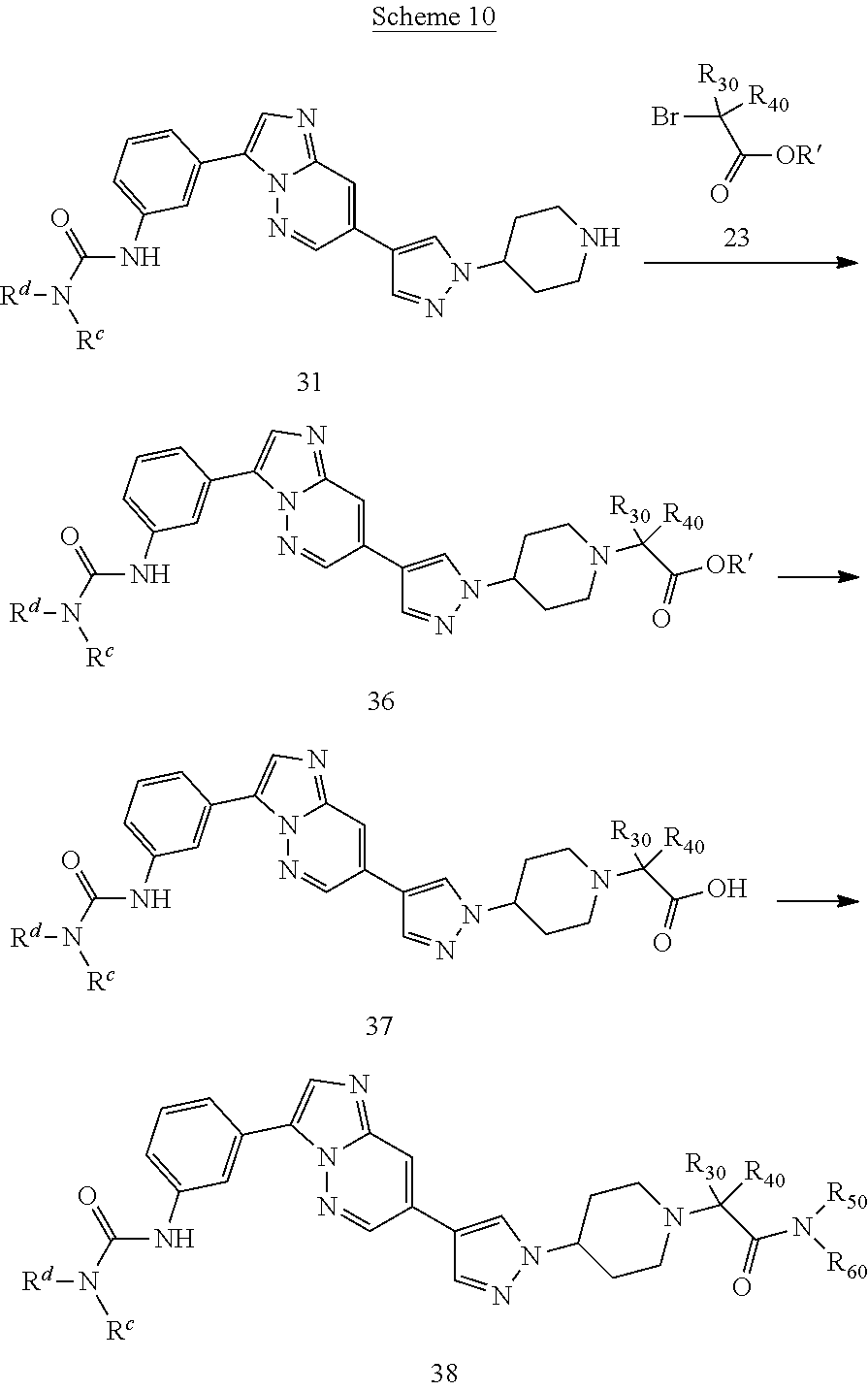
C00015

C00016
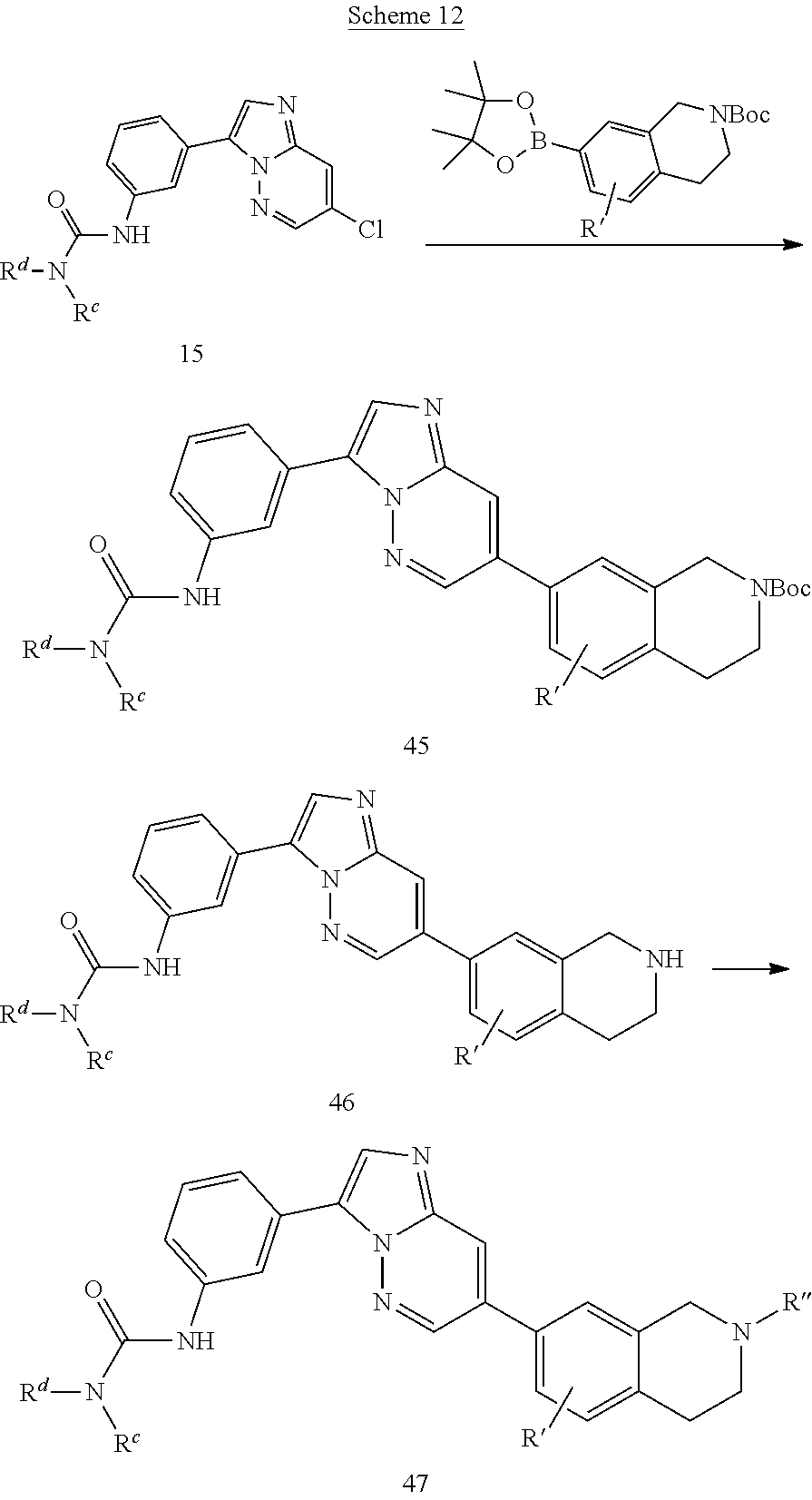
C00017

C00018
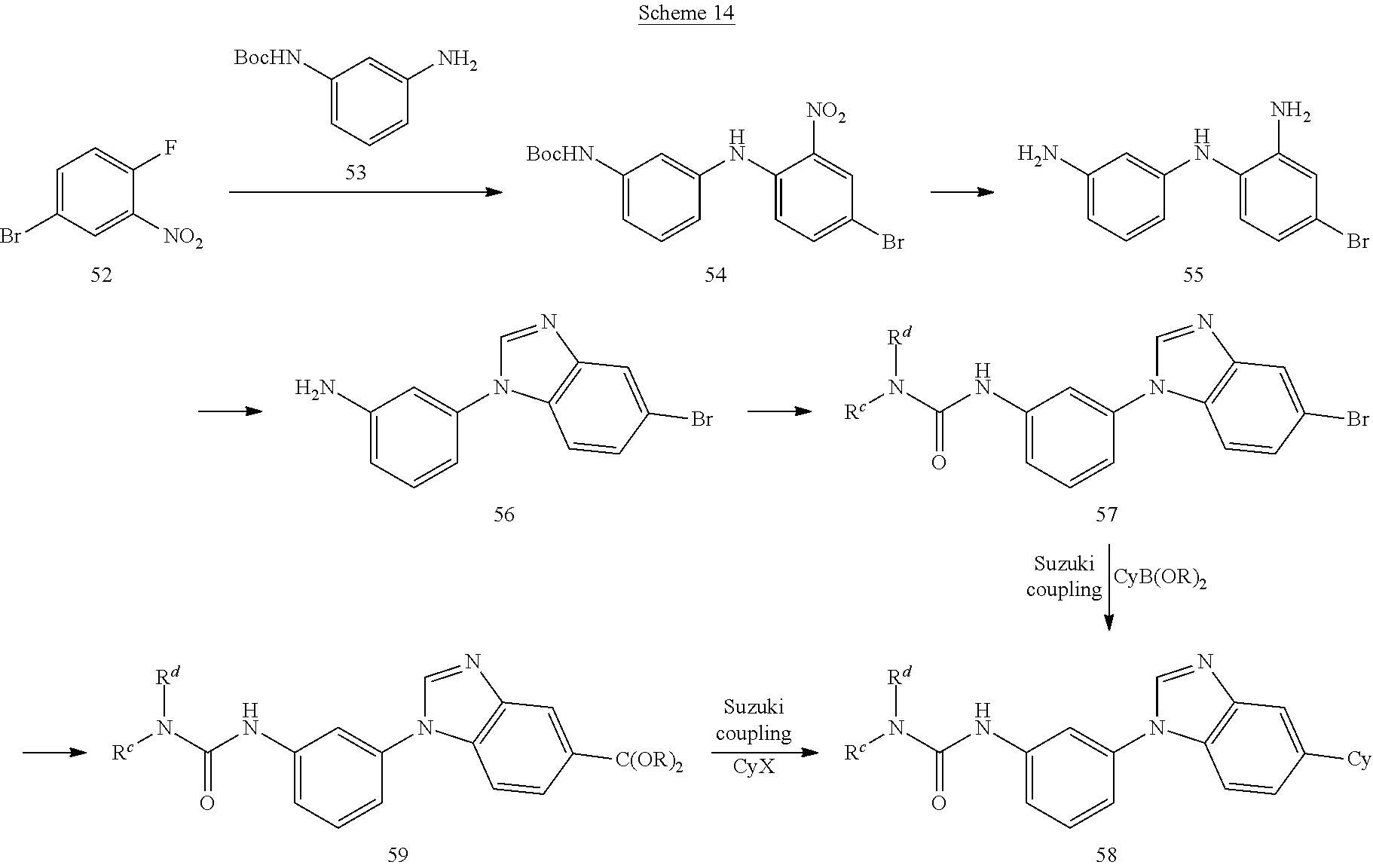
C00019

C00020
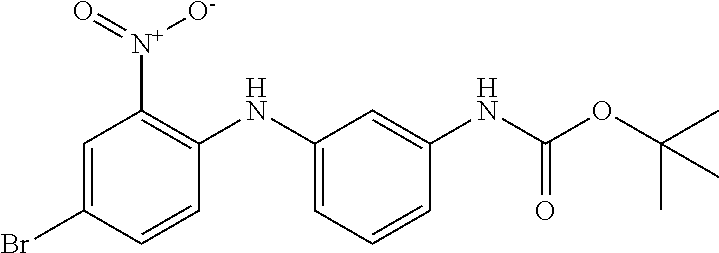
C00021

C00022

C00023
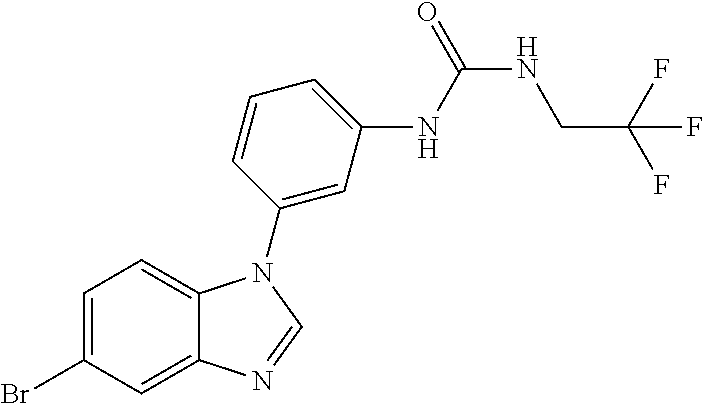
C00024

C00025

C00026

C00027

C00028

C00029

C00030

C00031
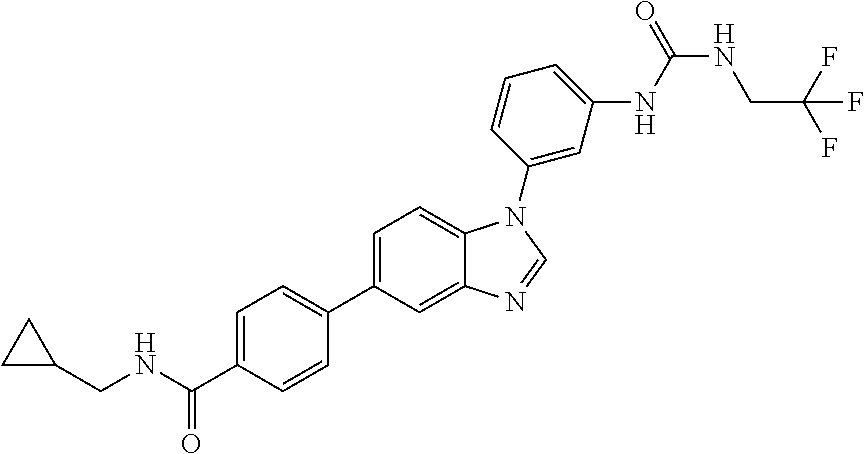
C00032

C00033

C00034
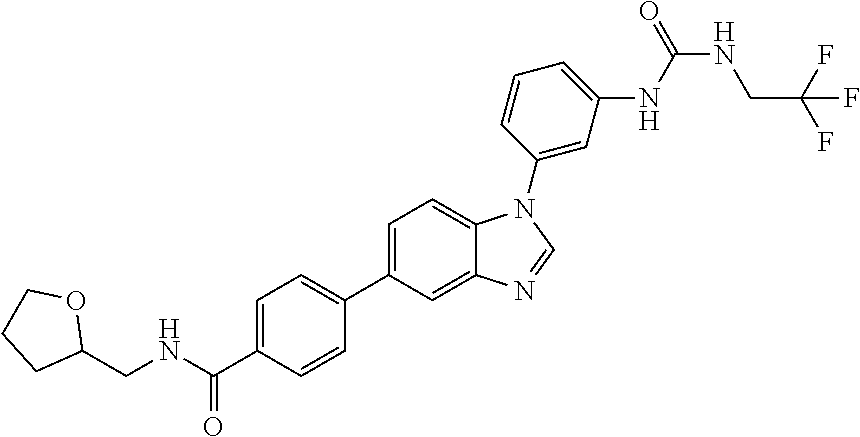
C00035

C00036

C00037

C00038

C00039

C00040
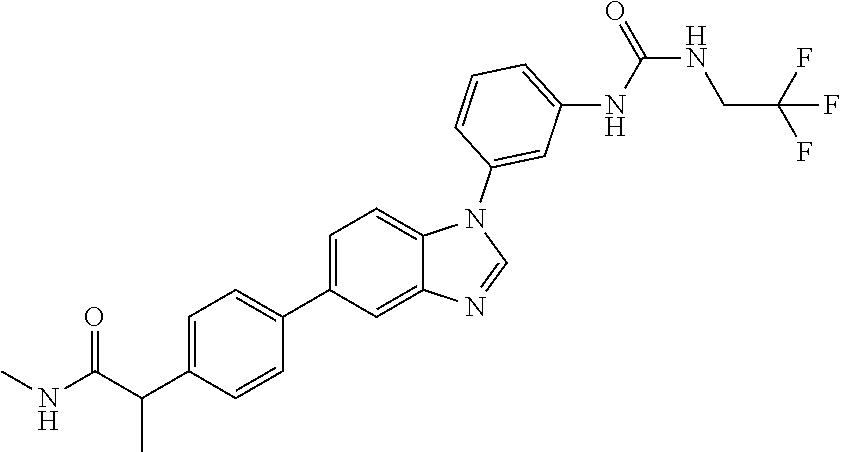
C00041

C00042

C00043

C00044

C00045
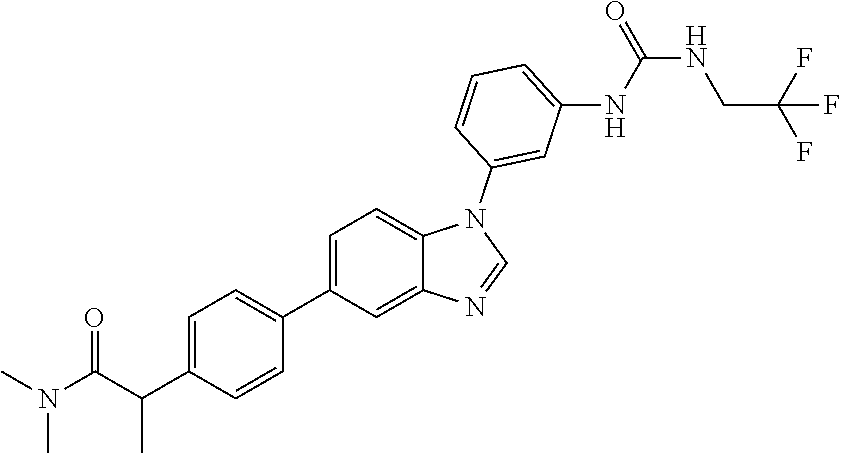
C00046
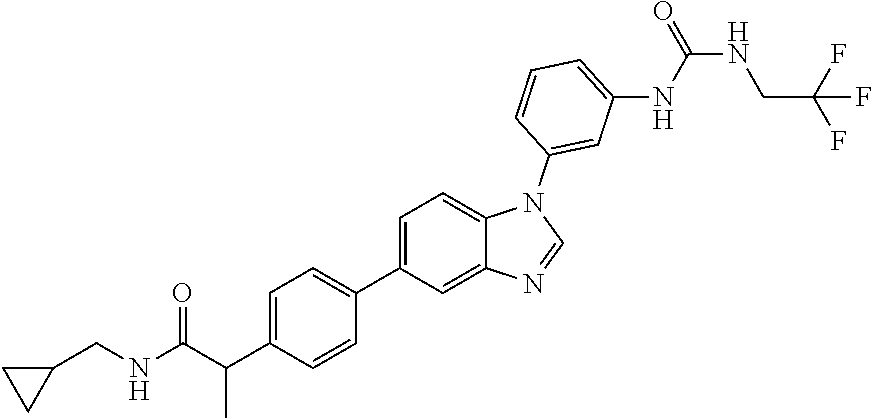
C00047

C00048

C00049
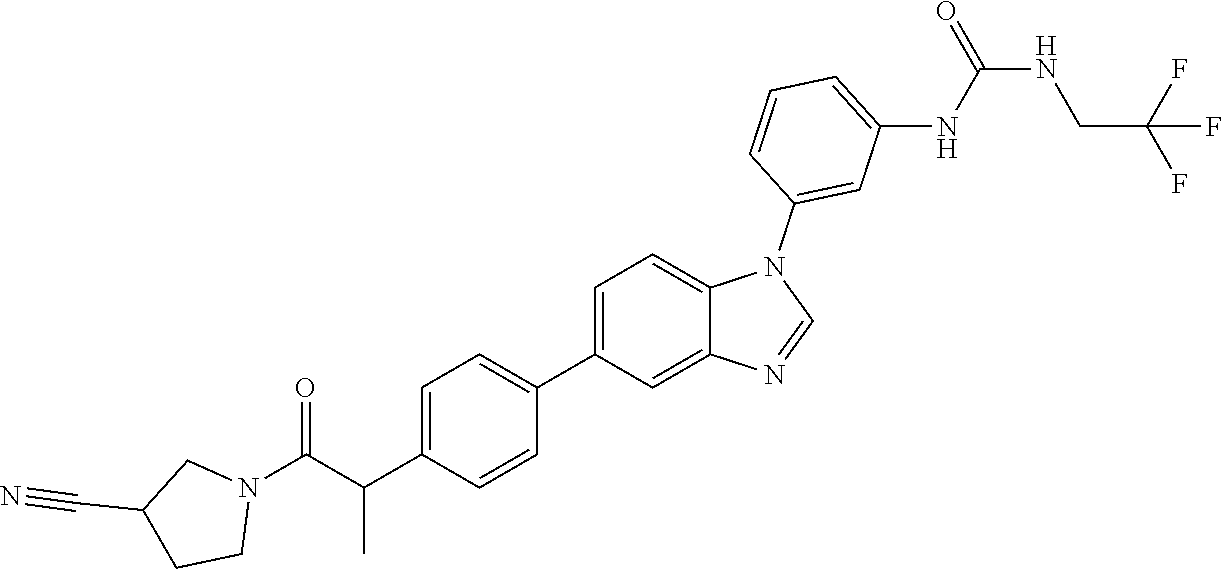
C00050

C00051

C00052

C00053

C00054

C00055

C00056
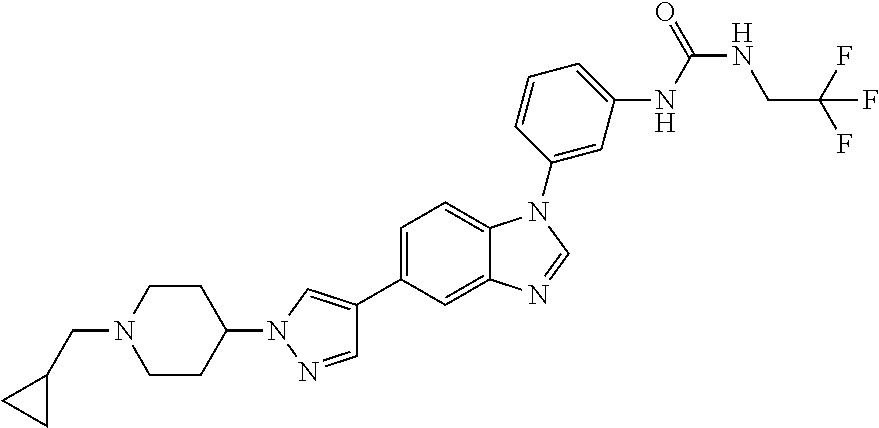
C00057
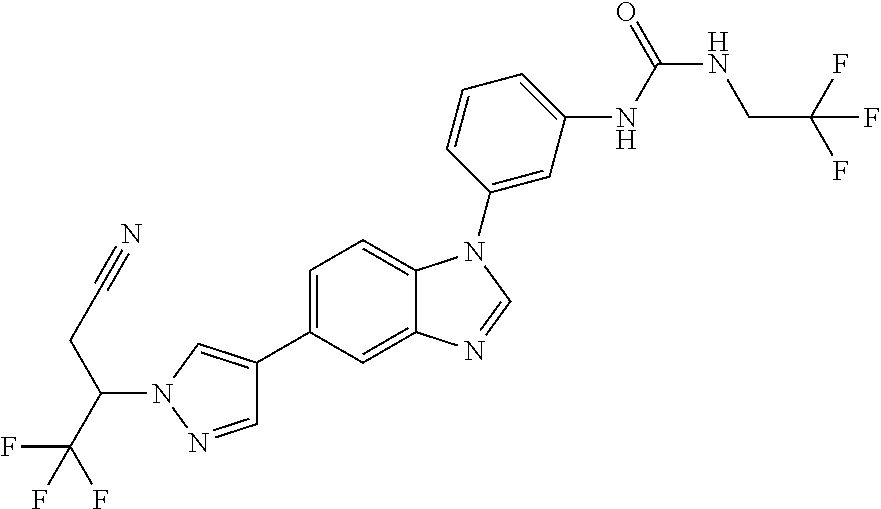
C00058

C00059

C00060

C00061

C00062

C00063

C00064

C00065
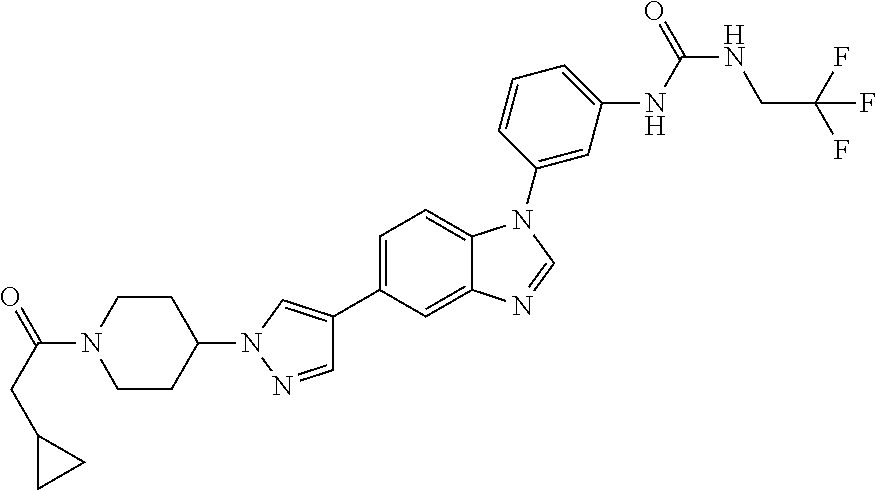
C00066
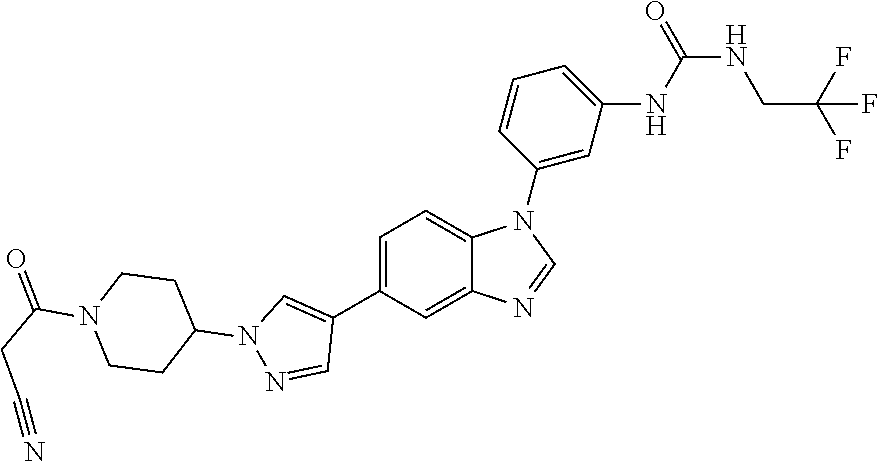
C00067

C00068

C00069
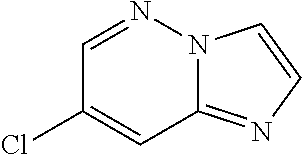
C00070

C00071
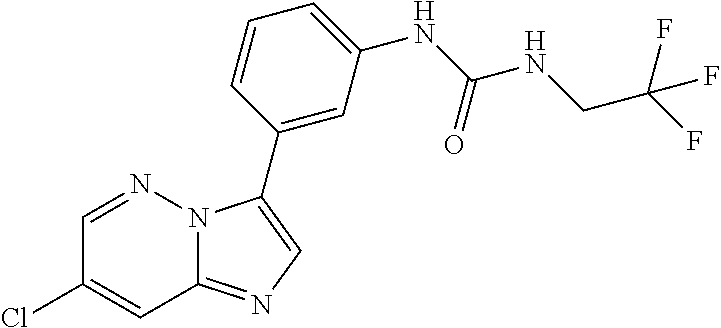
C00072

C00073

C00074

C00075

C00076

C00077

C00078

C00079

C00080
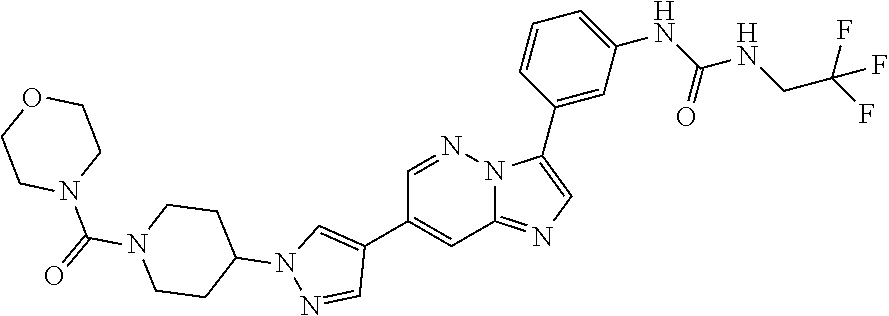
C00081

C00082
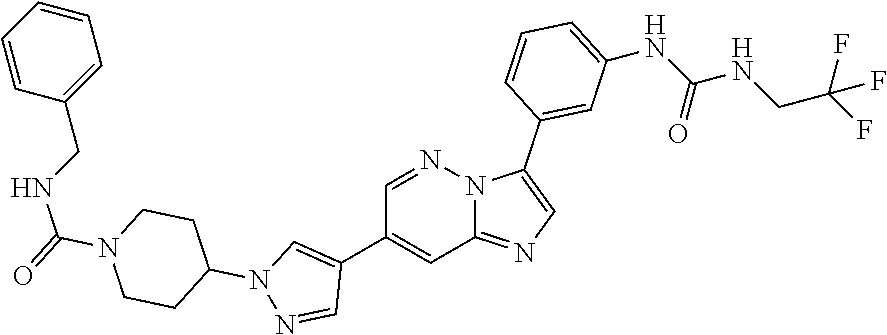
C00083
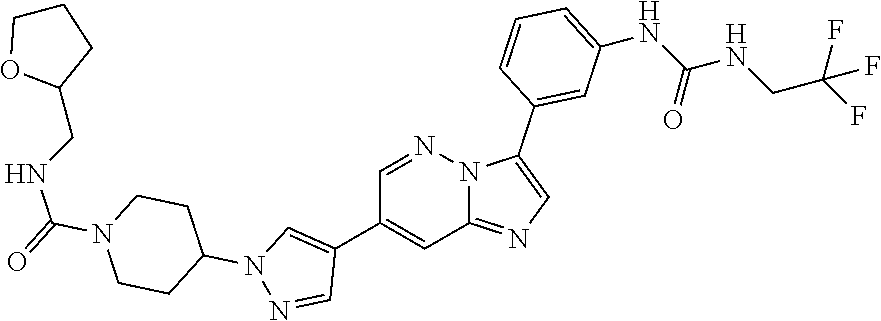
C00084

C00085

C00086

C00087

C00088
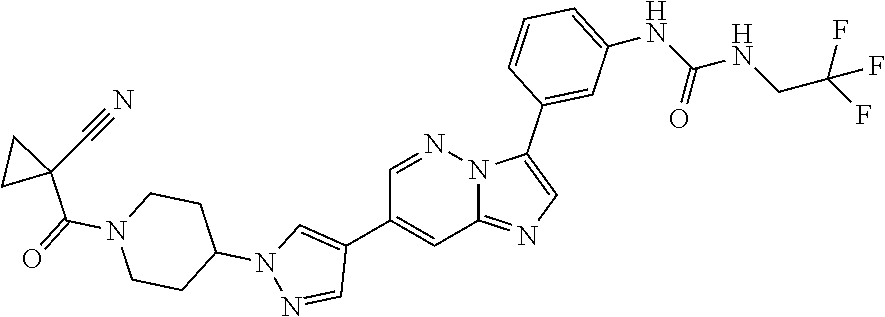
C00089

C00090

C00091
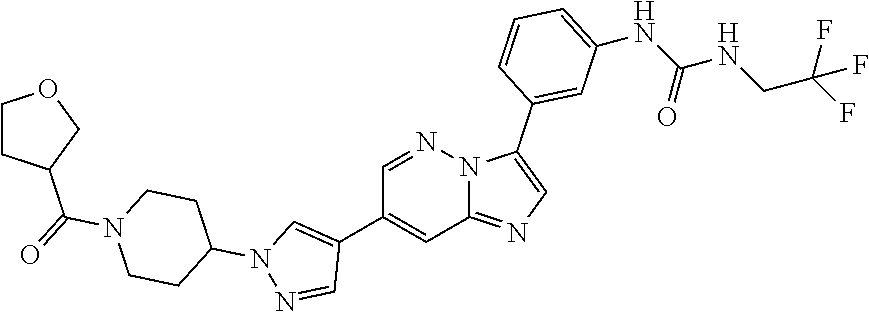
C00092
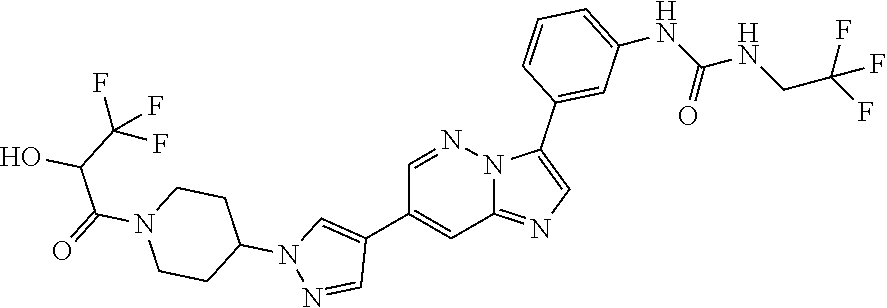
C00093

C00094

C00095
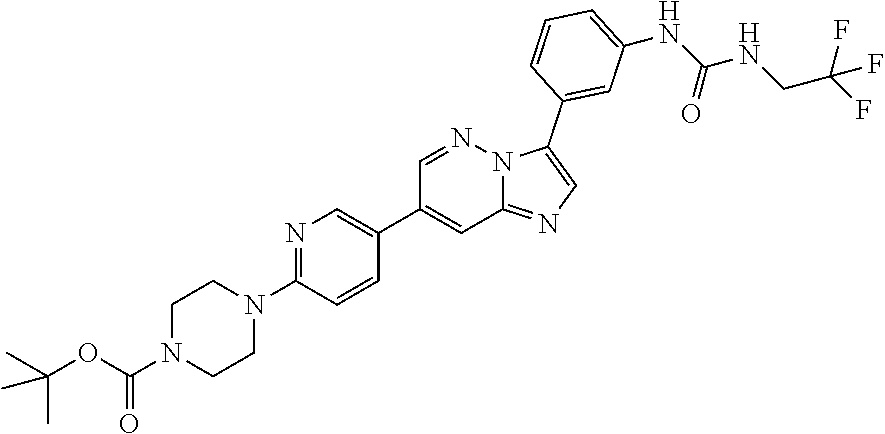
C00096
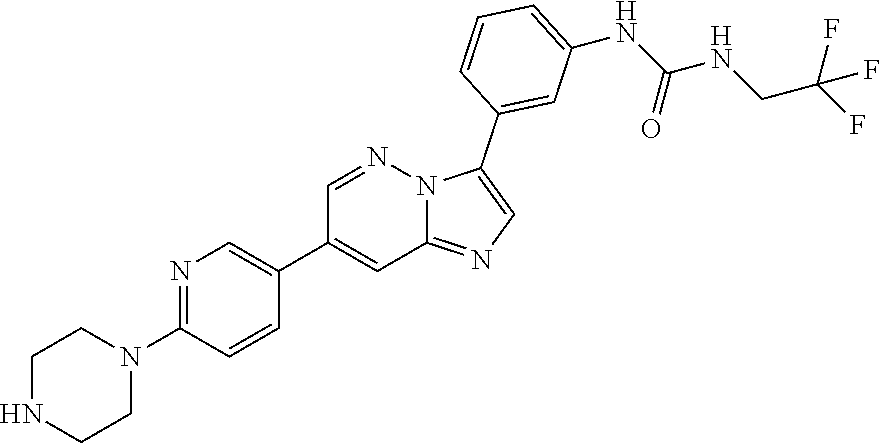
C00097

C00098

C00099

C00100

C00101

C00102
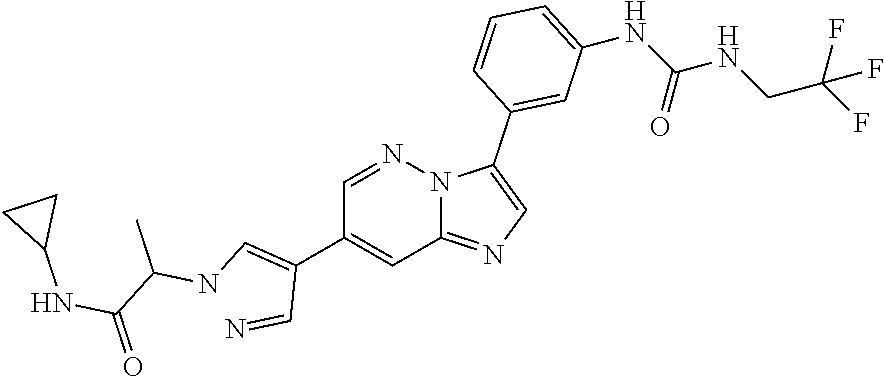
C00103

C00104

C00105

C00106

C00107
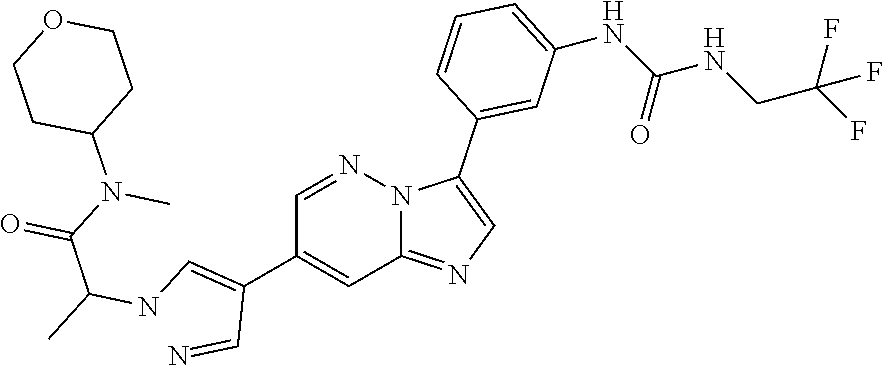
C00108

C00109
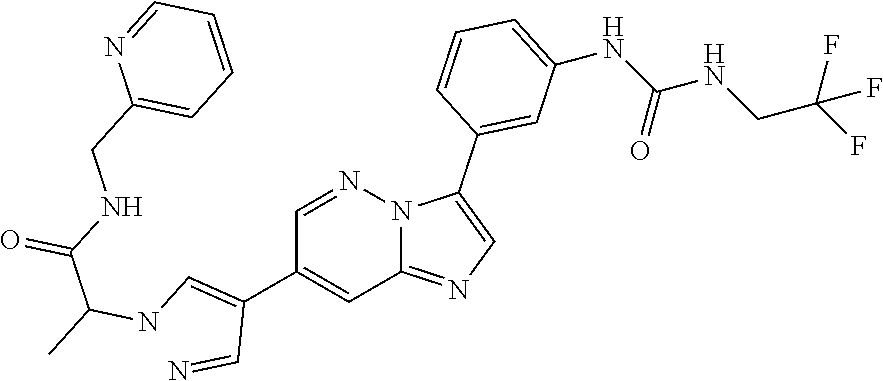
C00110

C00111

C00112

C00113

C00114

C00115

C00116
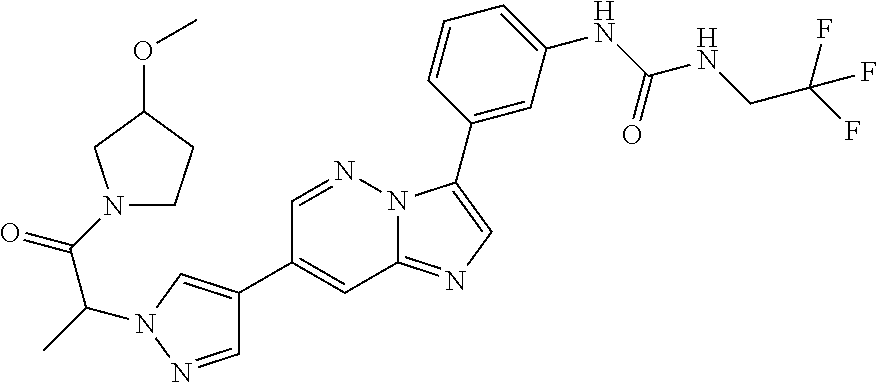
C00117

C00118

C00119

C00120

C00121

C00122

C00123

C00124

C00125
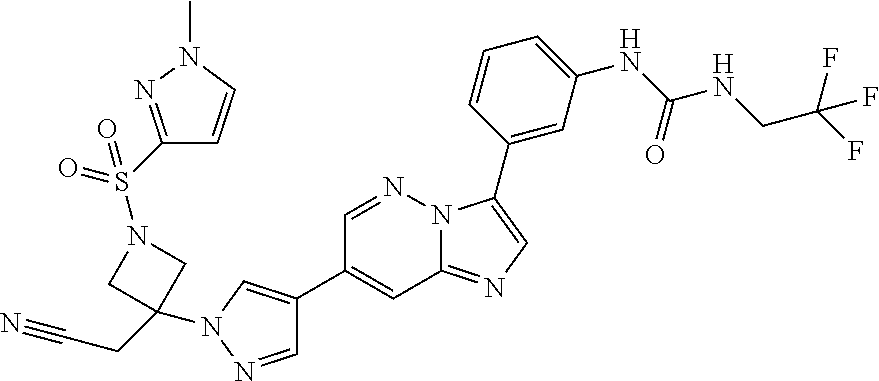
C00126

C00127

C00128

C00129
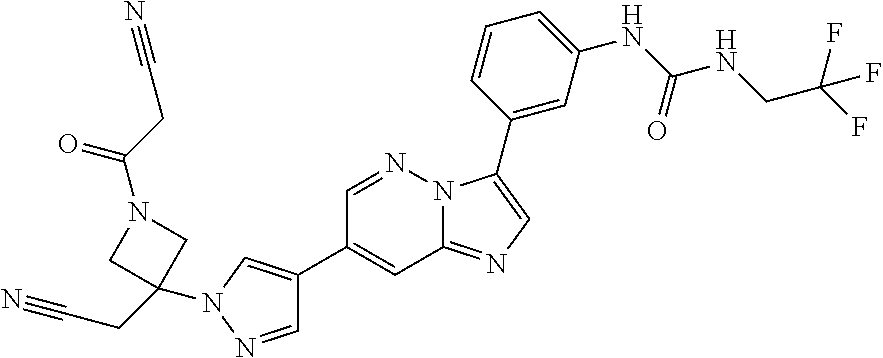
C00130

C00131

C00132
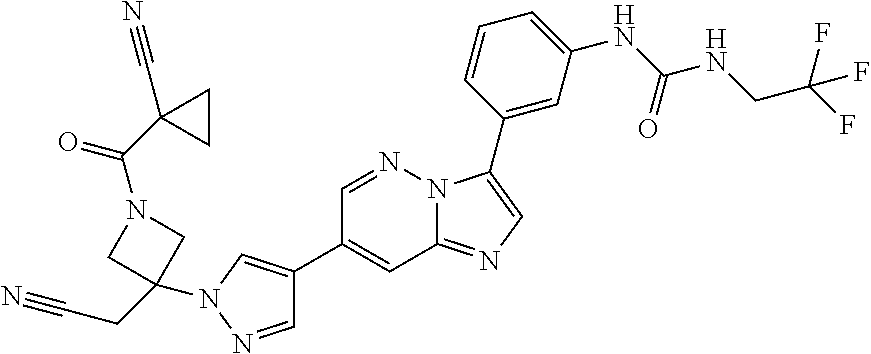
C00133

C00134

C00135
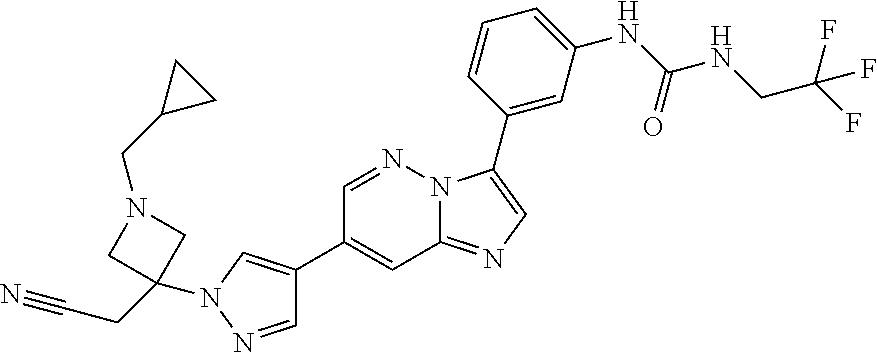
C00136

C00137

C00138

C00139

C00140

C00141

C00142

C00143
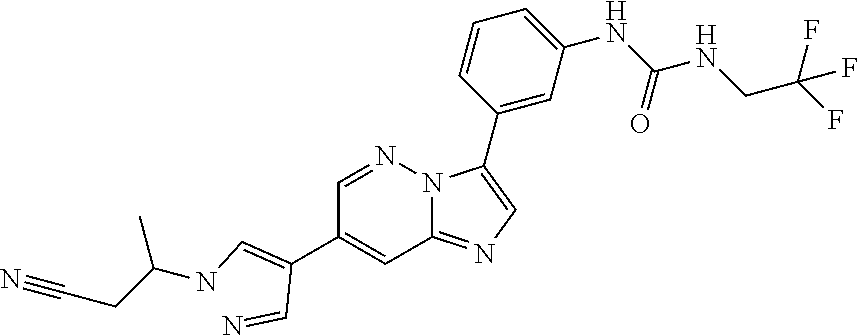
C00144
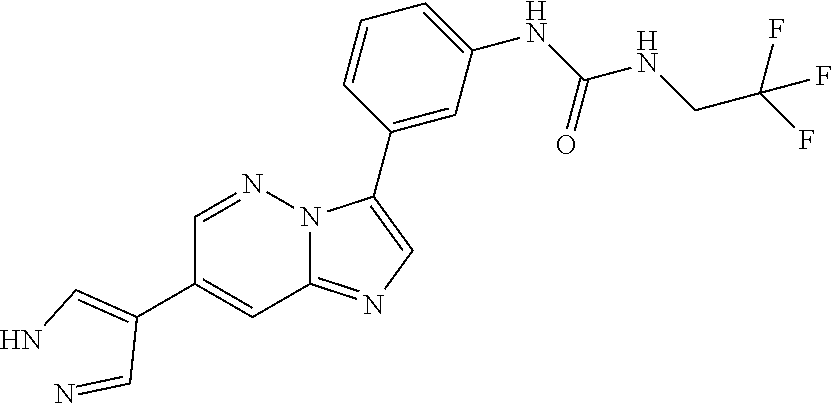
C00145

C00146

C00147

C00148
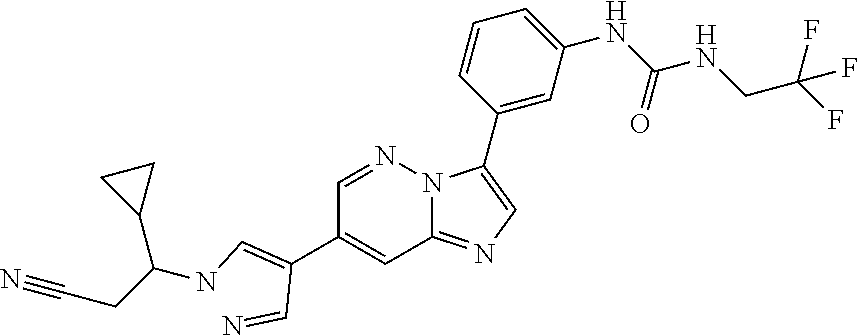
C00149

C00150
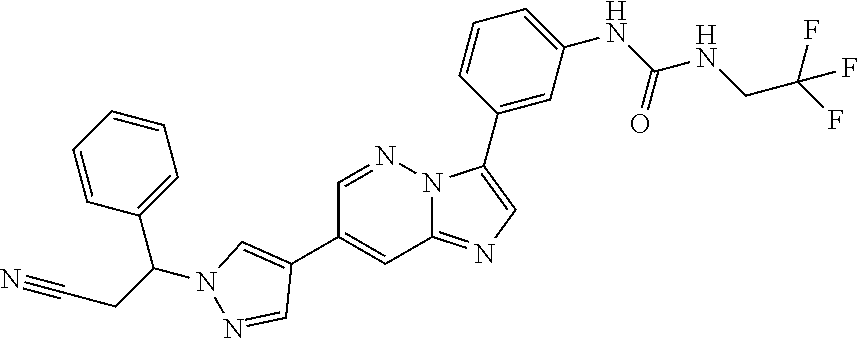
C00151

C00152

C00153
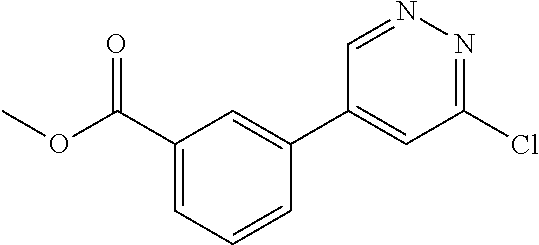
C00154

C00155

C00156

C00157
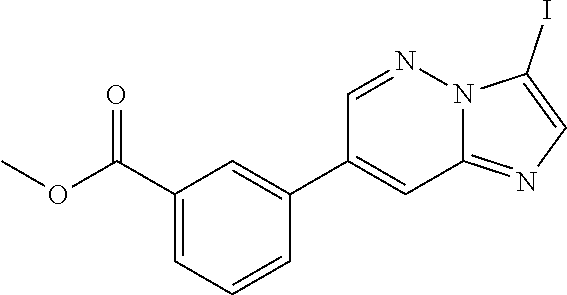
C00158

C00159

C00160

C00161

C00162

C00163
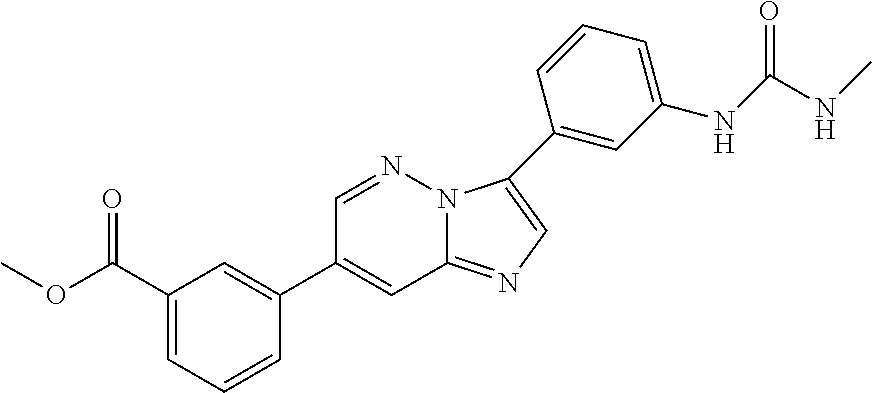
C00164

C00165
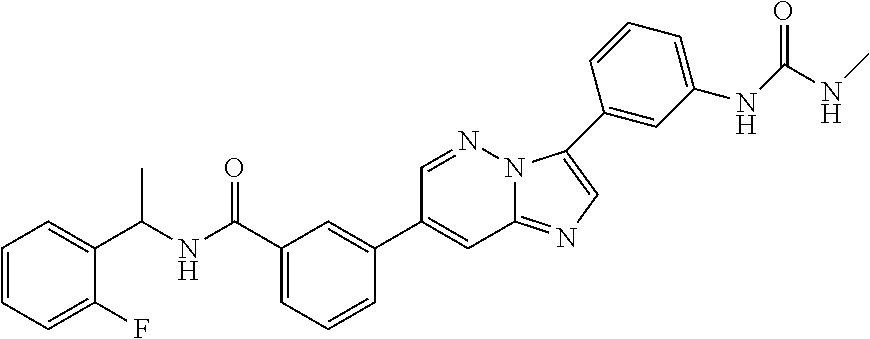
C00166

C00167

C00168

C00169

C00170

C00171
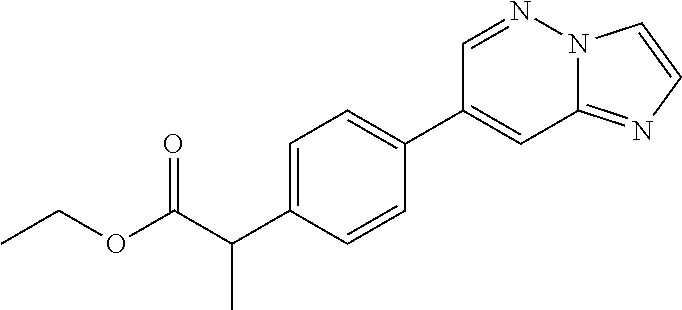
C00172

C00173
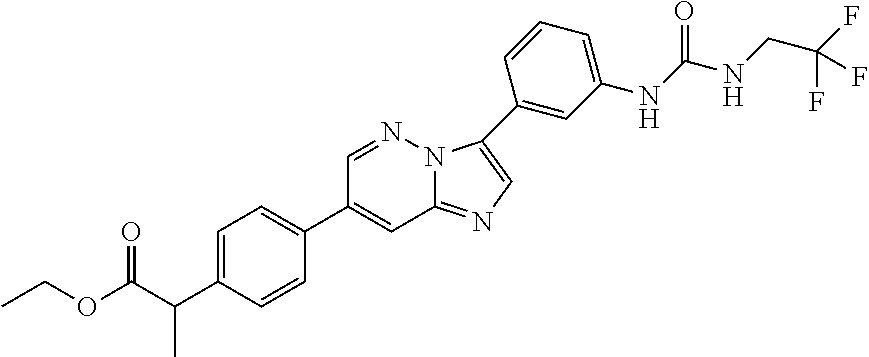
C00174

C00175
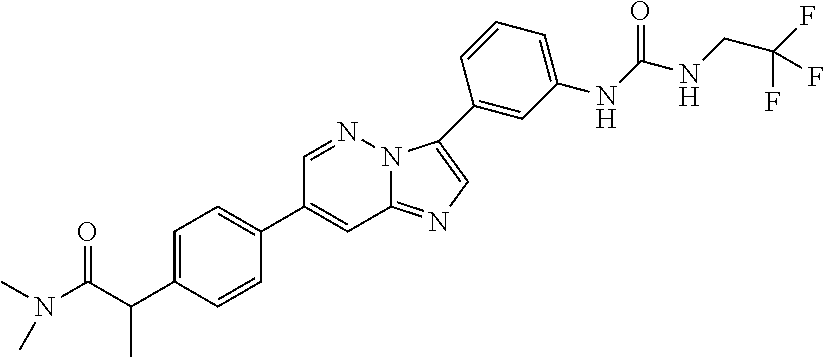
C00176
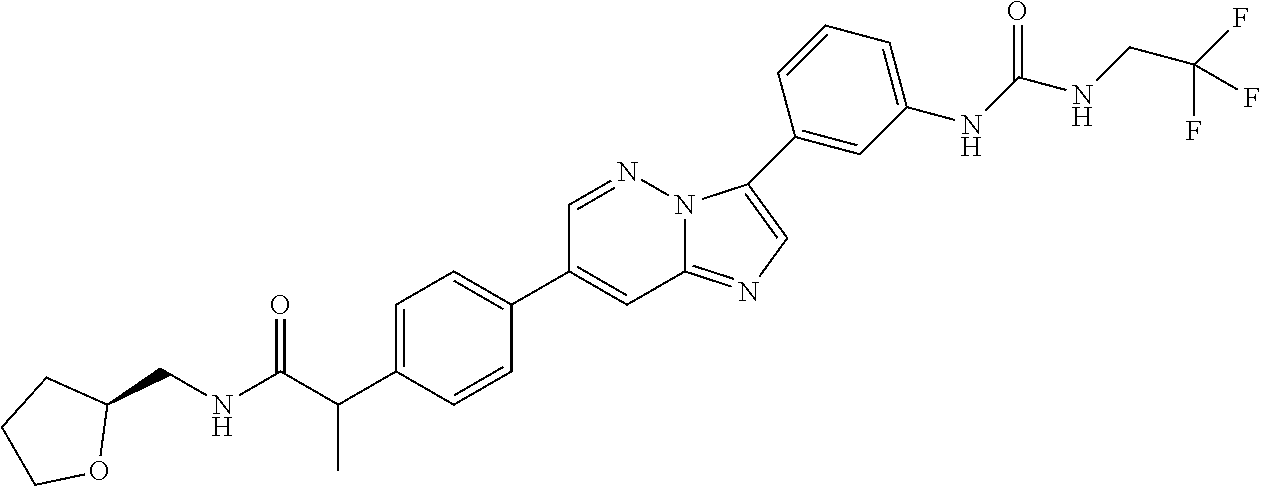
C00177
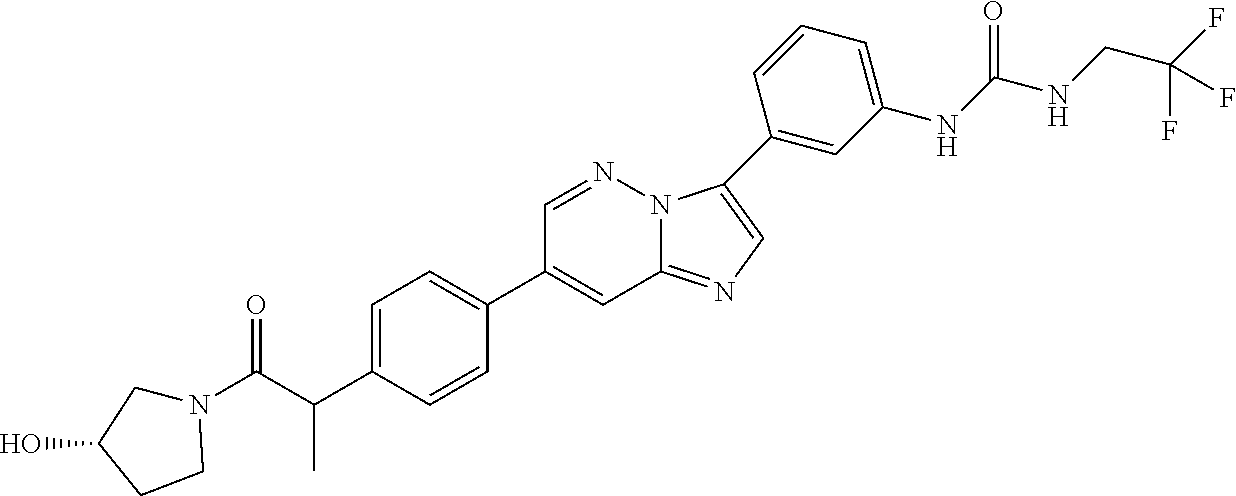
C00178
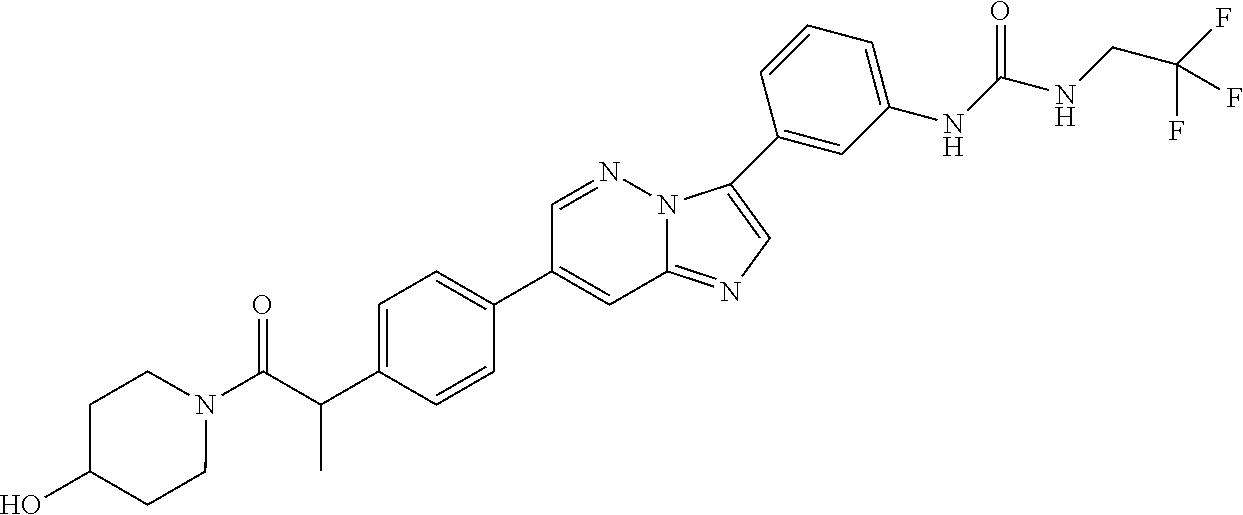
C00179
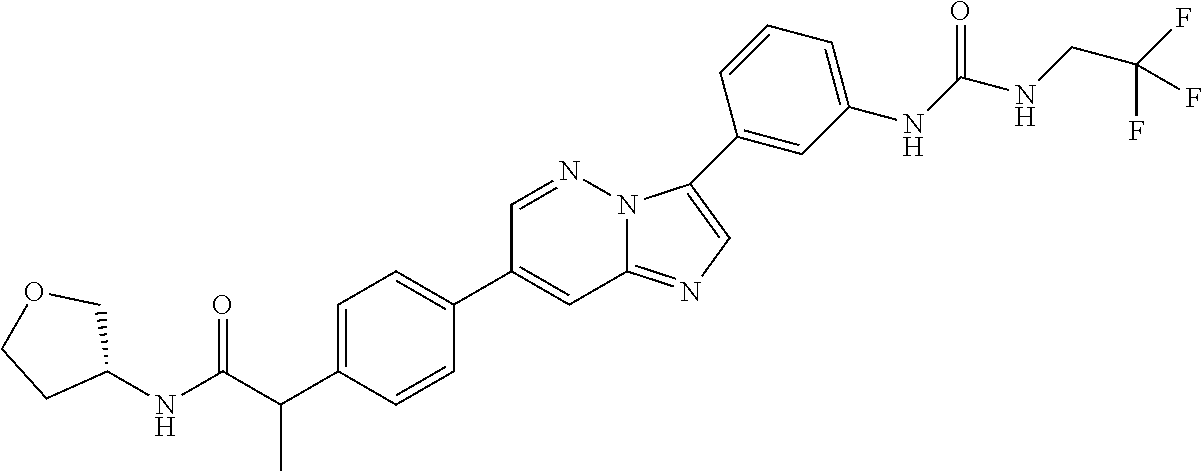
C00180
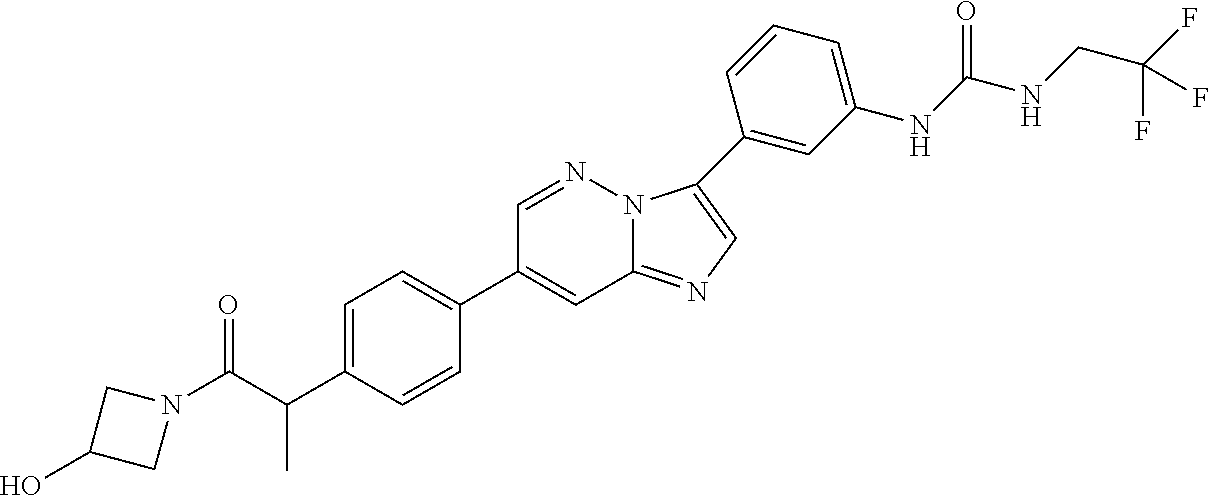
C00181

C00182
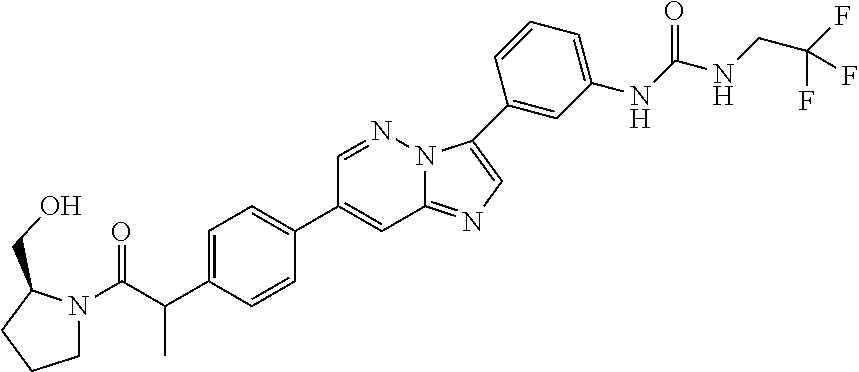
C00183

C00184

C00185

C00186
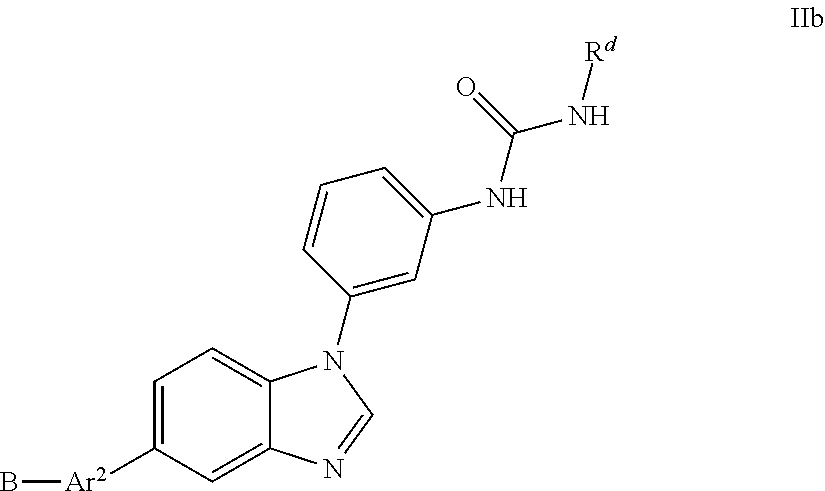
XML
uspto.report is an independent third-party trademark research tool that is not affiliated, endorsed, or sponsored by the United States Patent and Trademark Office (USPTO) or any other governmental organization. The information provided by uspto.report is based on publicly available data at the time of writing and is intended for informational purposes only.
While we strive to provide accurate and up-to-date information, we do not guarantee the accuracy, completeness, reliability, or suitability of the information displayed on this site. The use of this site is at your own risk. Any reliance you place on such information is therefore strictly at your own risk.
All official trademark data, including owner information, should be verified by visiting the official USPTO website at www.uspto.gov. This site is not intended to replace professional legal advice and should not be used as a substitute for consulting with a legal professional who is knowledgeable about trademark law.